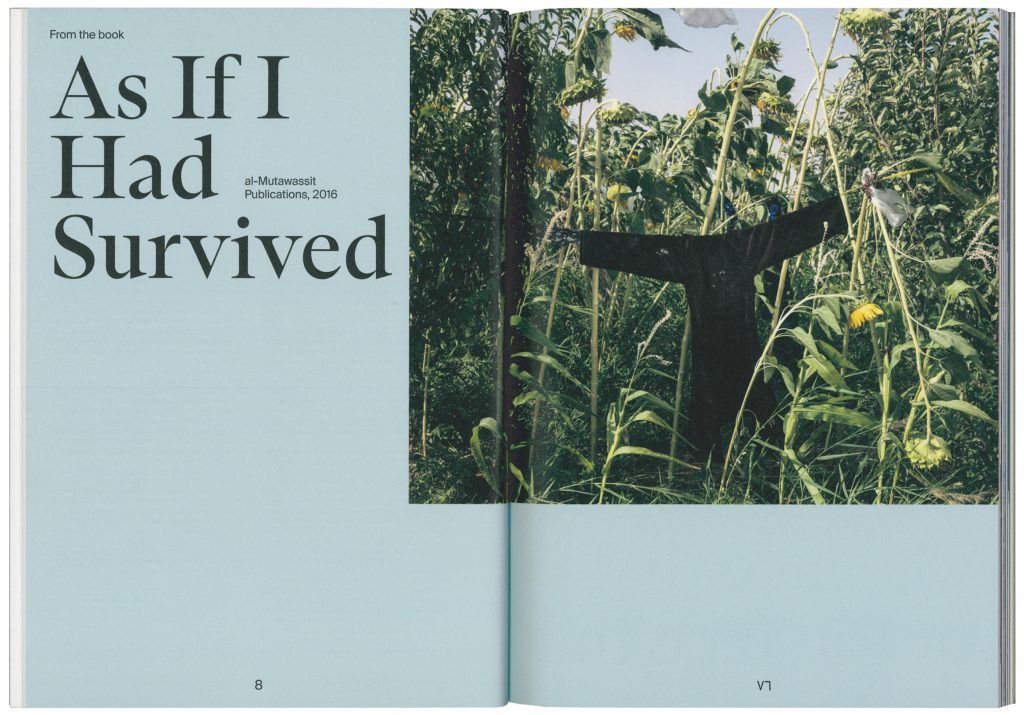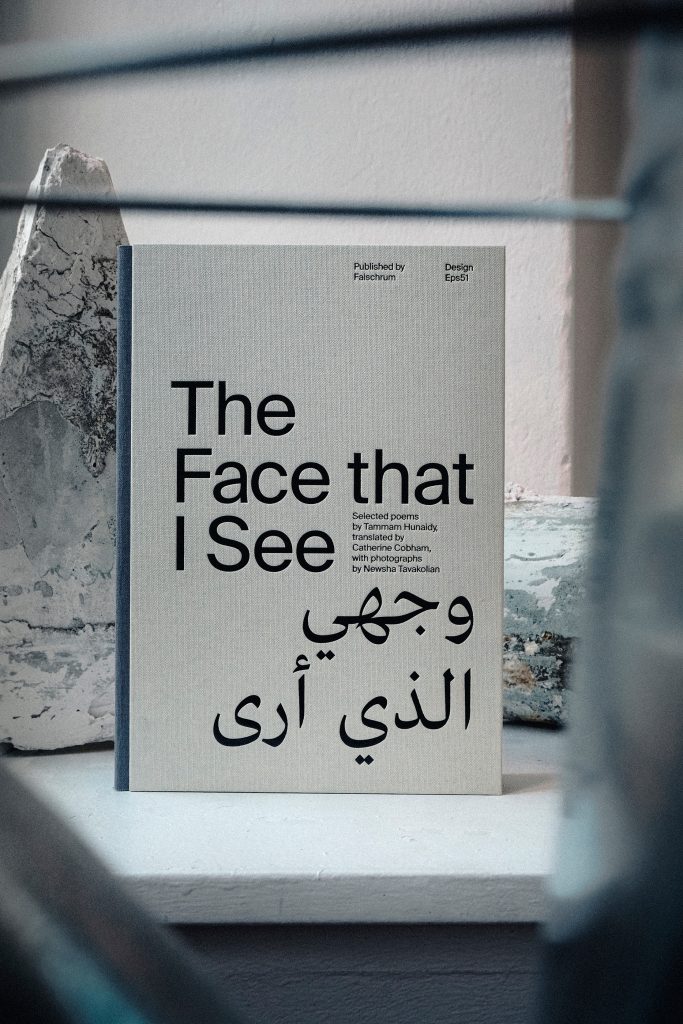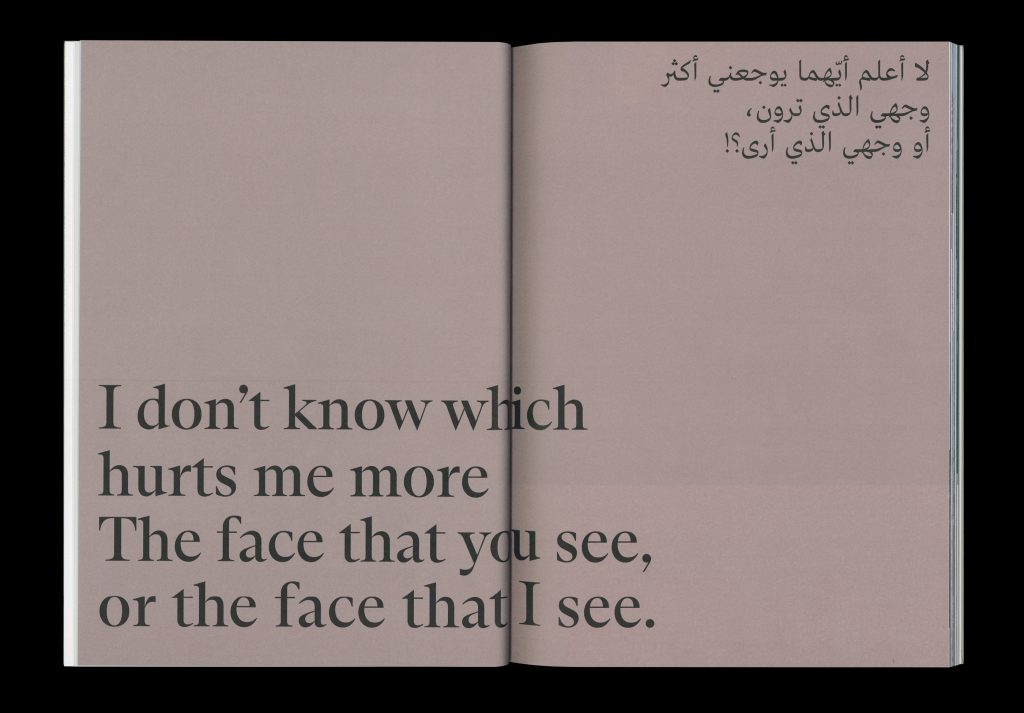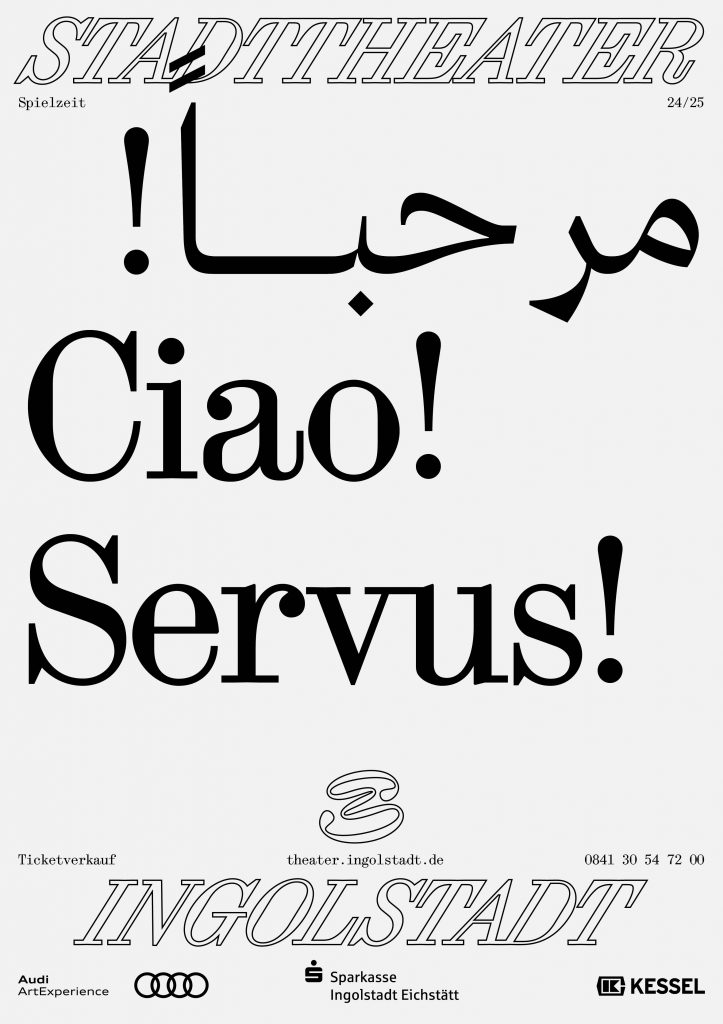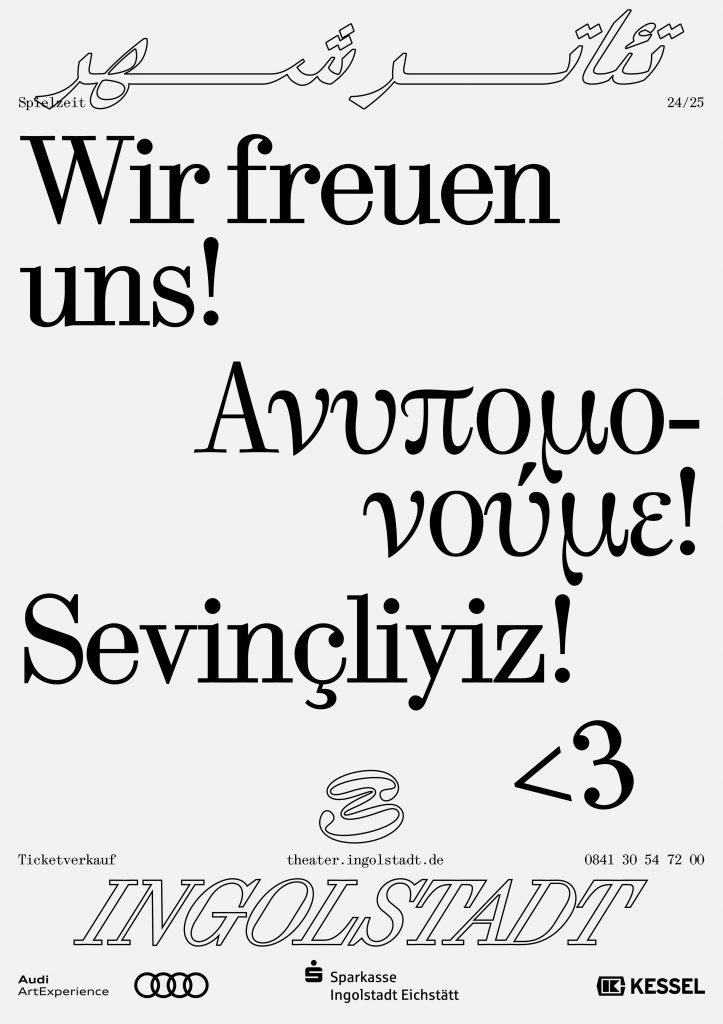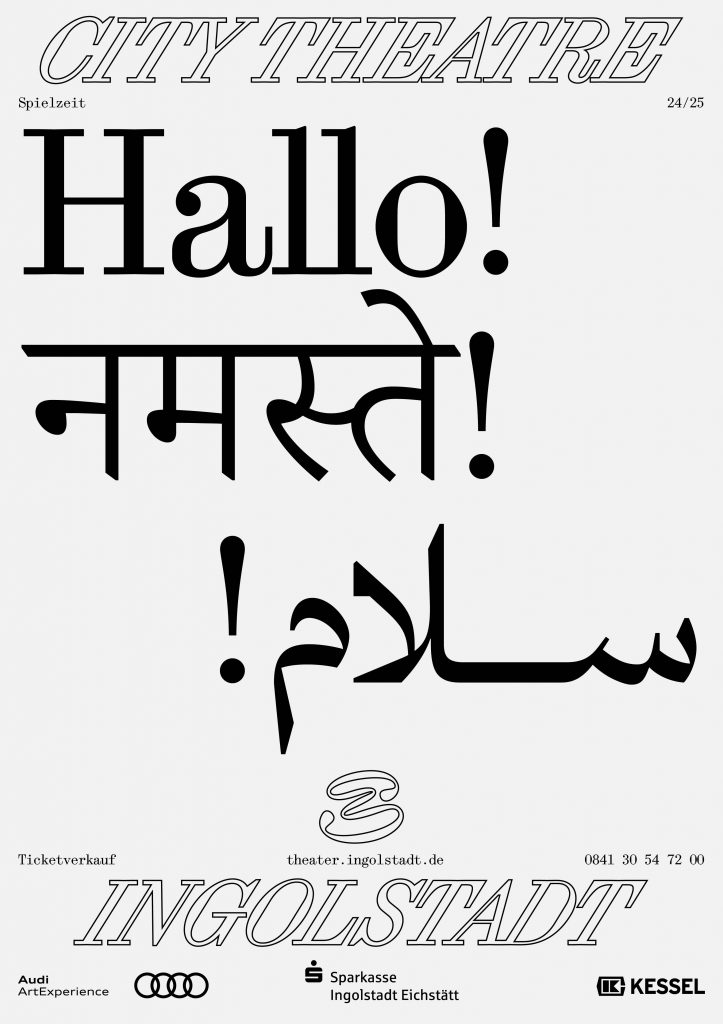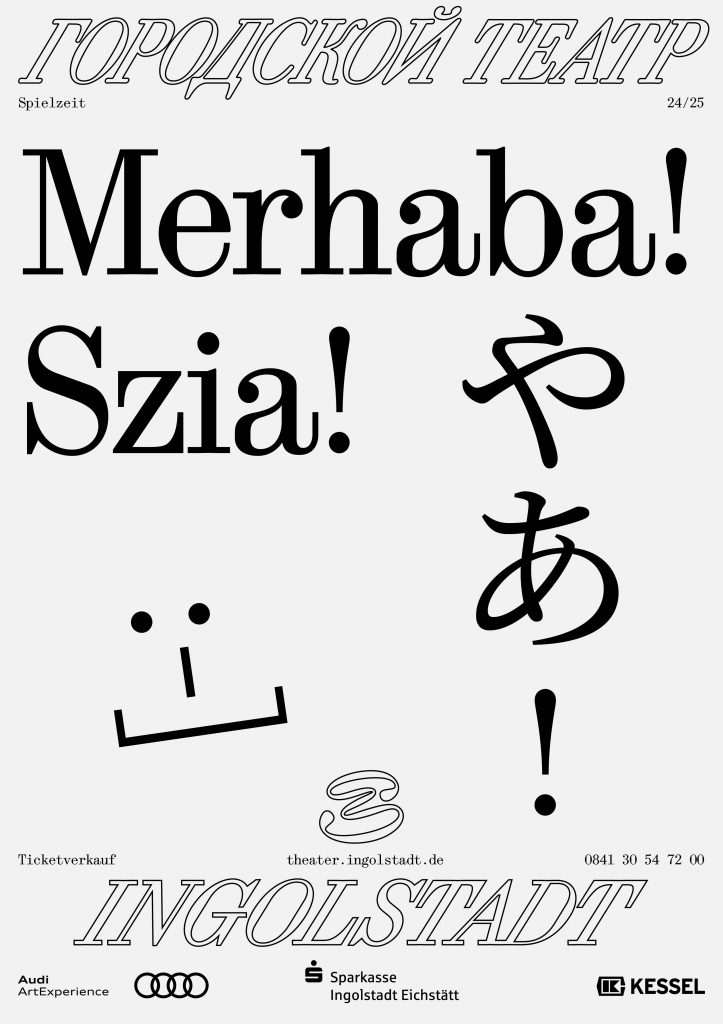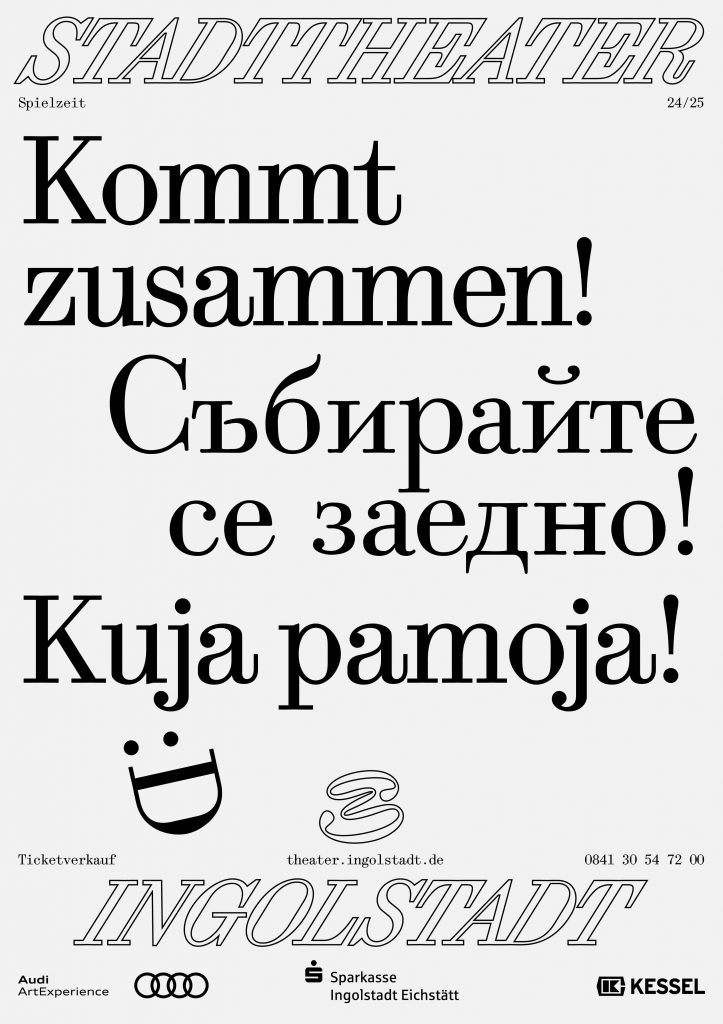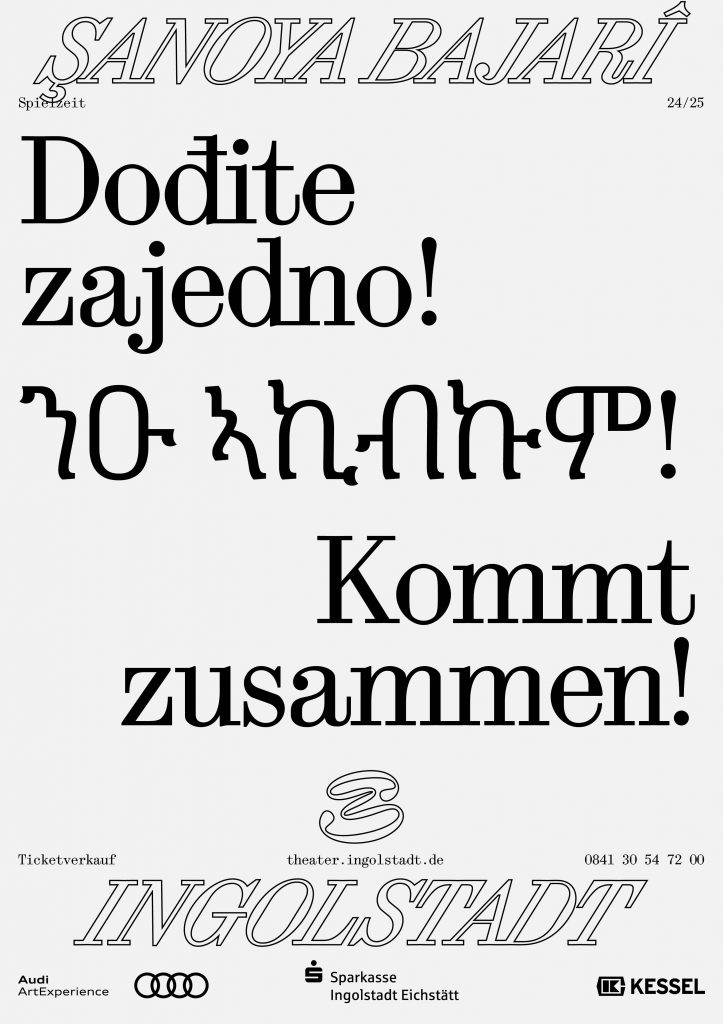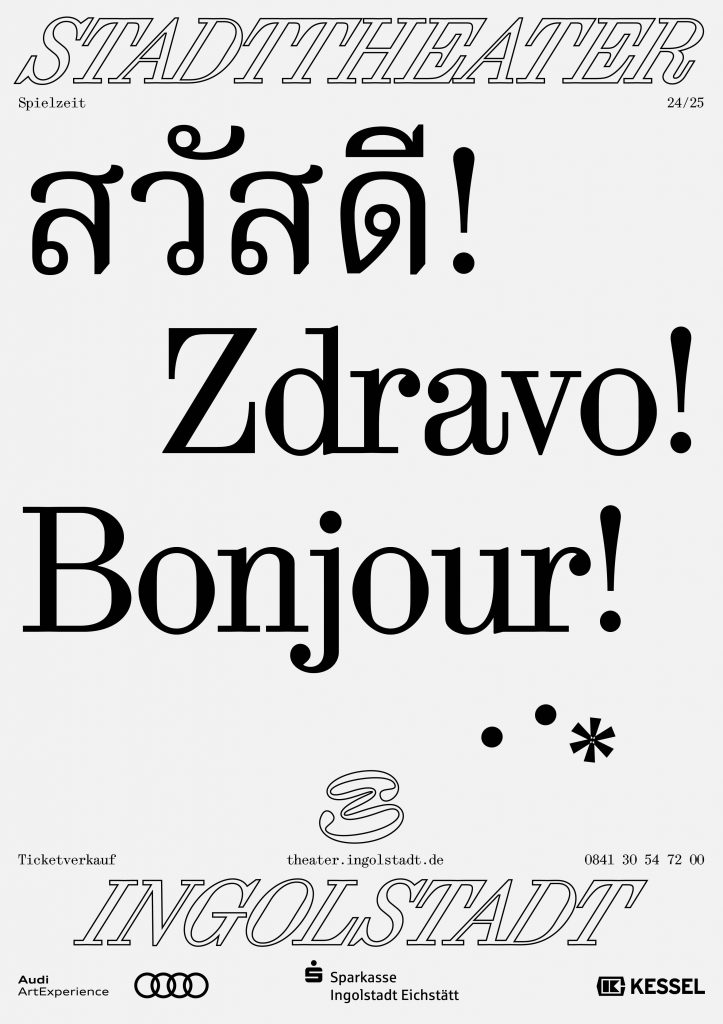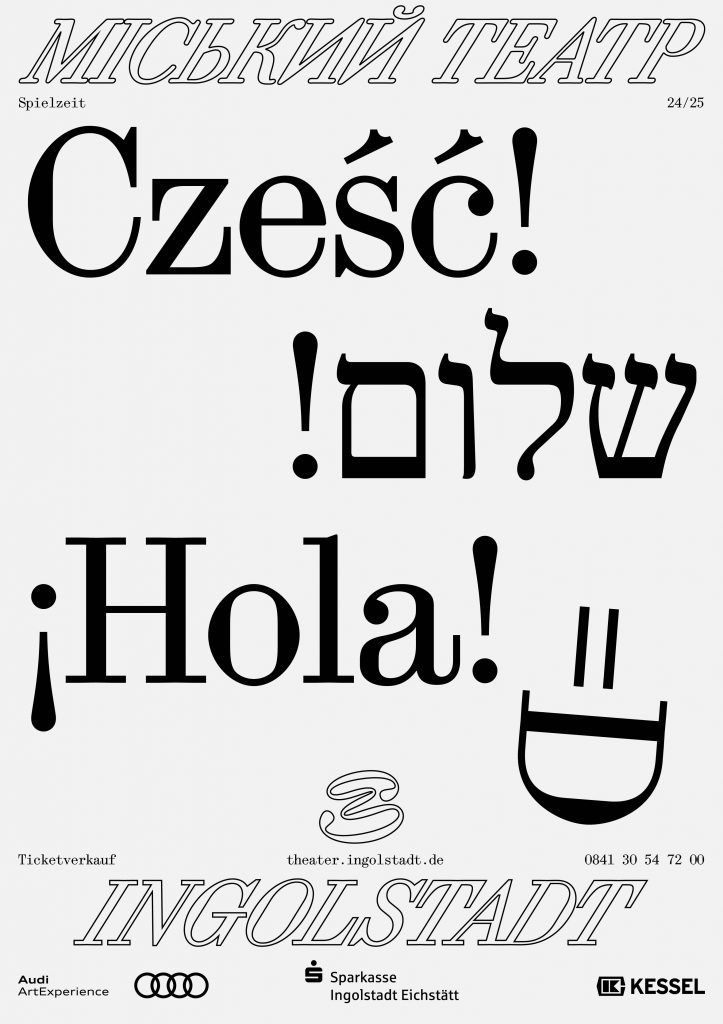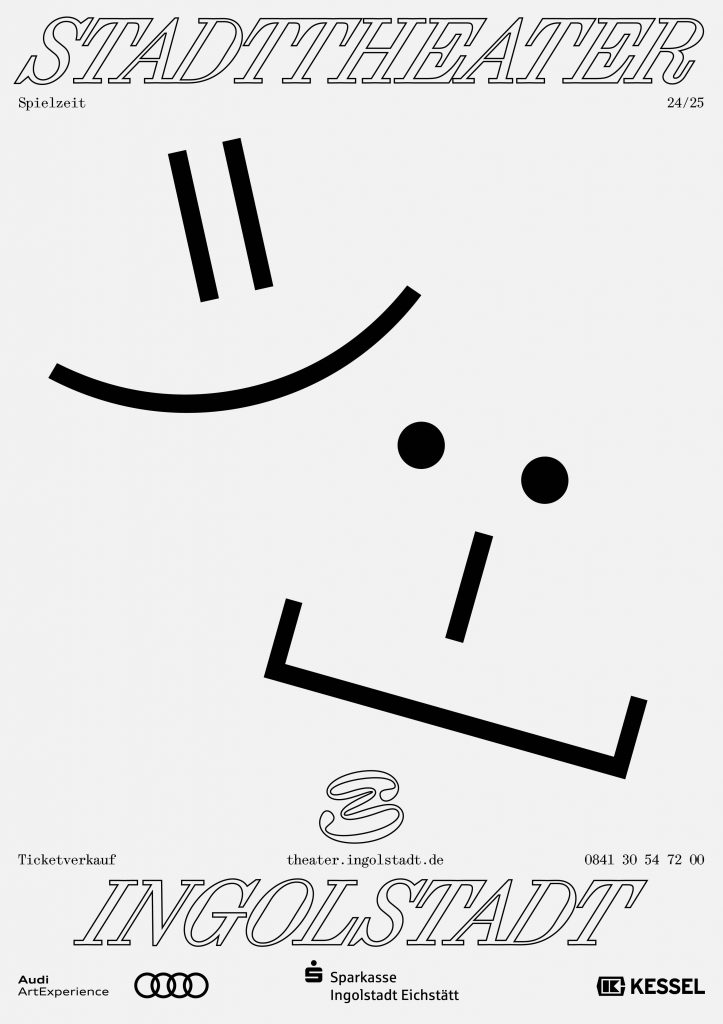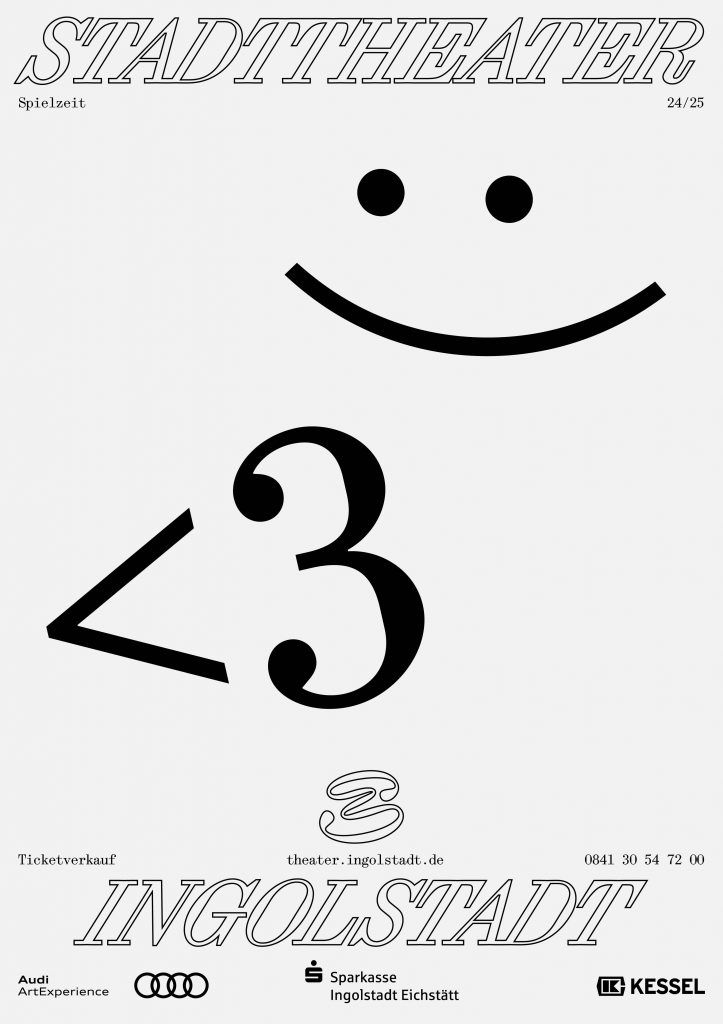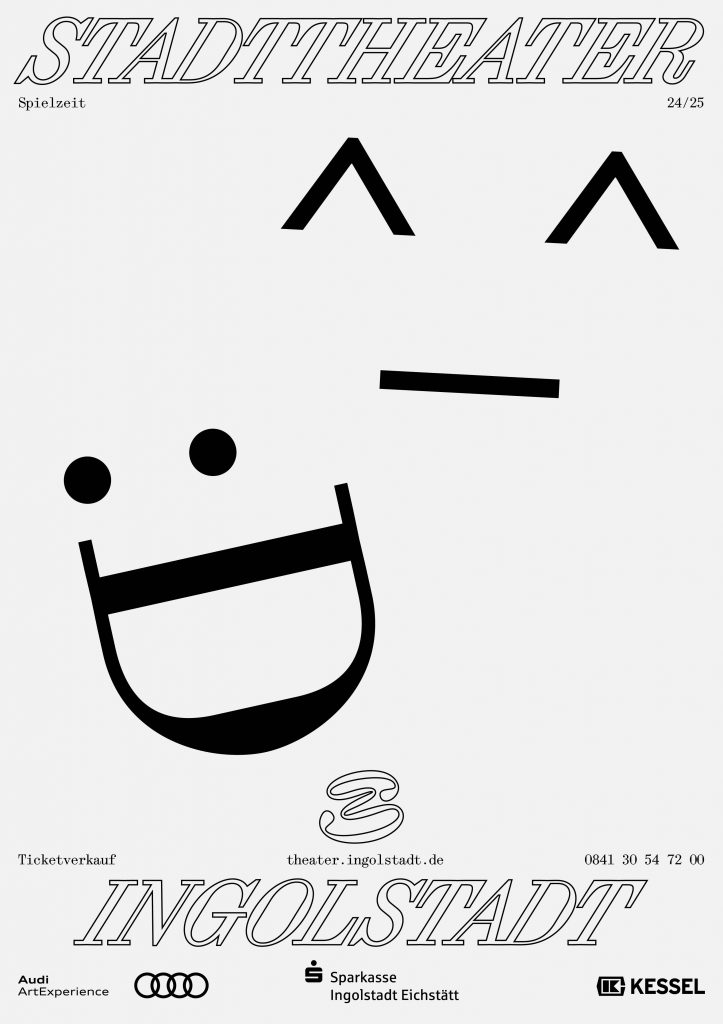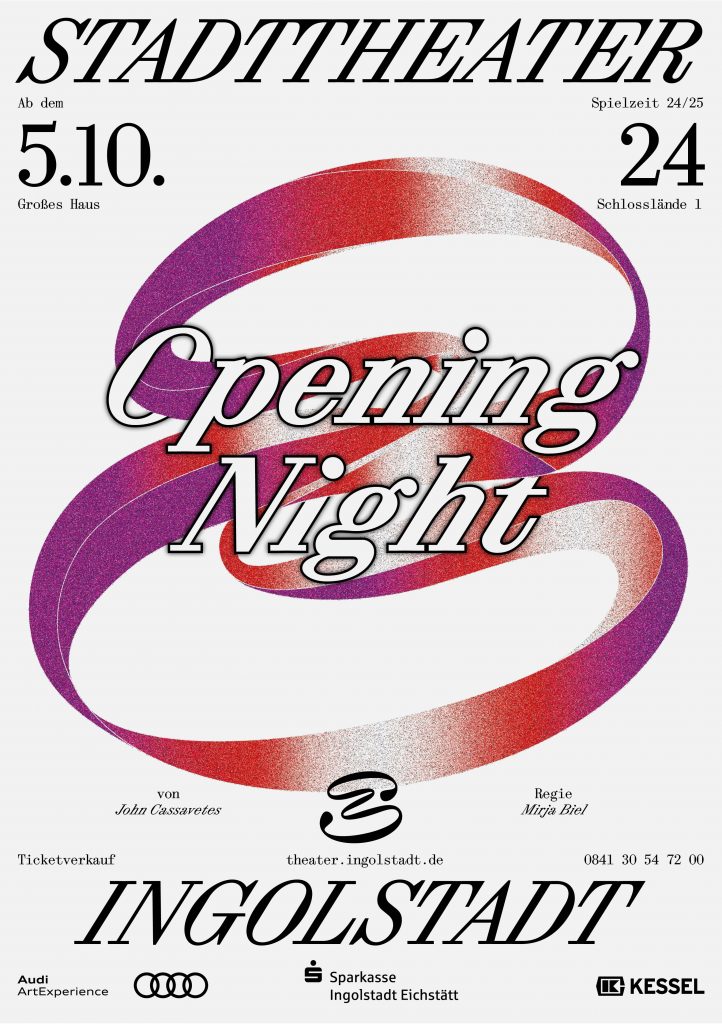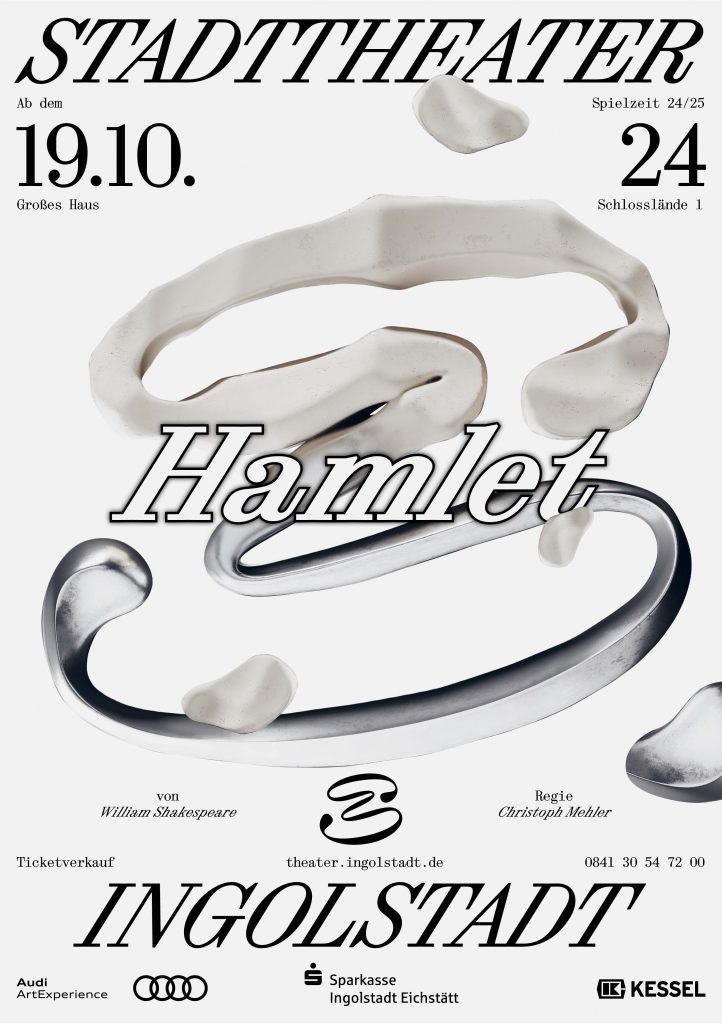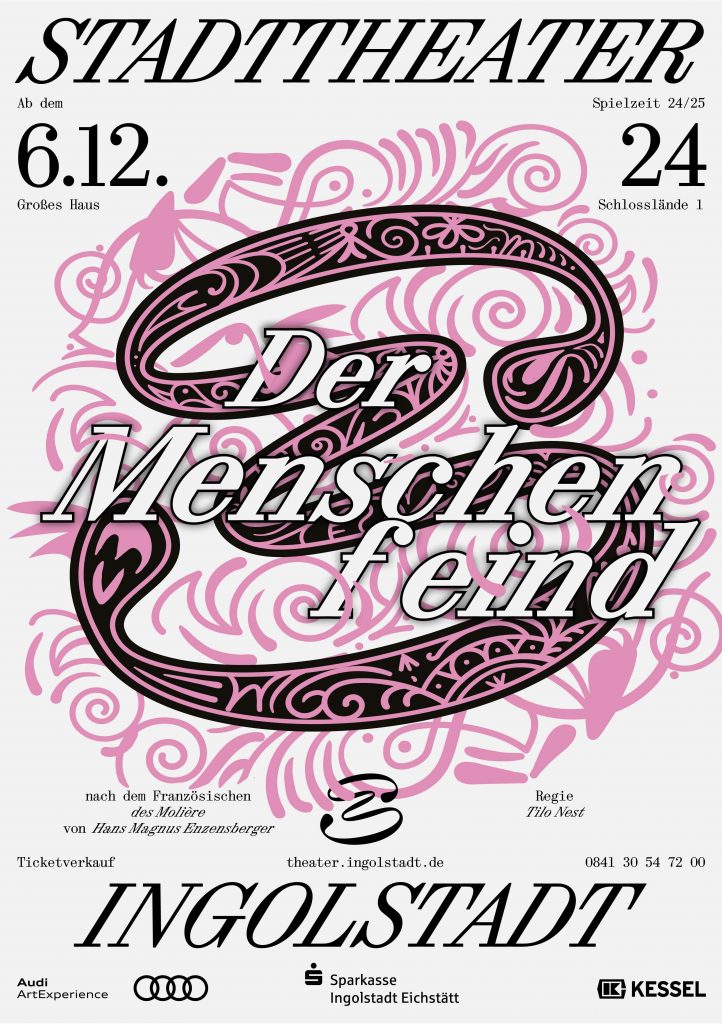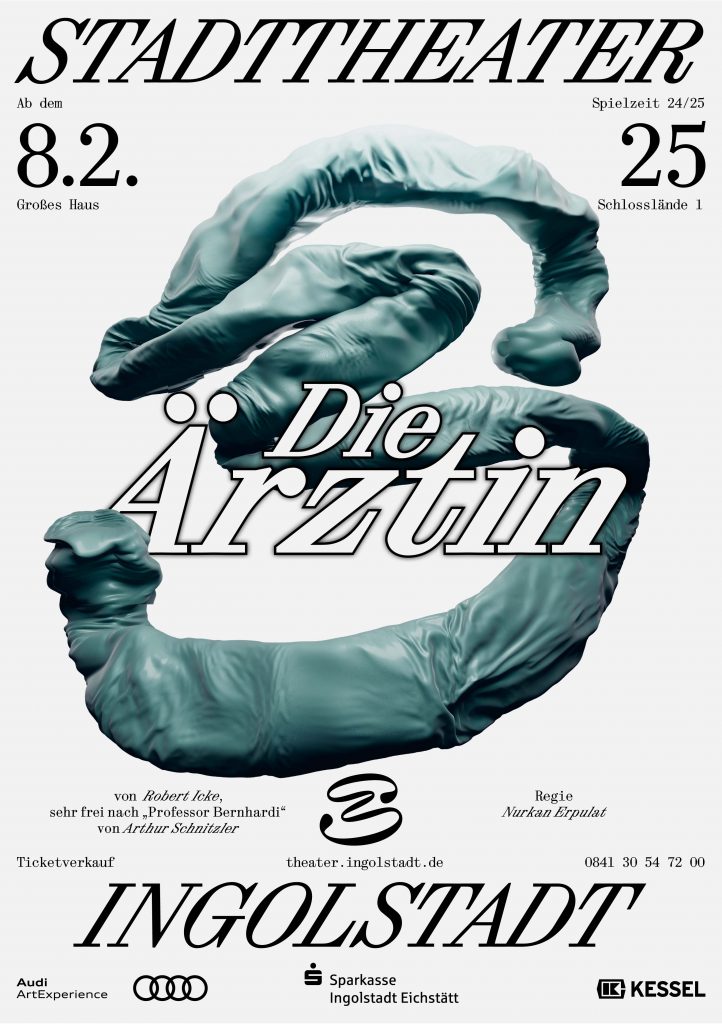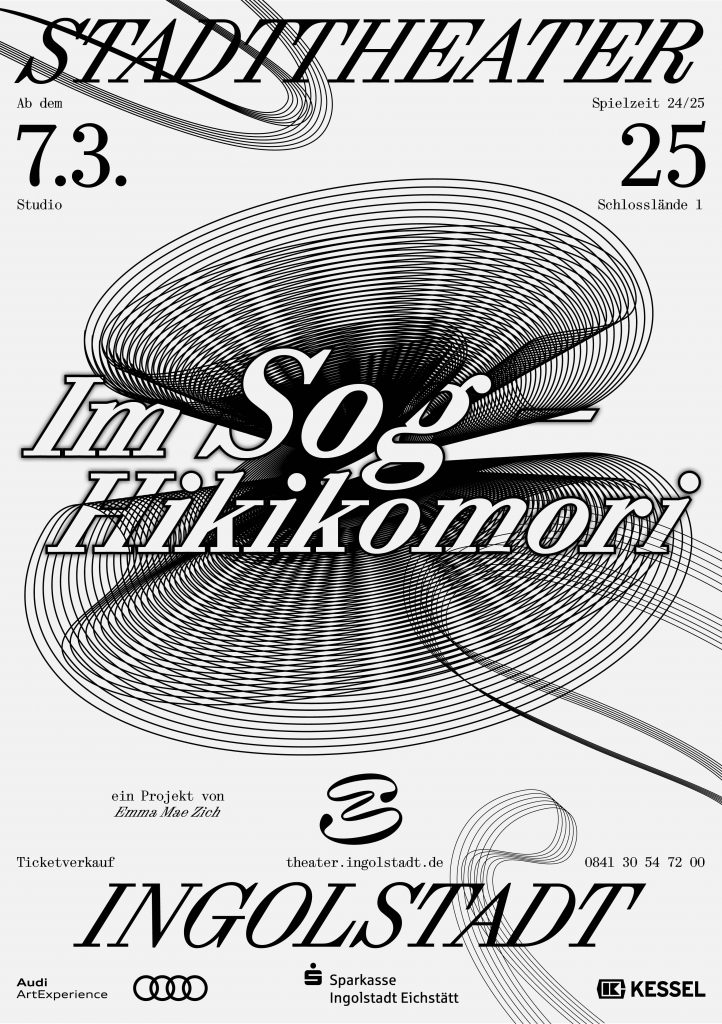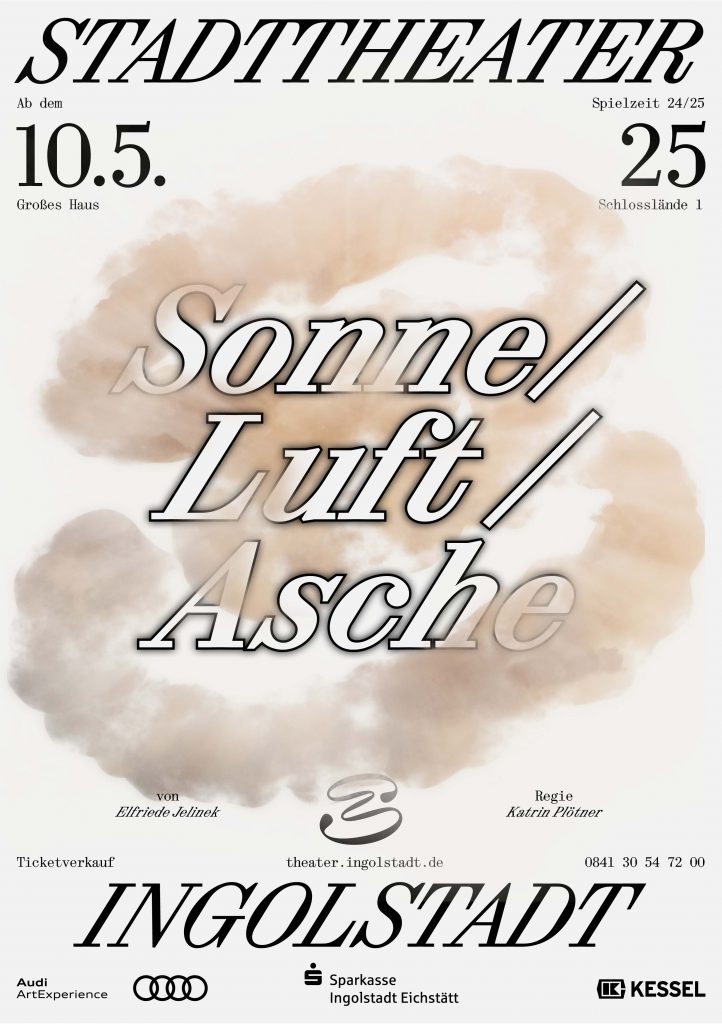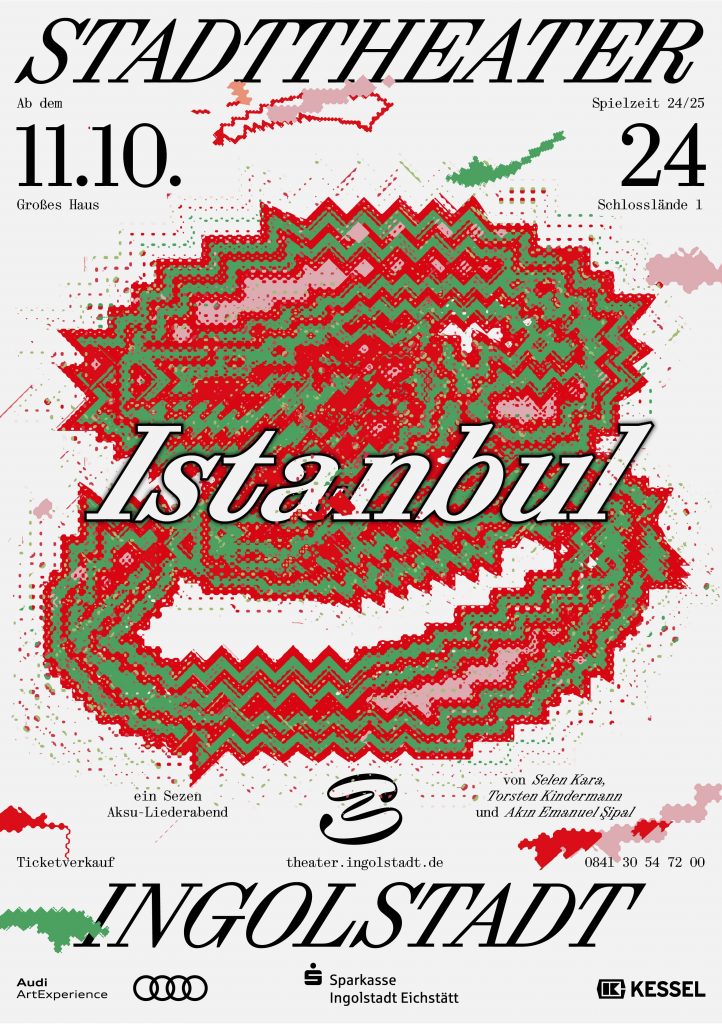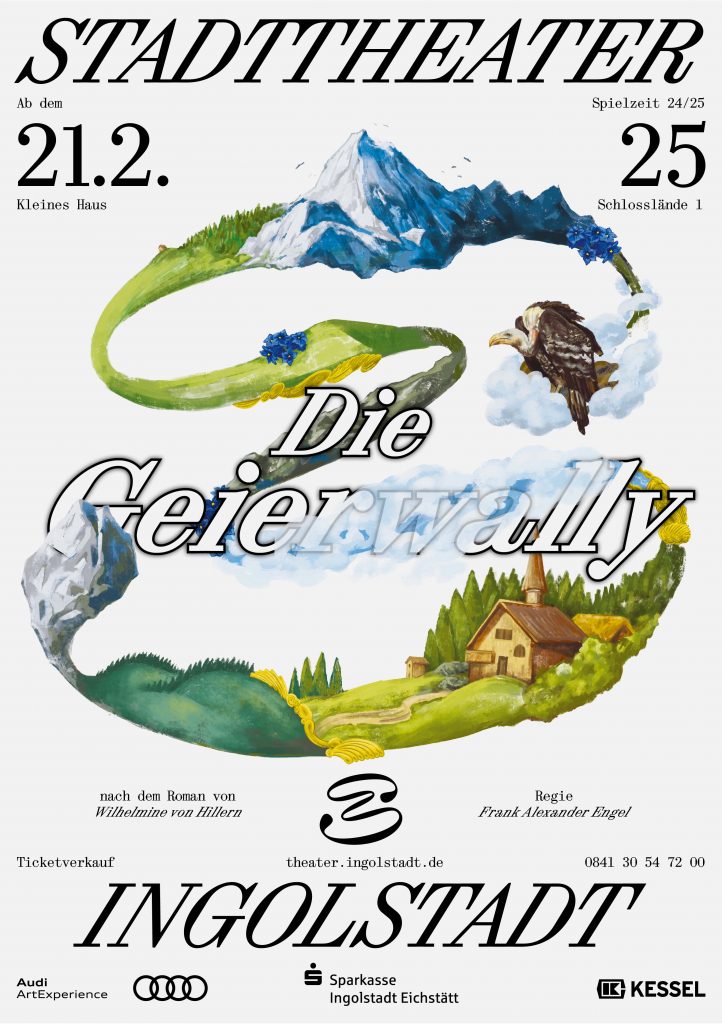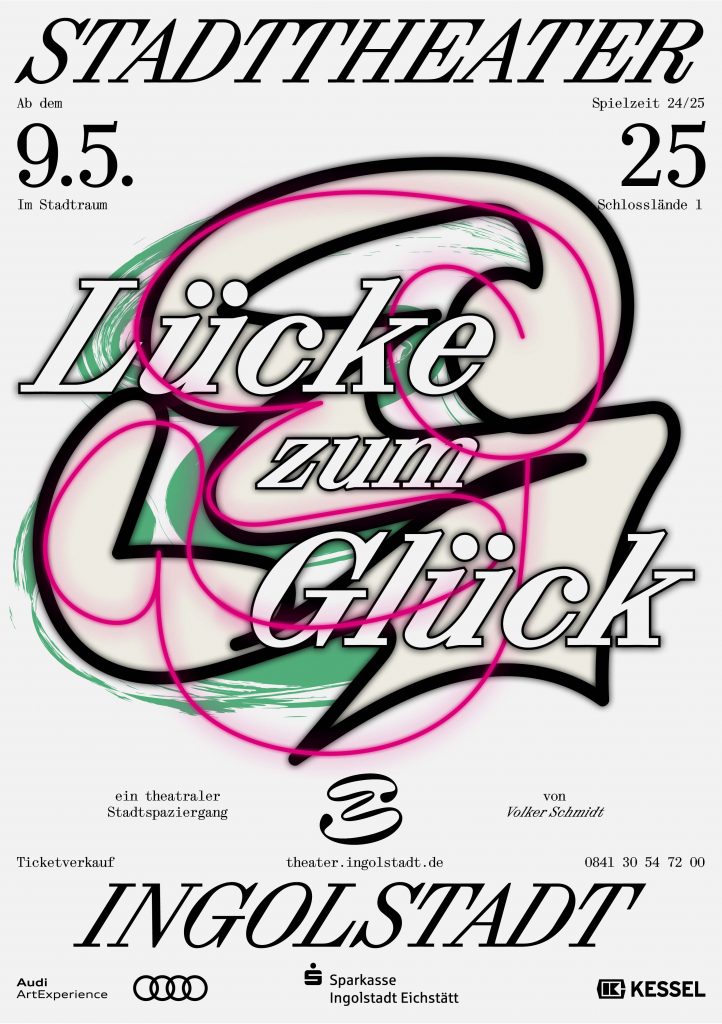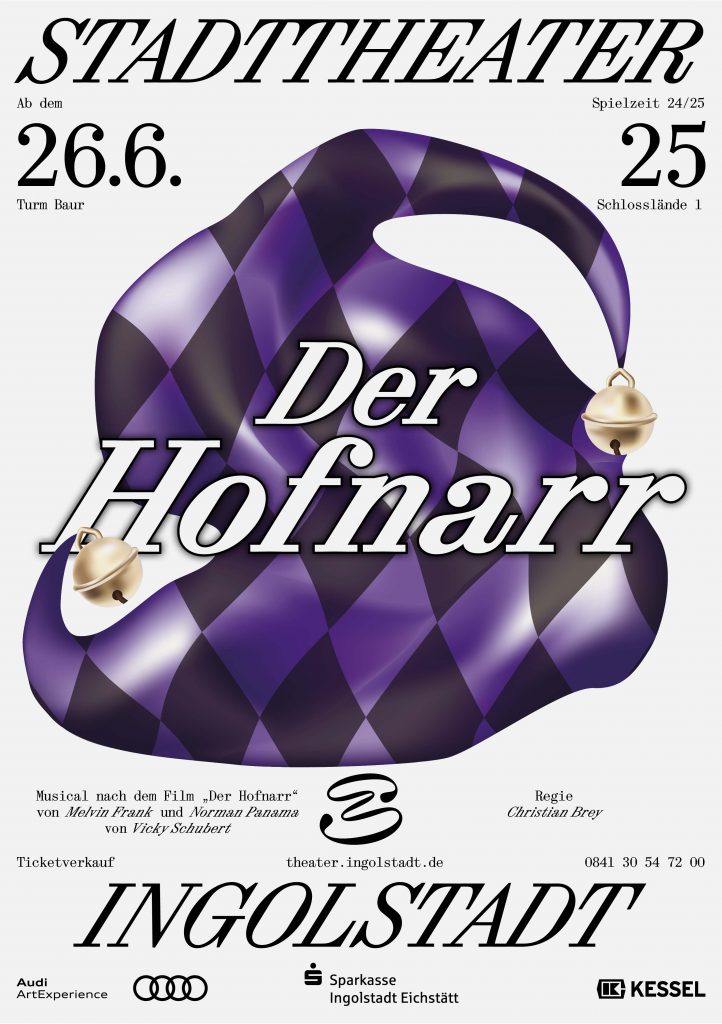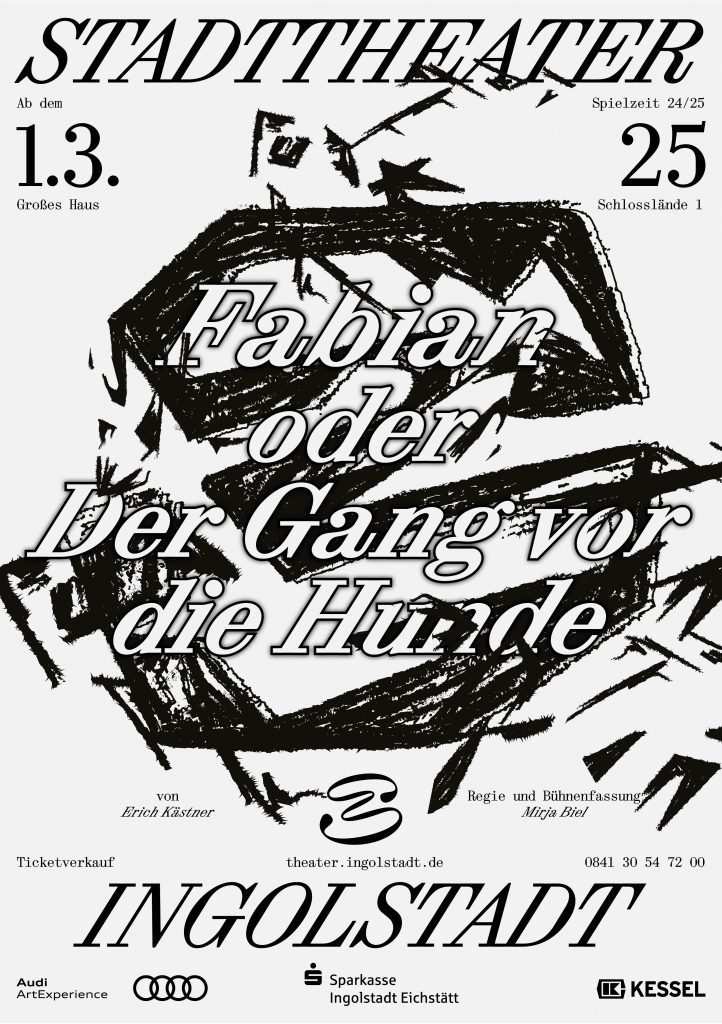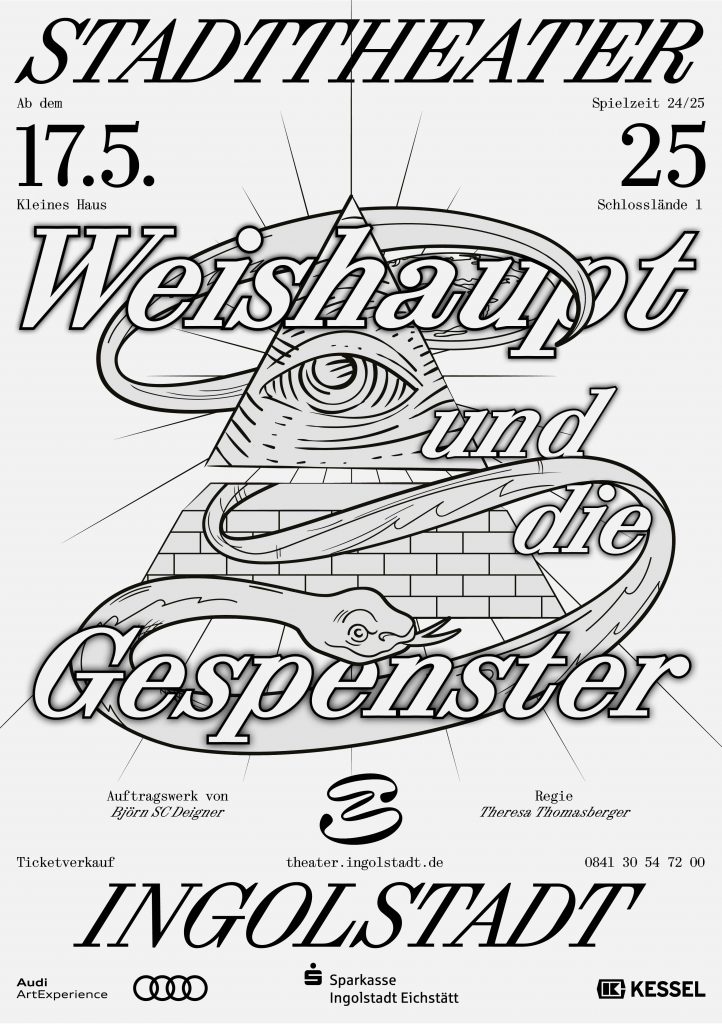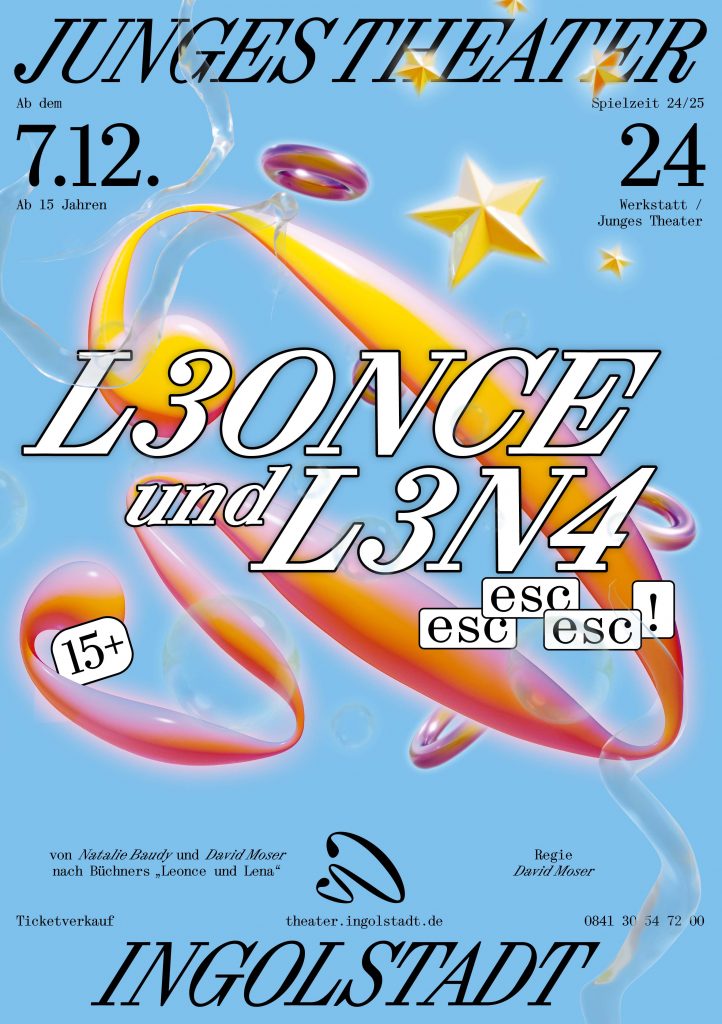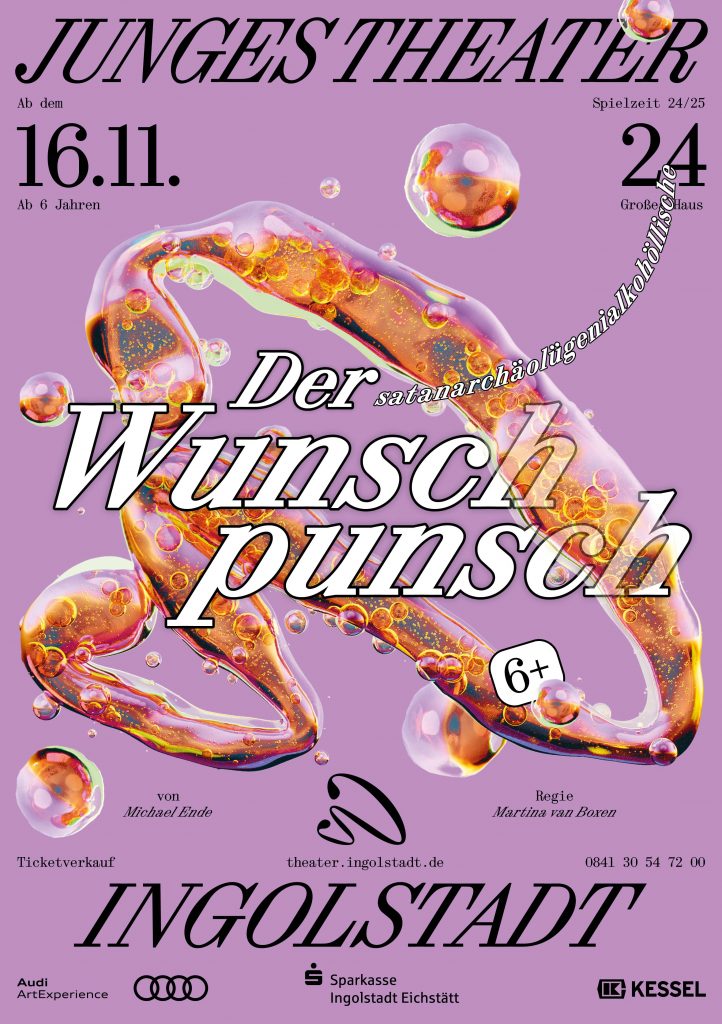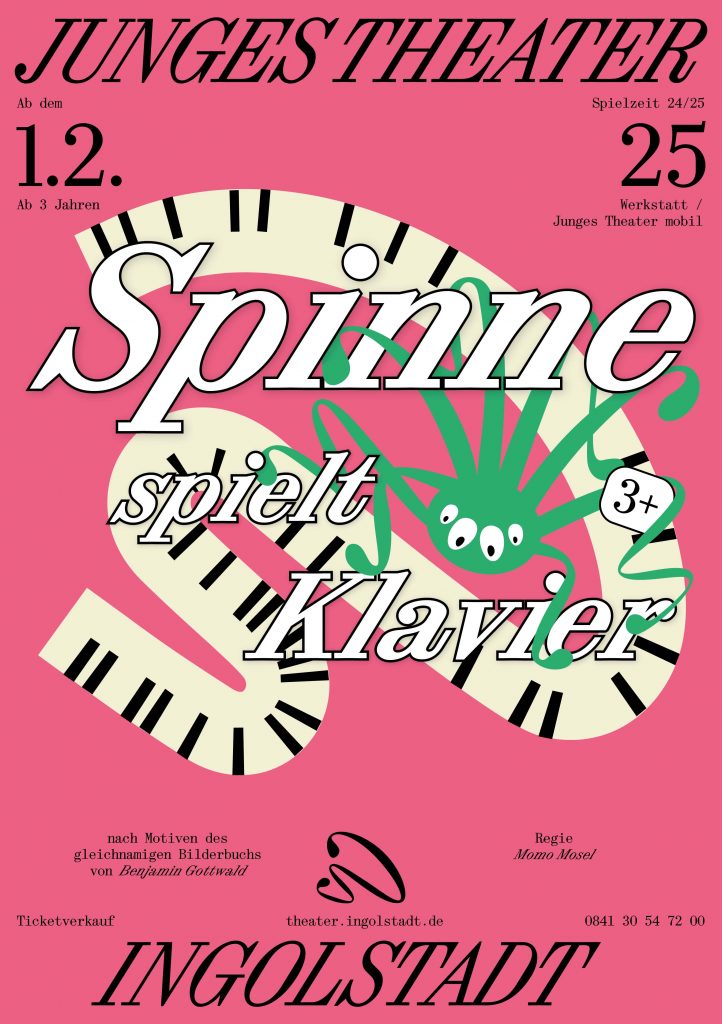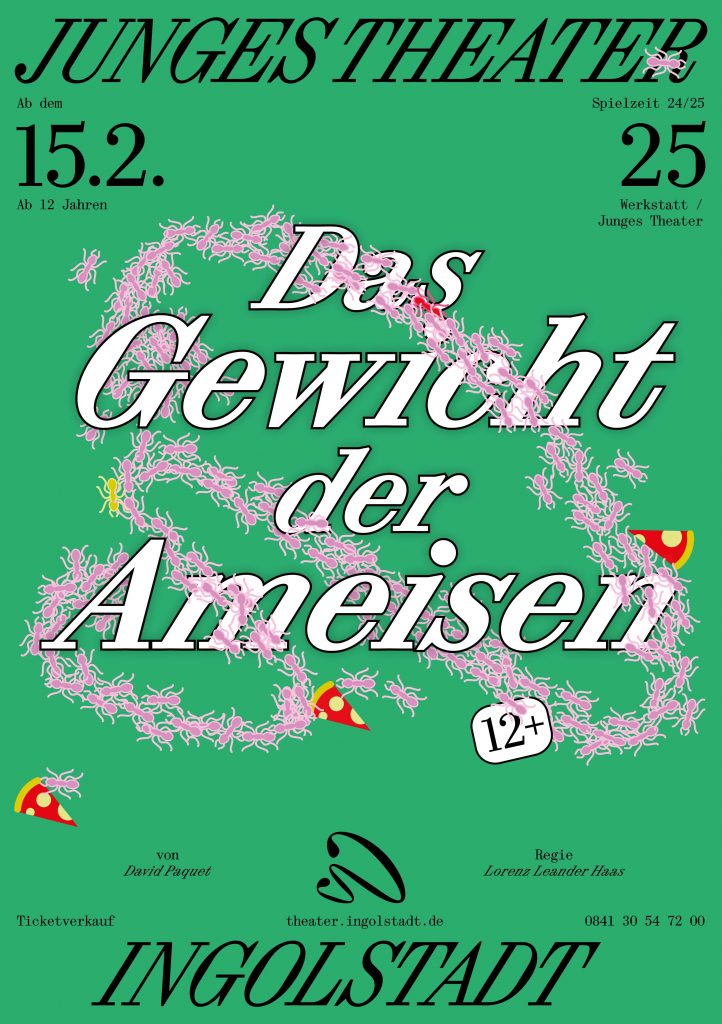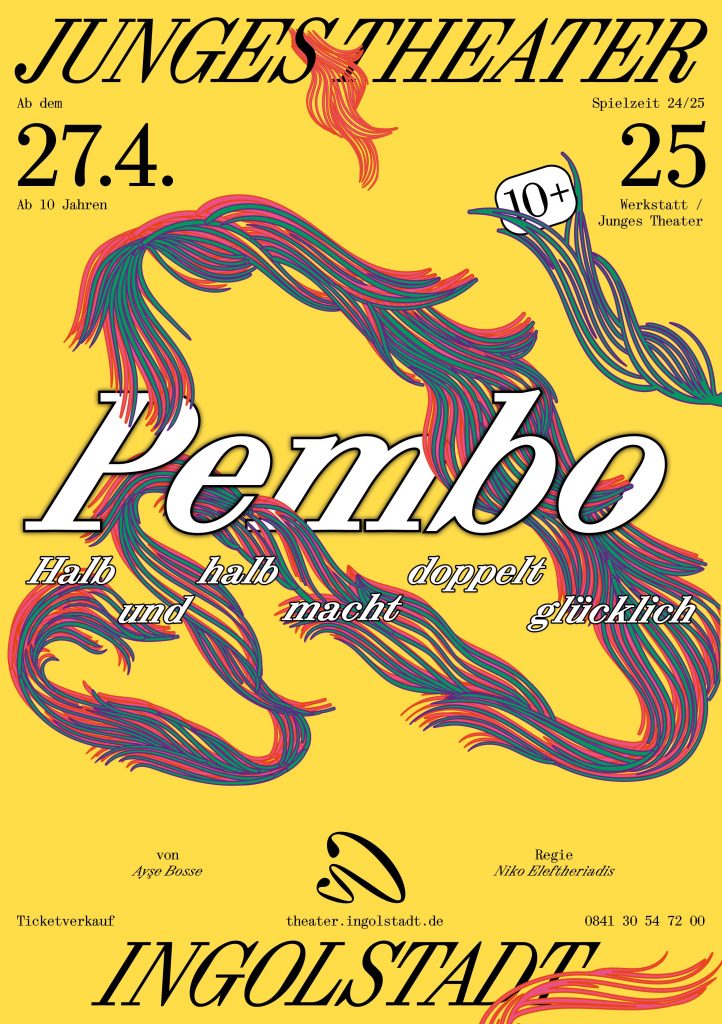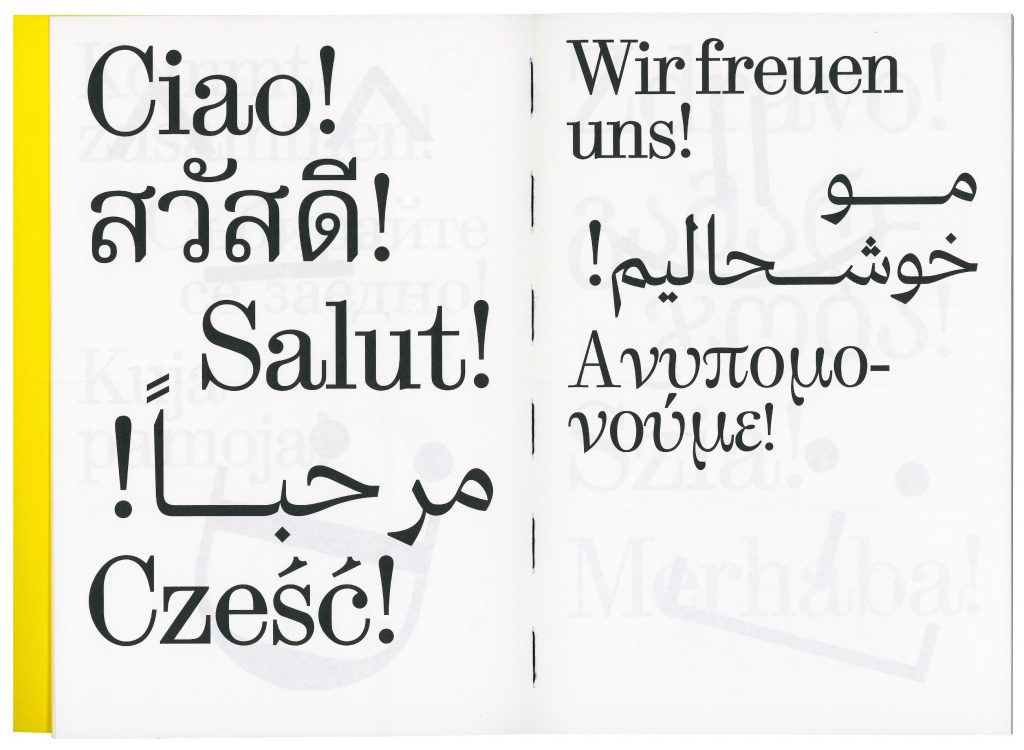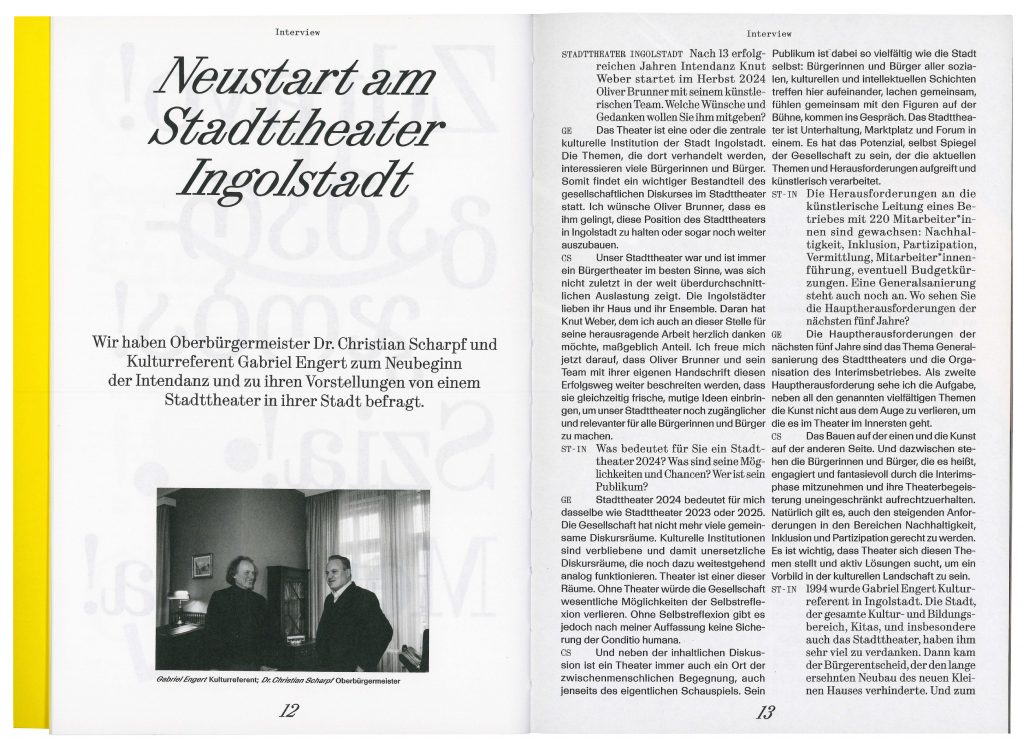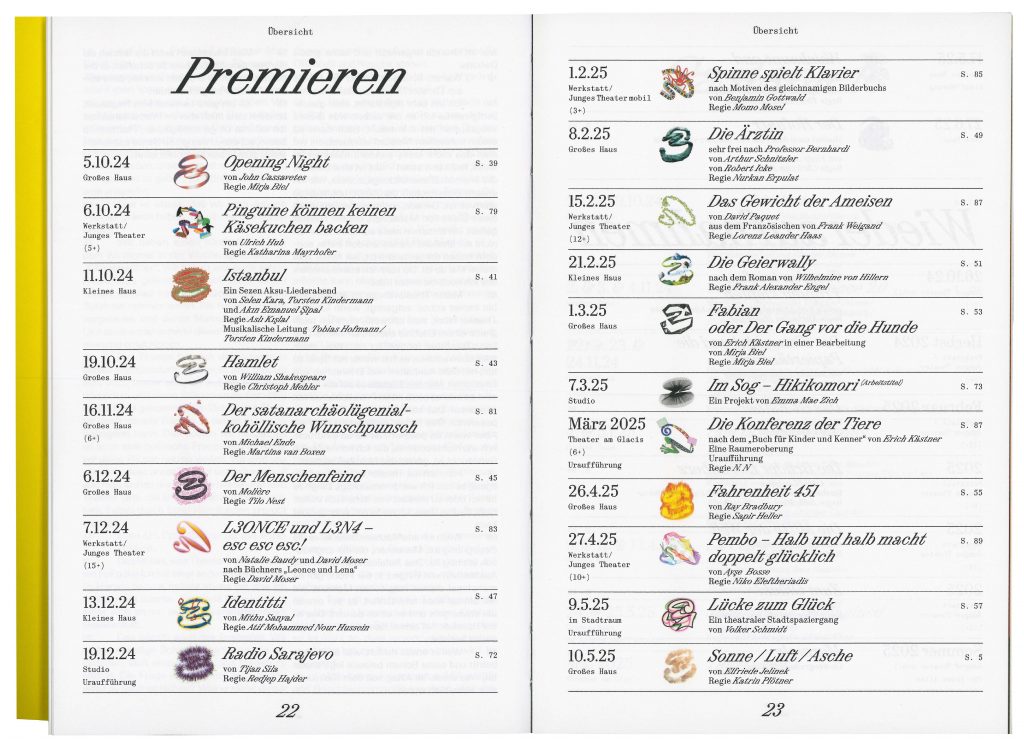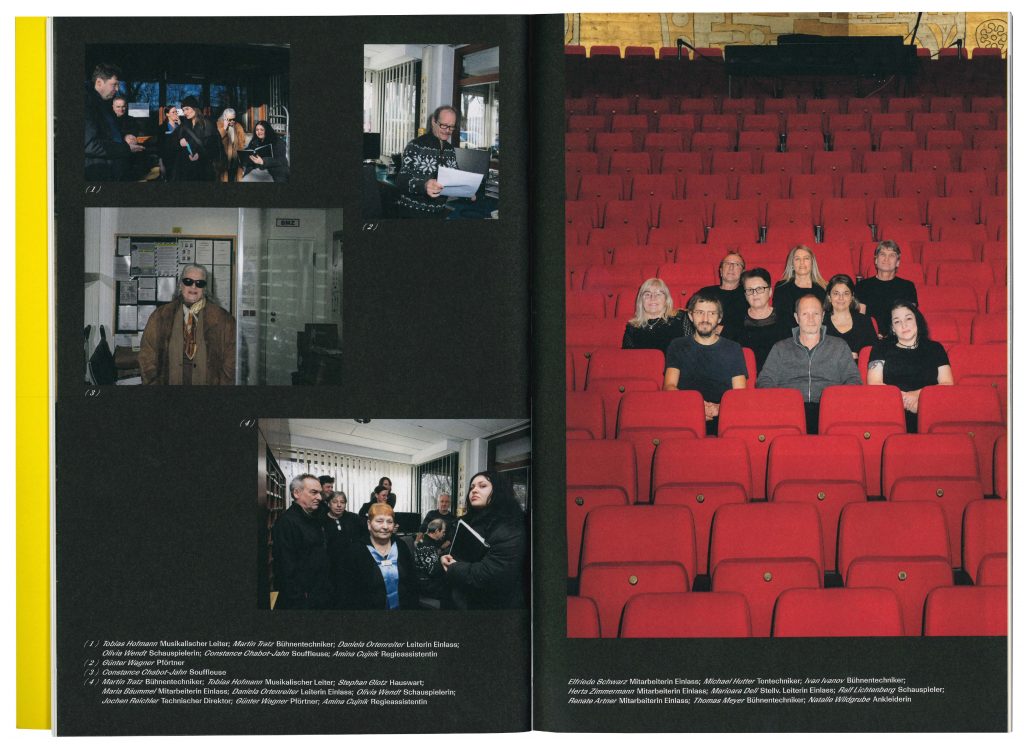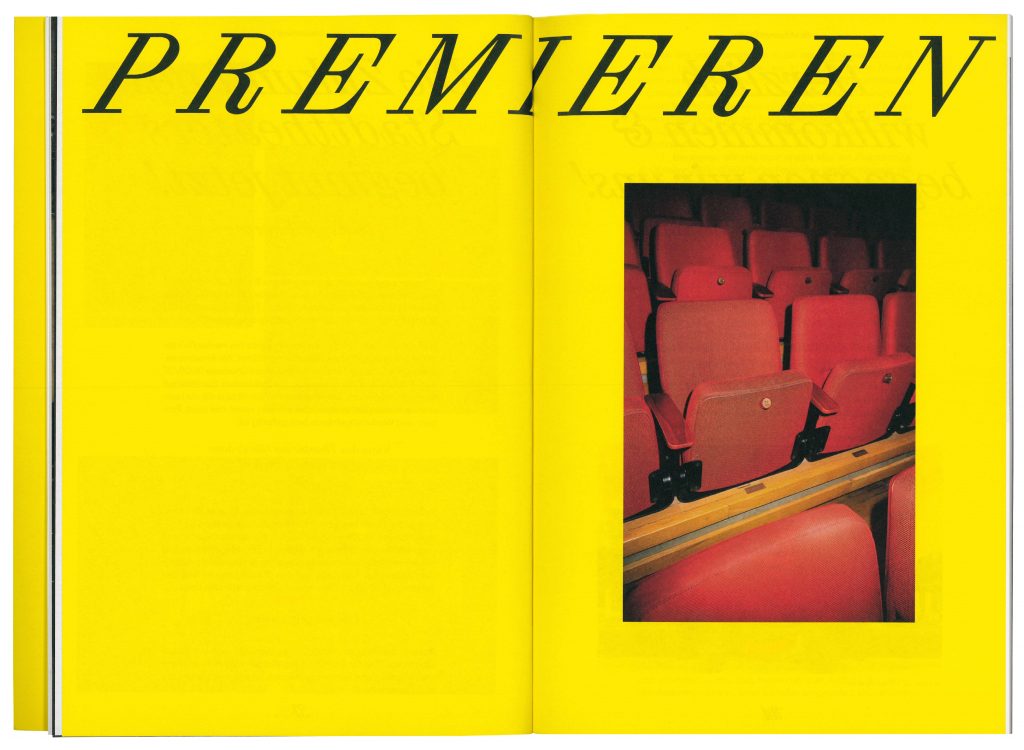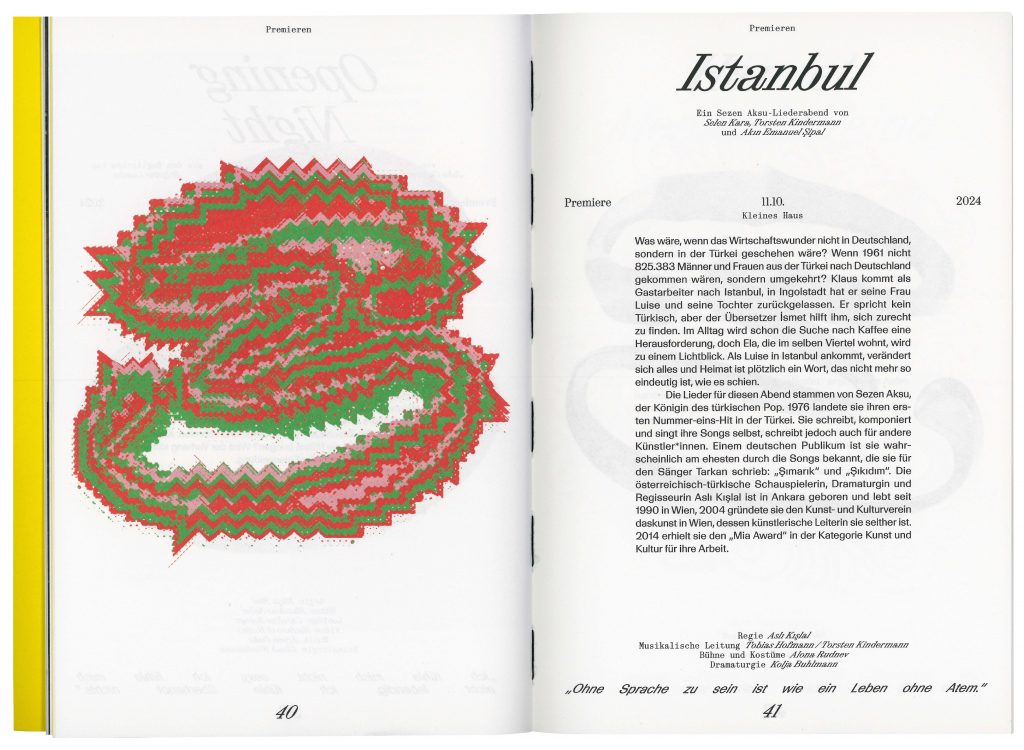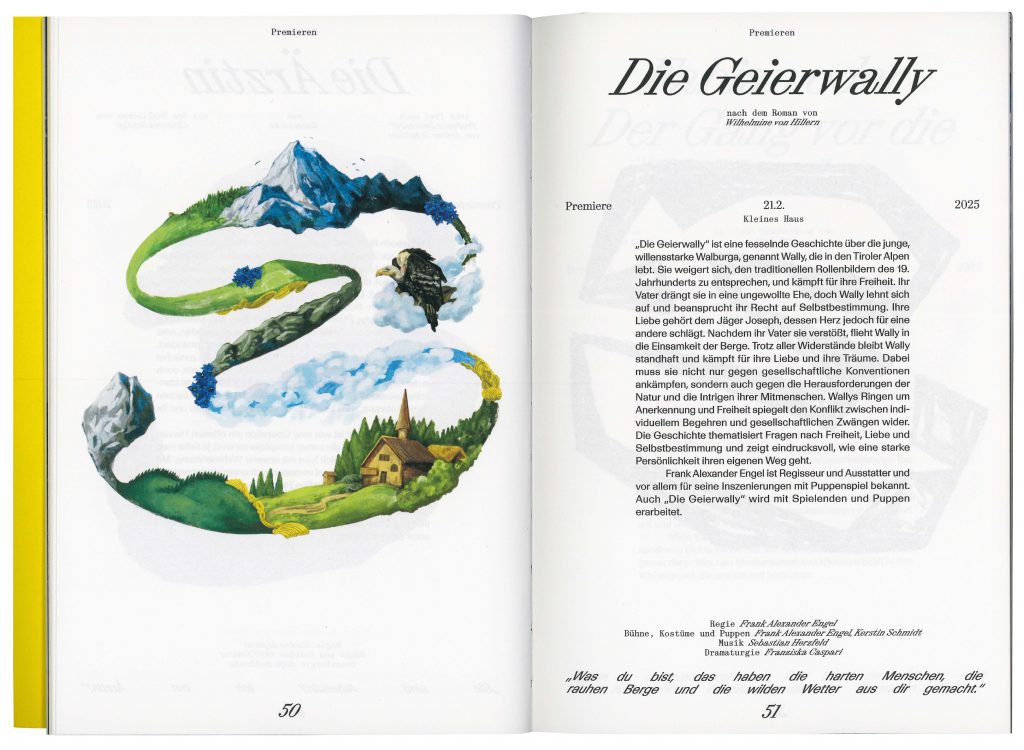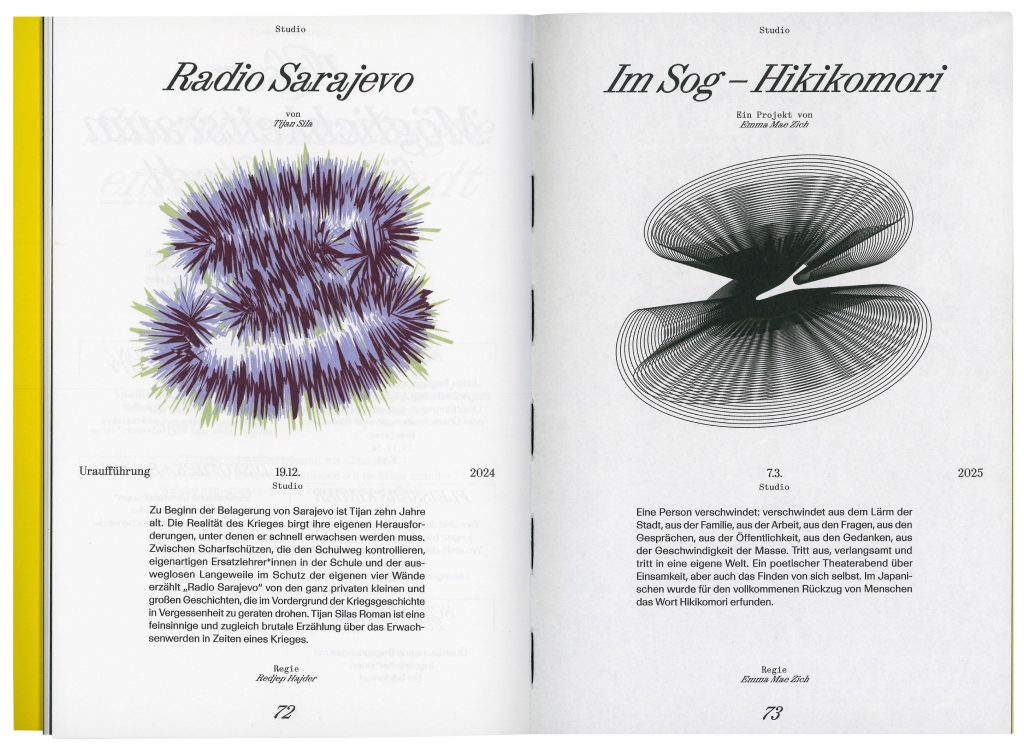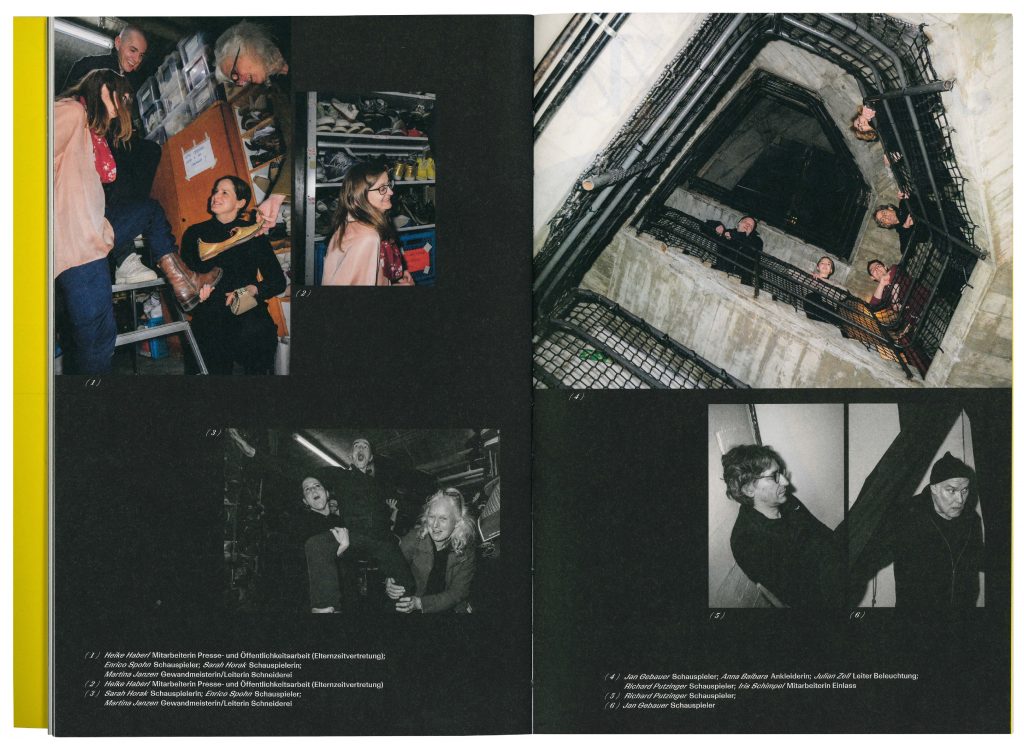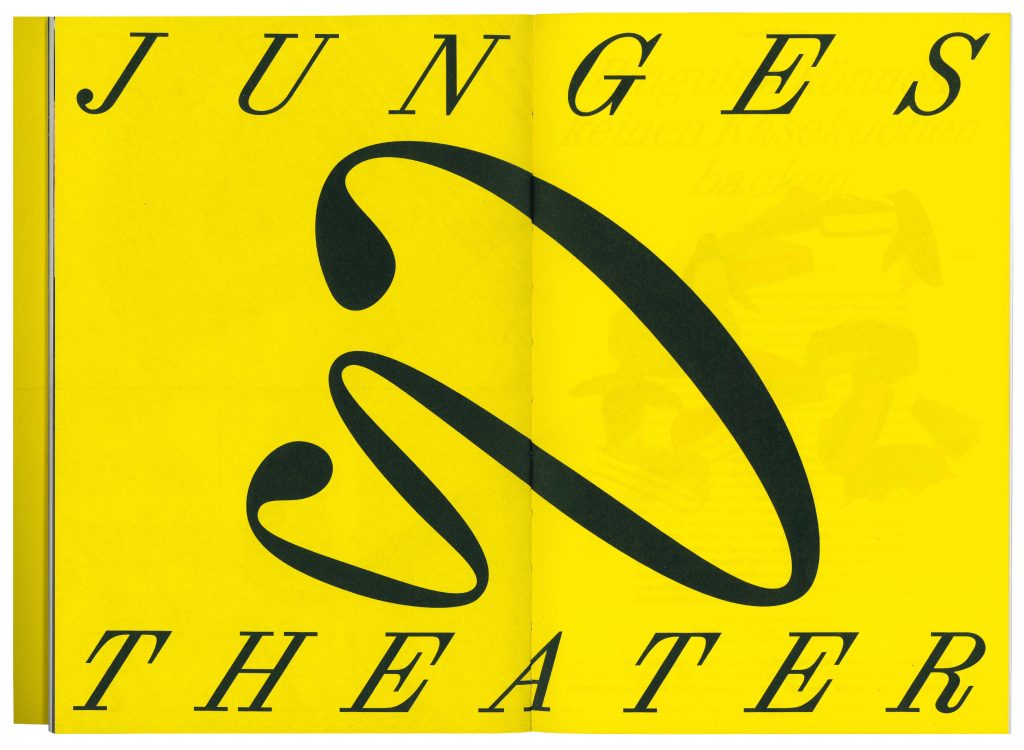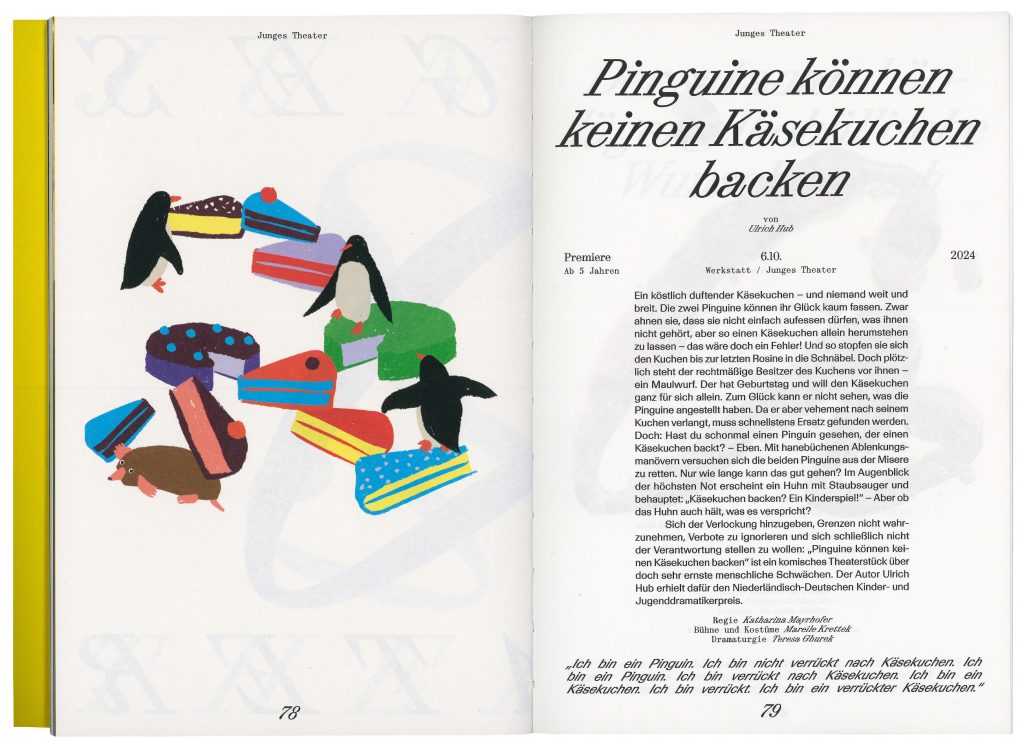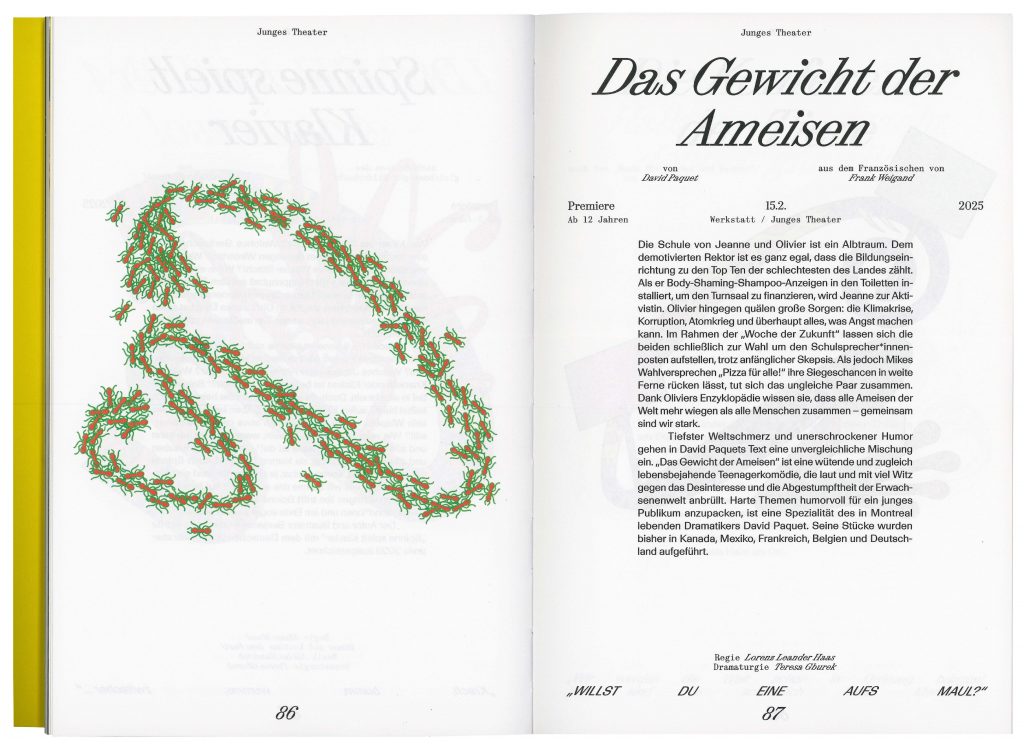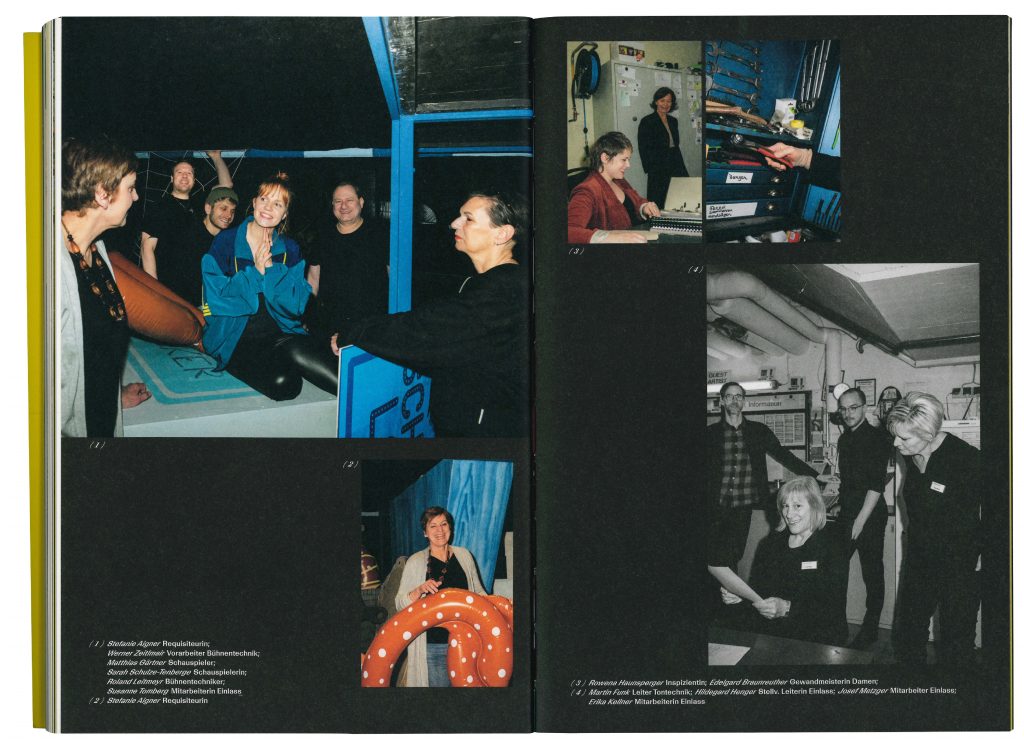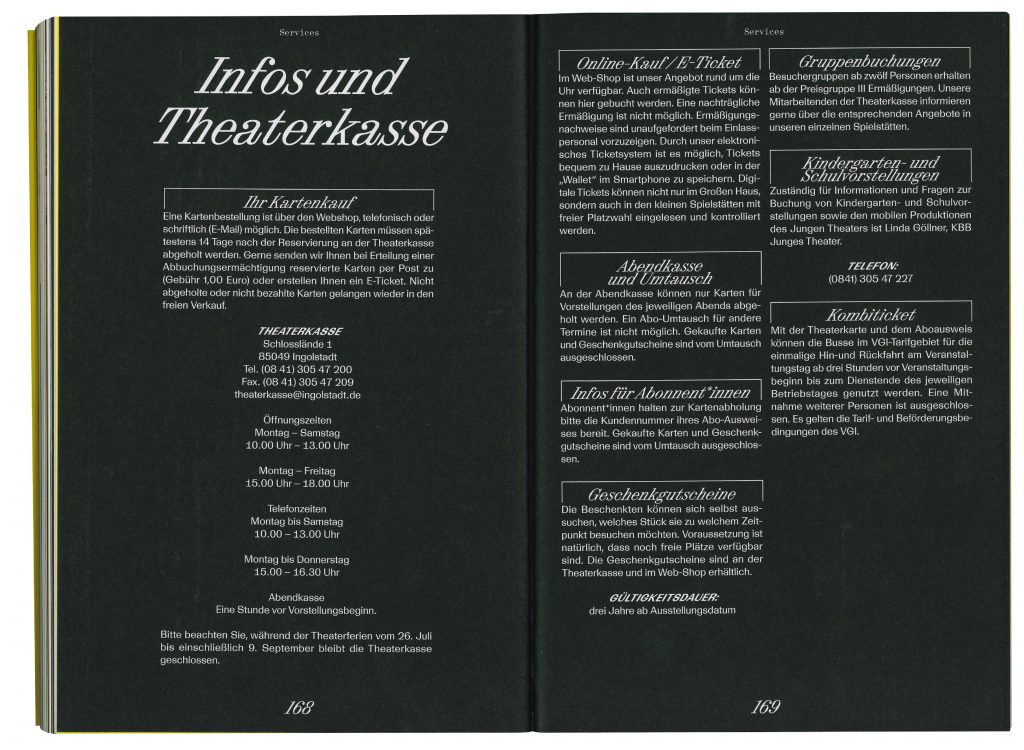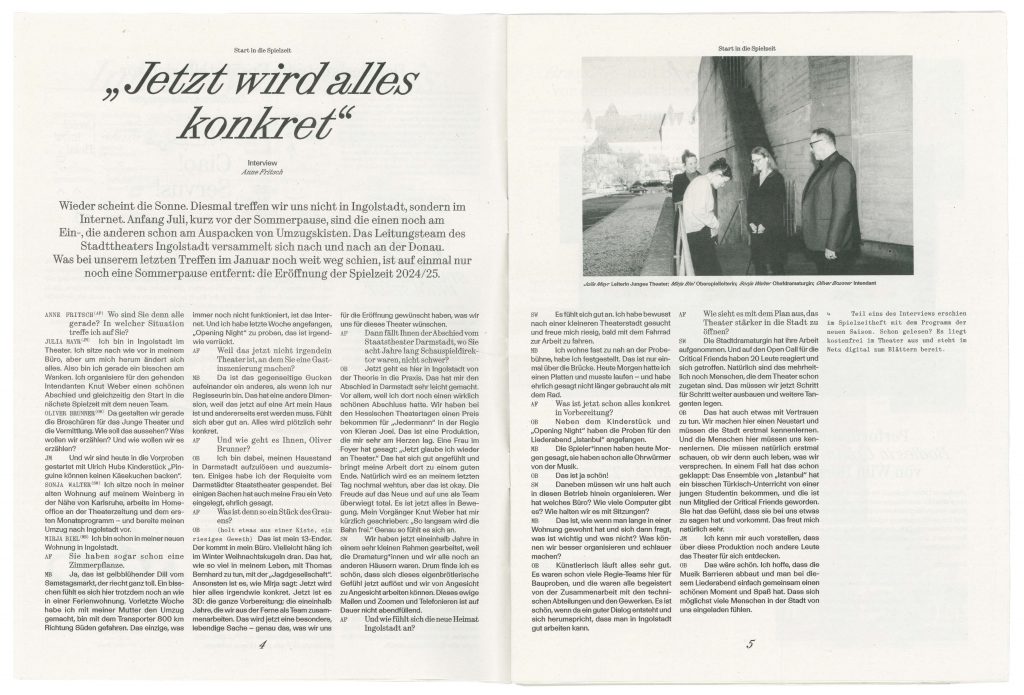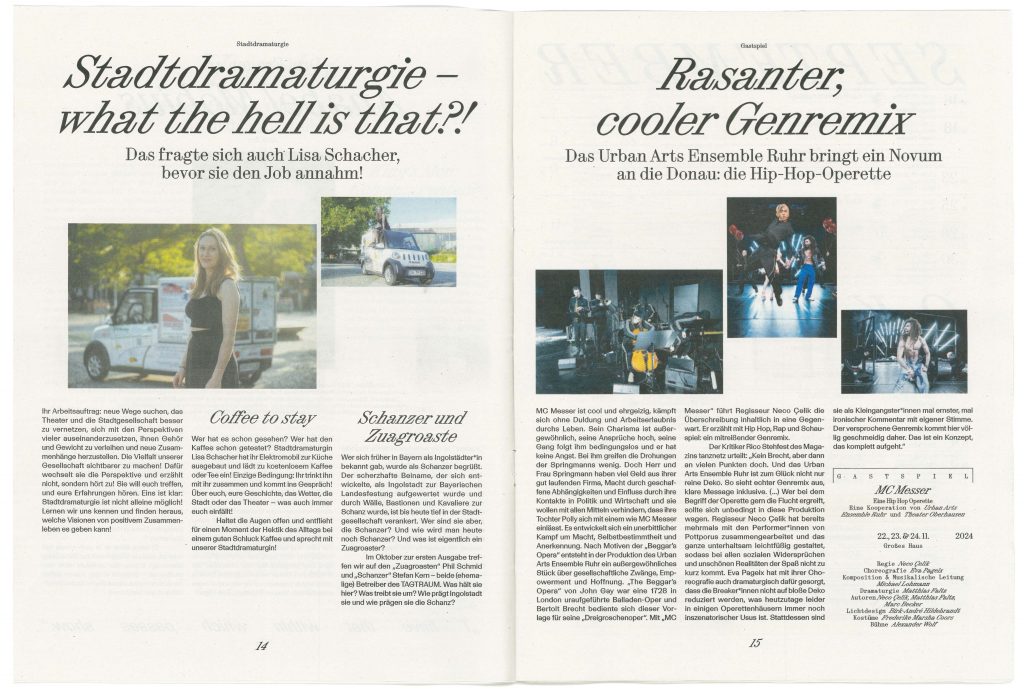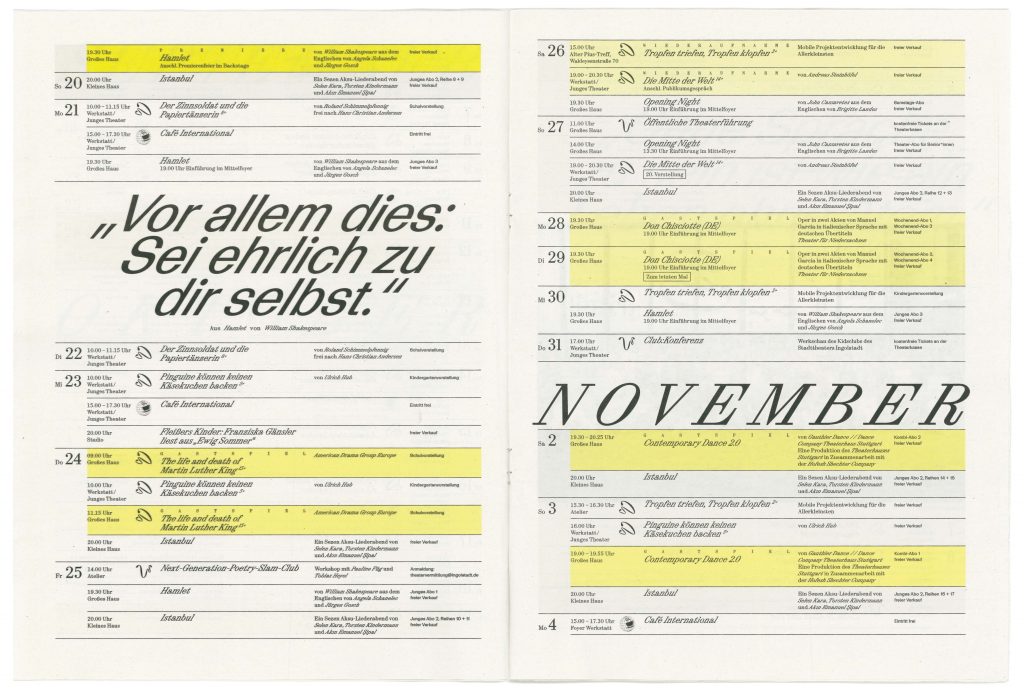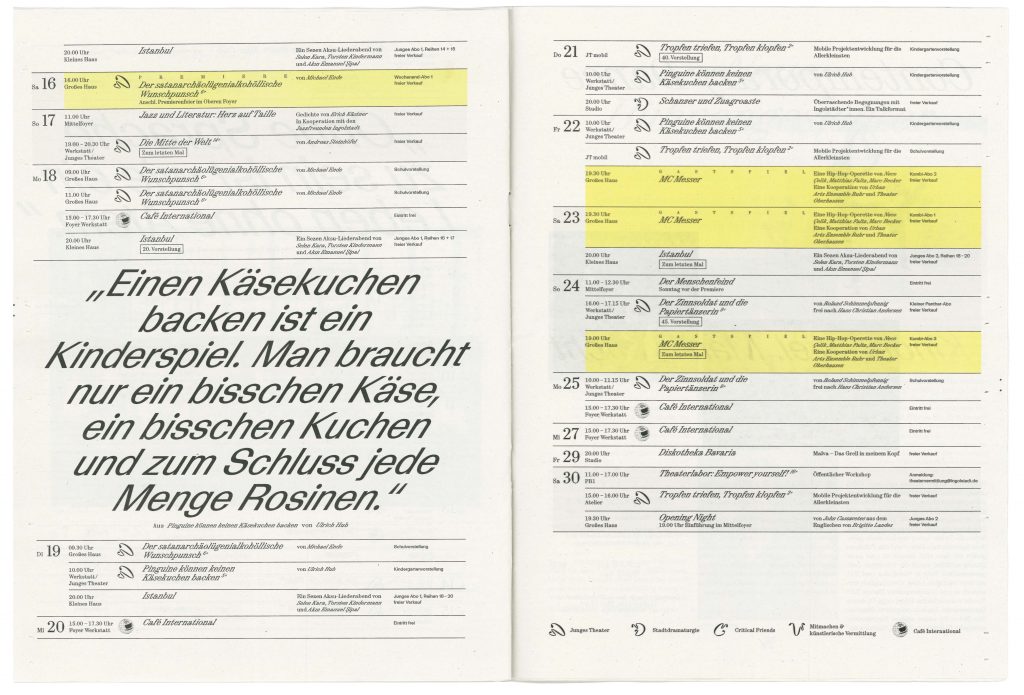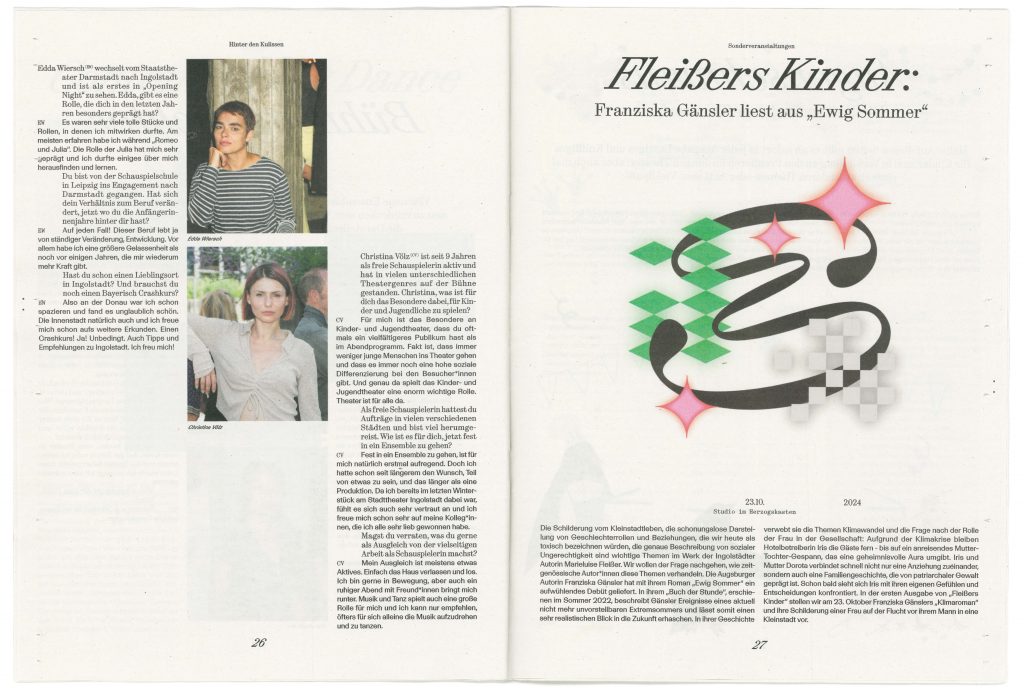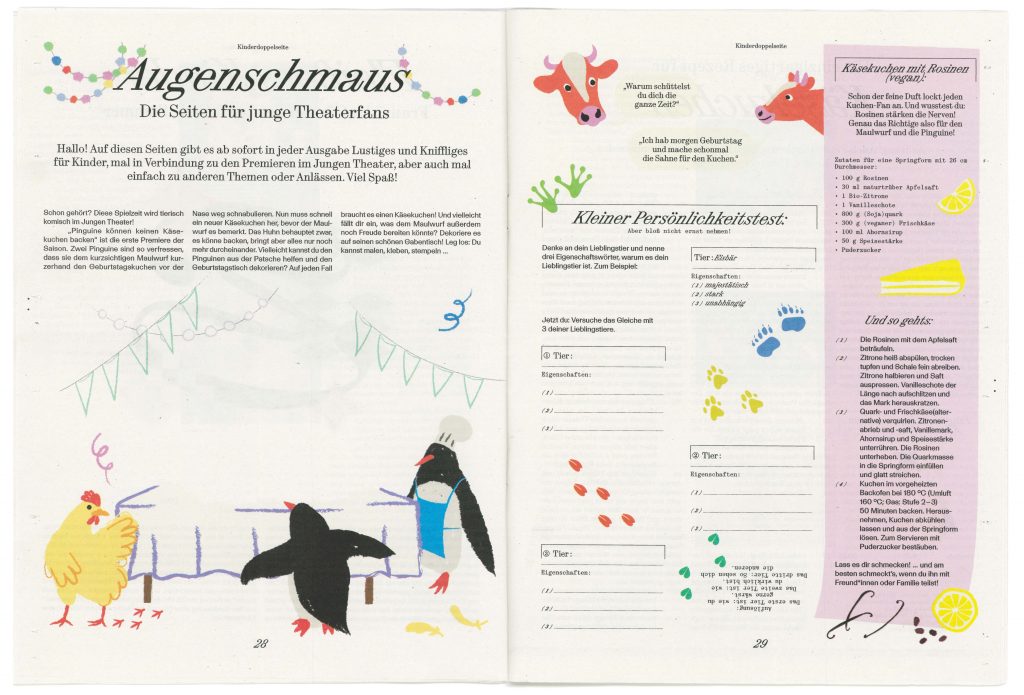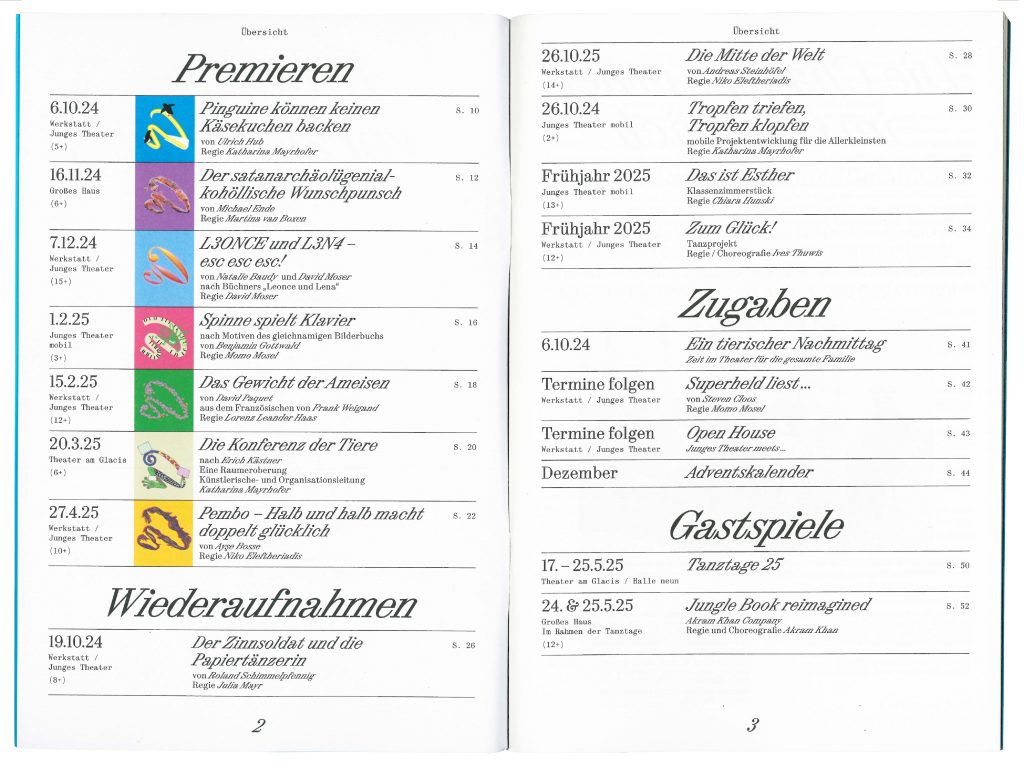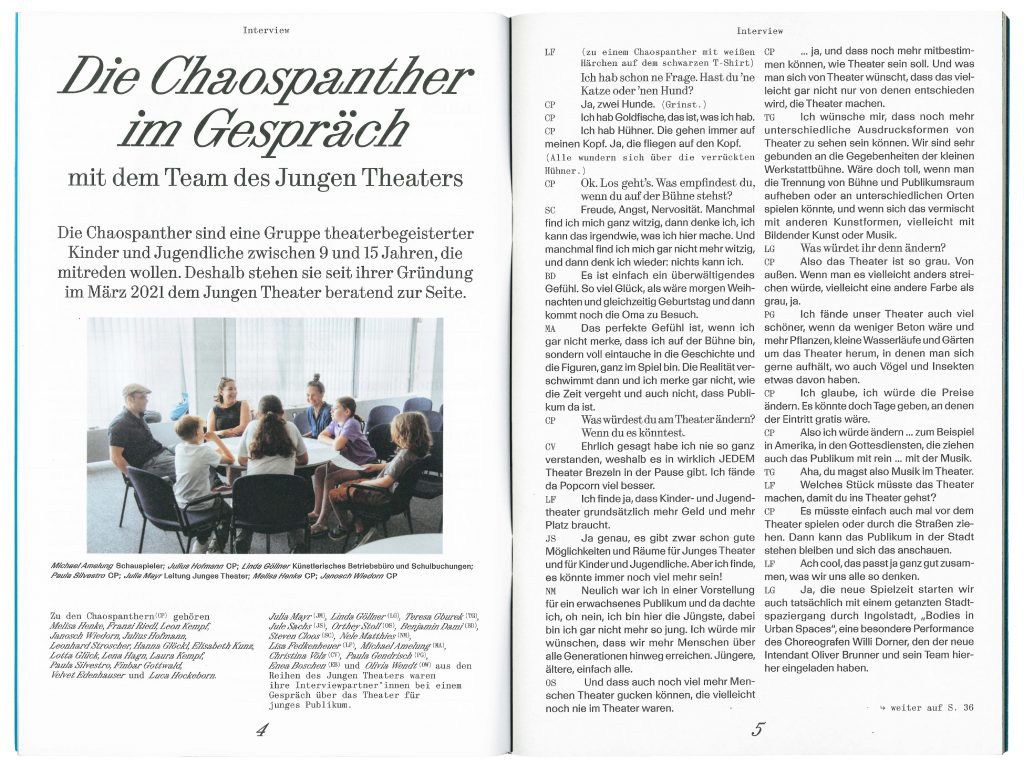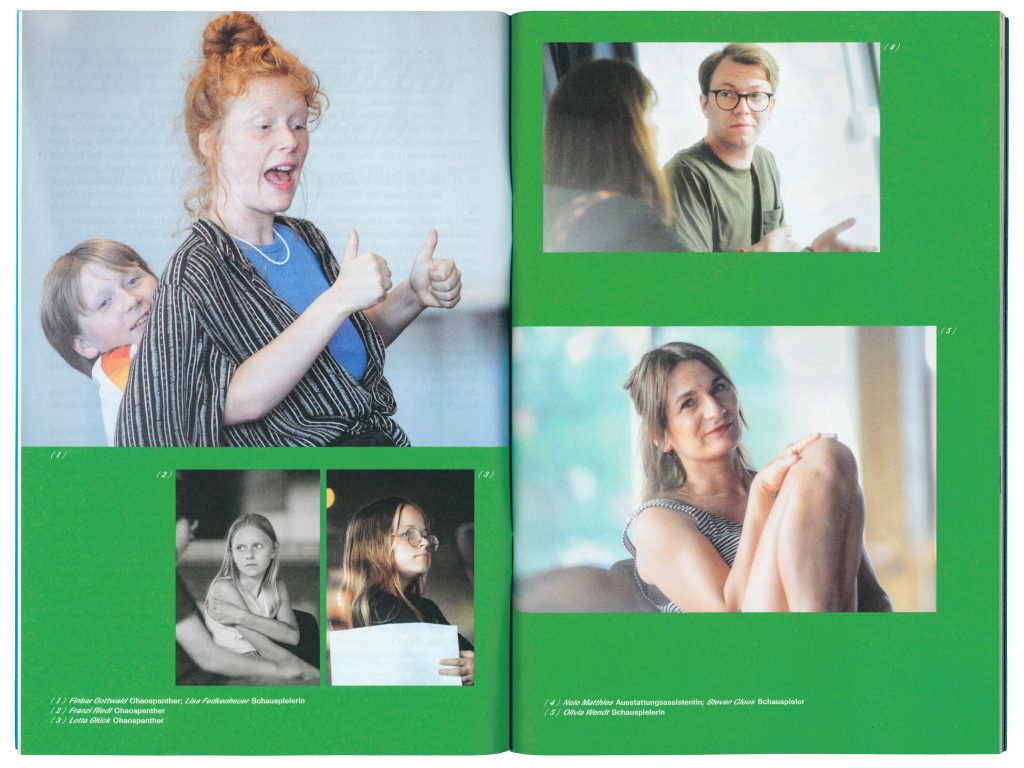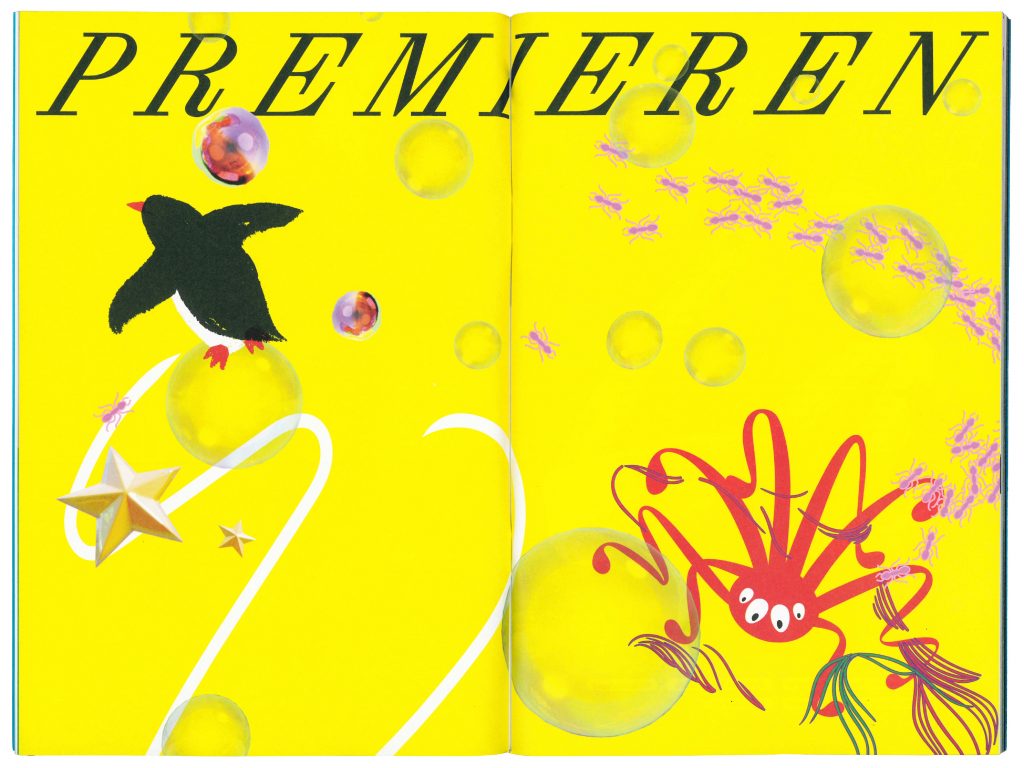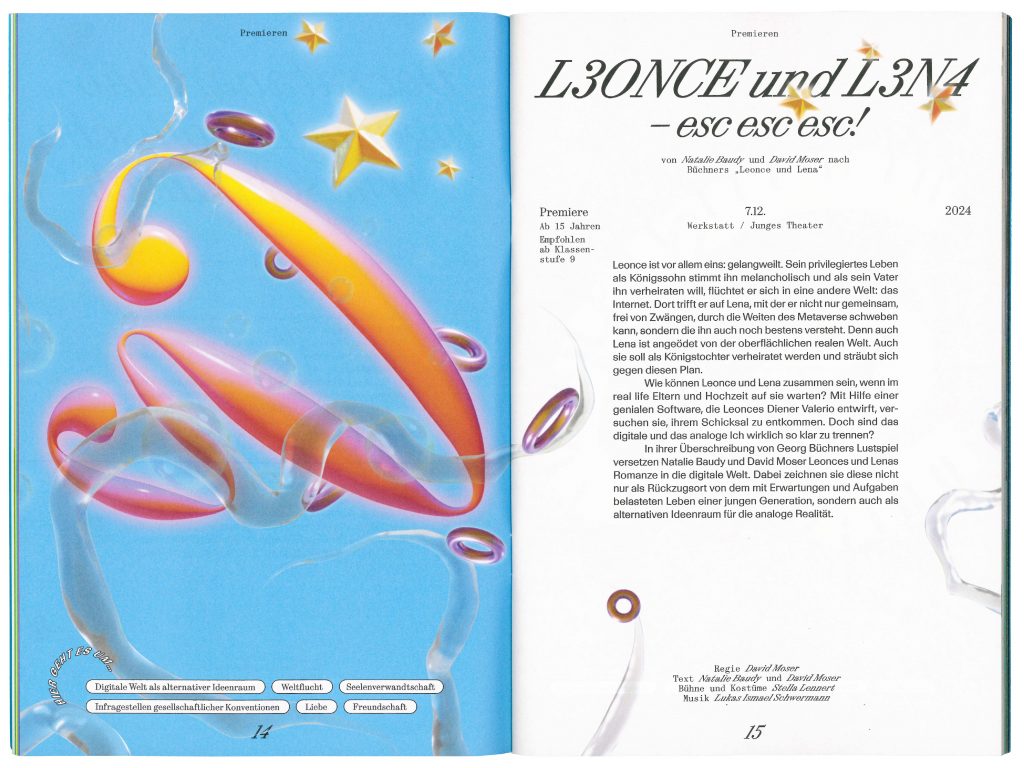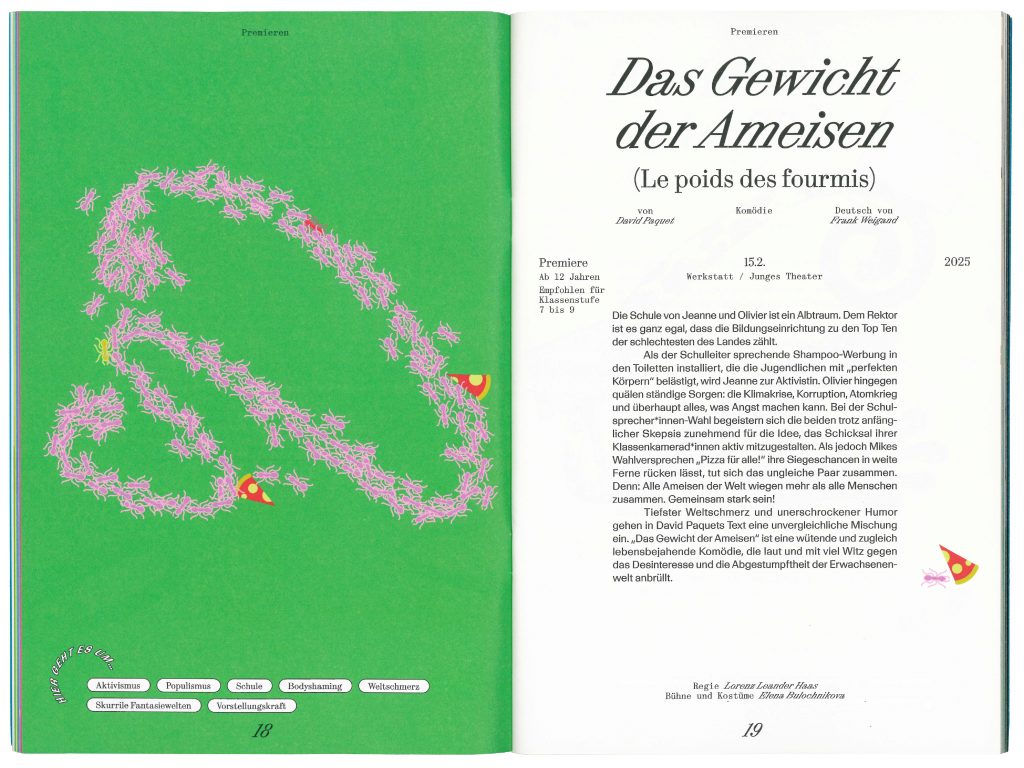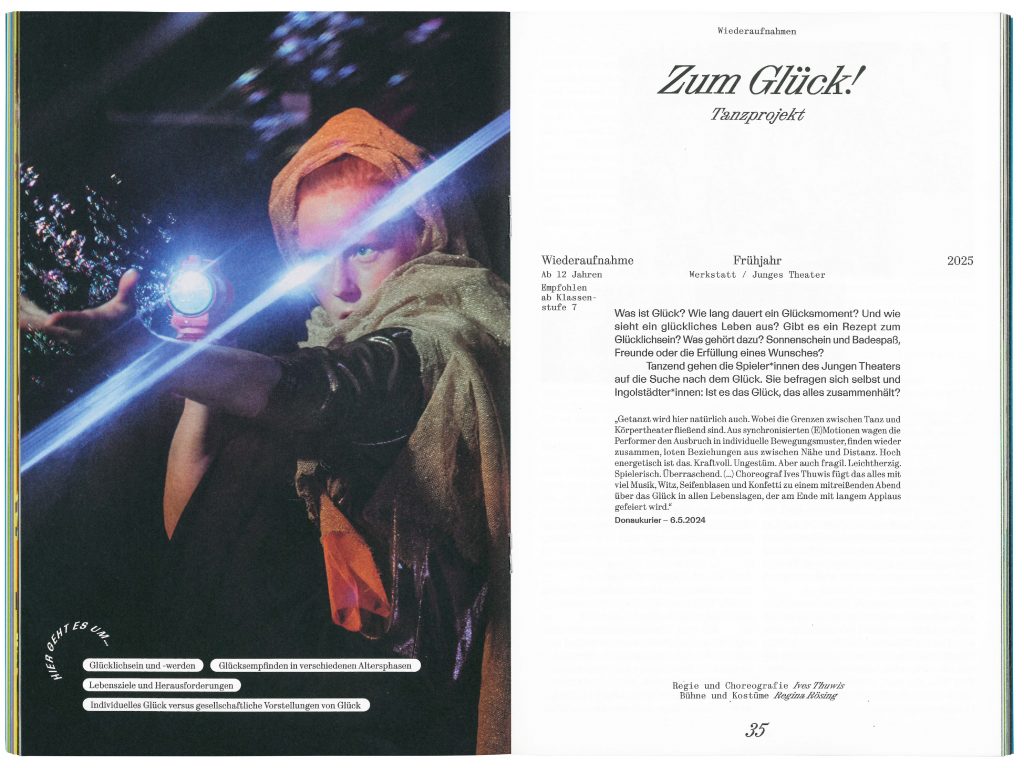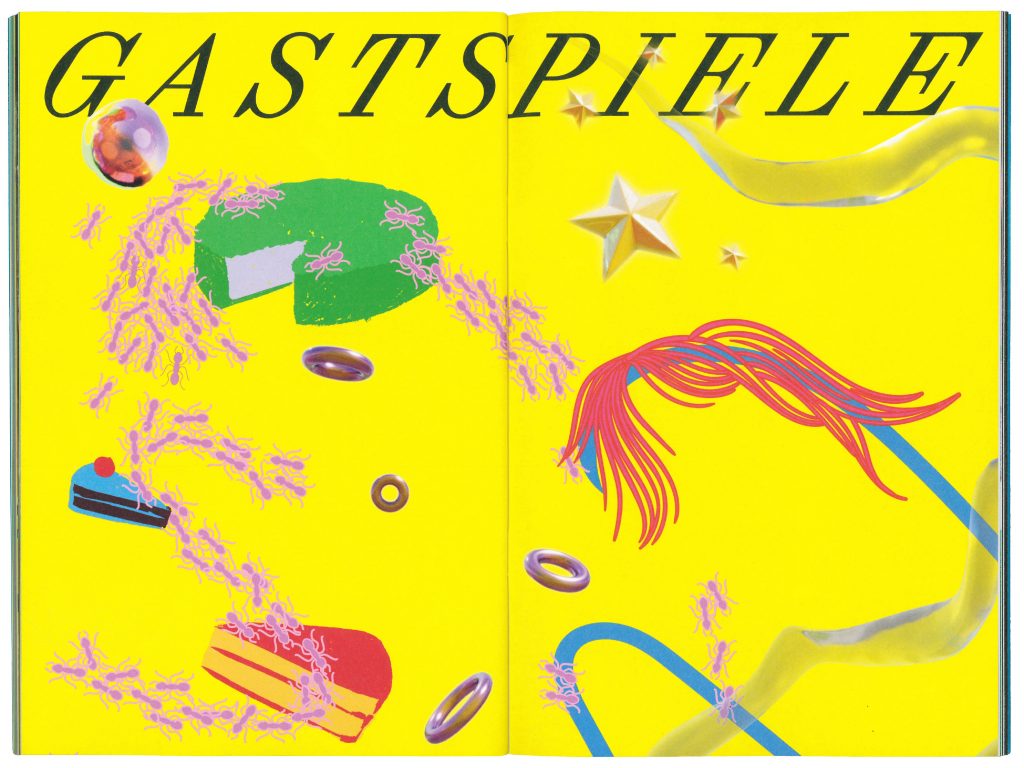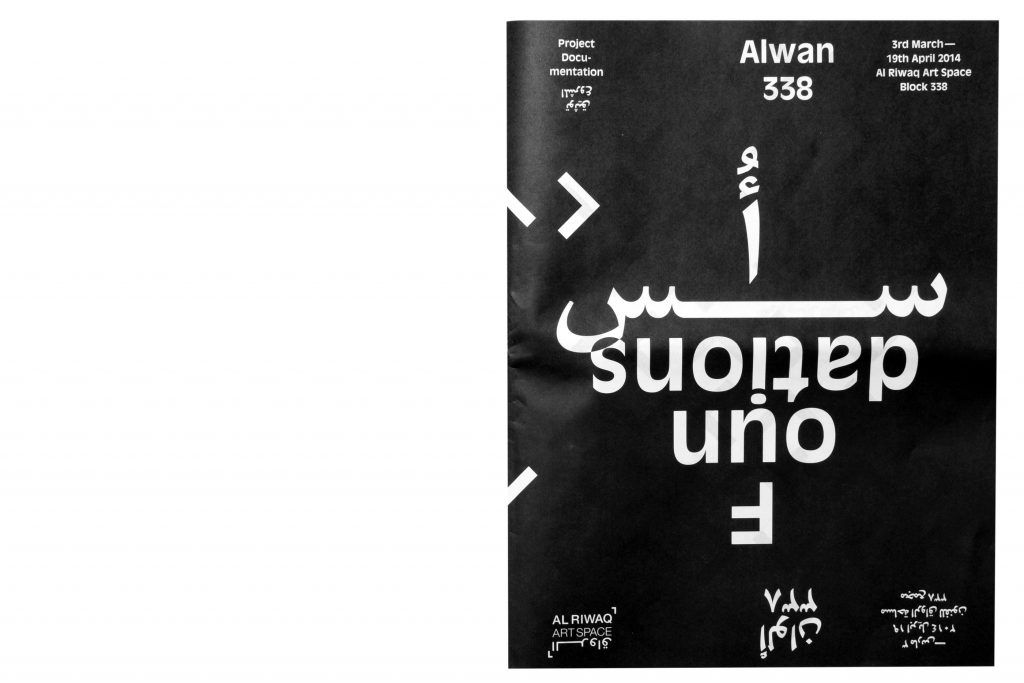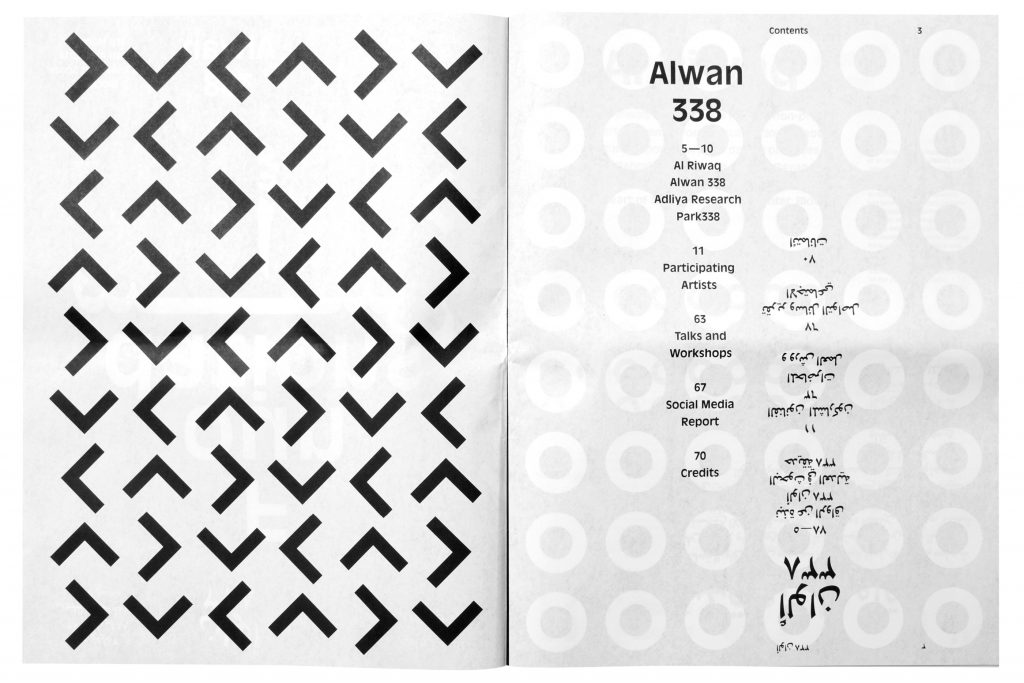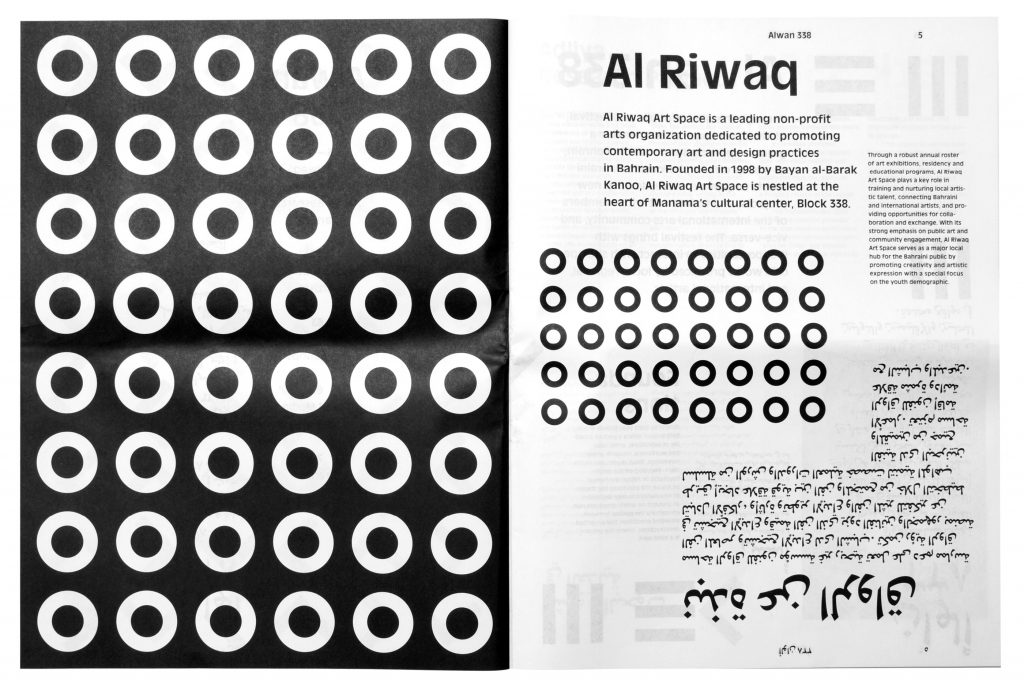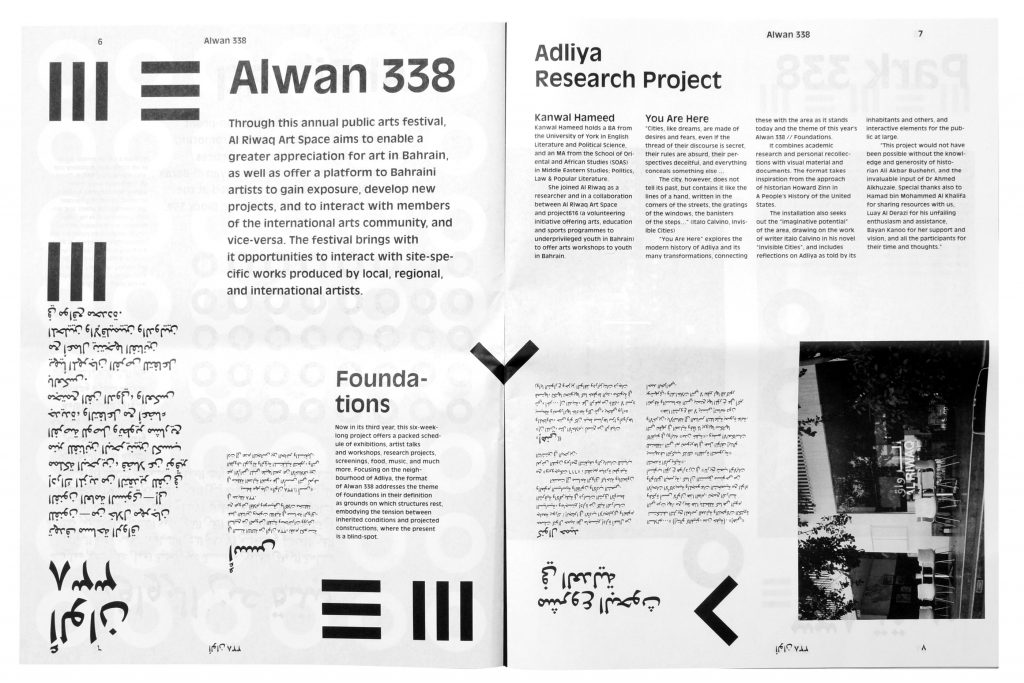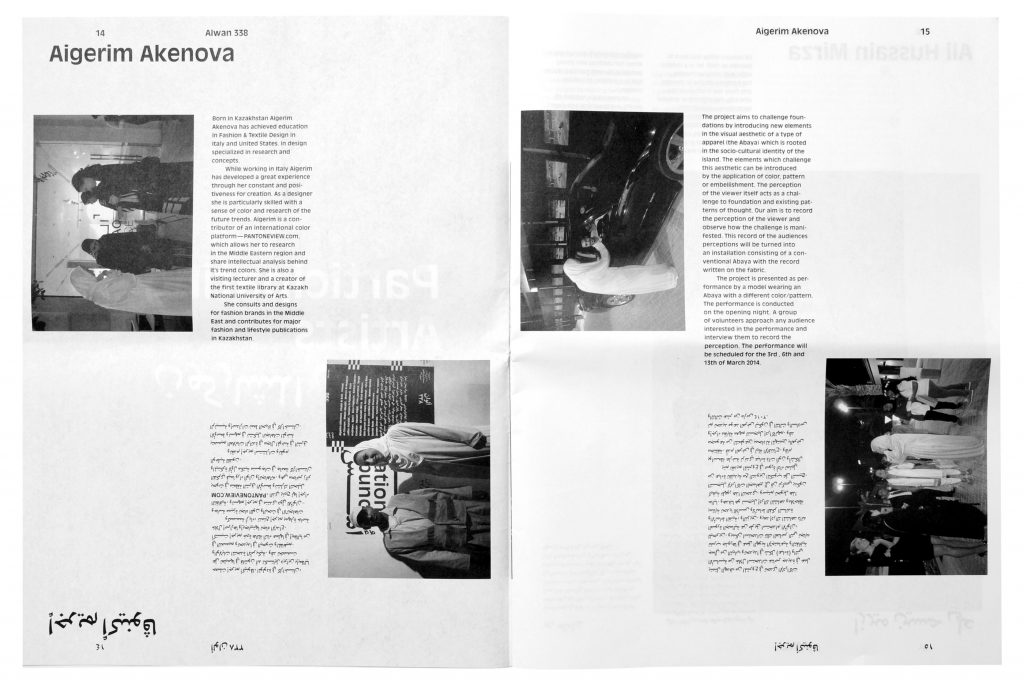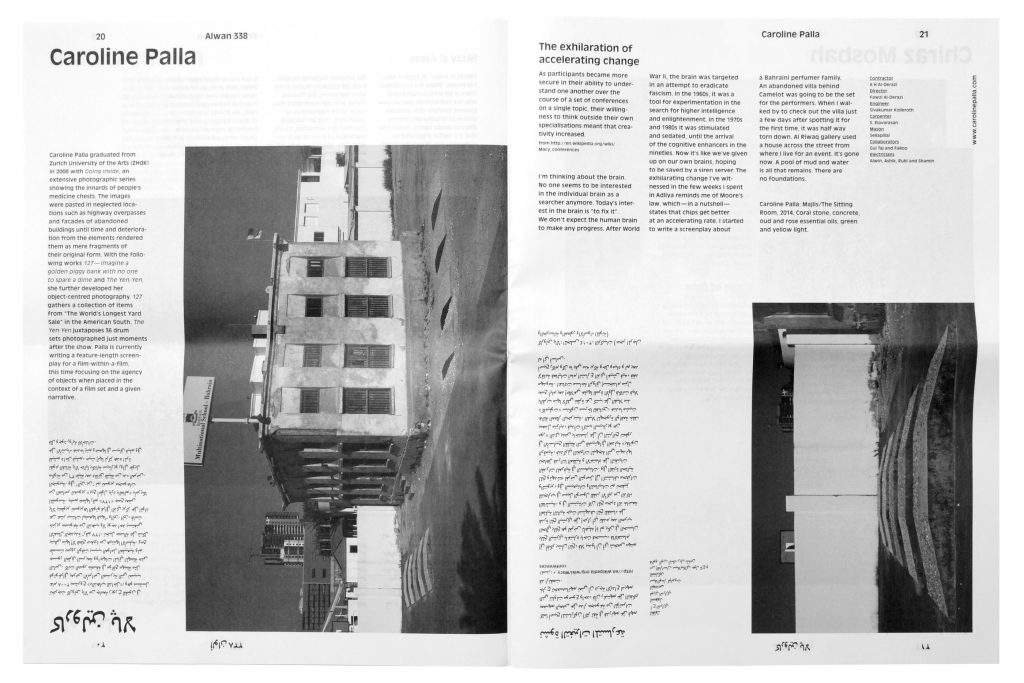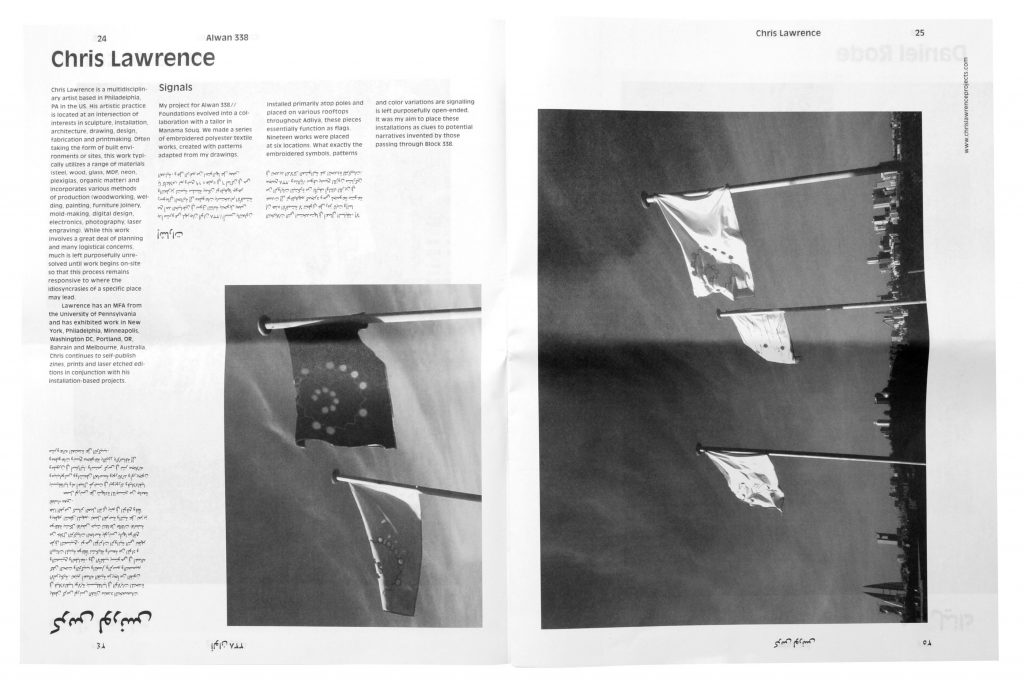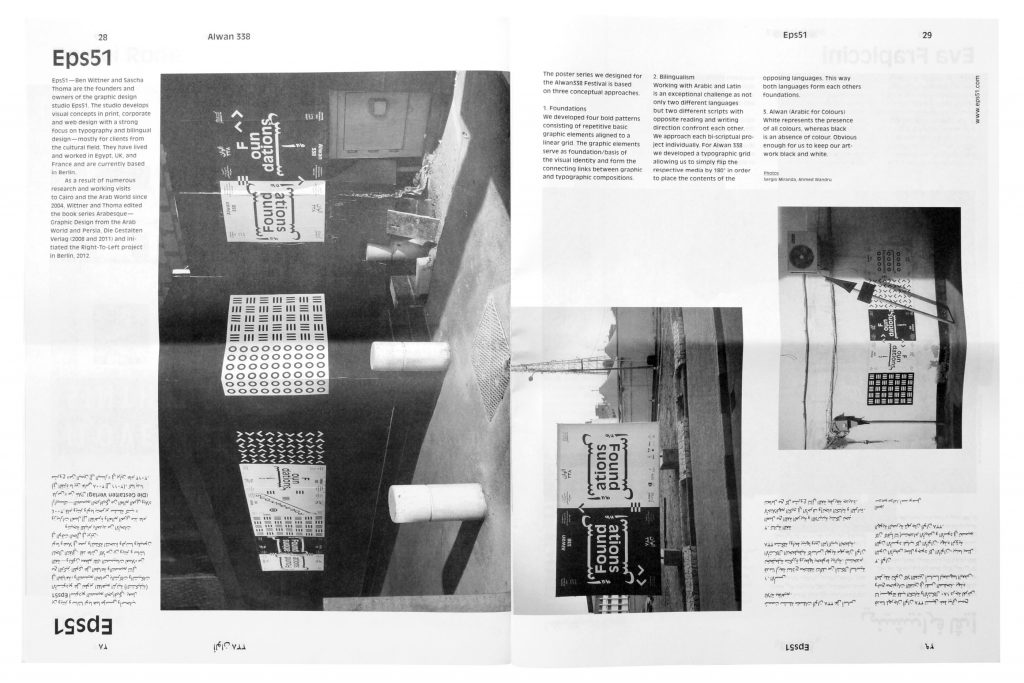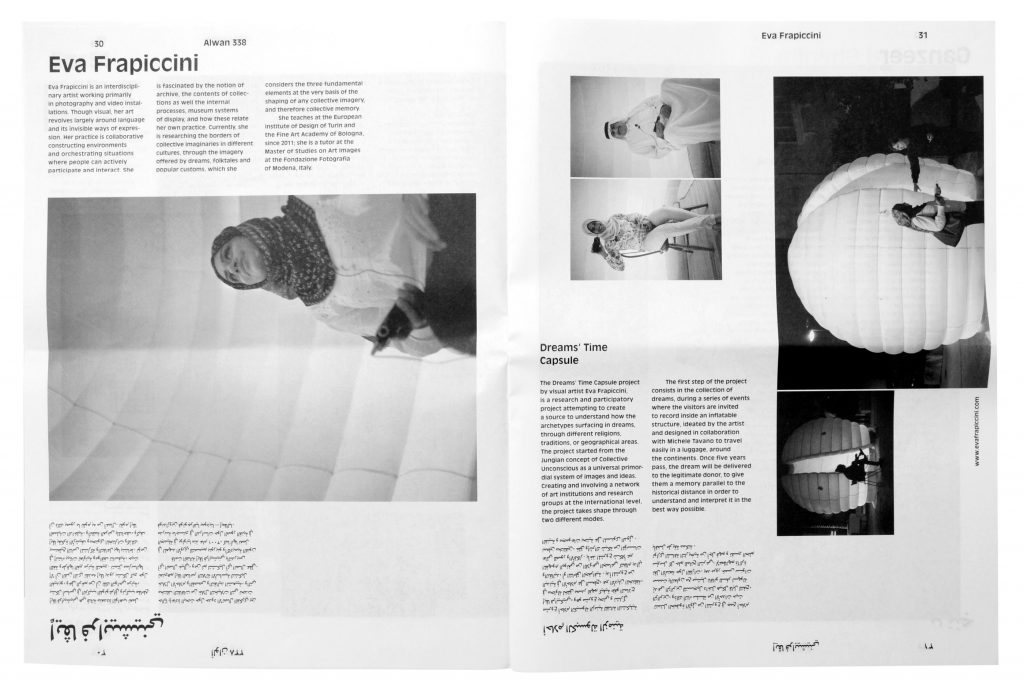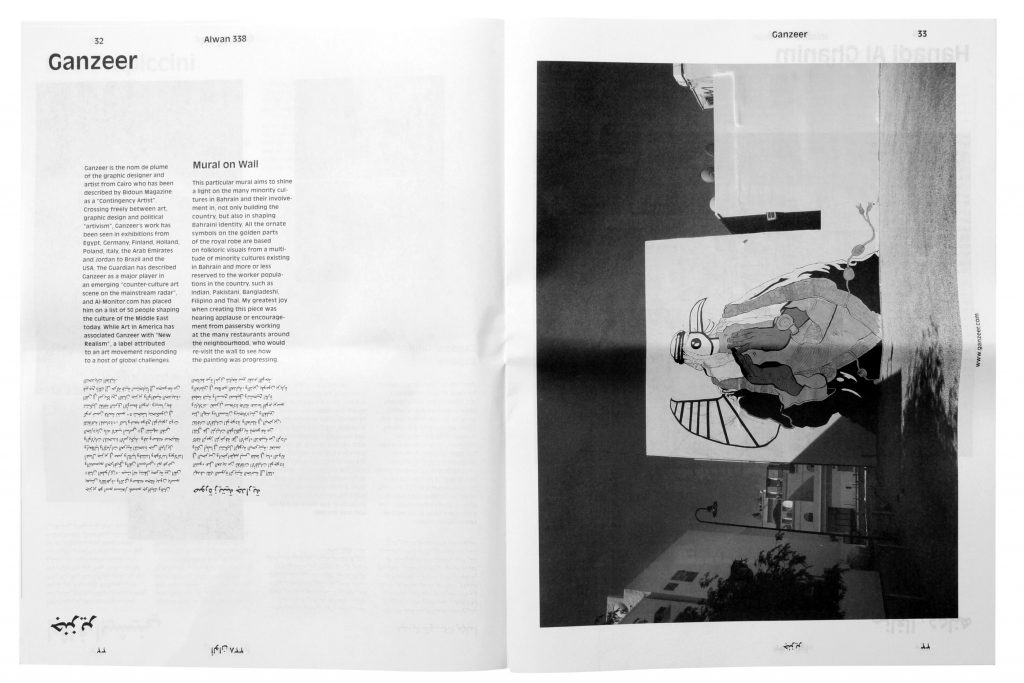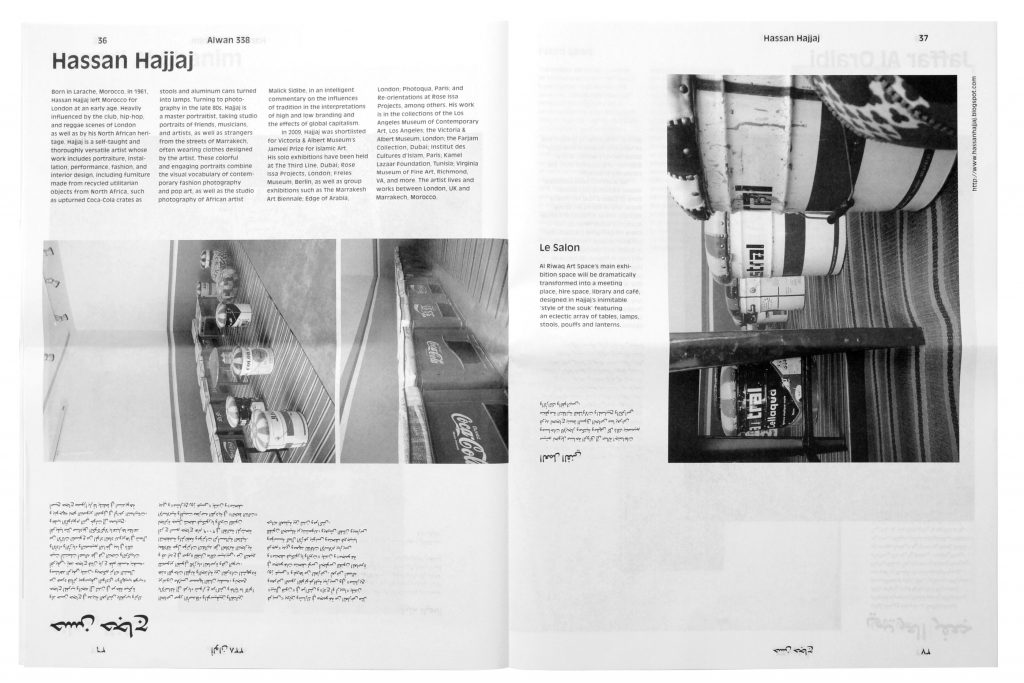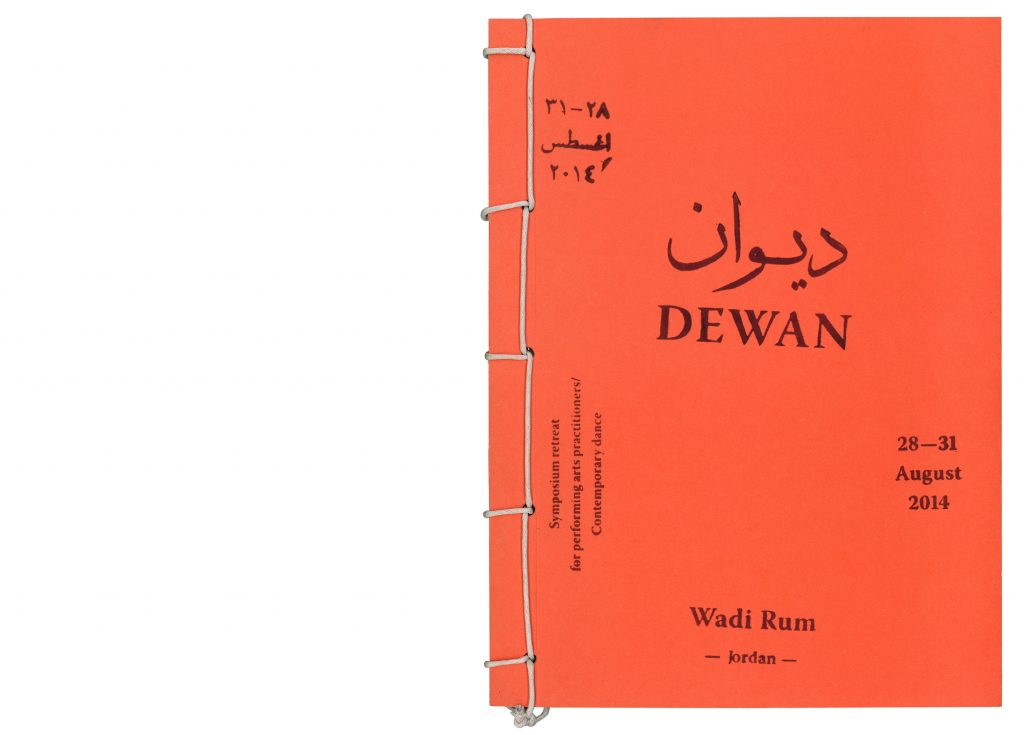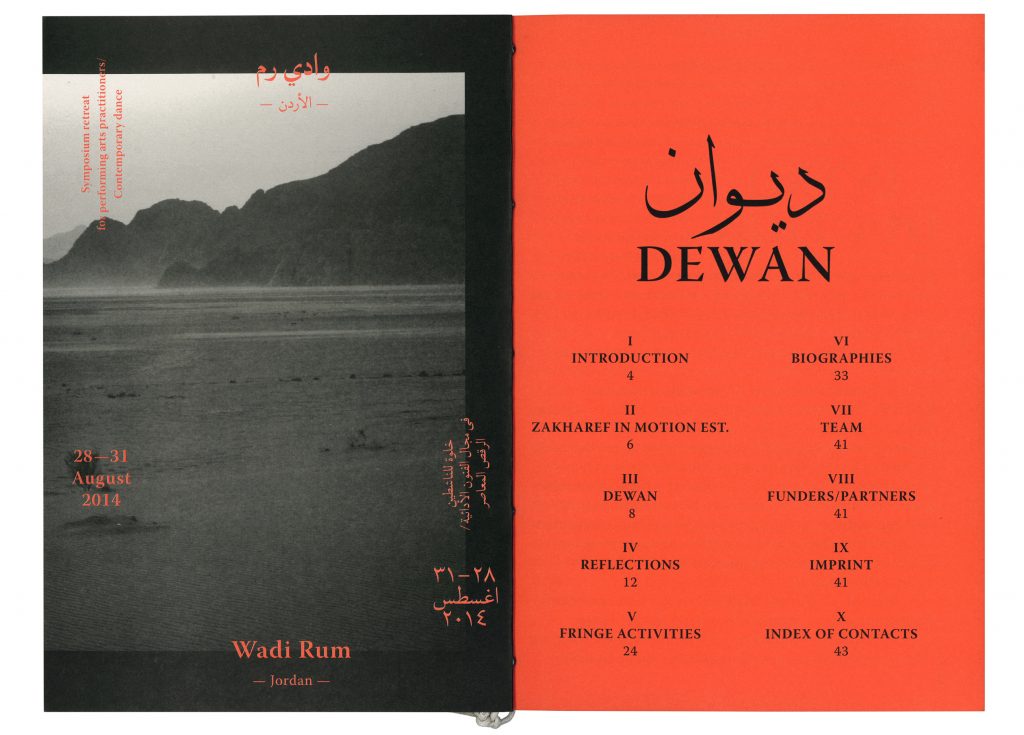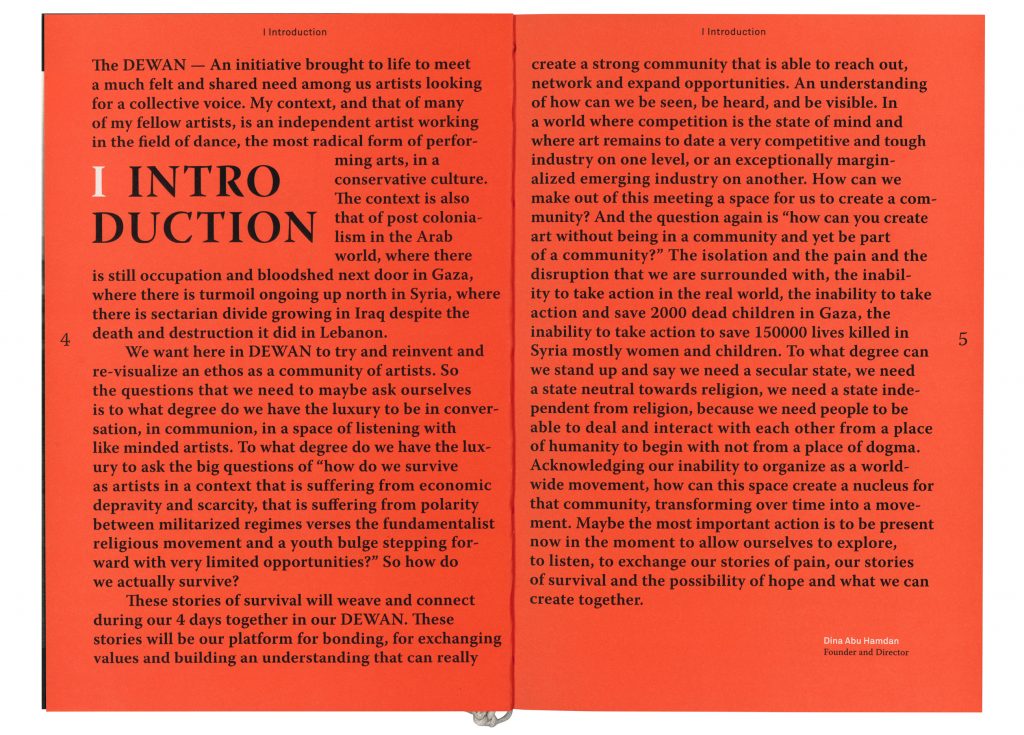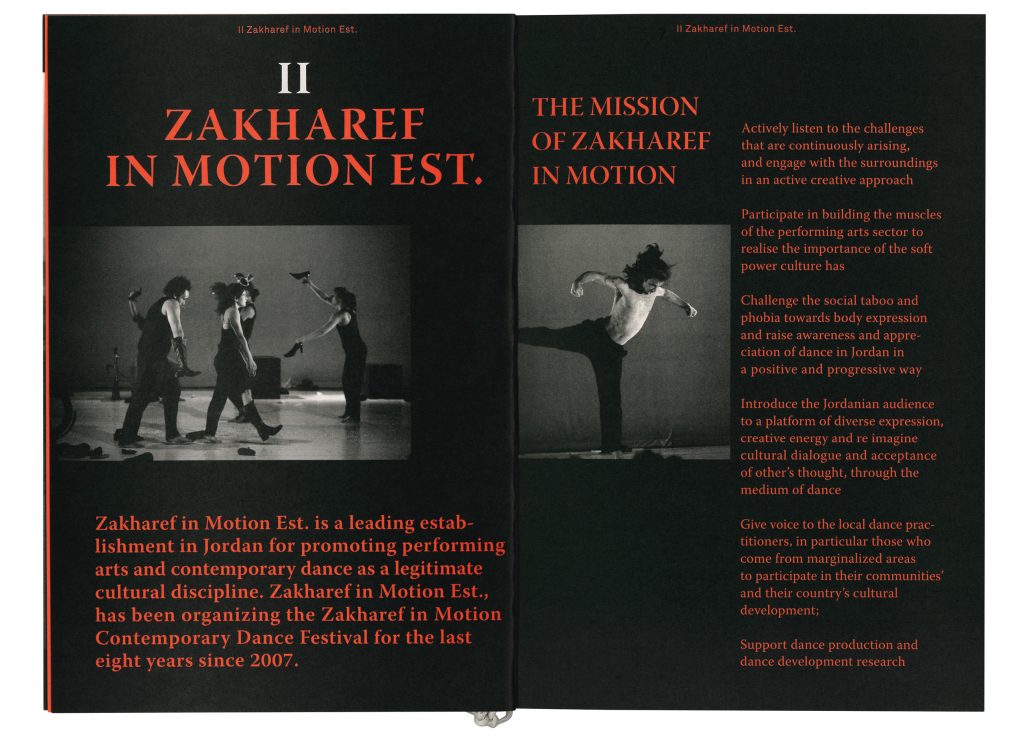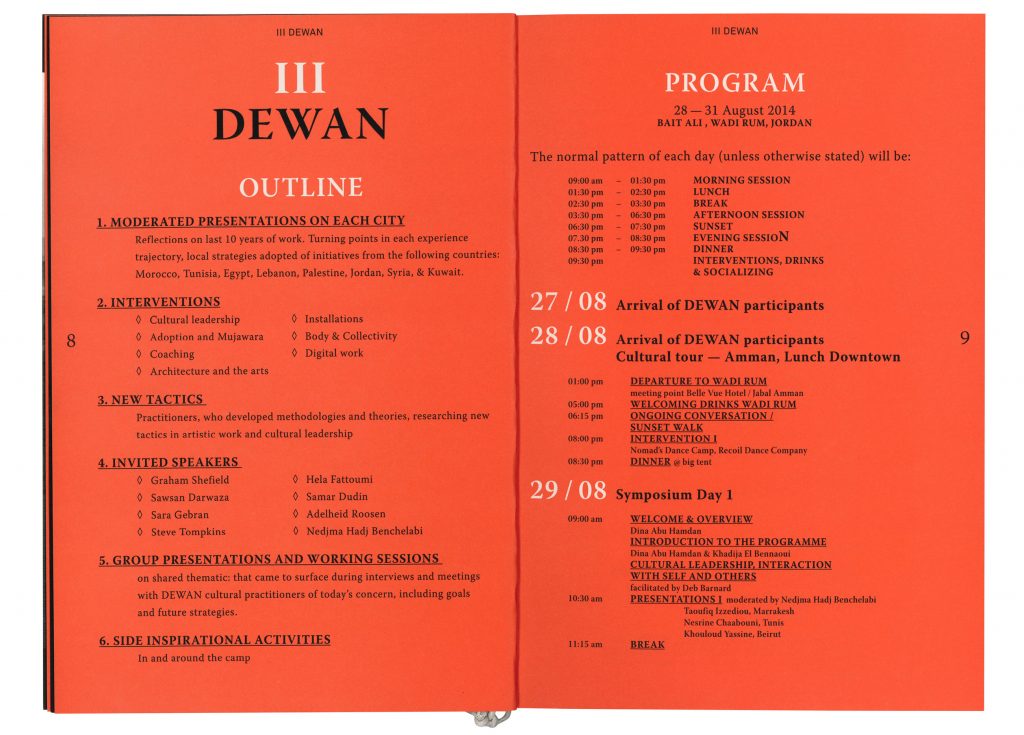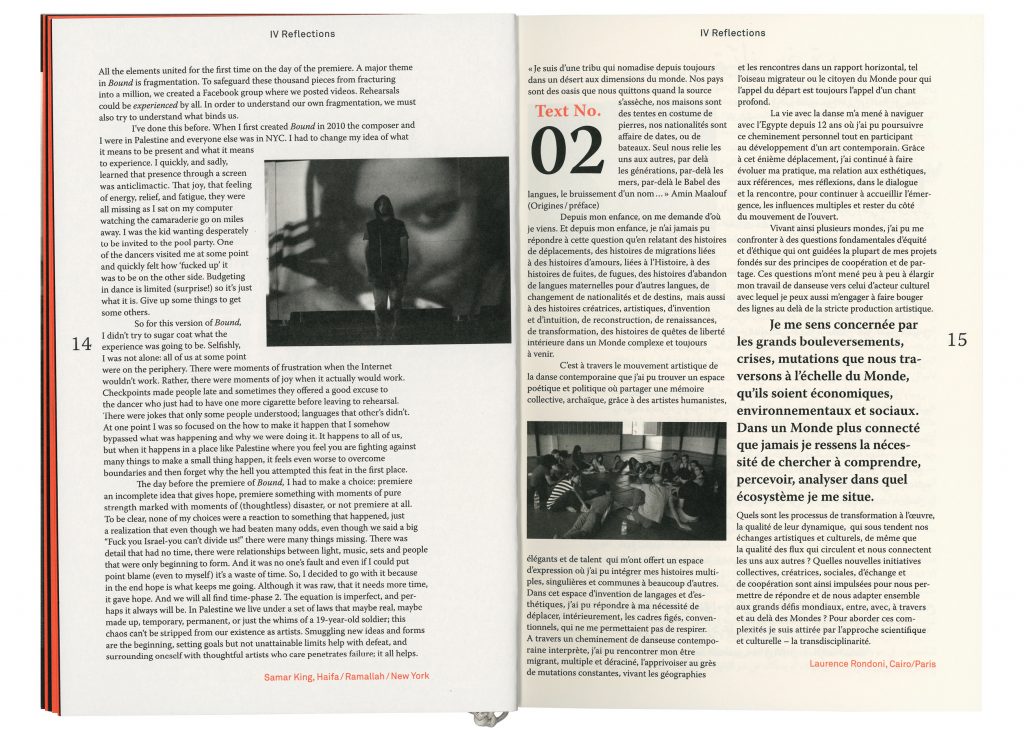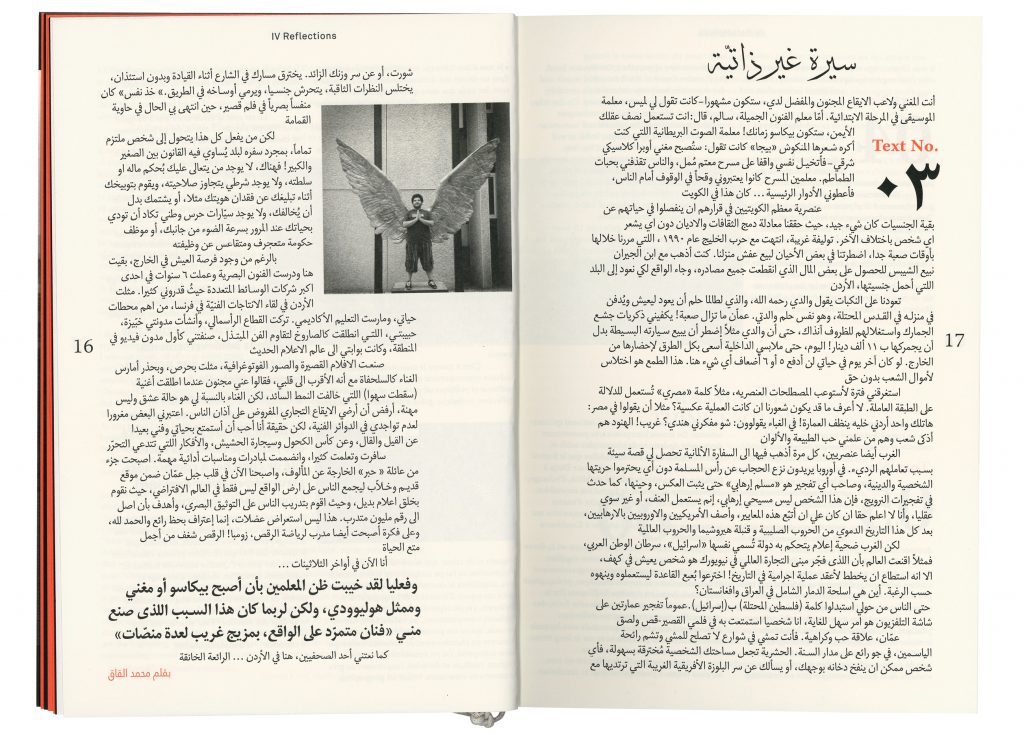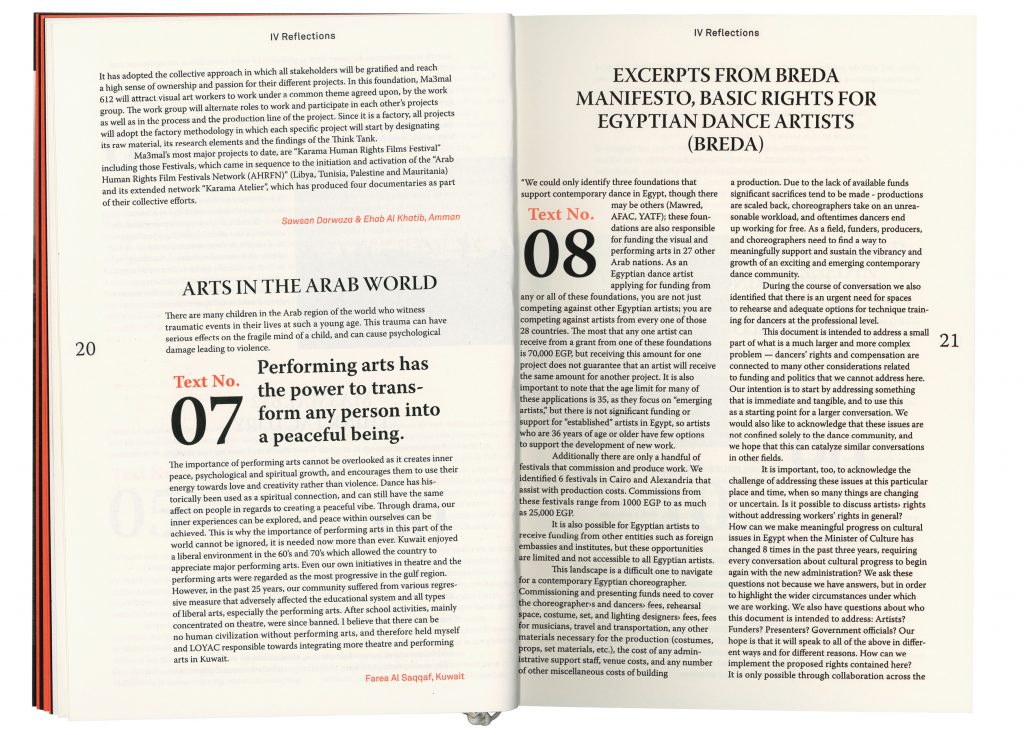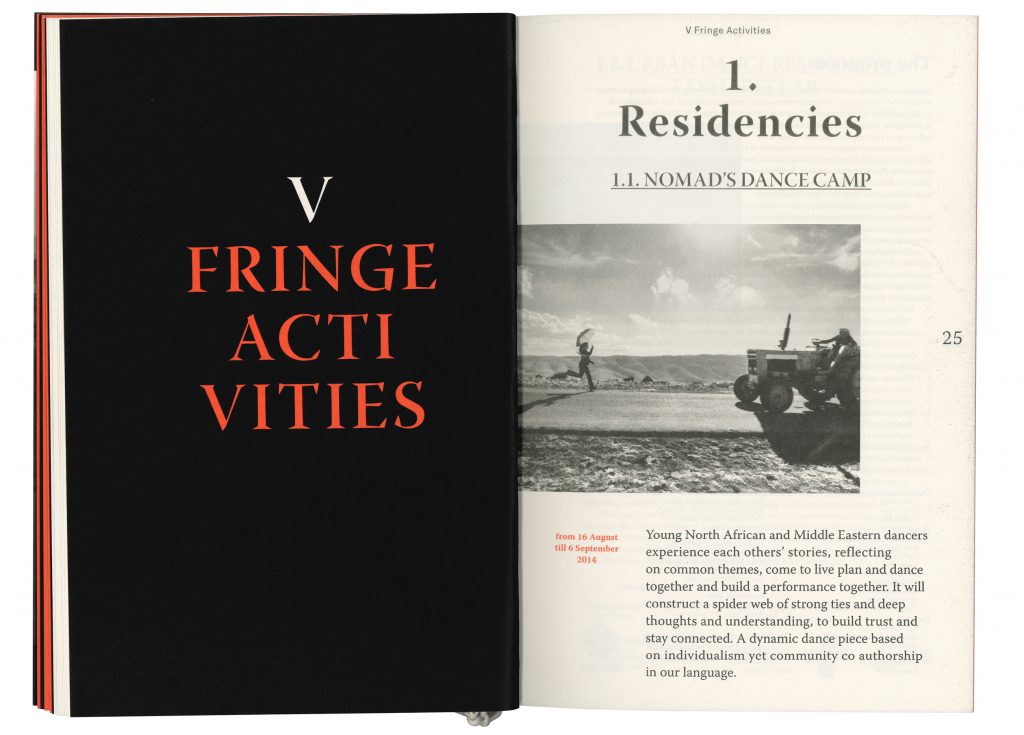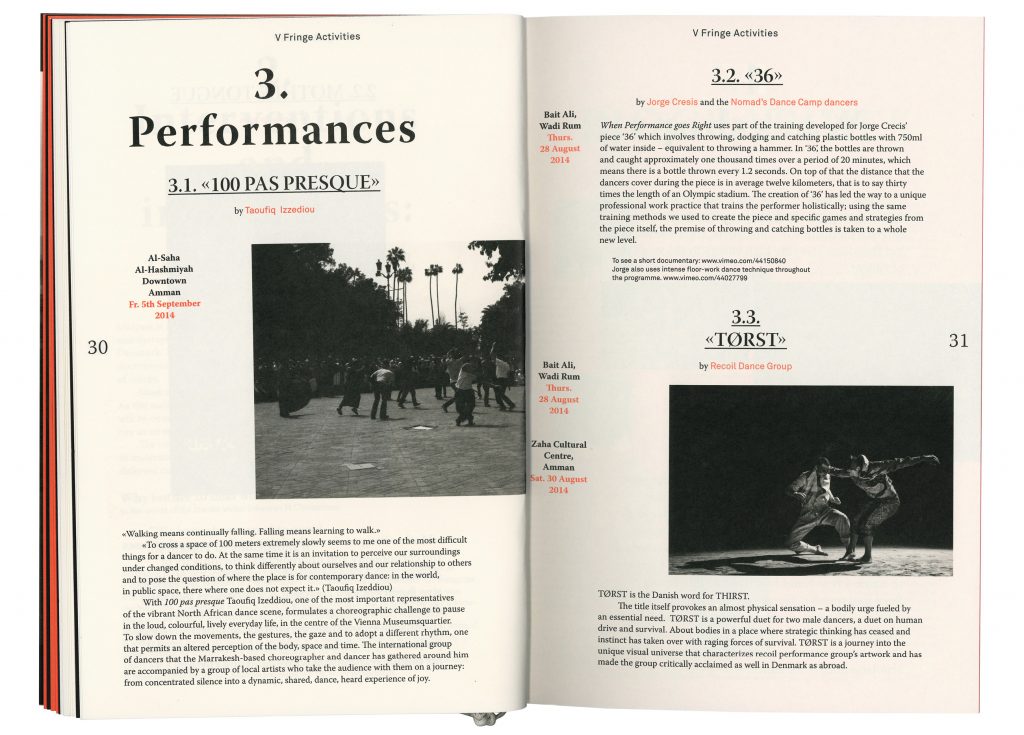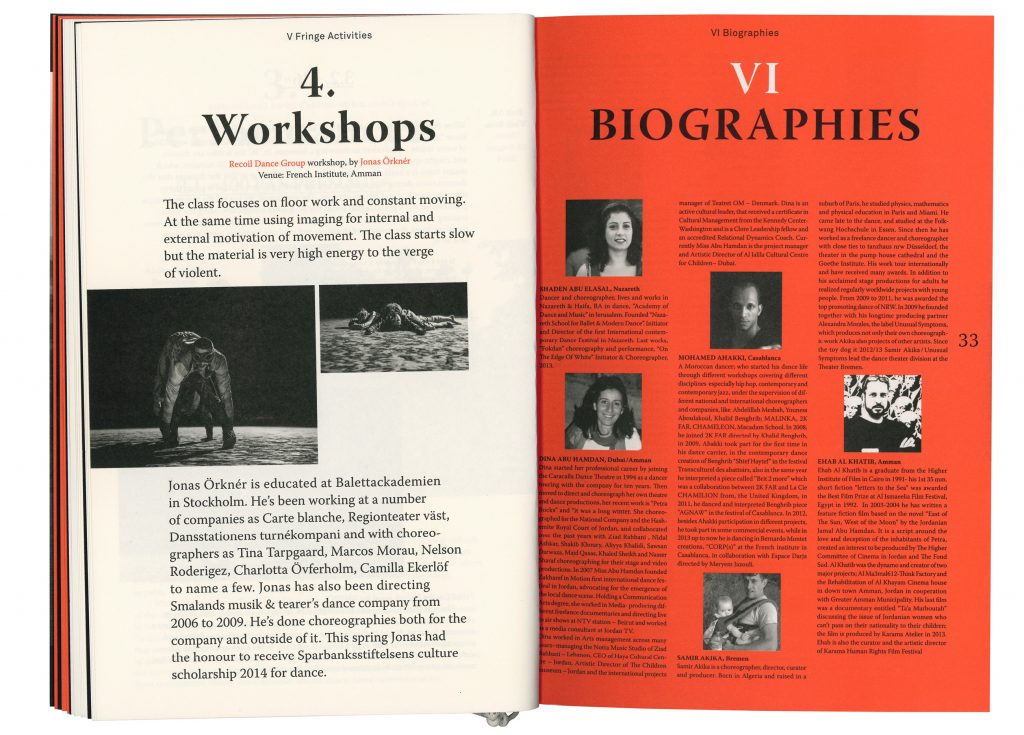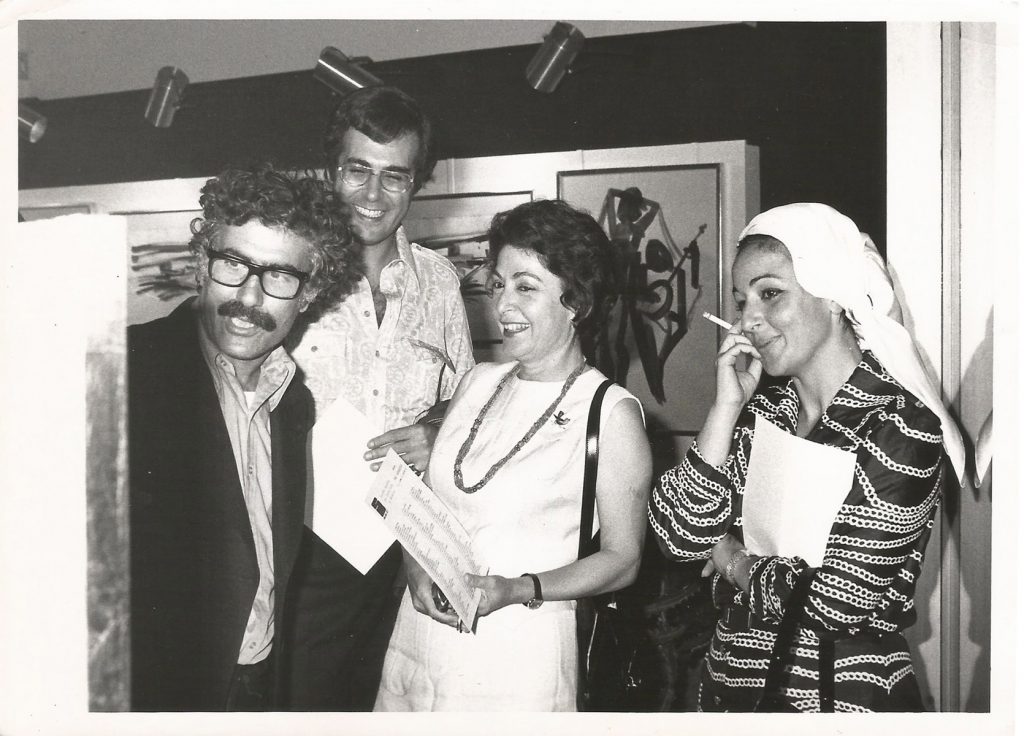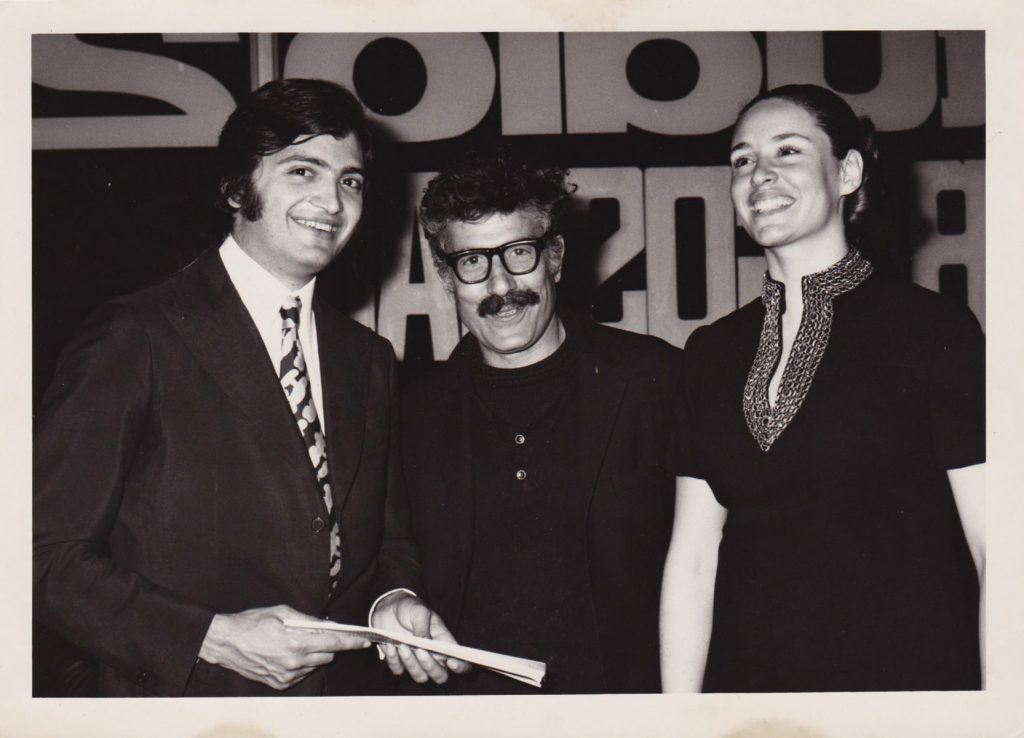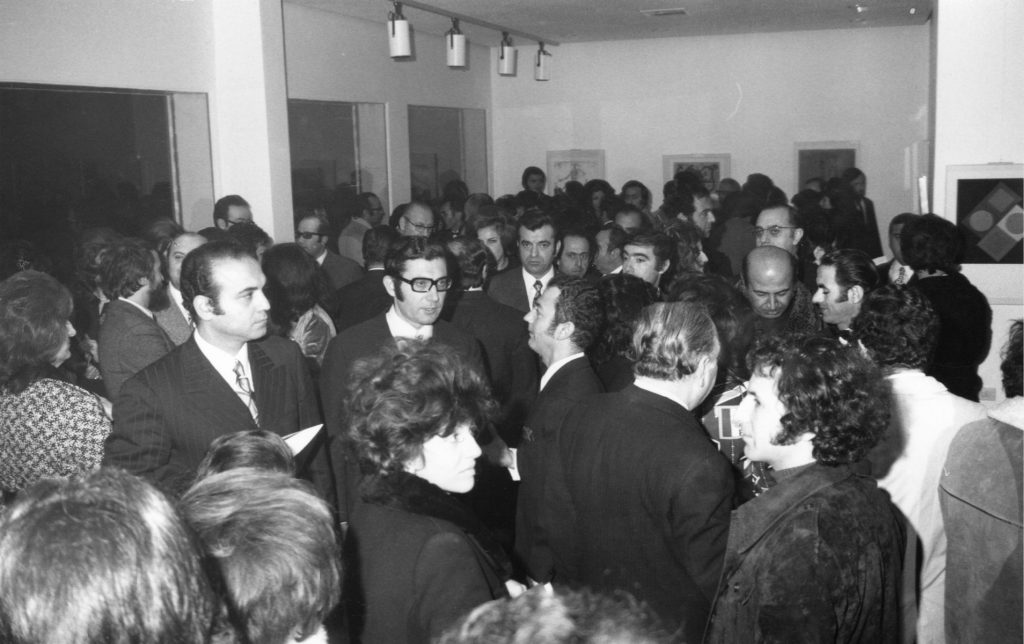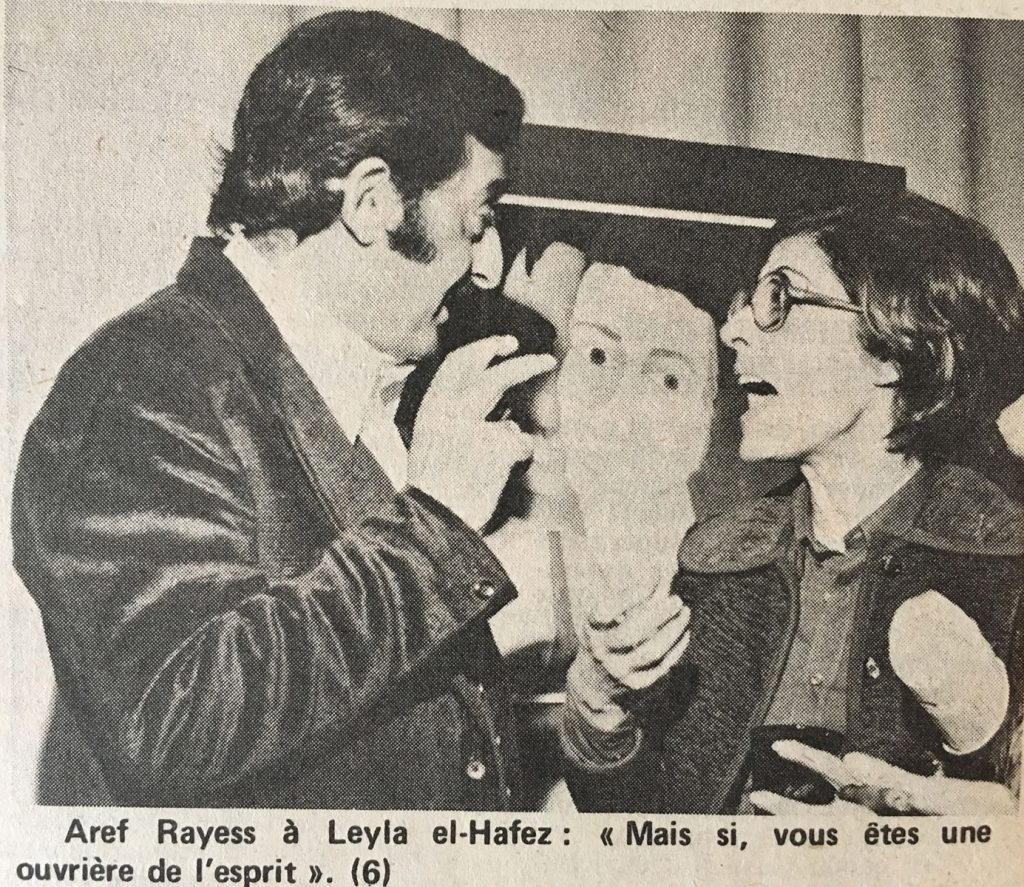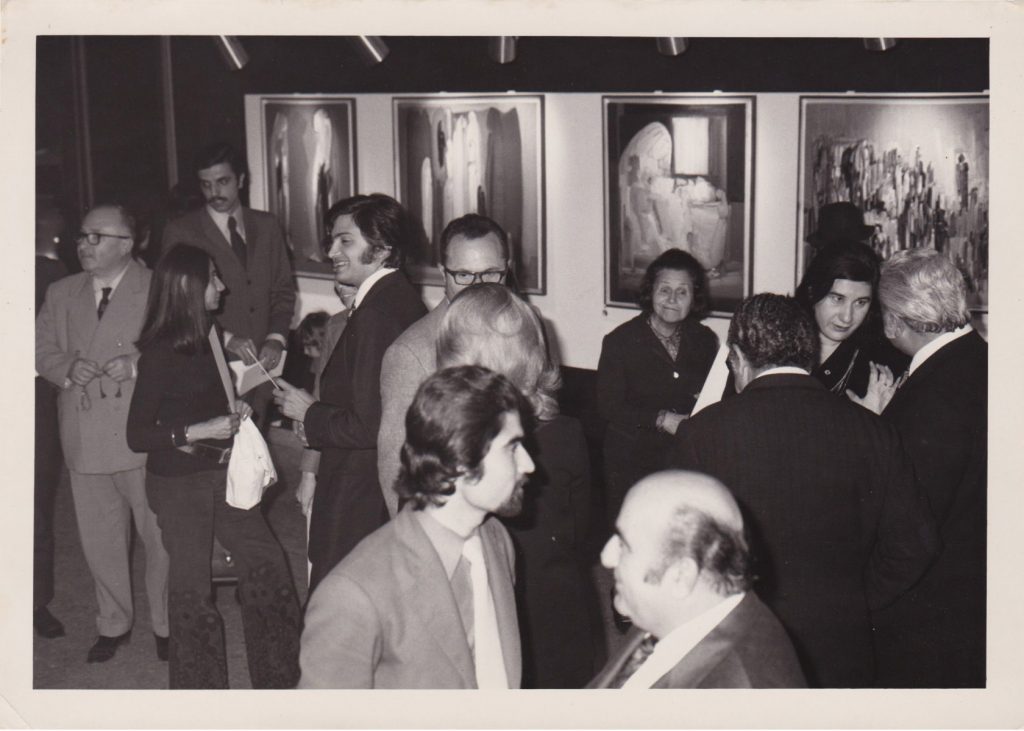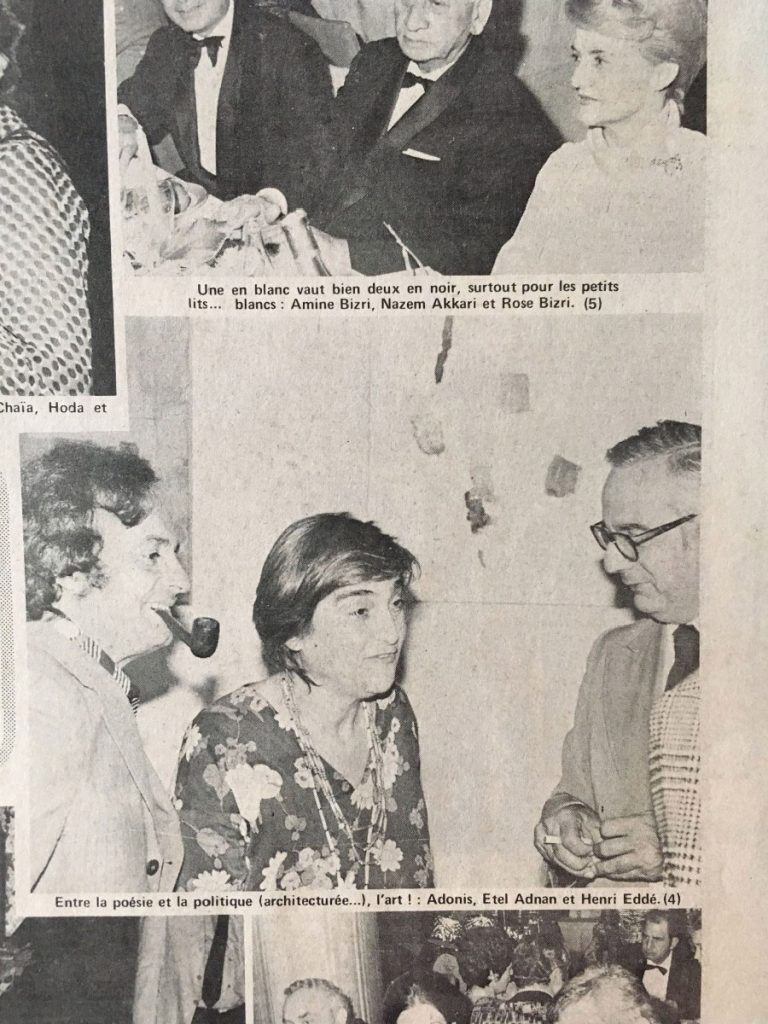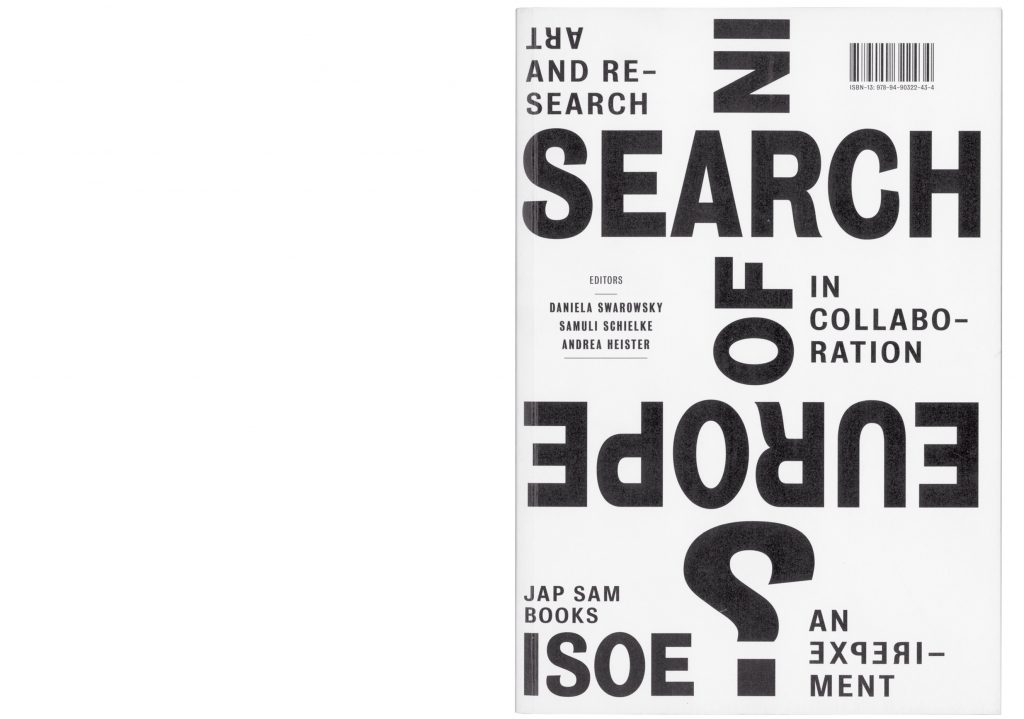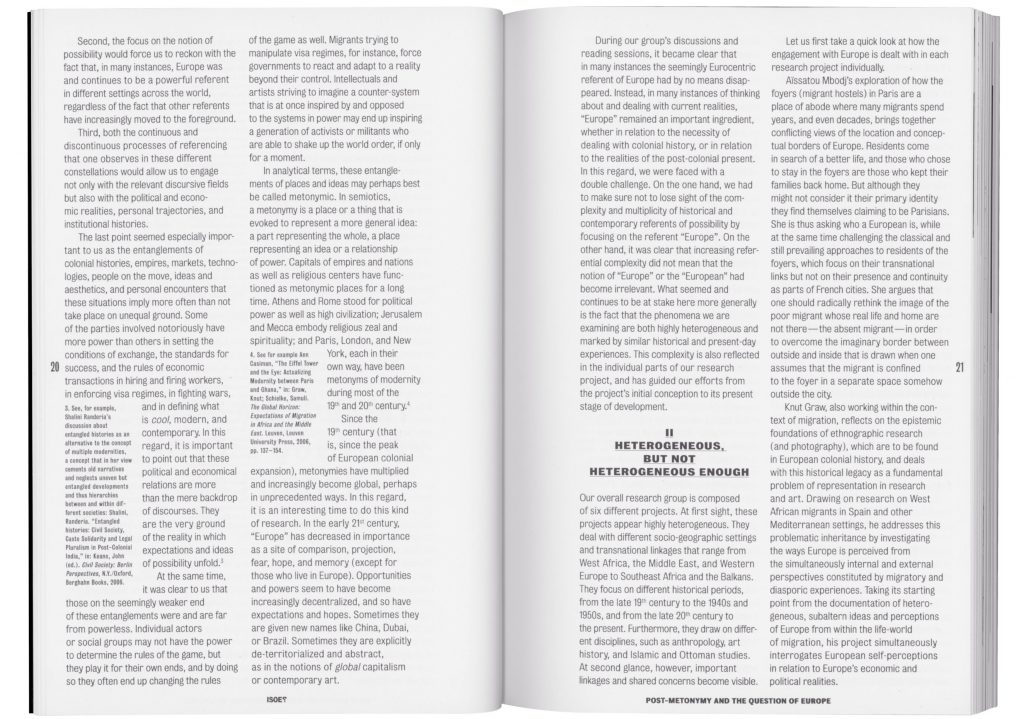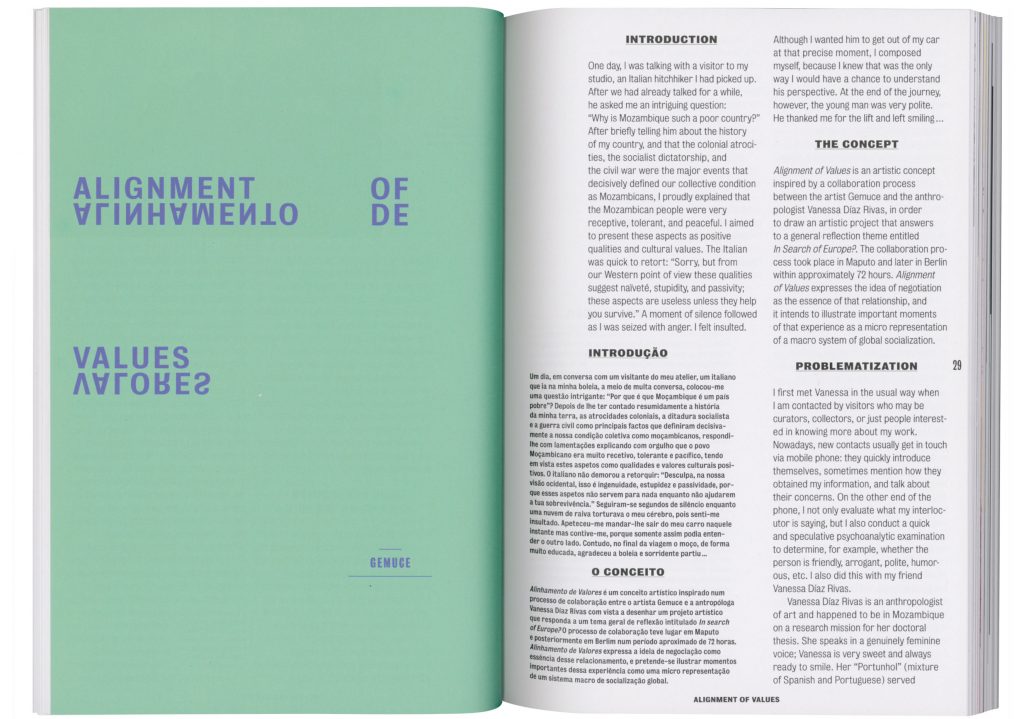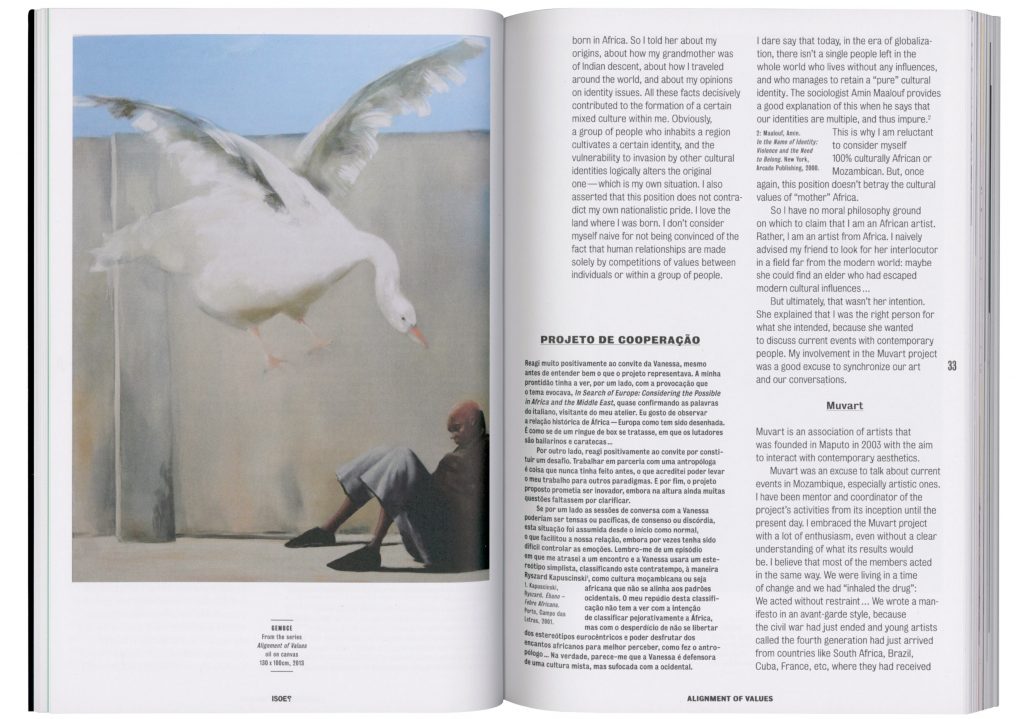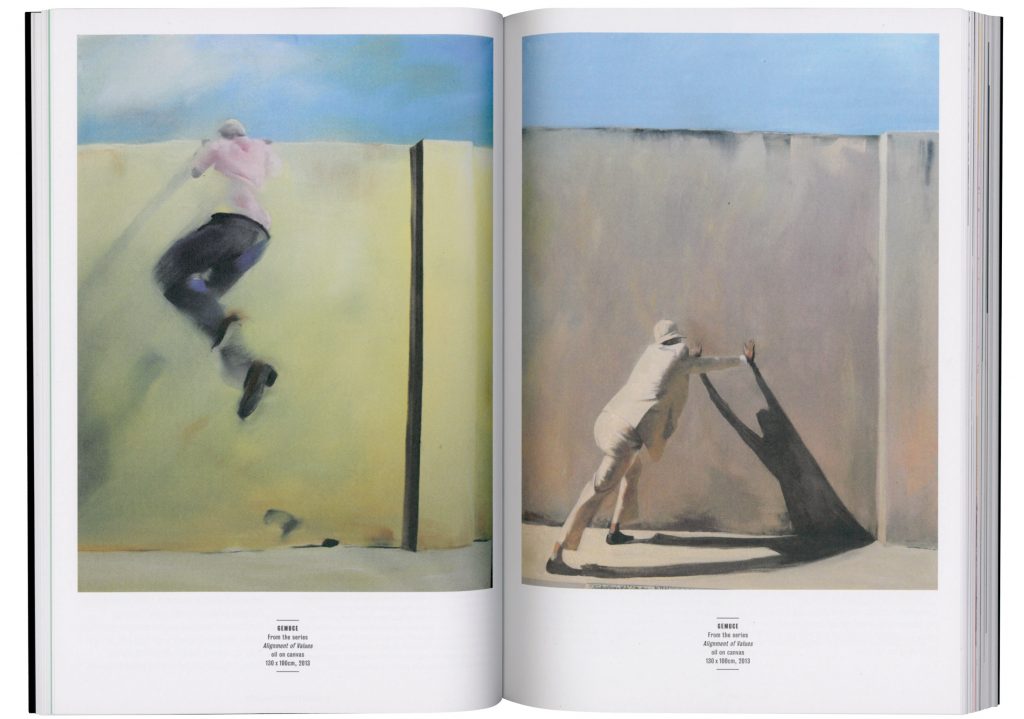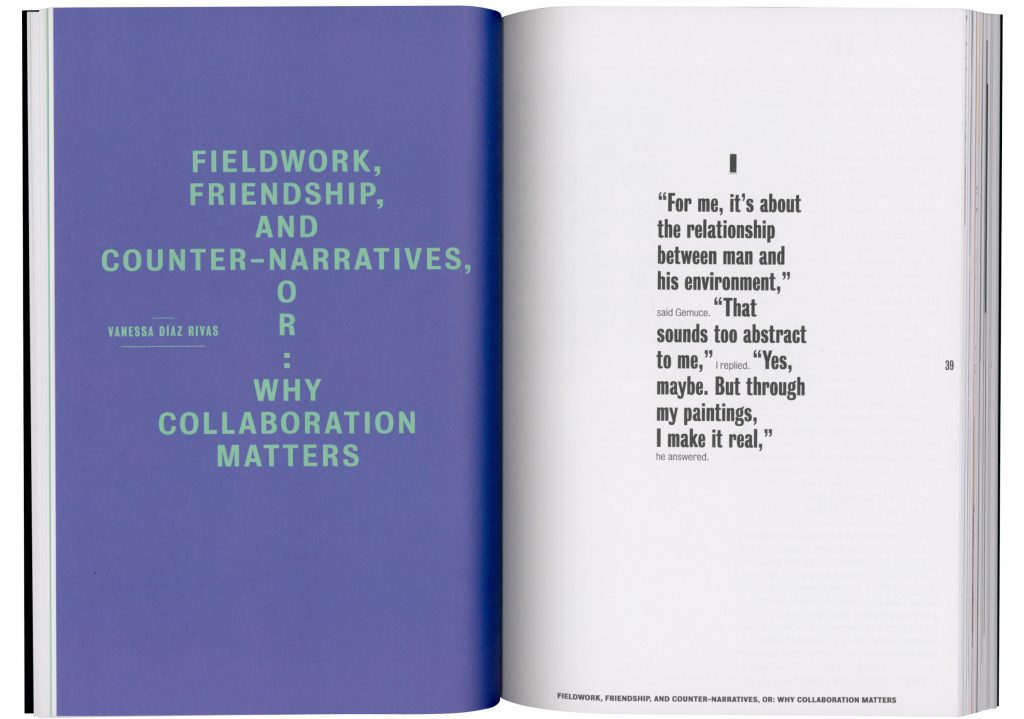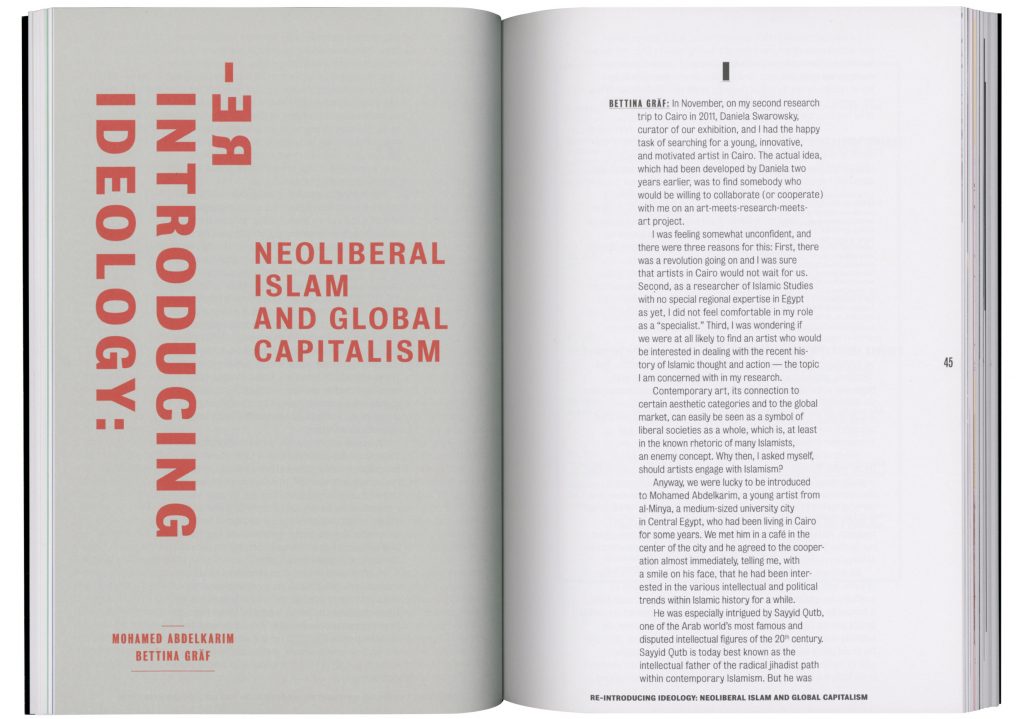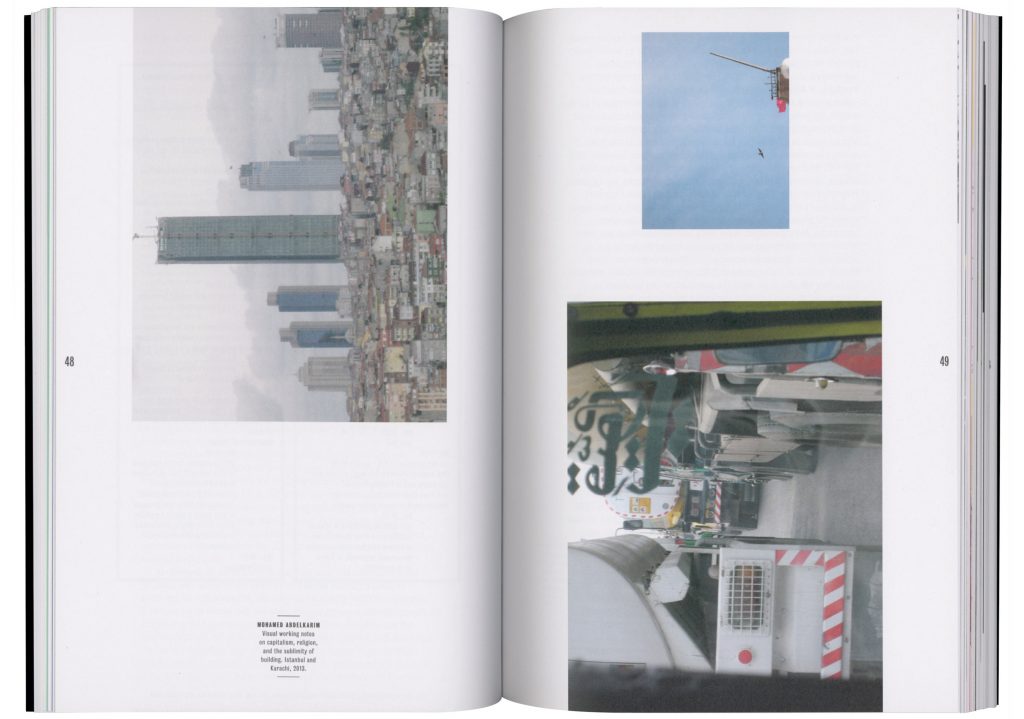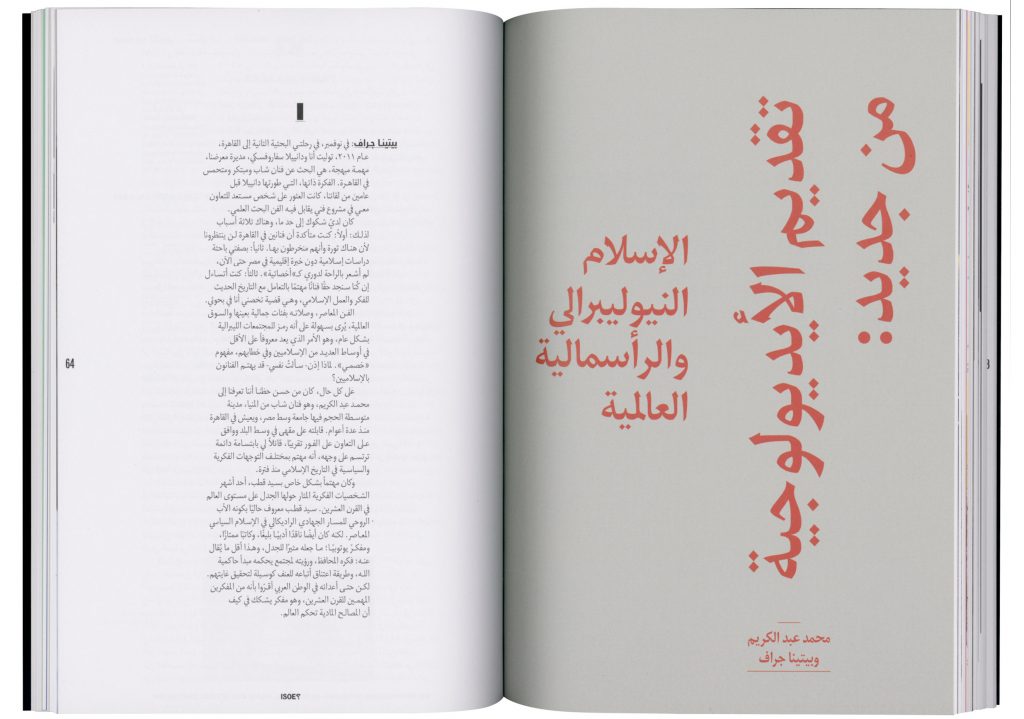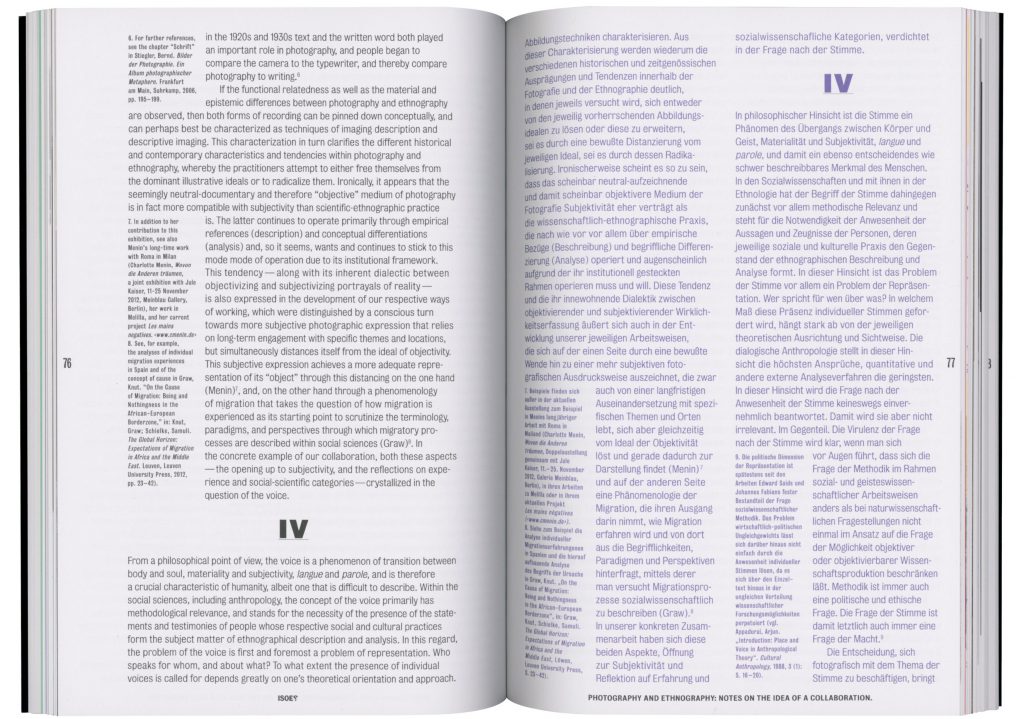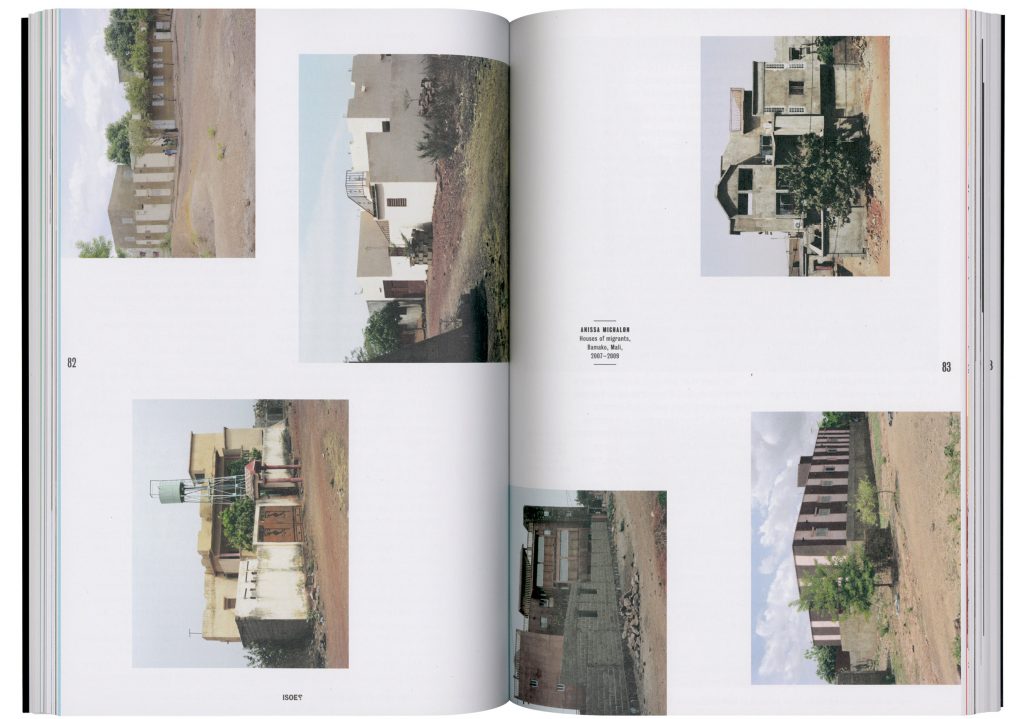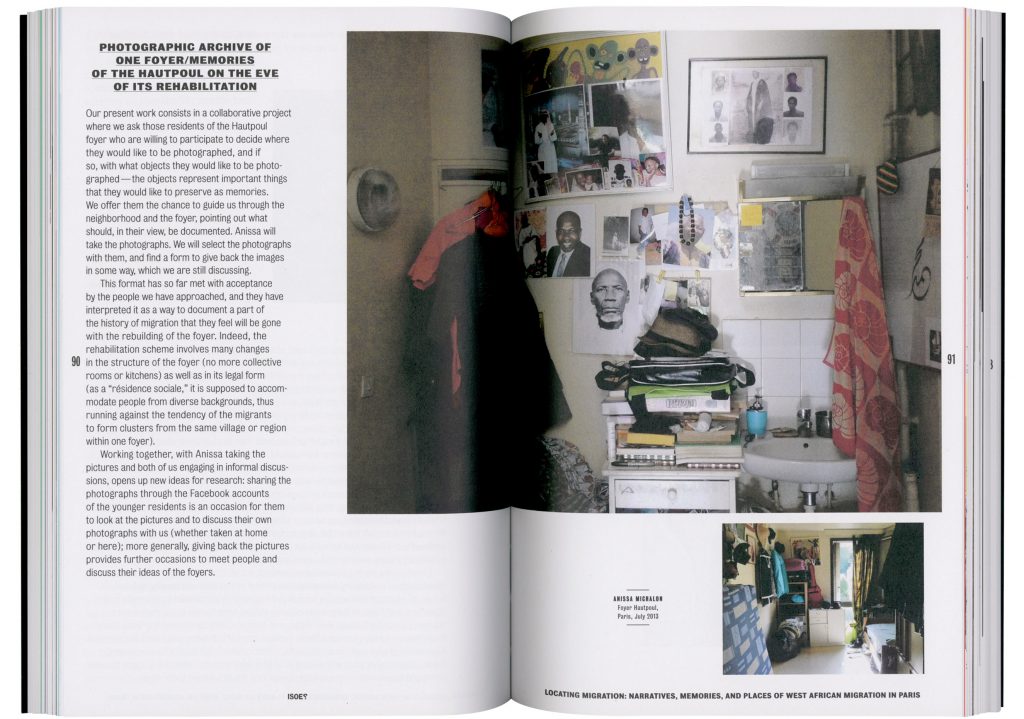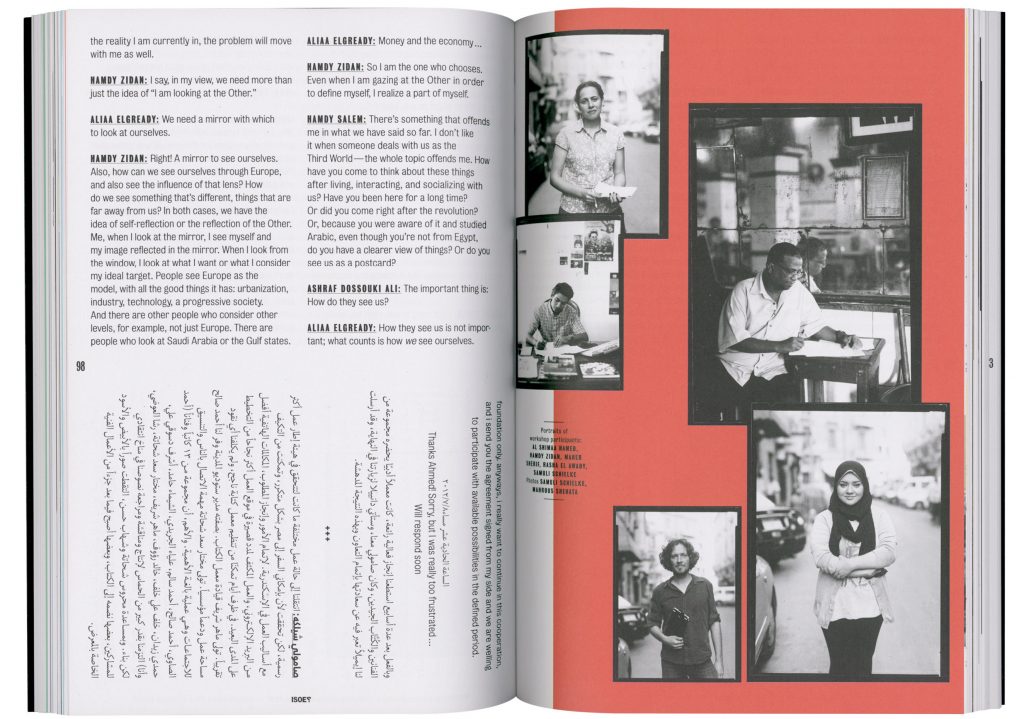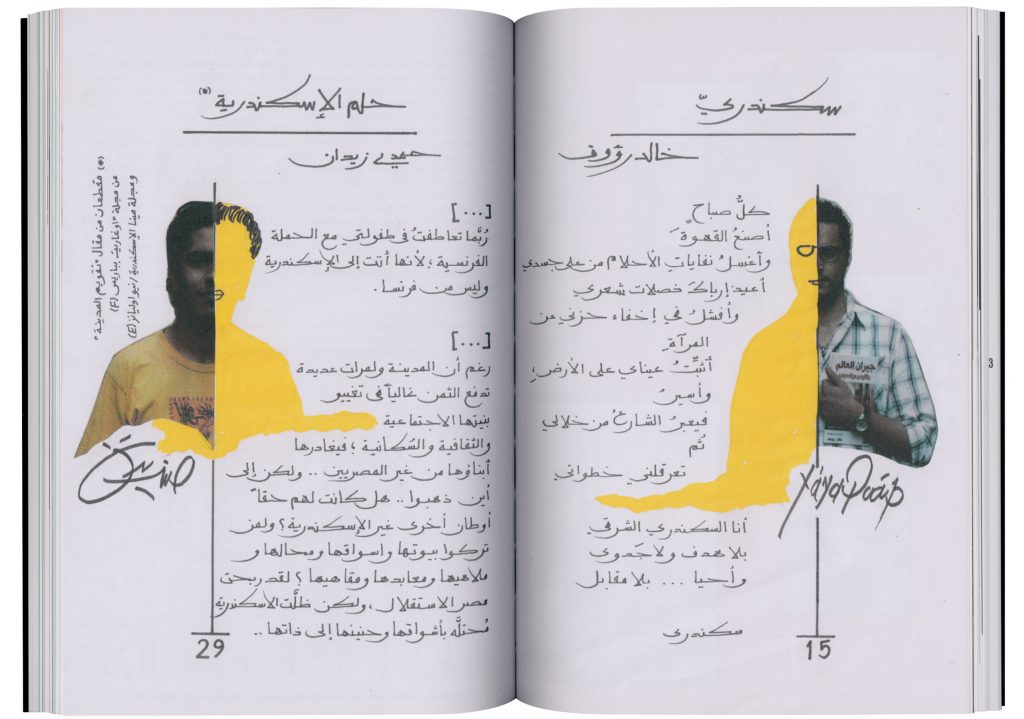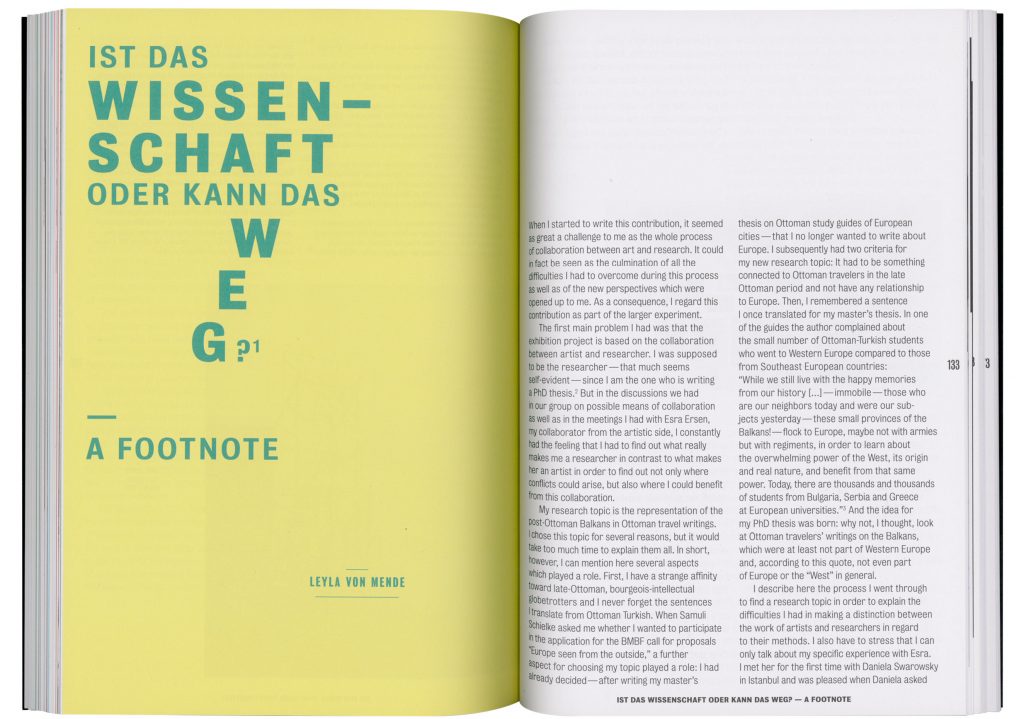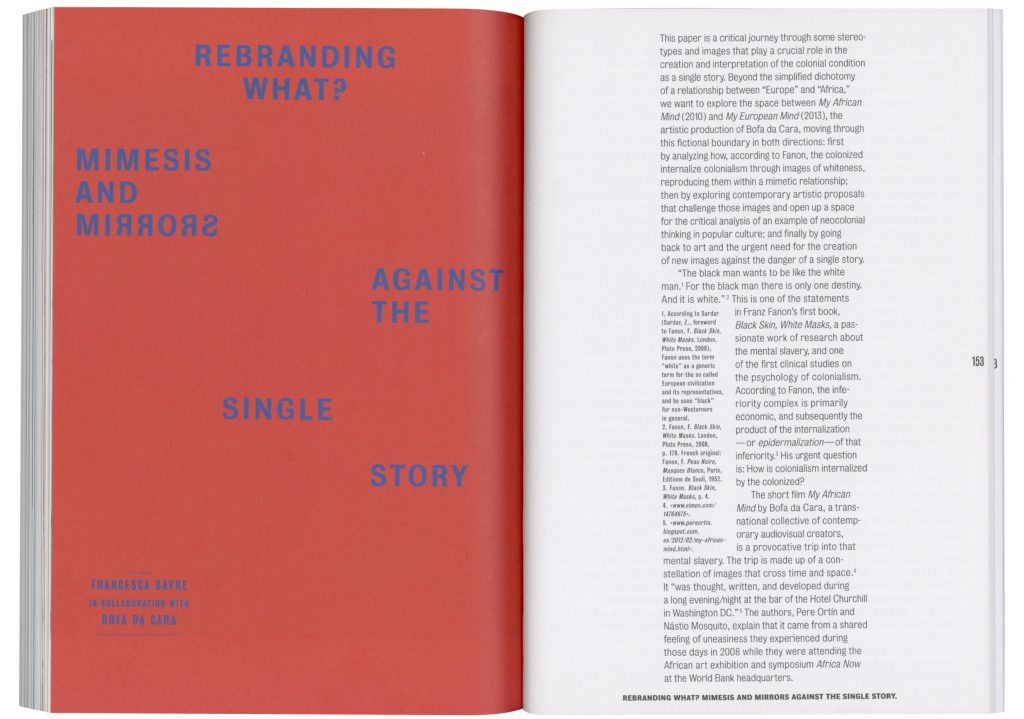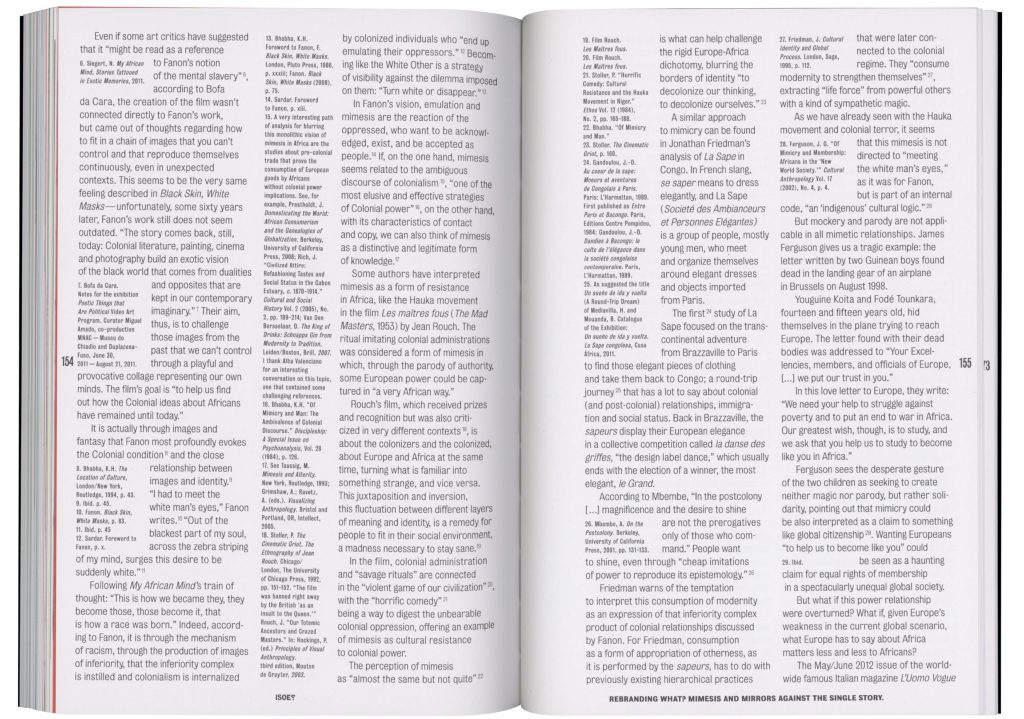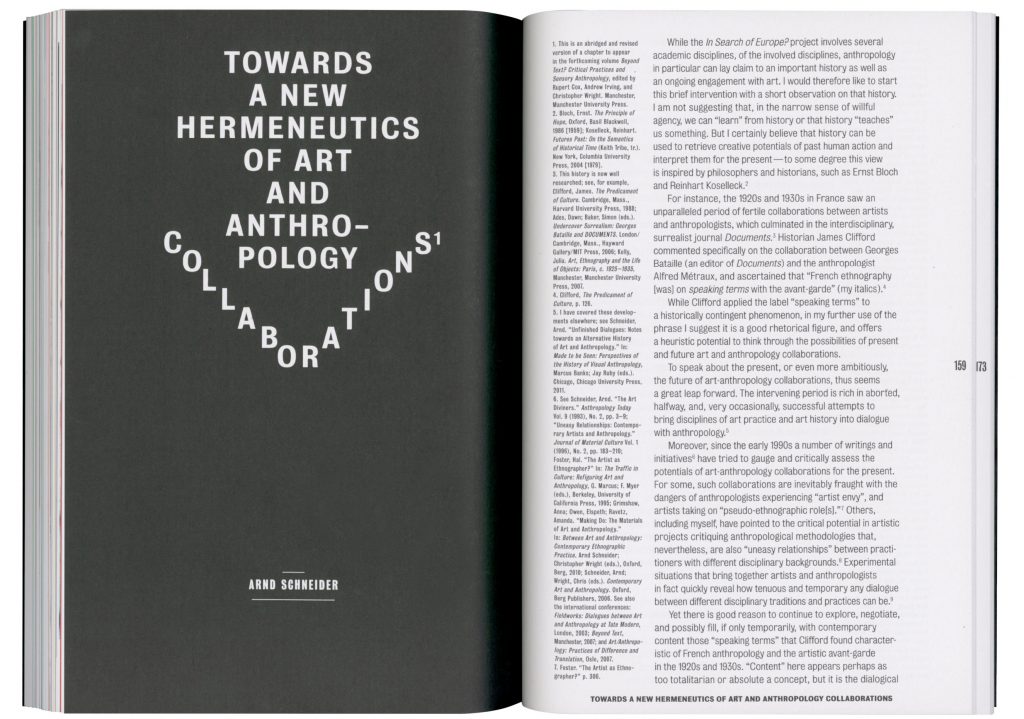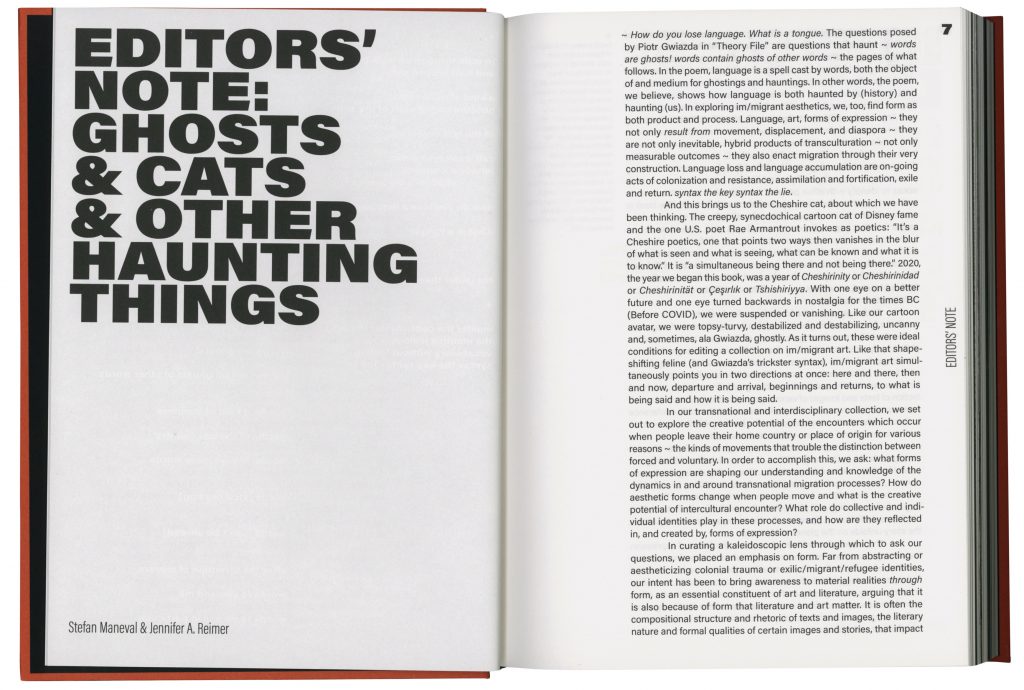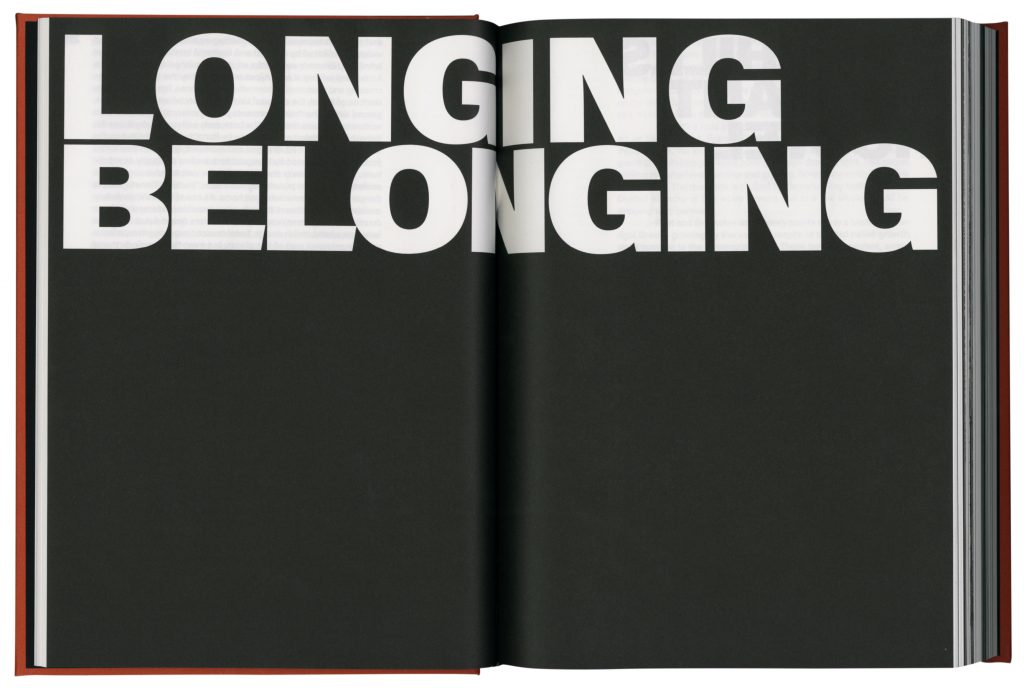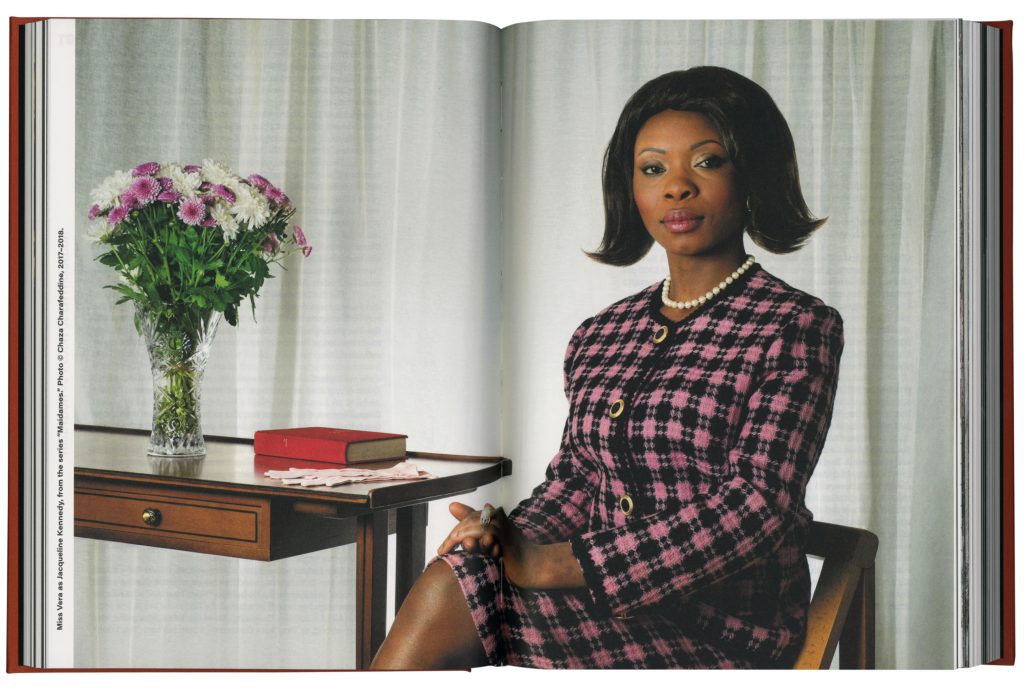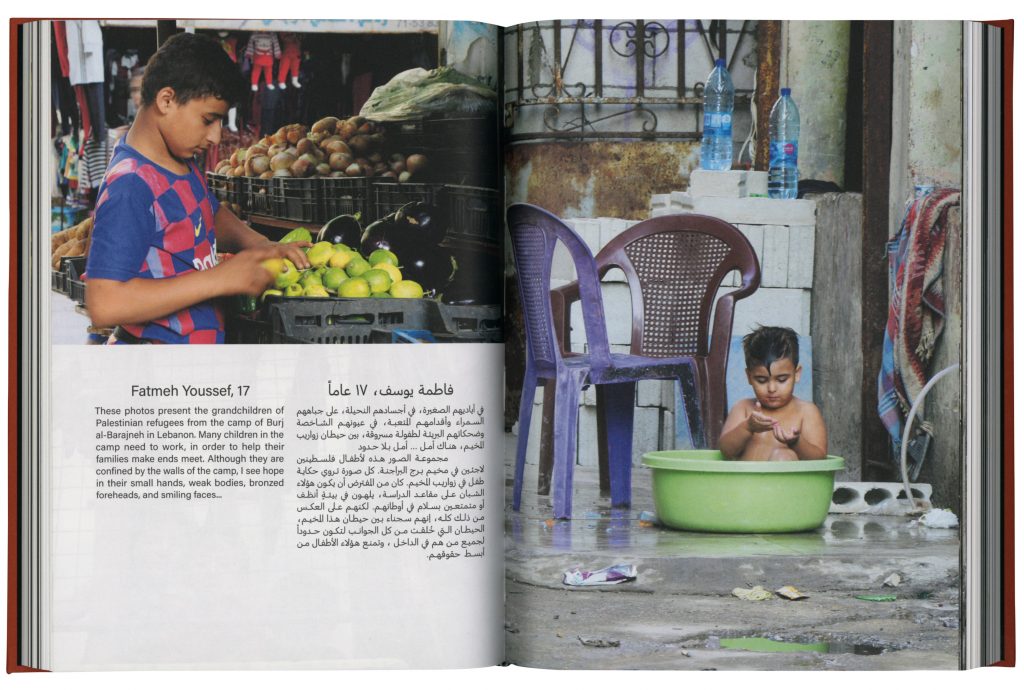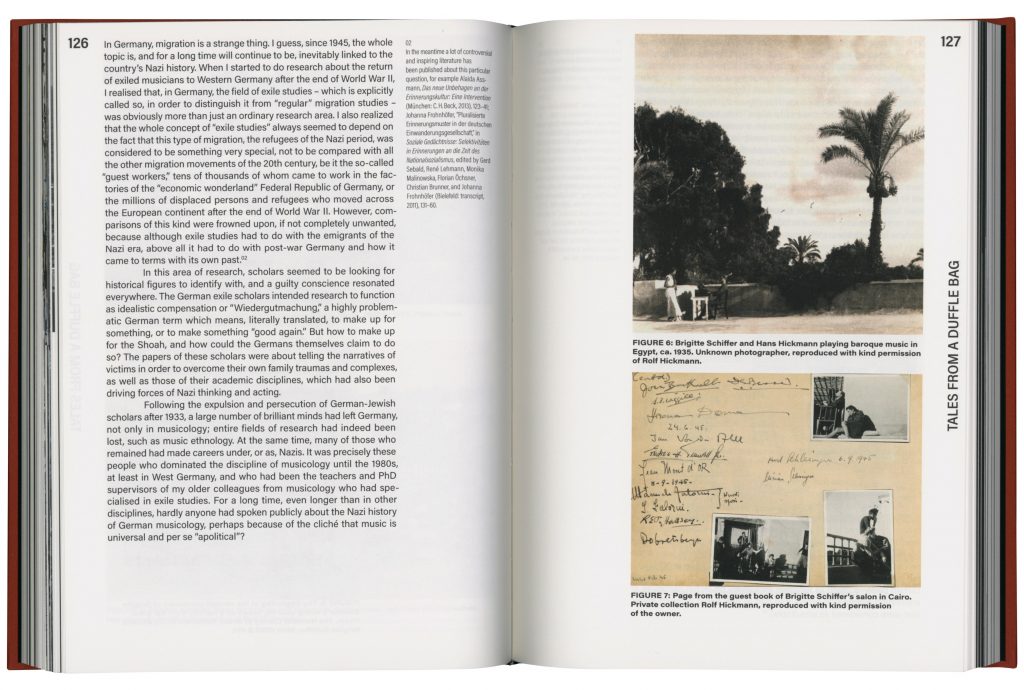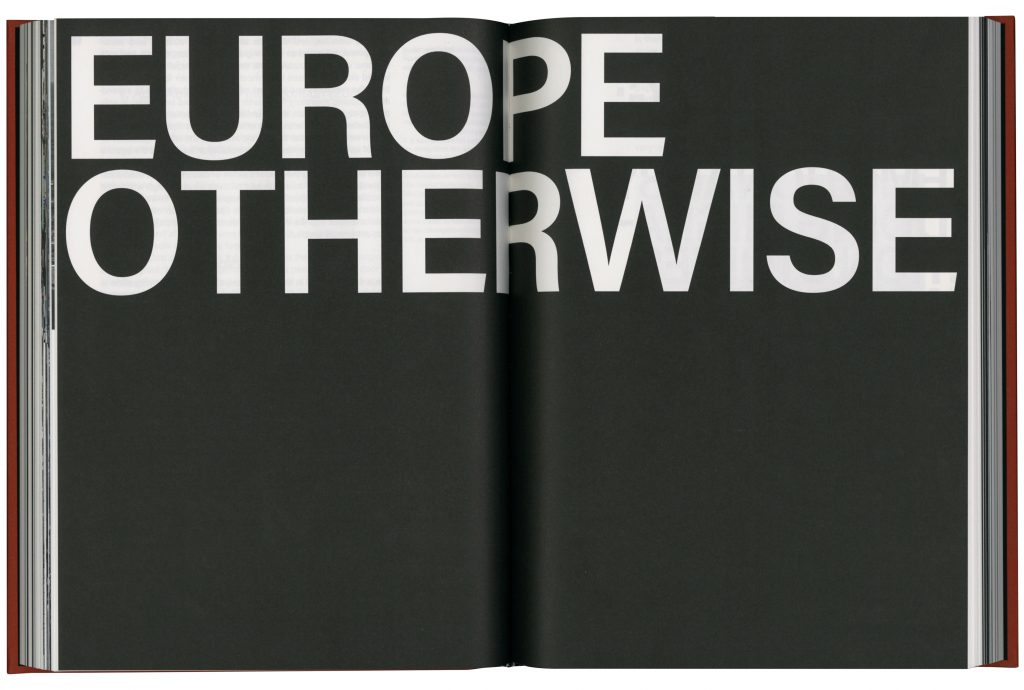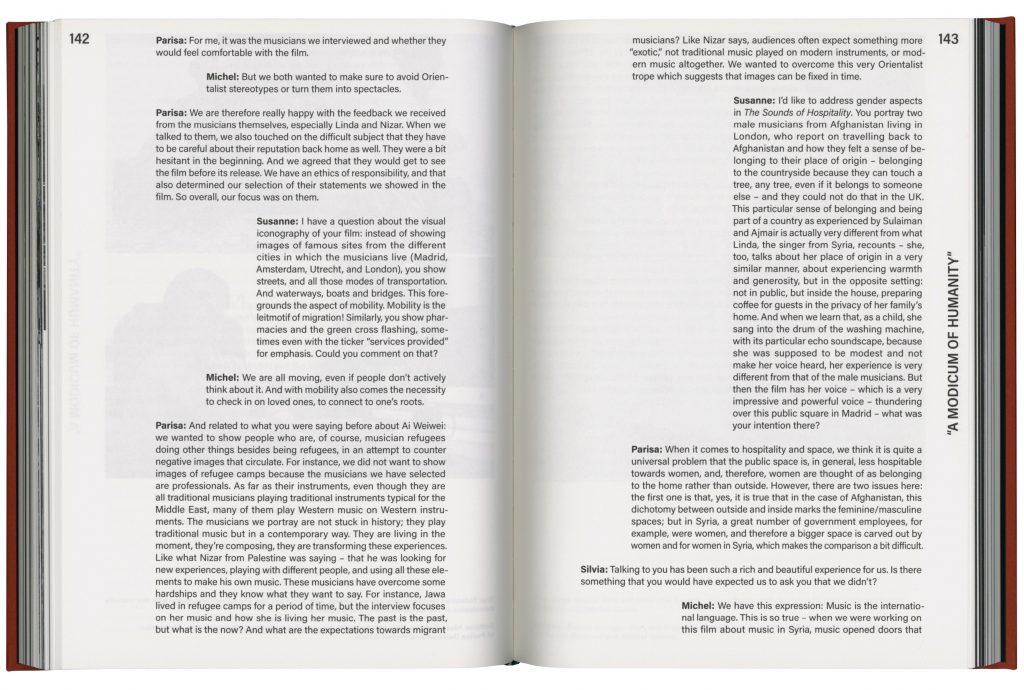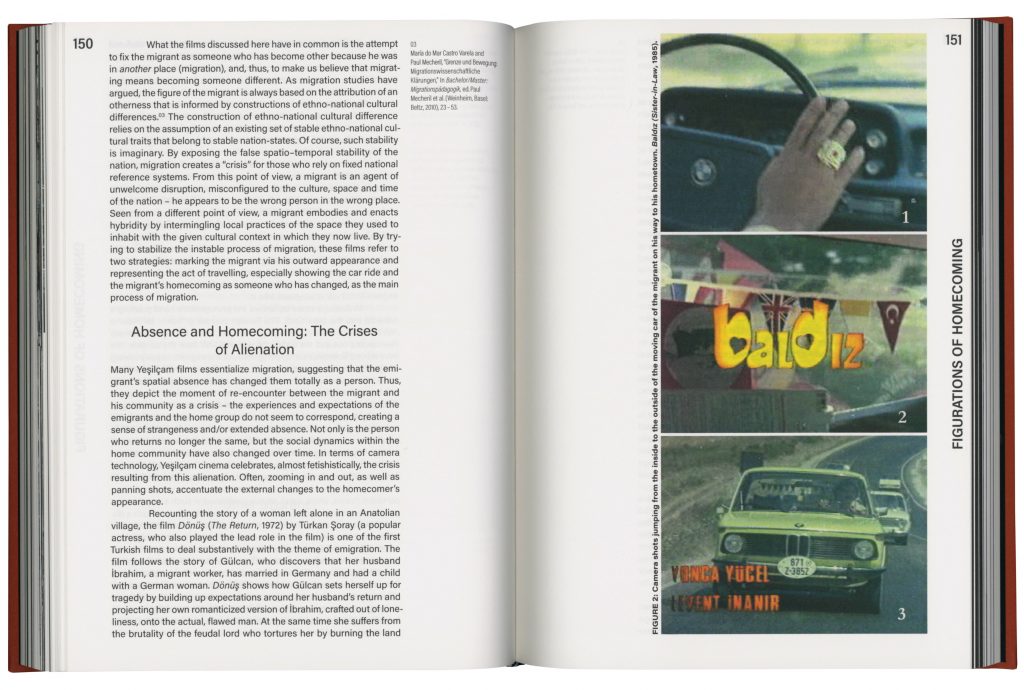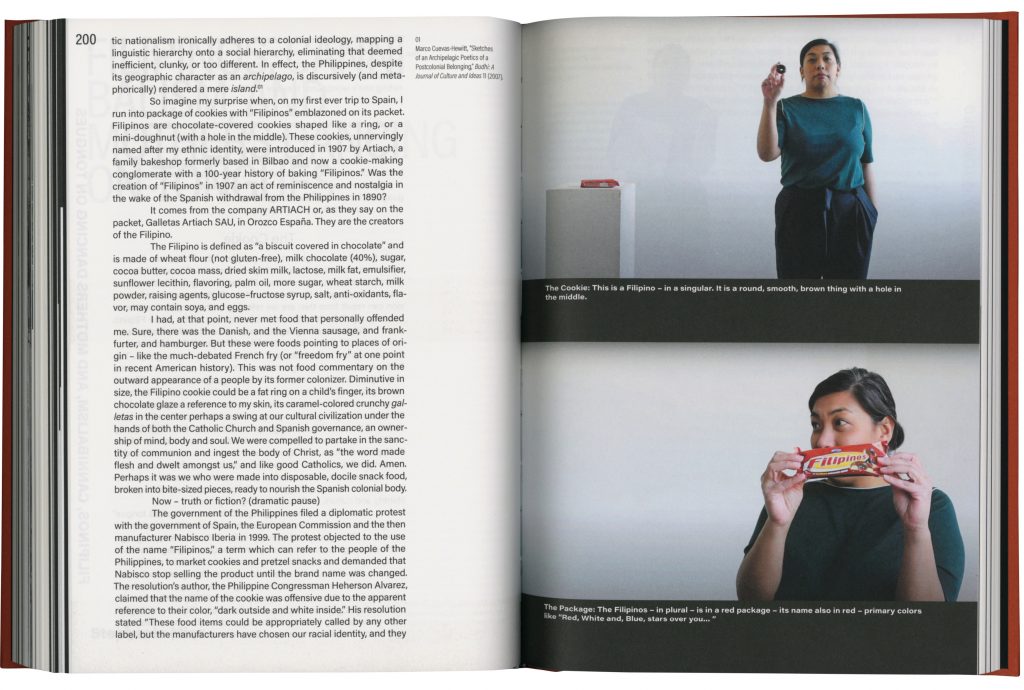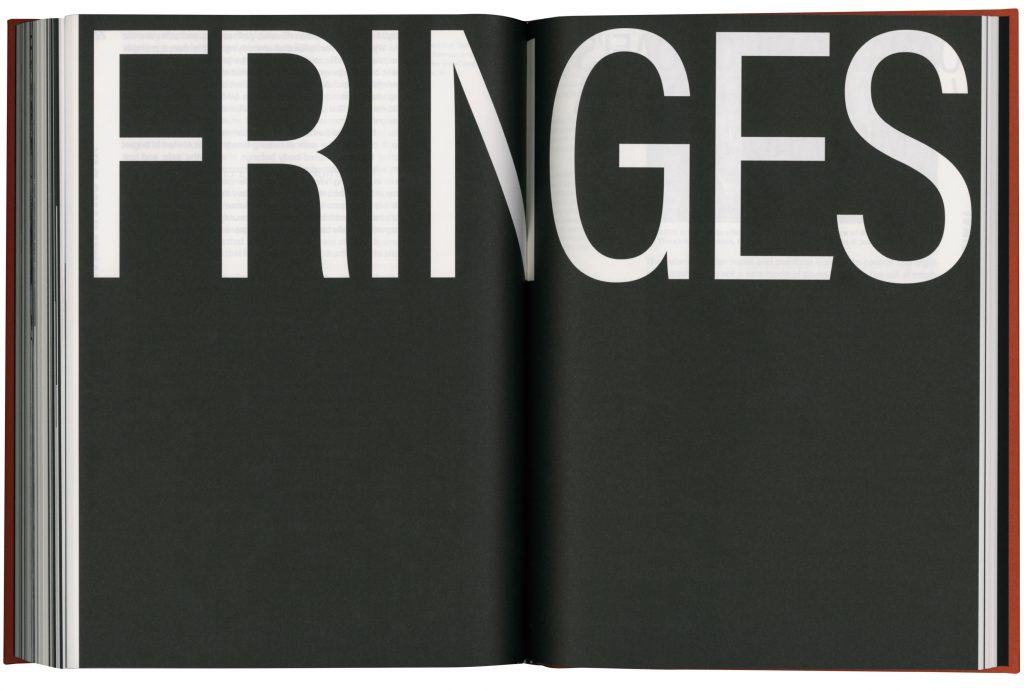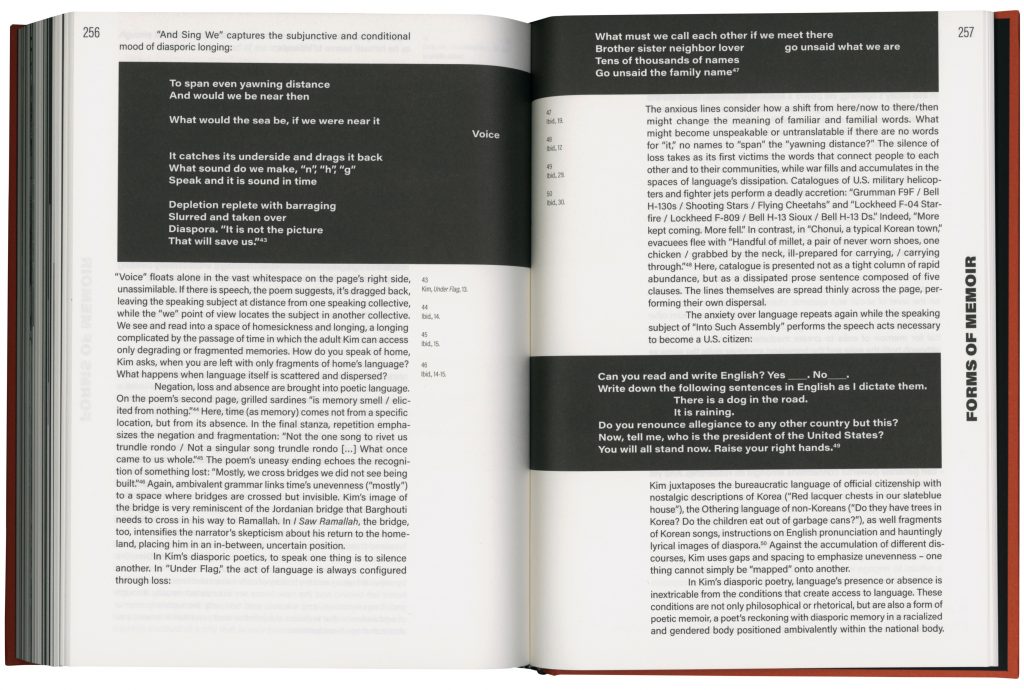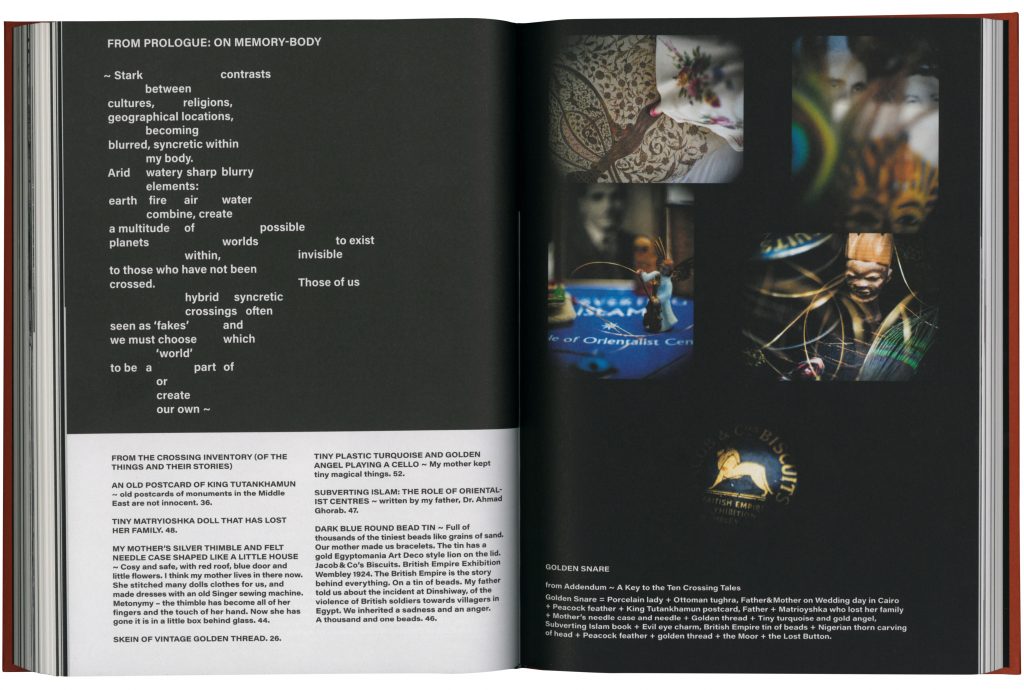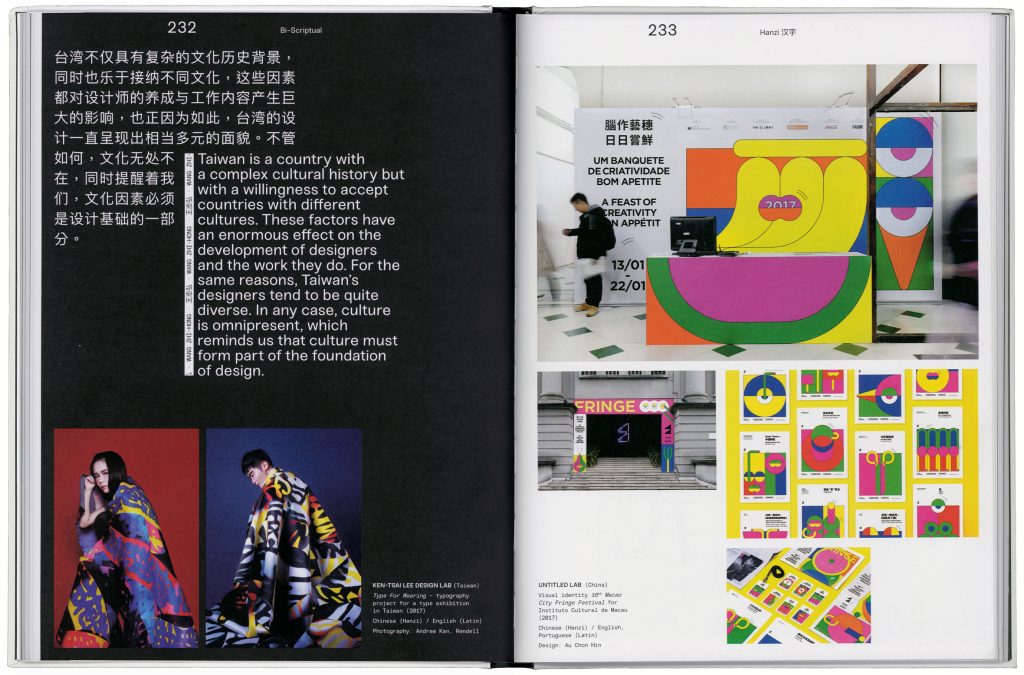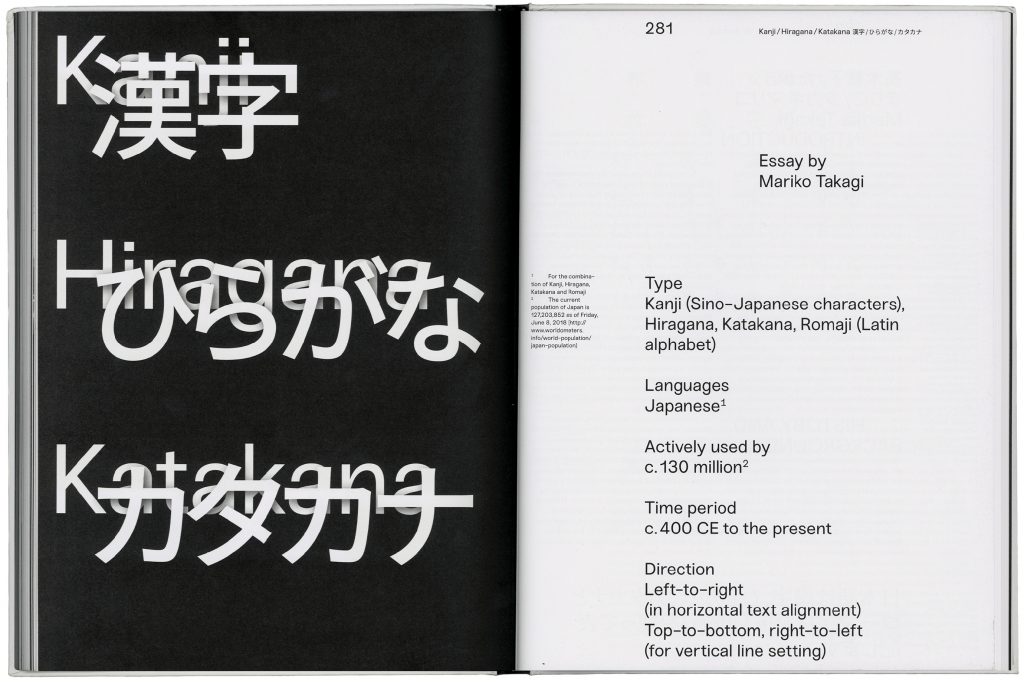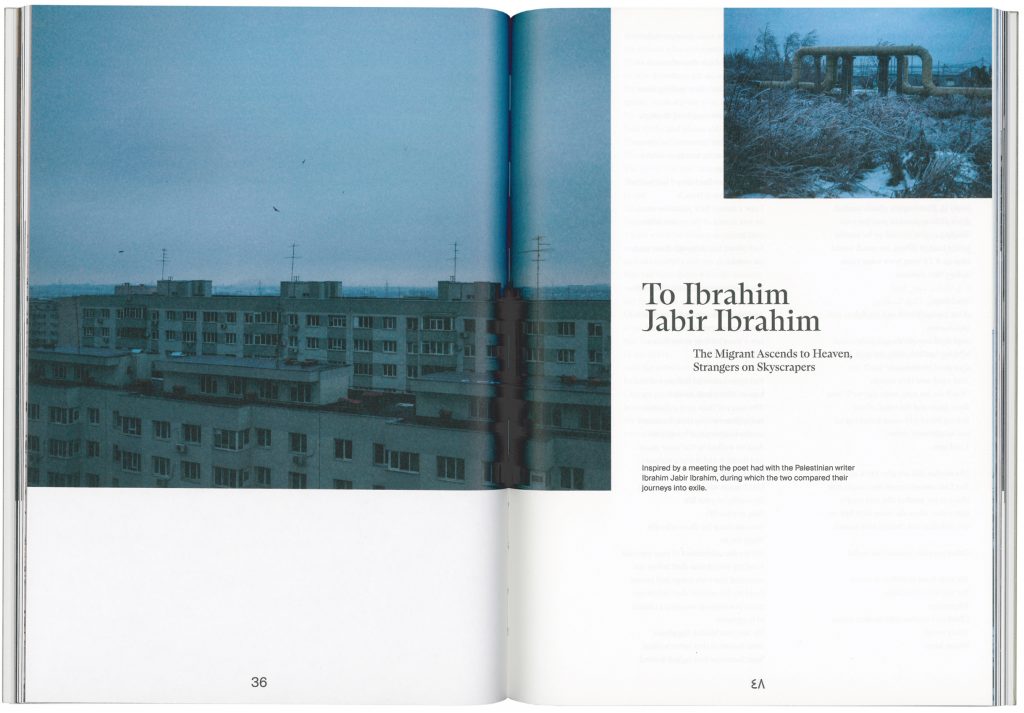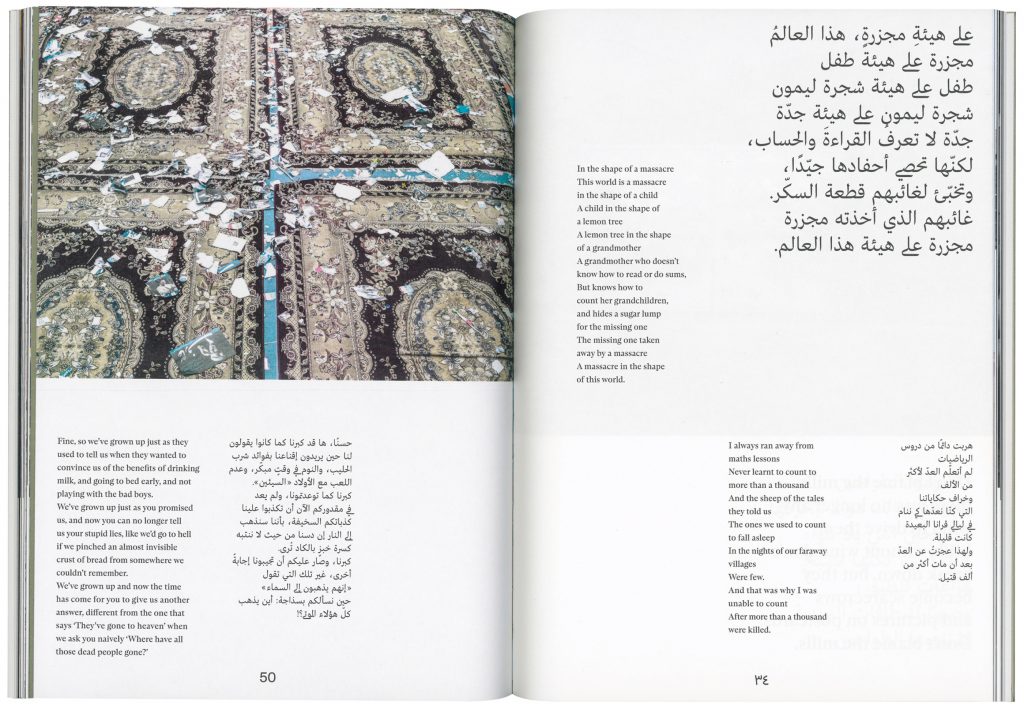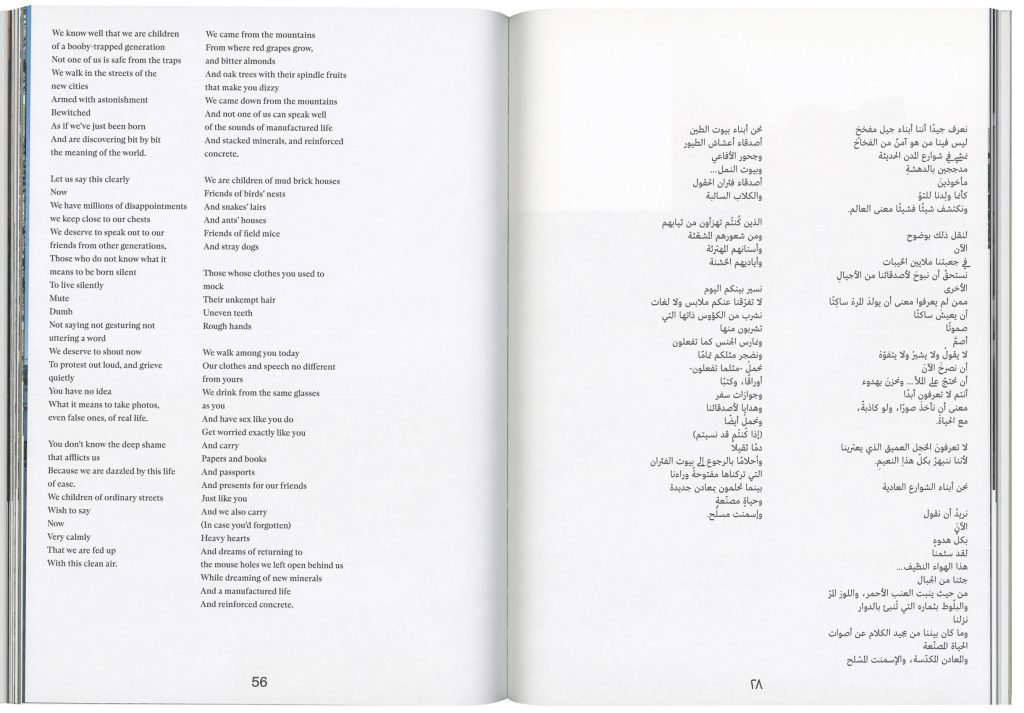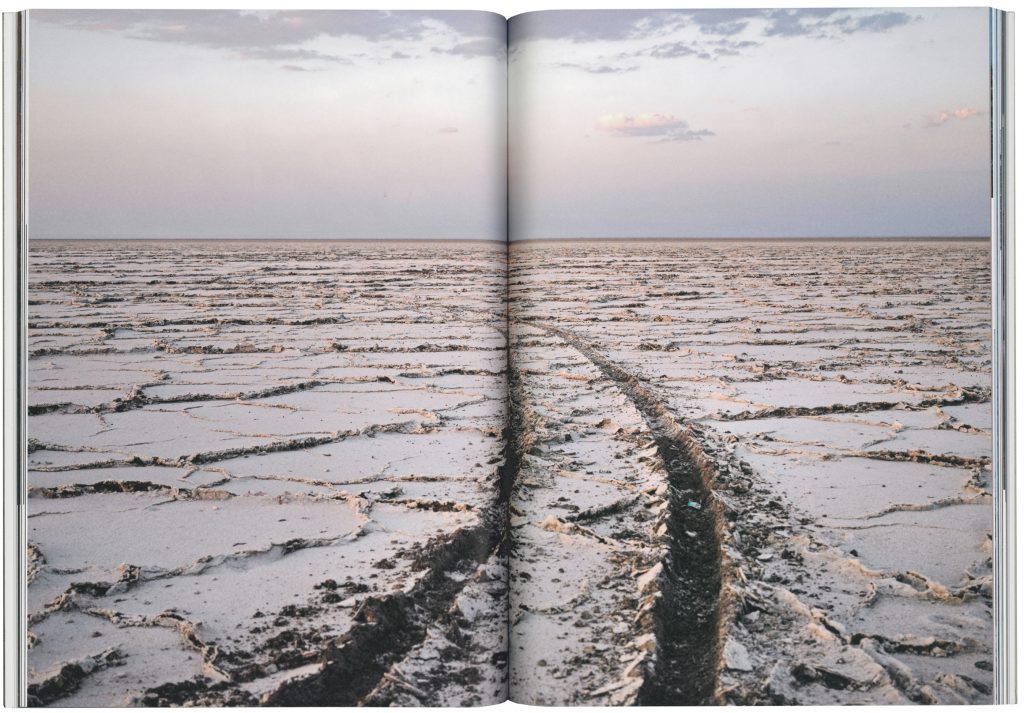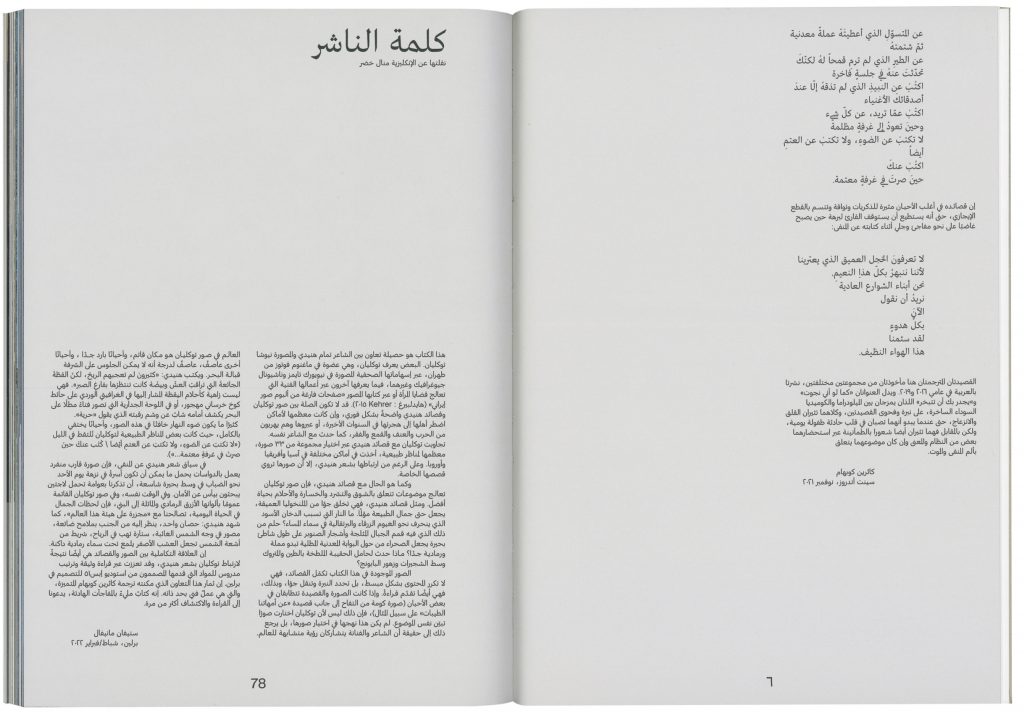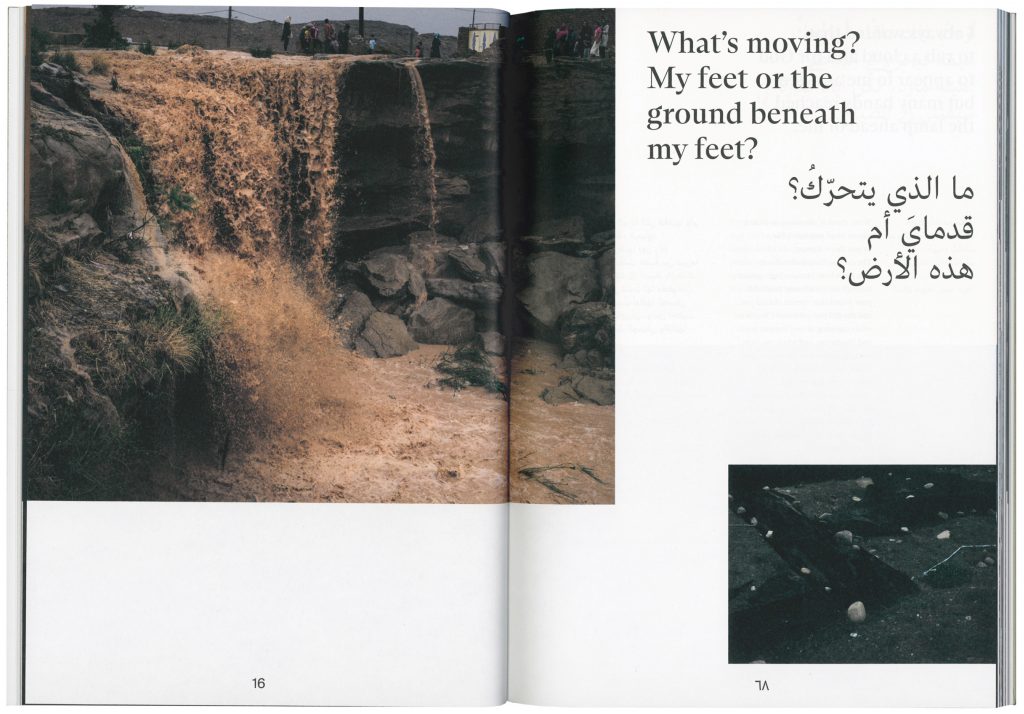Project category: Intercultural
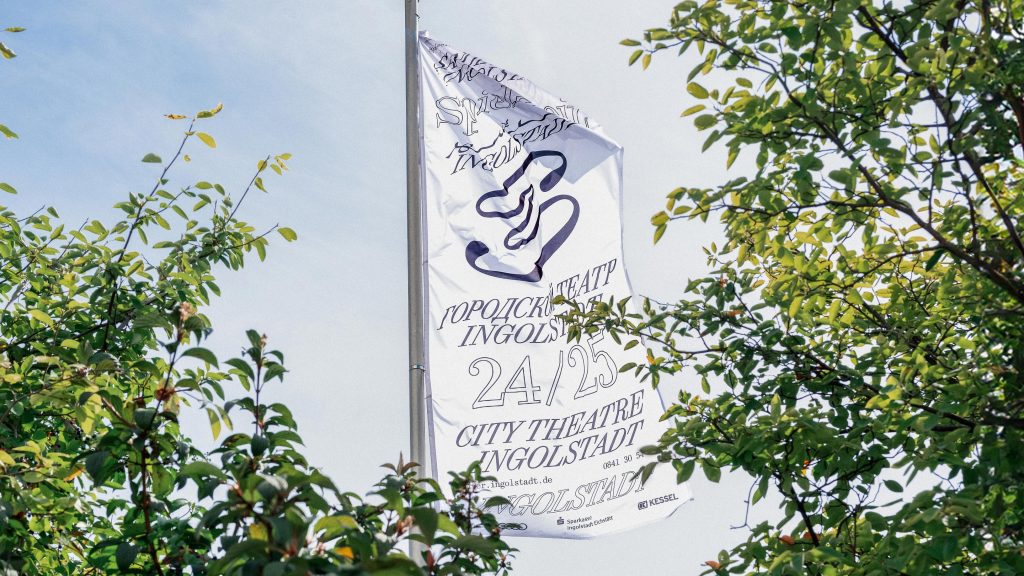
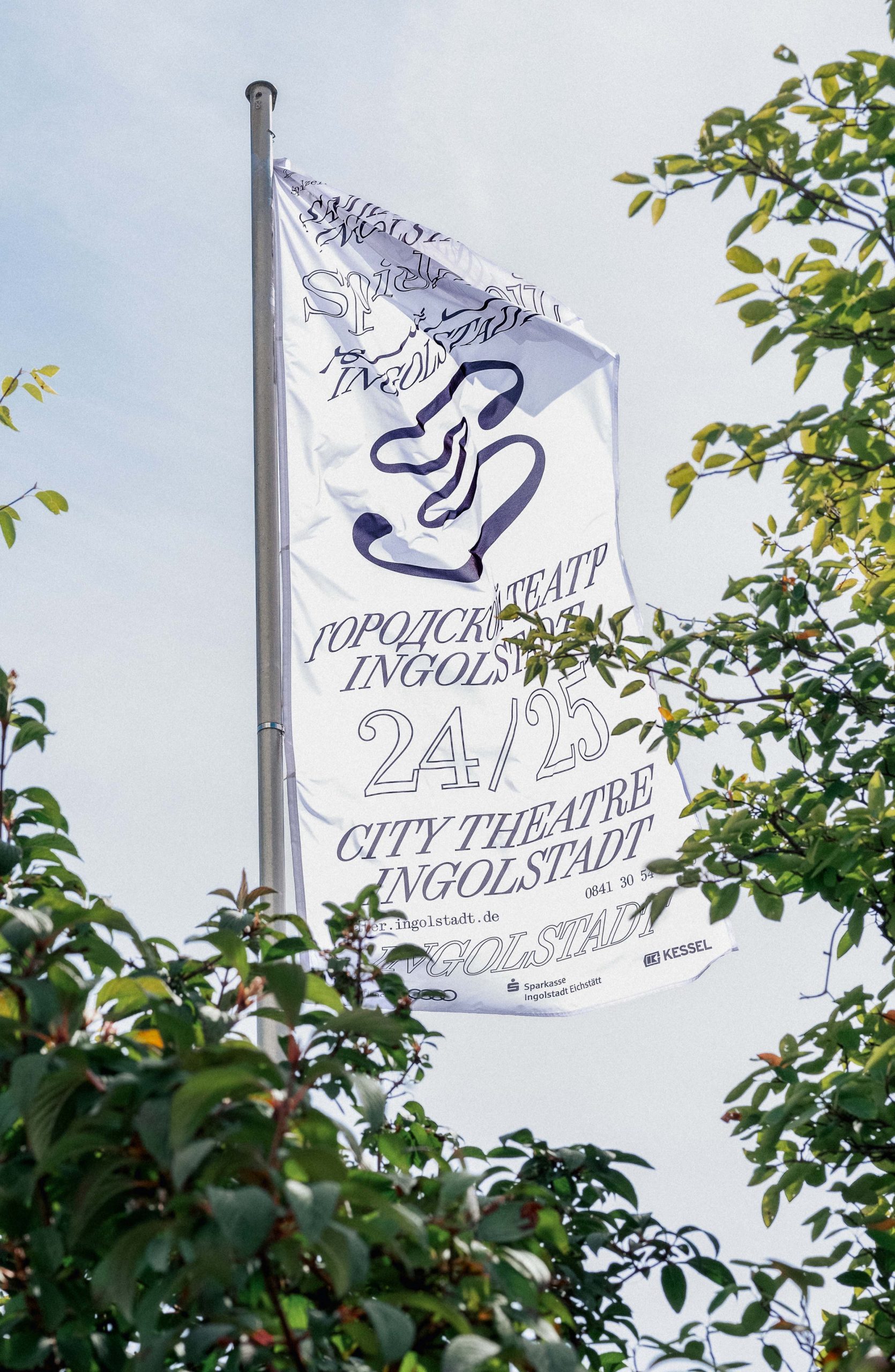
Stadttheater Ingolstadt
Stadttheater Ingolstadt welcomes the city into a future of cultural exploration and inclusive community engagement.
ClientStadttheater Ingolstadt
Year2024–ongoing
ServicesCreative Direction
Visual Identity
Strategy
Print Media
Workshops
Motion Design
BackgroundWith its new team, Stadttheater is embarking on a new artistic journey that embraces the cultural richness of Ingolstadt. The opening campaign, which features multi-lingual and multi-scriptual greetings across Ingolstadt, embodies the theatre’s commitment to inclusivity, ensuring that all citizens of the city feel represented and invited to join this exciting new era. The theatres identity captures the balance between the classical traditions and the contemporary artistic expression. The design serves as a bridge between past and future, reflecting the theater’s ambition to engage a wide audience while honoring the cultural richness of Ingolstadt. This approach ensures that the Stadttheater remains not only a cultural landmark but also a hub for connection and creative growth in the community.
Directional TeamOliver Brunner
Sonja Walter
Julia Mayr
Myria Biel
The word mark of the Ingolstadt City Theatre consists of an extremely cursive serif font (Synt Turbo by ABC Dinamo), which combines classic elegance/tradition with modern dynamism and marks the new beginning of the theatre. History and tradition are catapulted into the future – the orientation is clearly forward-looking, and the unusual aesthetics of the ‘turboised’ typeface underline the artistic aspect of the theatre. The signet shows a playfully curved shape that can be seen as an ‘S’ – the initial letter of the municipal theatre – but at the same time leaves plenty of room for interpretation. Viewers can discover a mask, a face or other artistic elements in it.
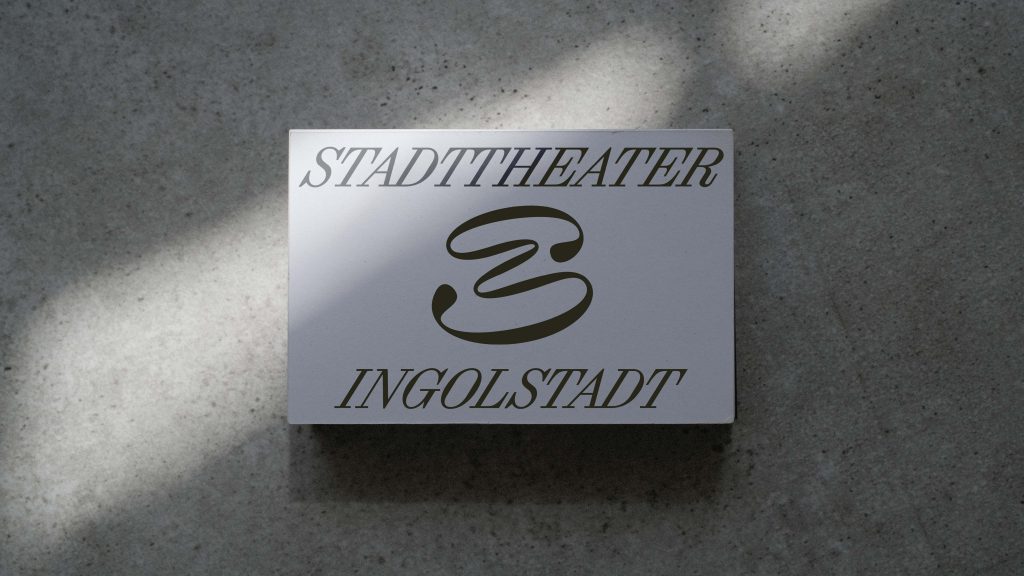
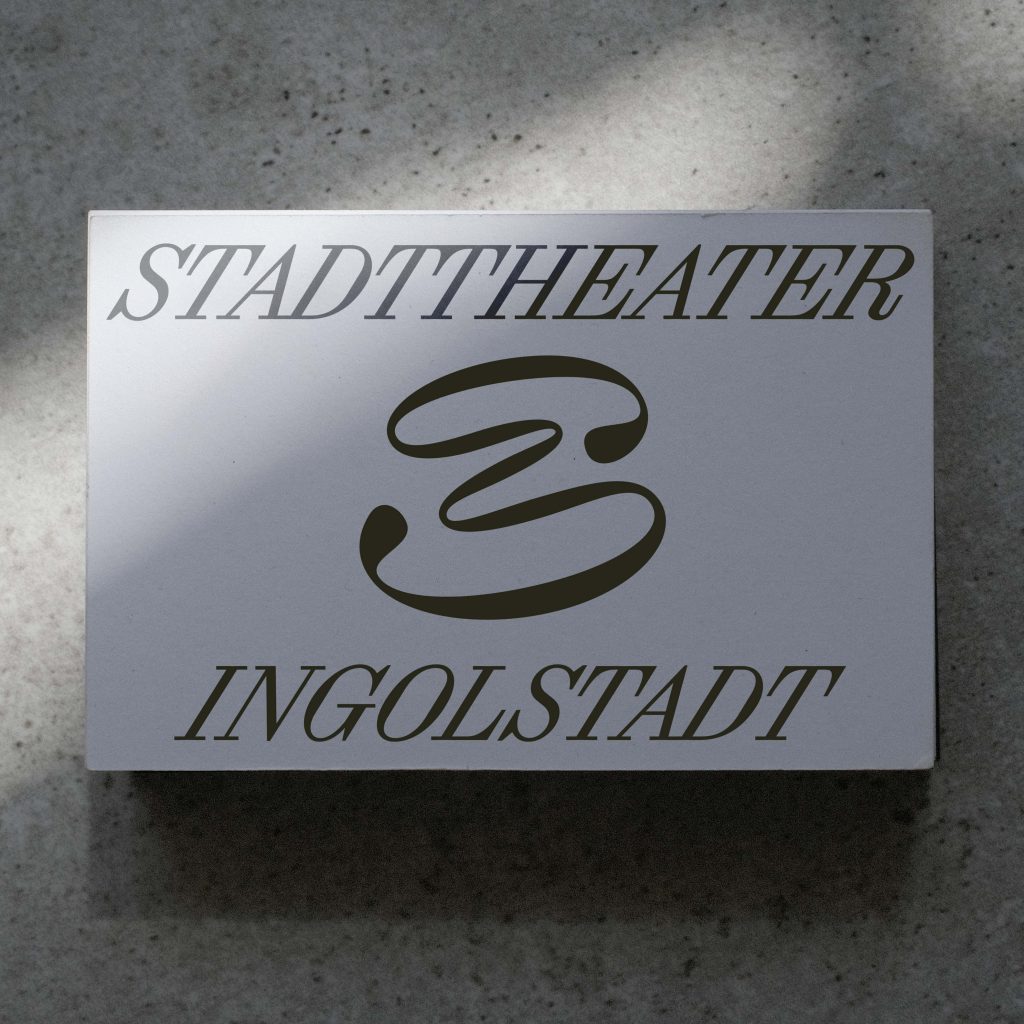
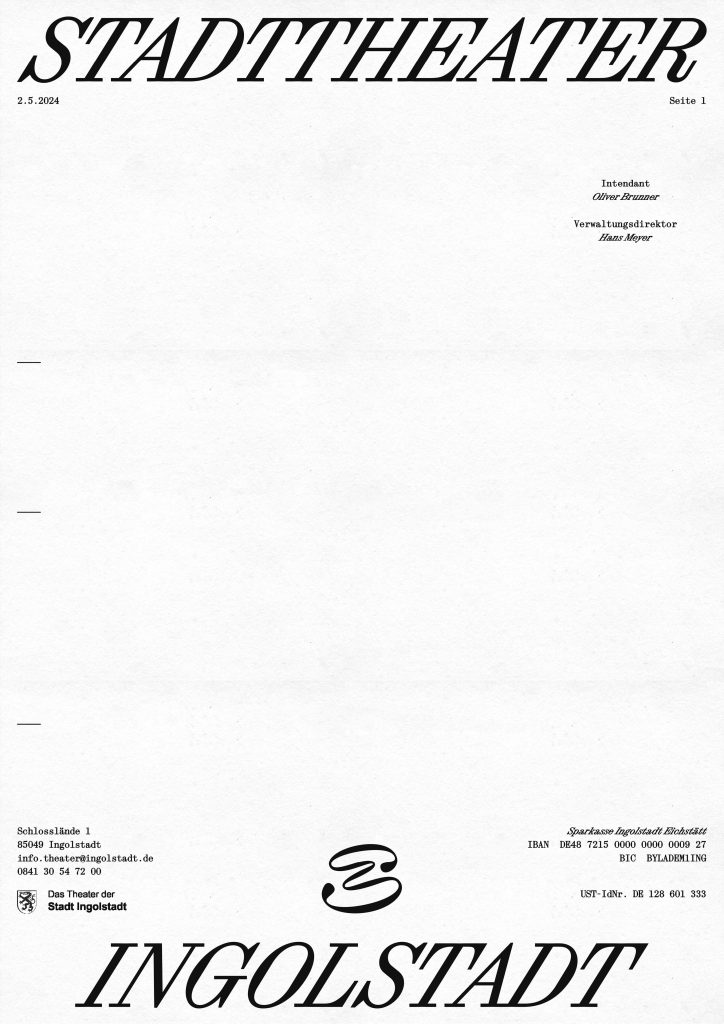

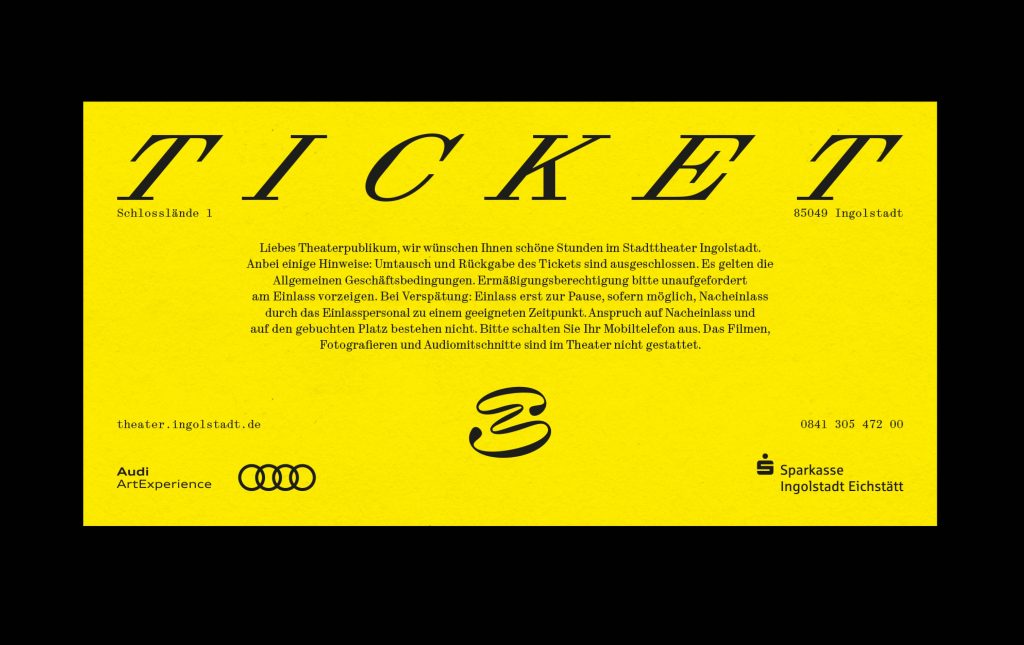

The Intercultural Campaign, designed in 30 languages and more than 10 writing systems, marks the kick-off of the new season and welcomes each and everyone to the theatre.
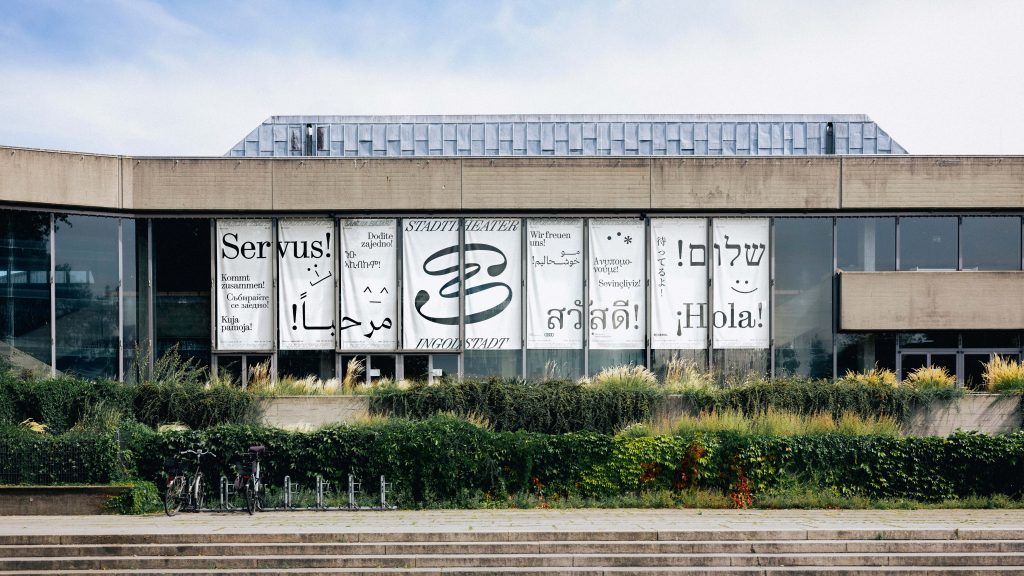
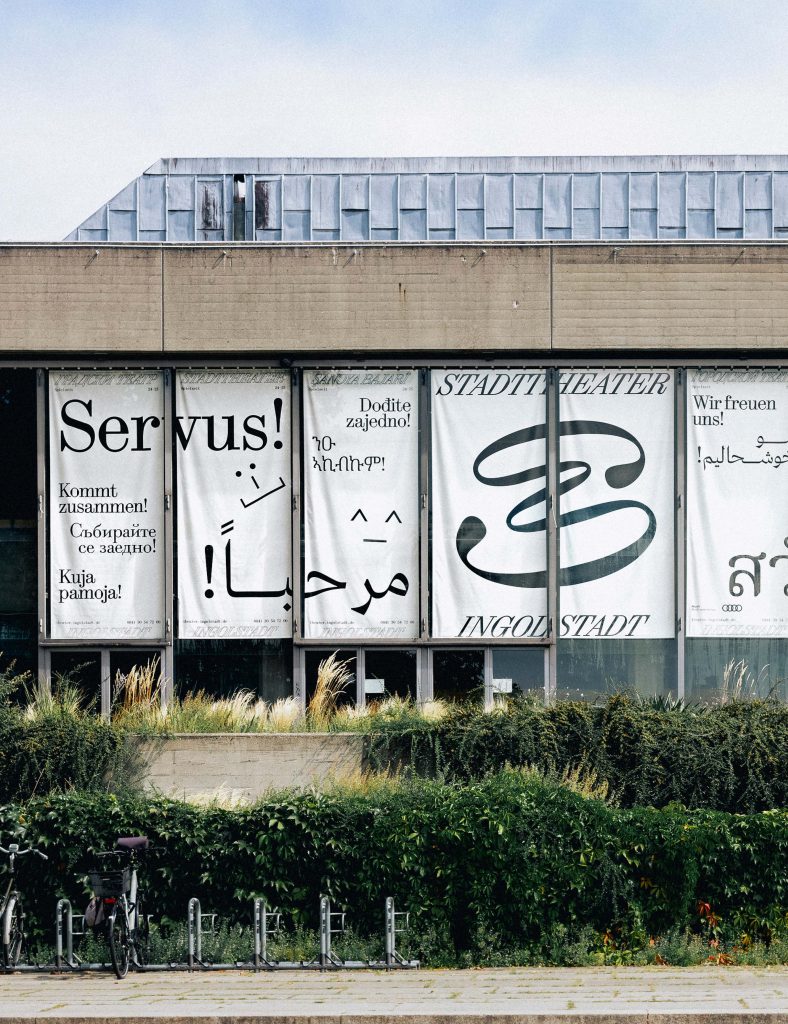
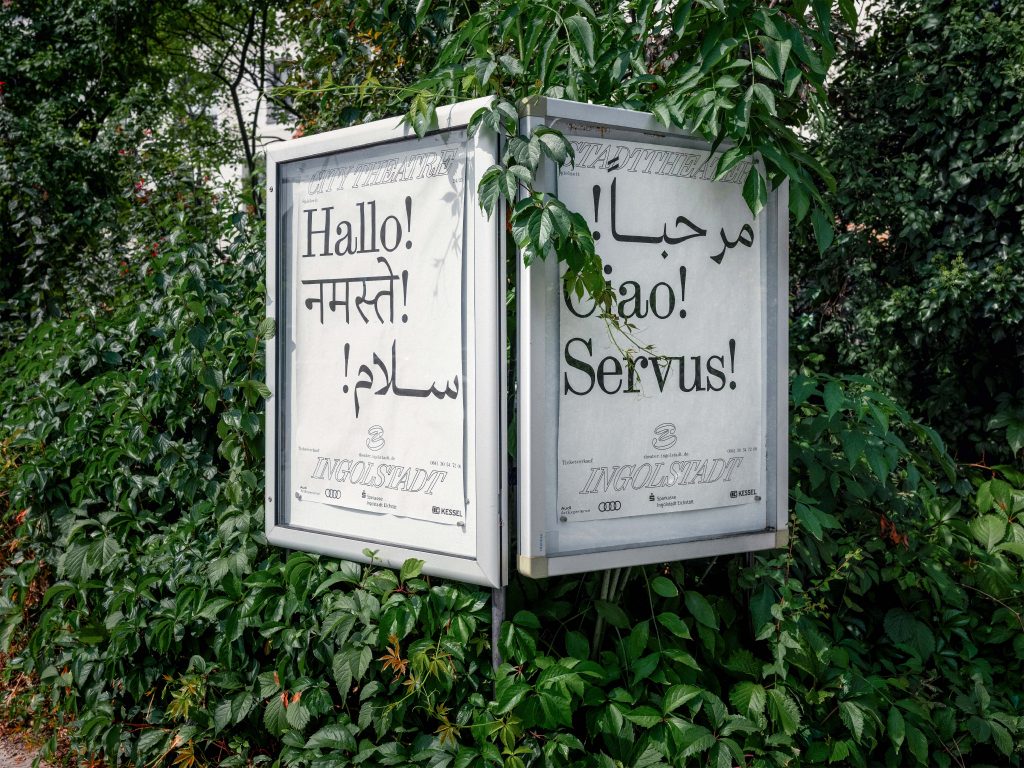

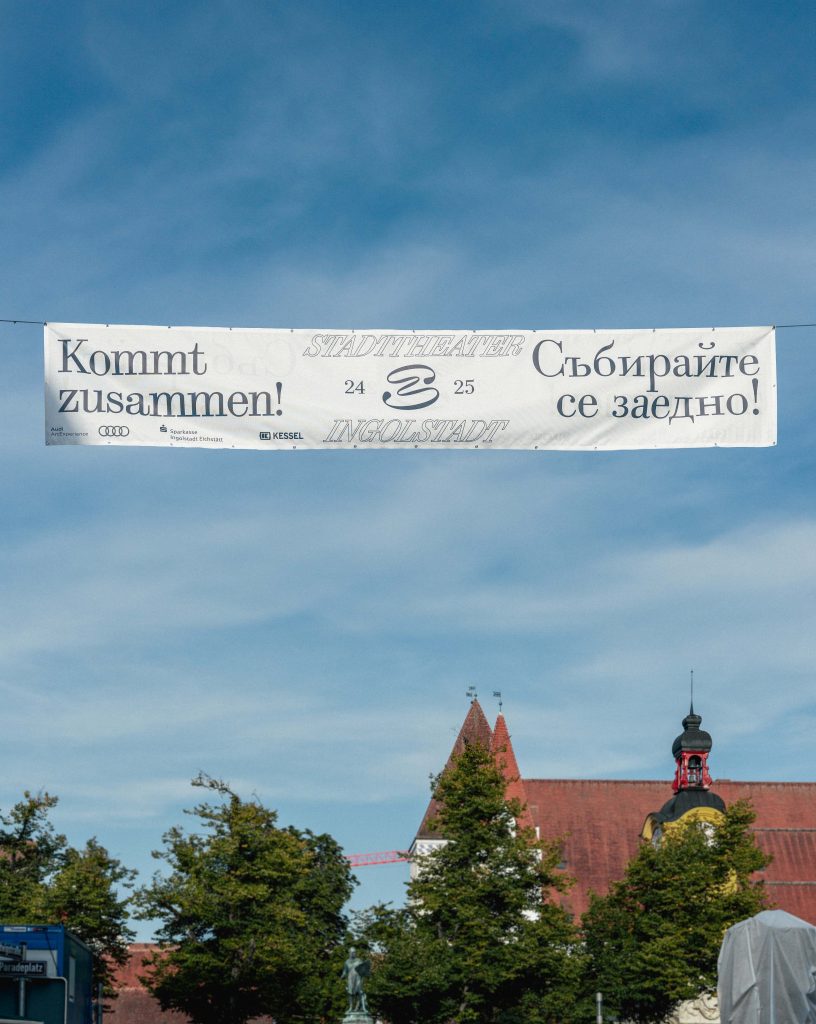

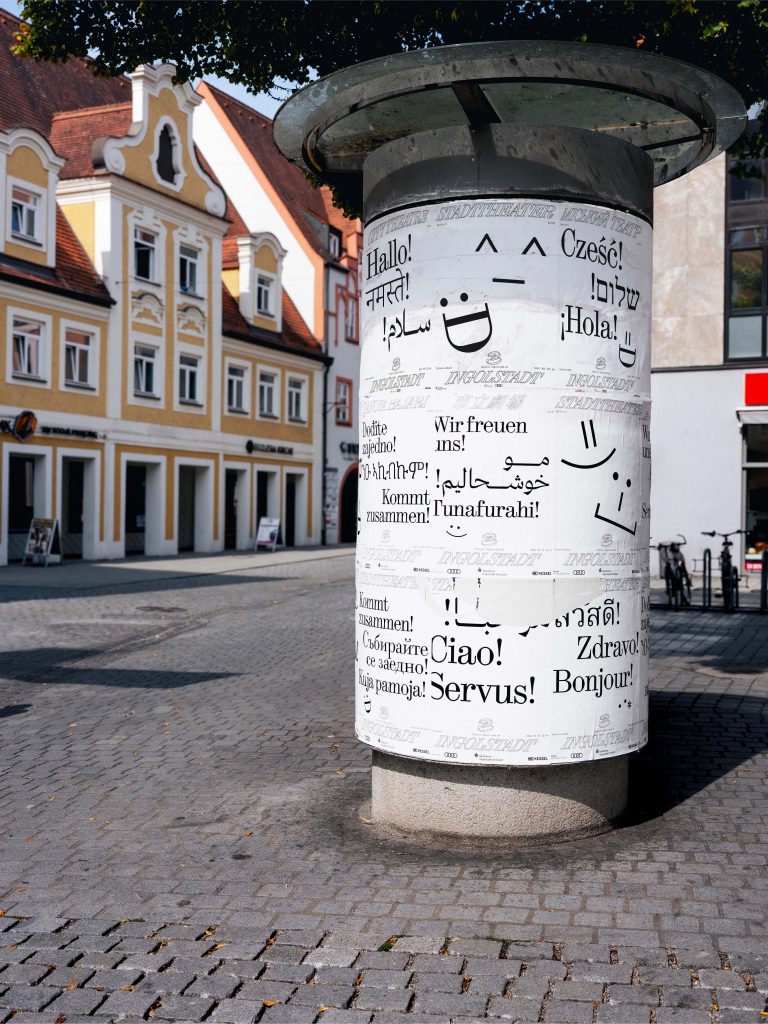

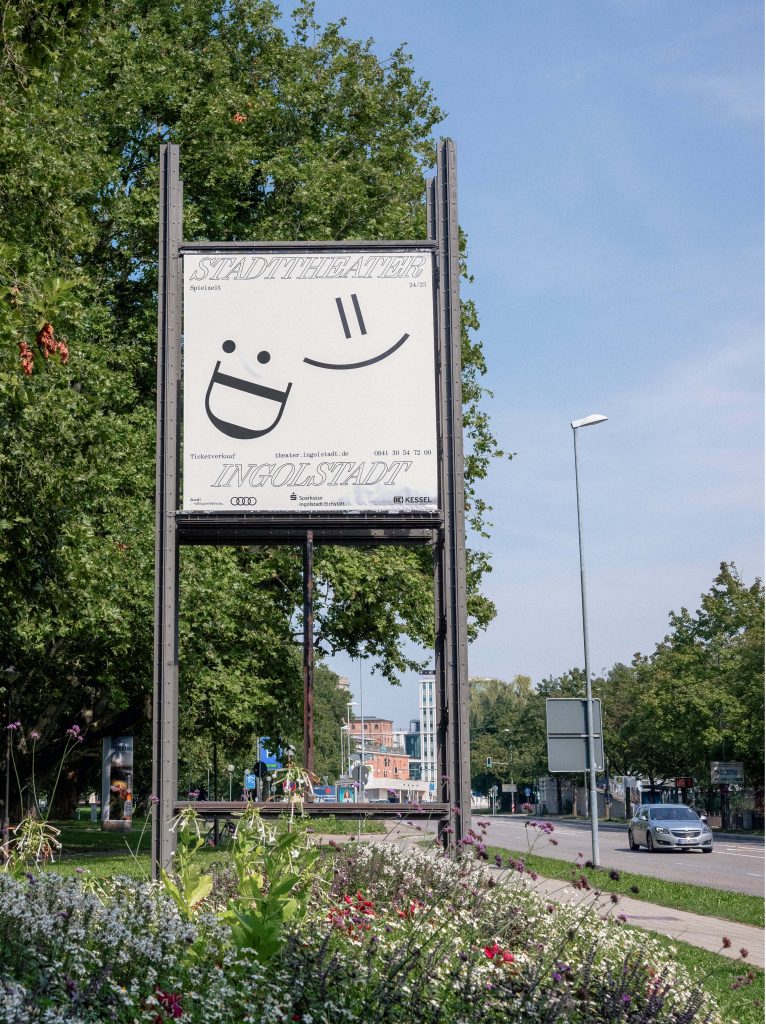

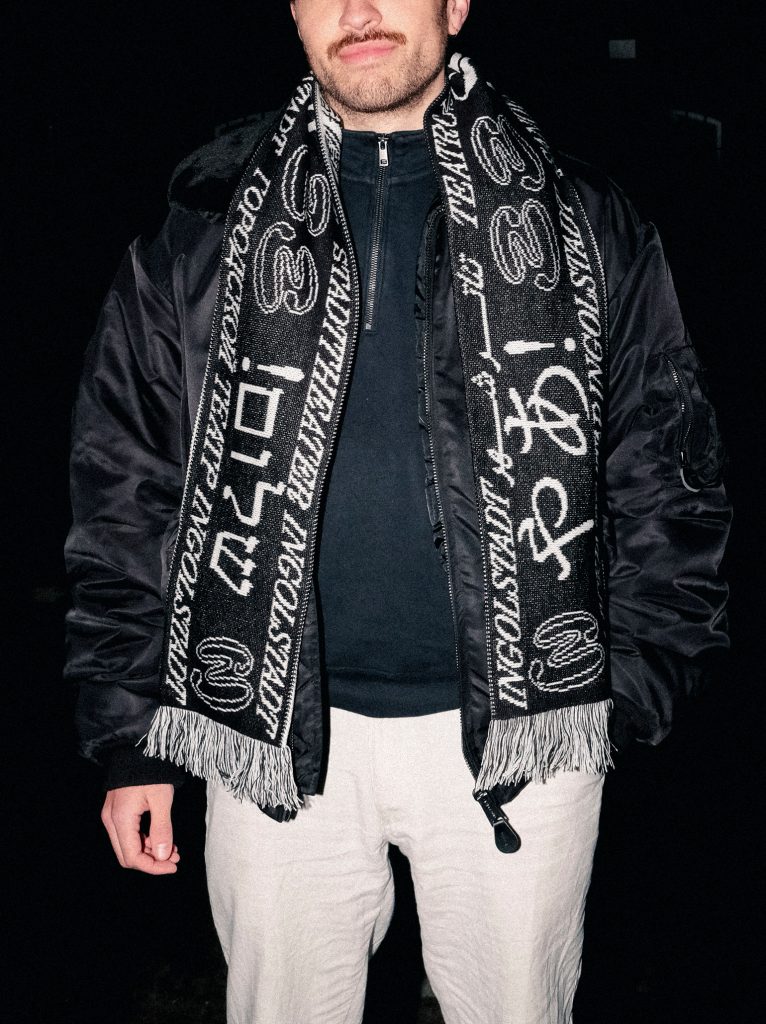

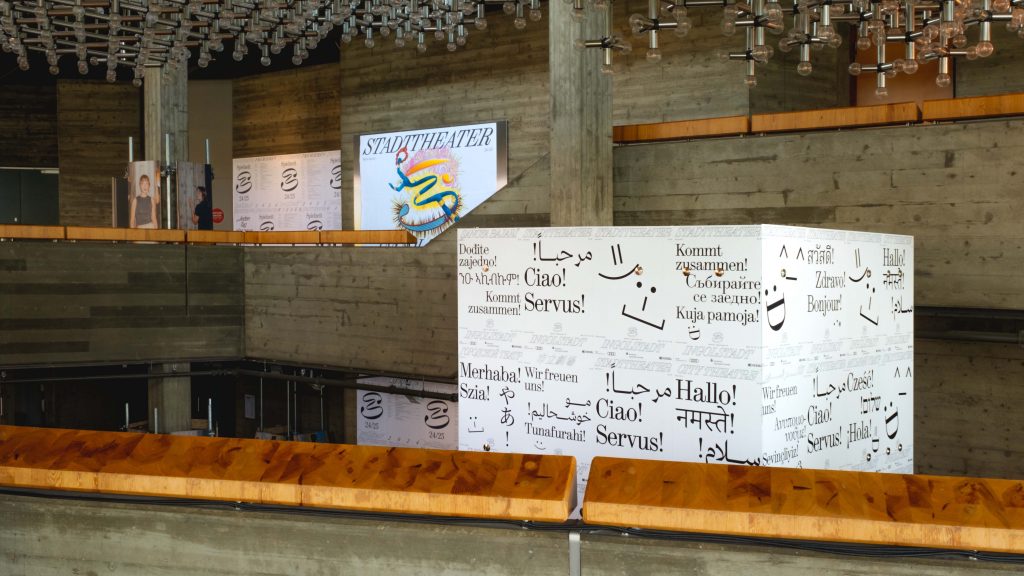
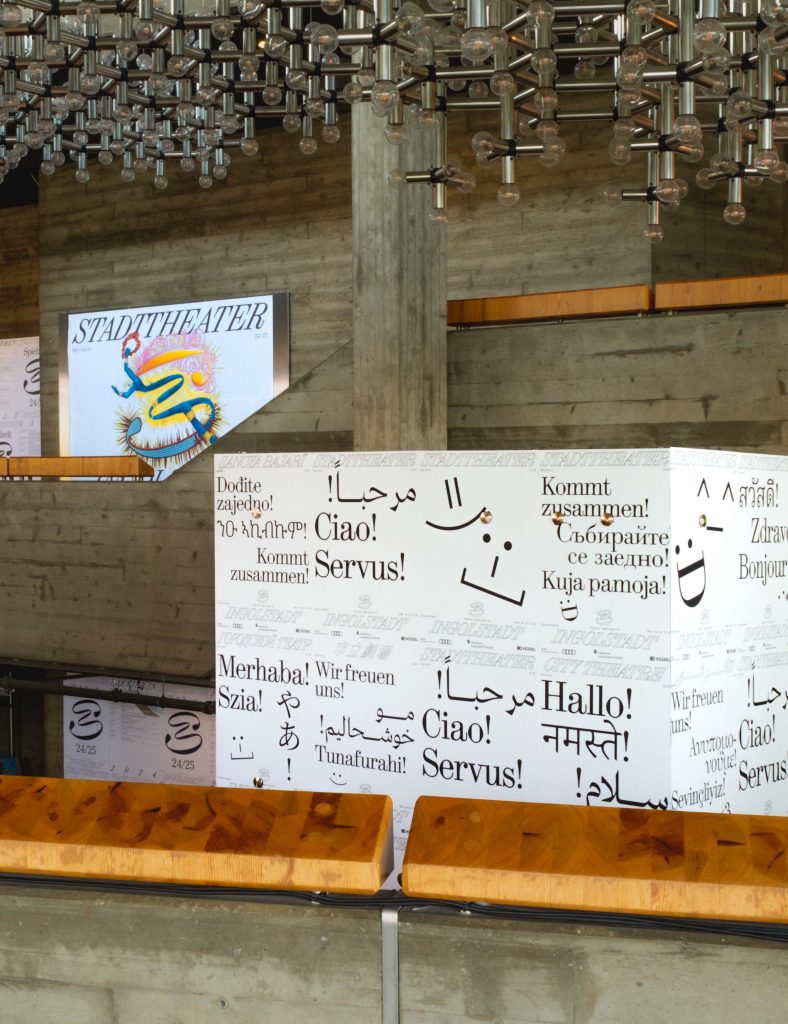
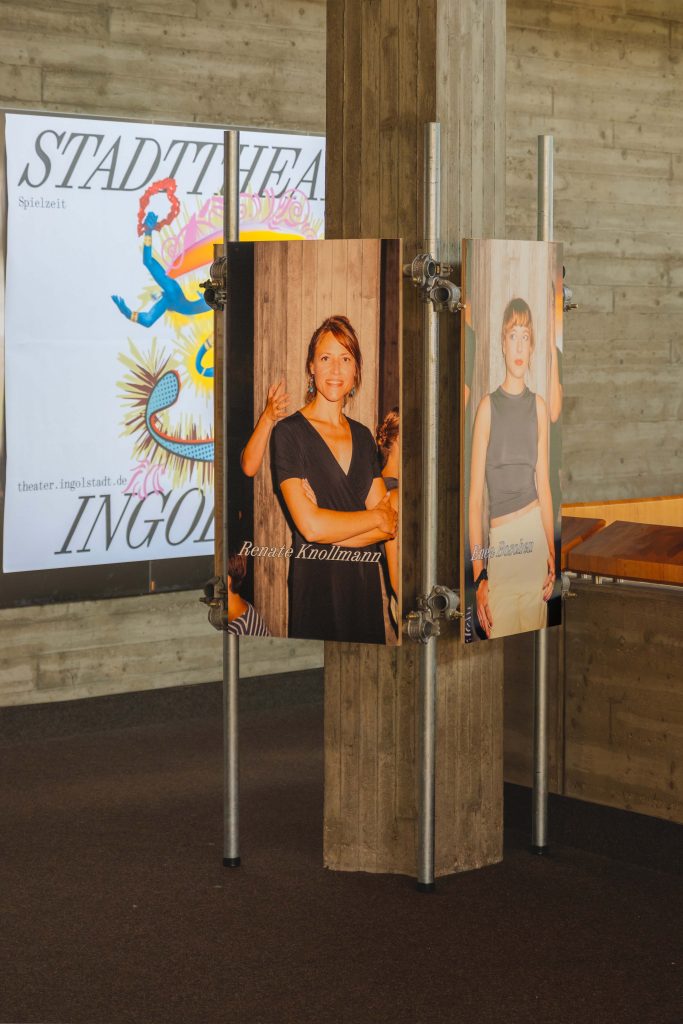

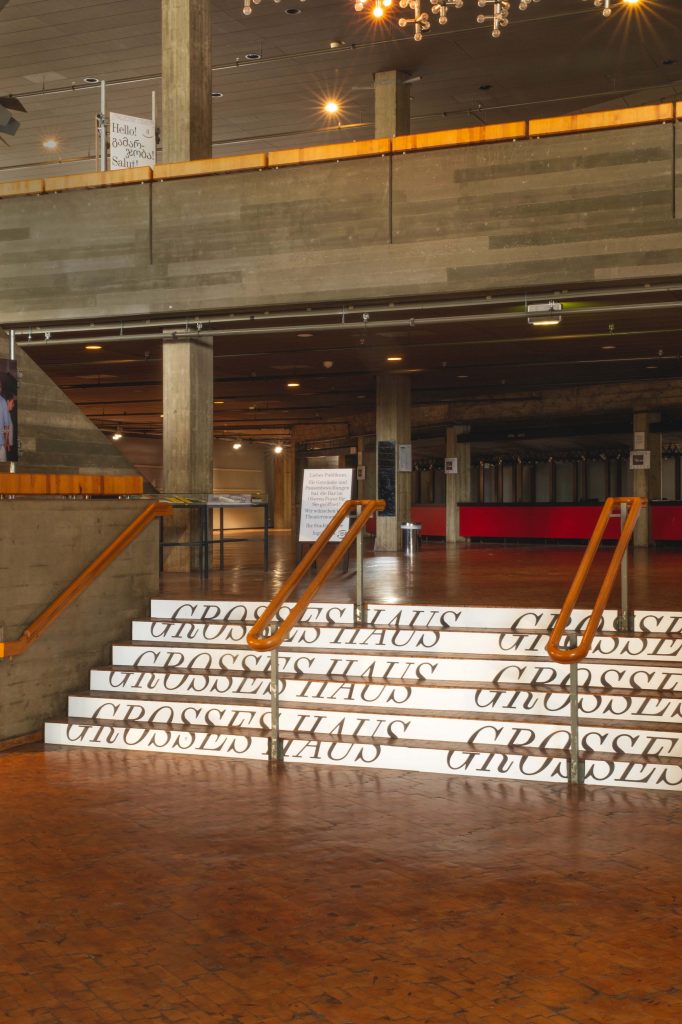

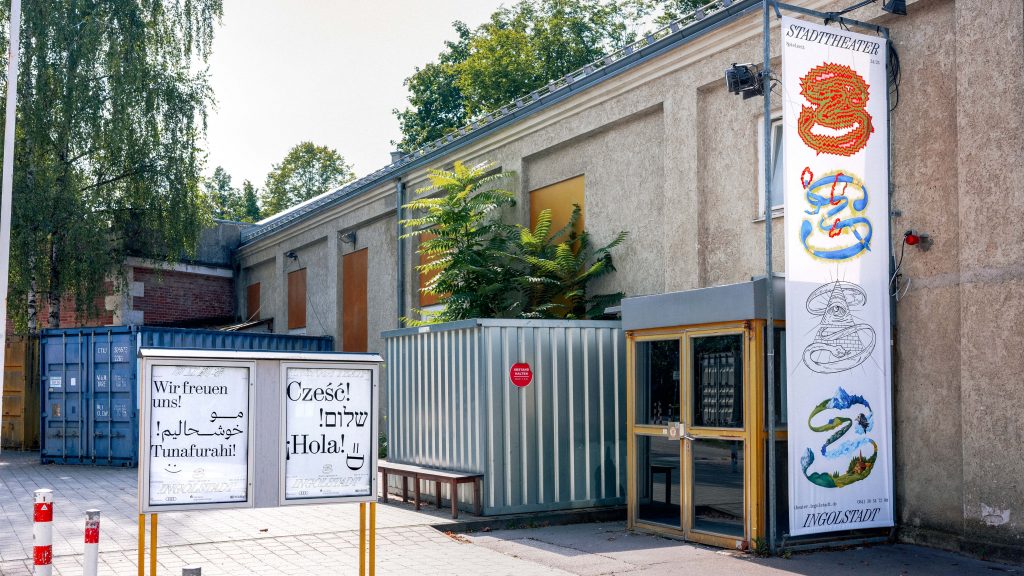
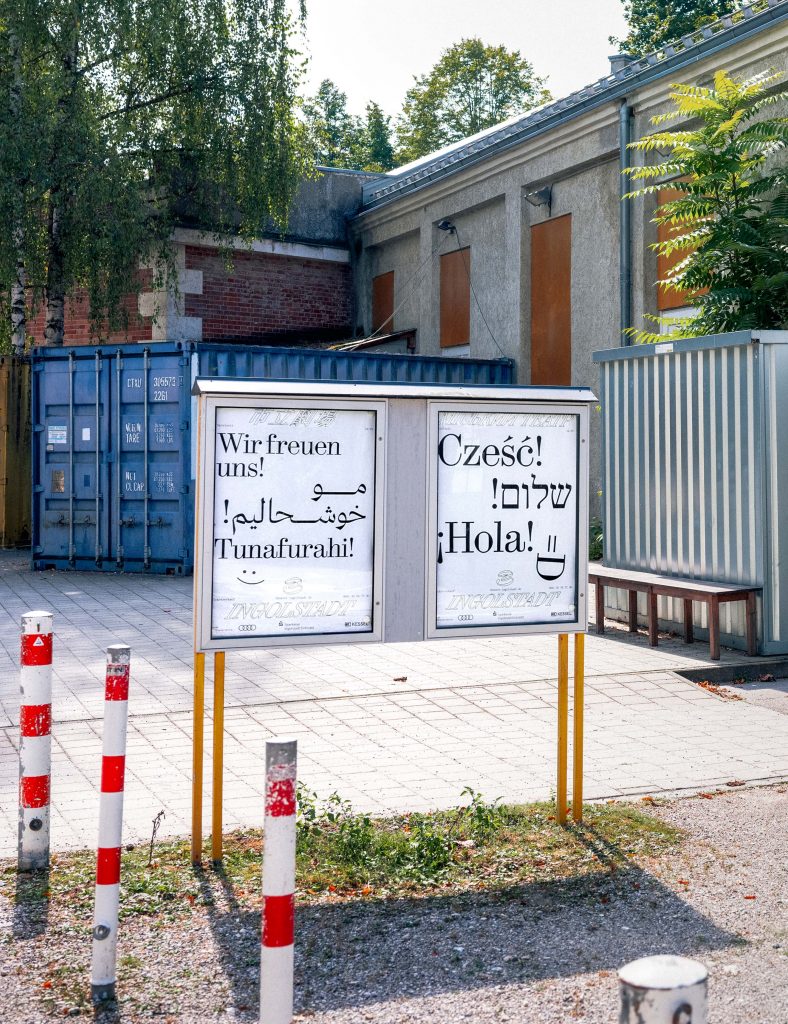
The 24/25 season campaign clearly emphasises the signet. We pick up on the striking storylines of the individual plays and customise the signet visually.
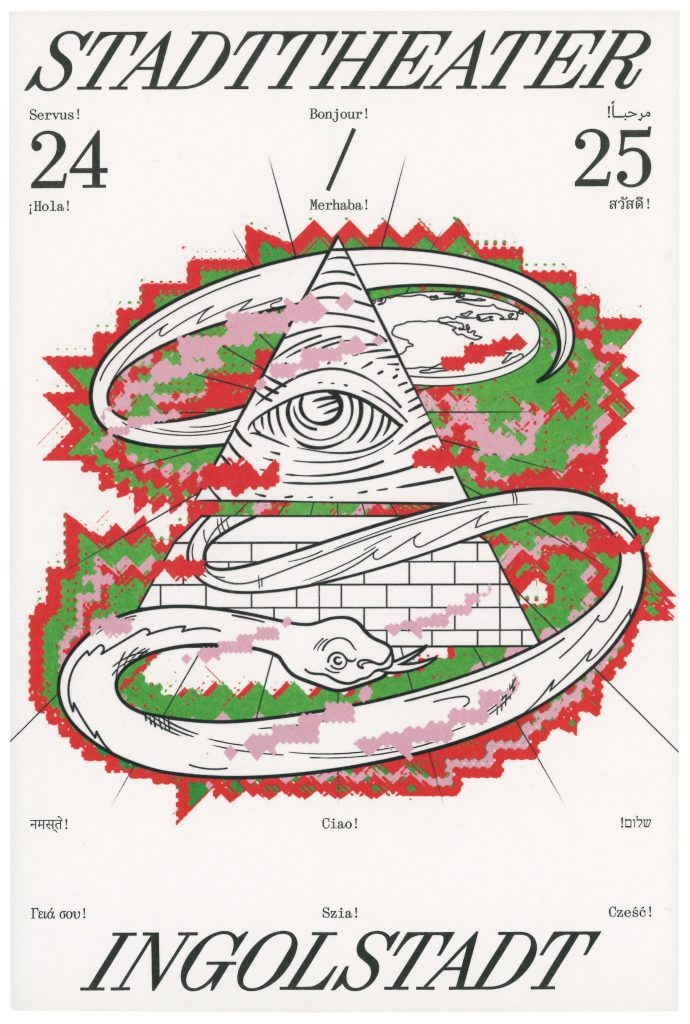

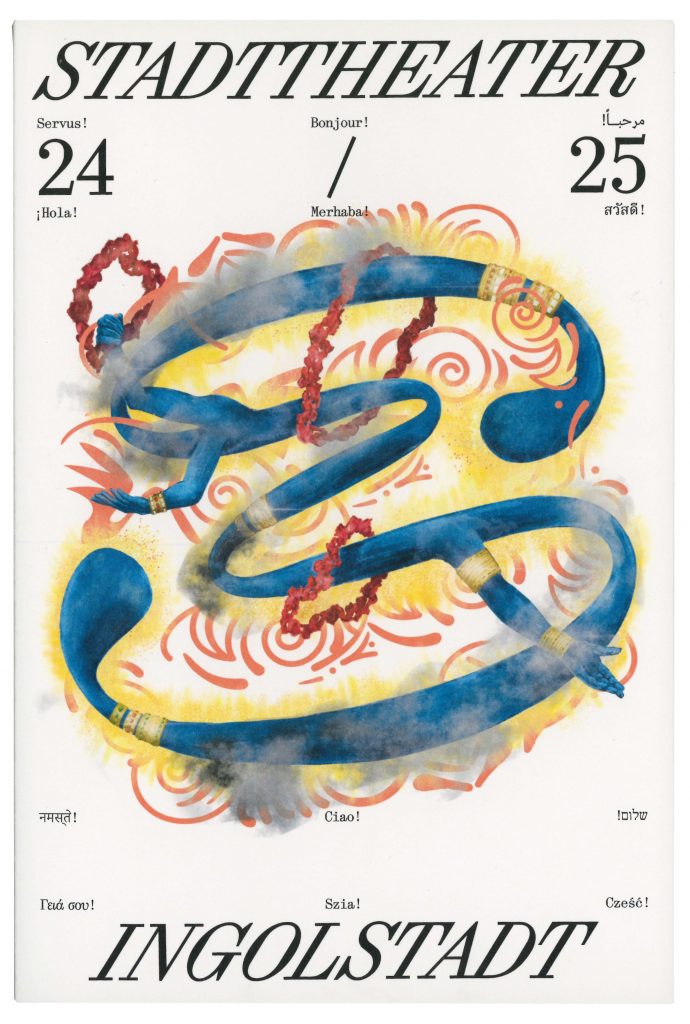

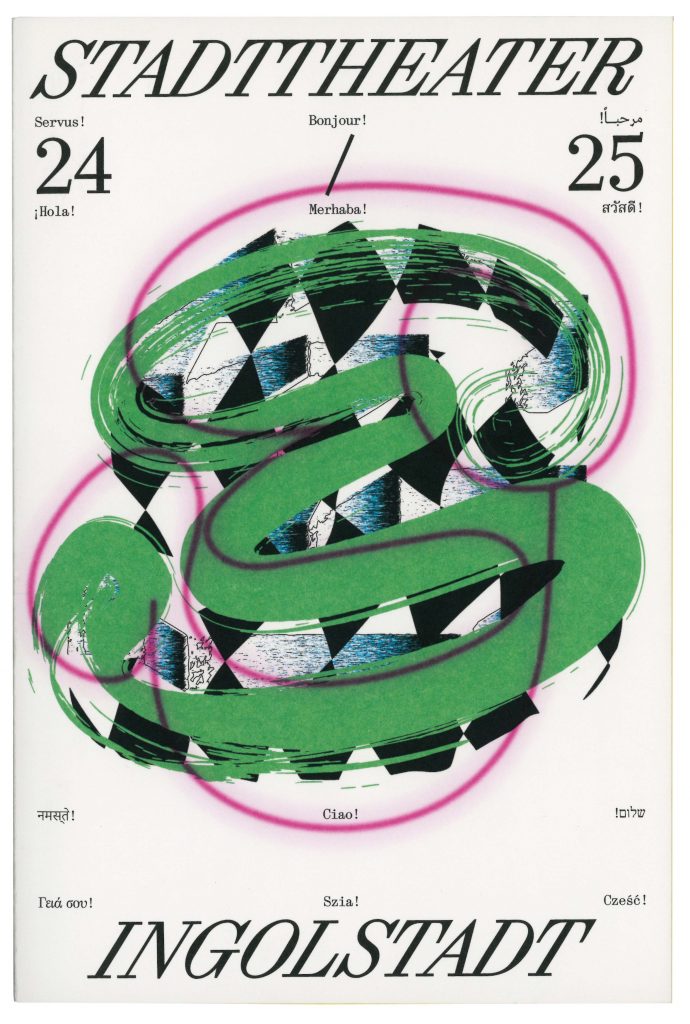

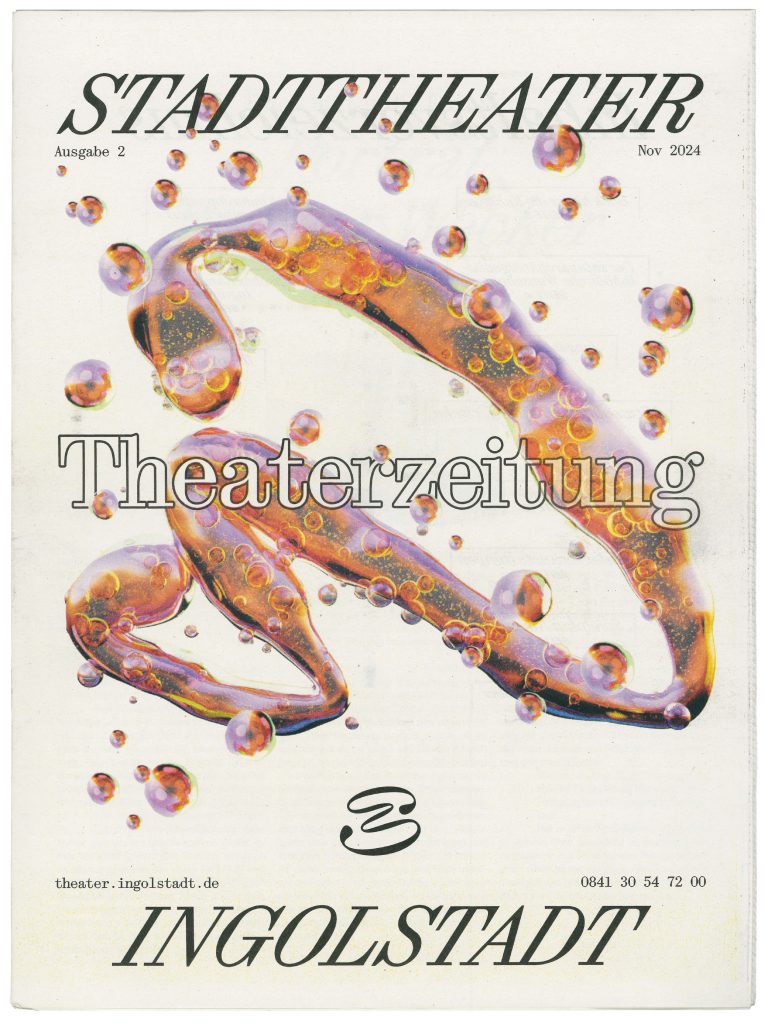

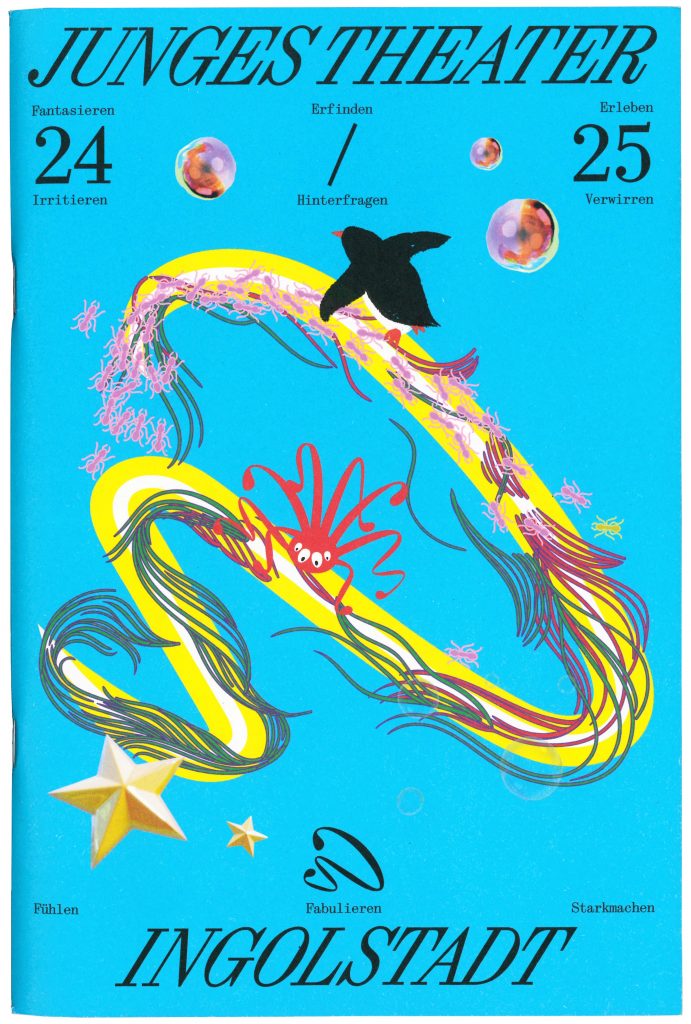

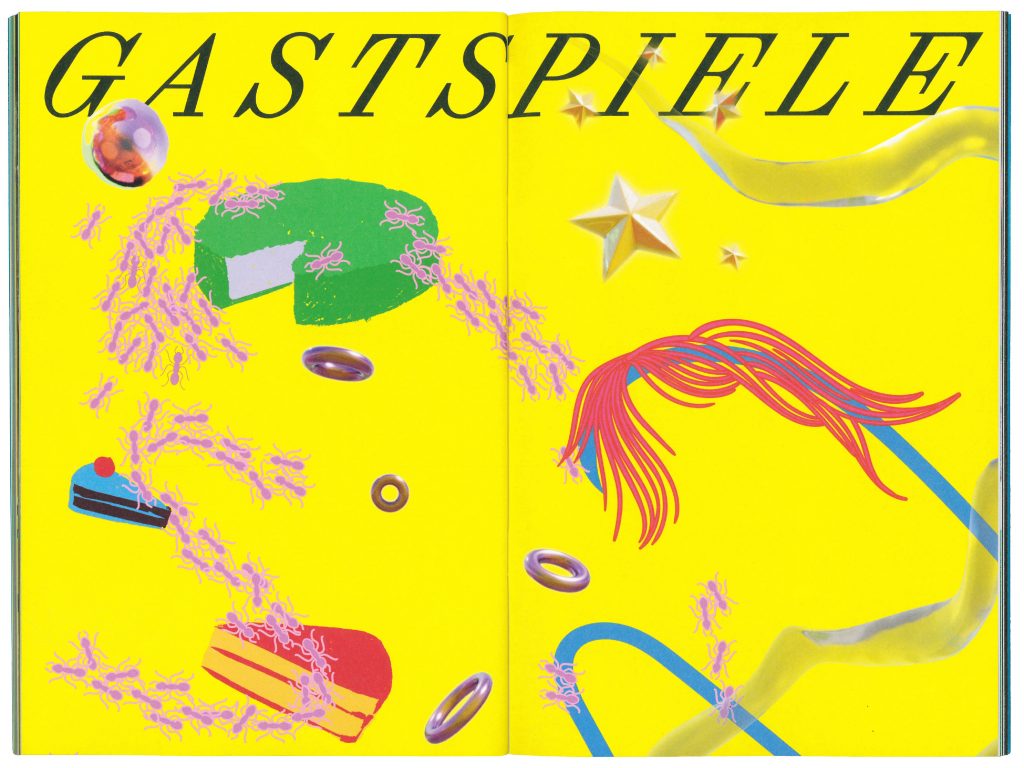

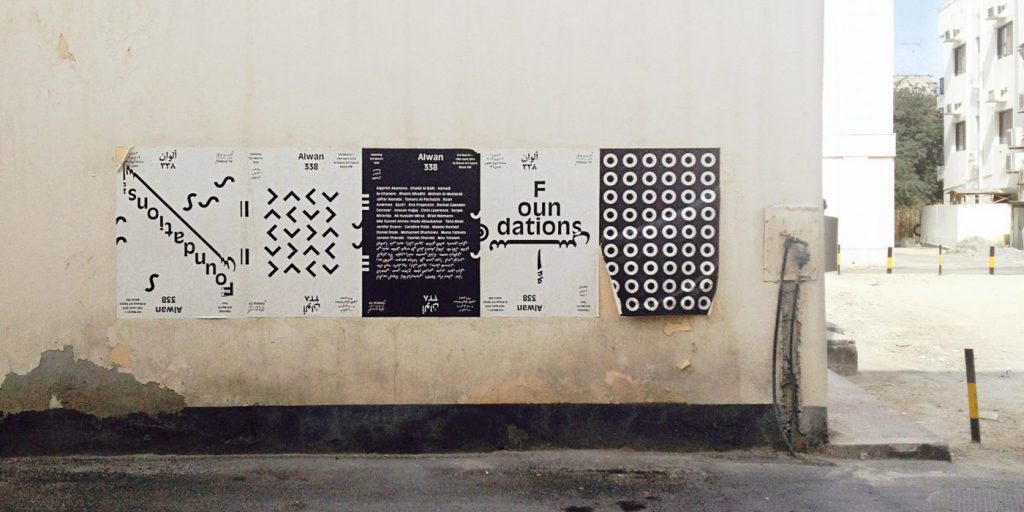
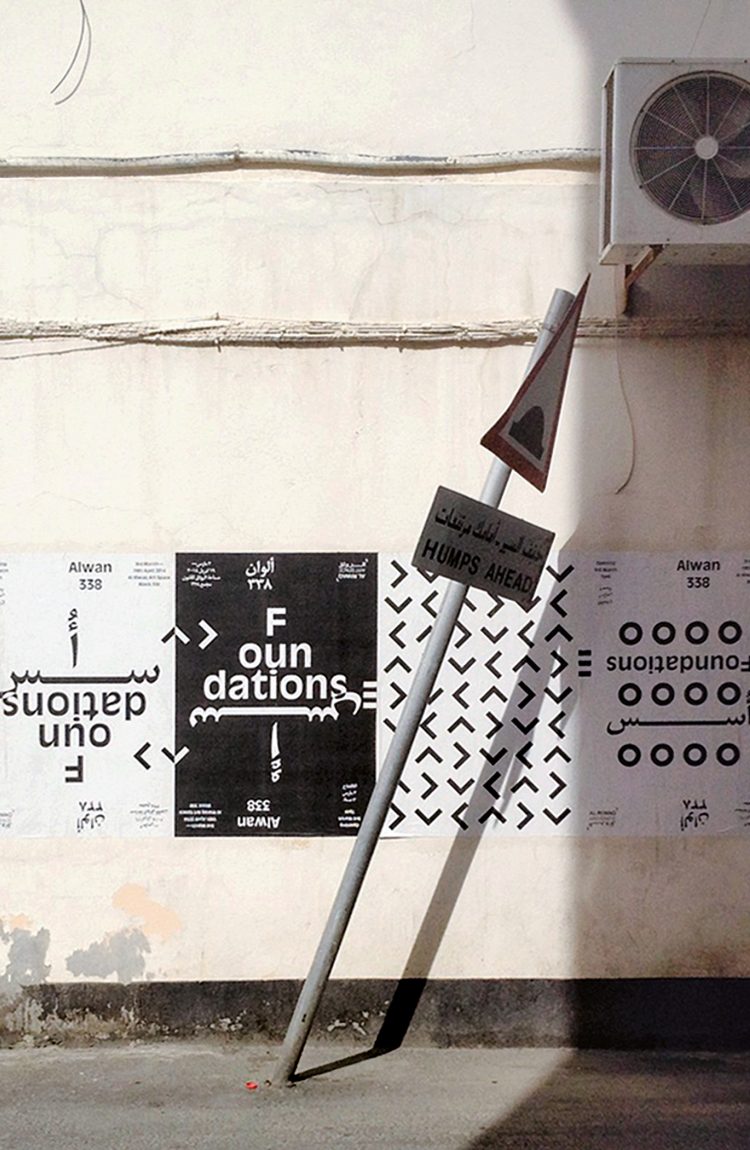
Alwan338
Attracting the attention of the Manama public with a black and white series consisting of countless individual posters.
Client
Al Riwaq Art Space
Year
2014
Services
Visual Identity
Newspaper
Exhibition Design
Poster Series
Workshops
Background
Alwan338 is an annual exhibition project by Al Riwaq Art Space in Manama, Bahrain. Each year 20 international and 20 local artists are invited to create art pieces in public space within the block 338 – the area Al Riwaq is situated in. 2014 we were invited to develop the identity for the exhibition and furthermore take part as artists. We developed a visual concept for a series of countless individual posters which were pasted in public space all around town.
Photos by
Sergio Miranda, Ahmed Buasally, Chris Lawrence
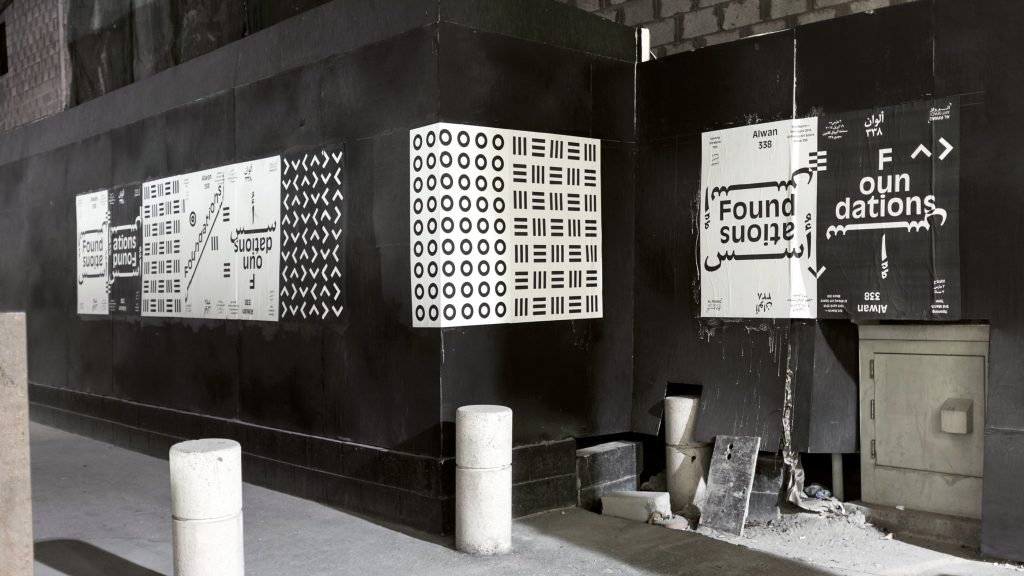

The visual identity and poster series we designed for the Alwan338 Festival is based on three conceptual approaches.
Foundations
We developed four bold patterns consisting of repetitive basic graphic elements aligned to a linear grid. The graphic elements serve as foundation /basis of the visual identity and form the connecting links between graphic and typographic compositions.
Bilingualism
Working with Arabic and Latin is an exceptional challenge as not only two different languages but two different scripts with opposite reading and writing direction confront each other. We approach each bi-scriptual project individually. For Alwan 338 we developed a typographic grid allowing us to simply rotate the respective media by 180° in order to place the contents of the opposing languages. Both languages form each others foundations.
Alwan (Arabic for Colours)
White represents the presence of all colours, whereas black is an absence of colour. Obvious enough for us to keep our artwork black and white.
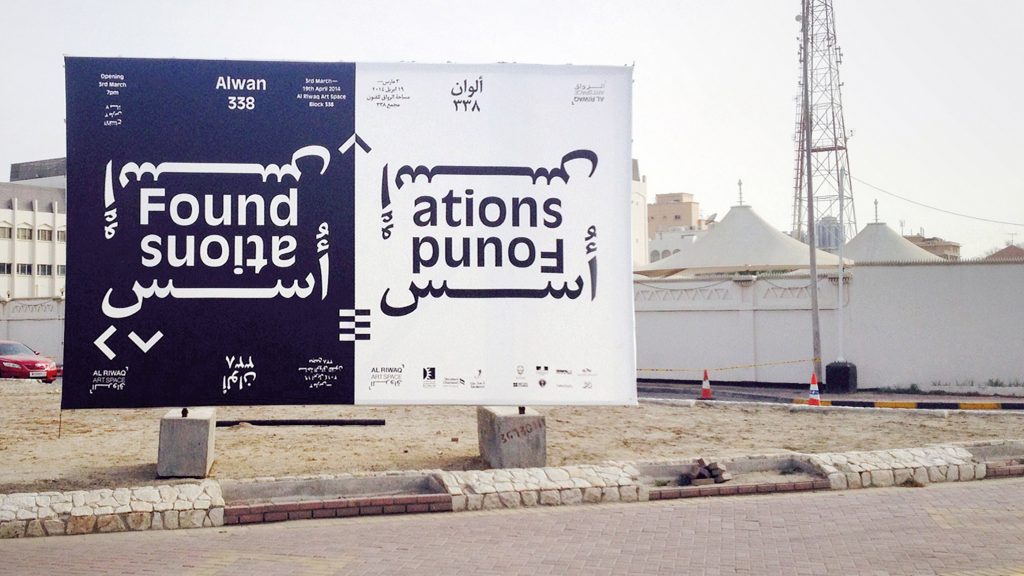
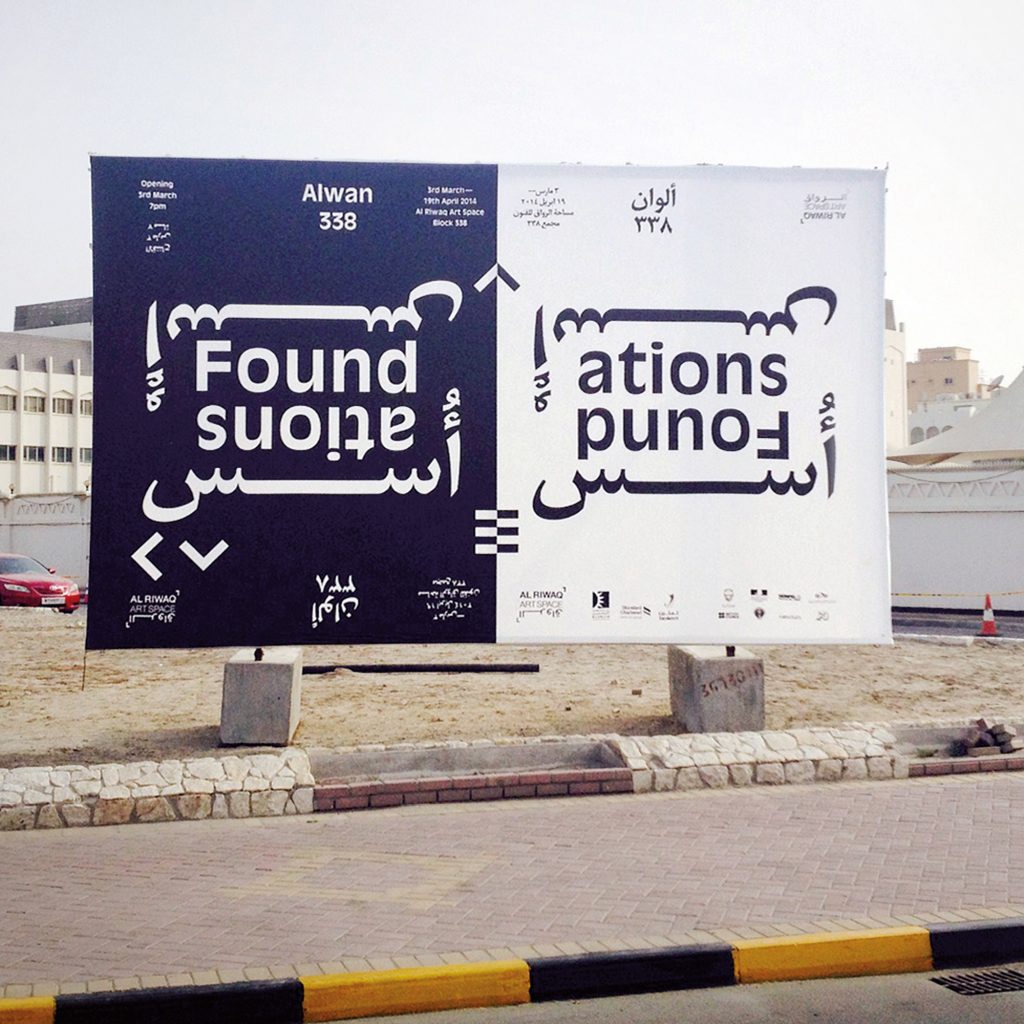
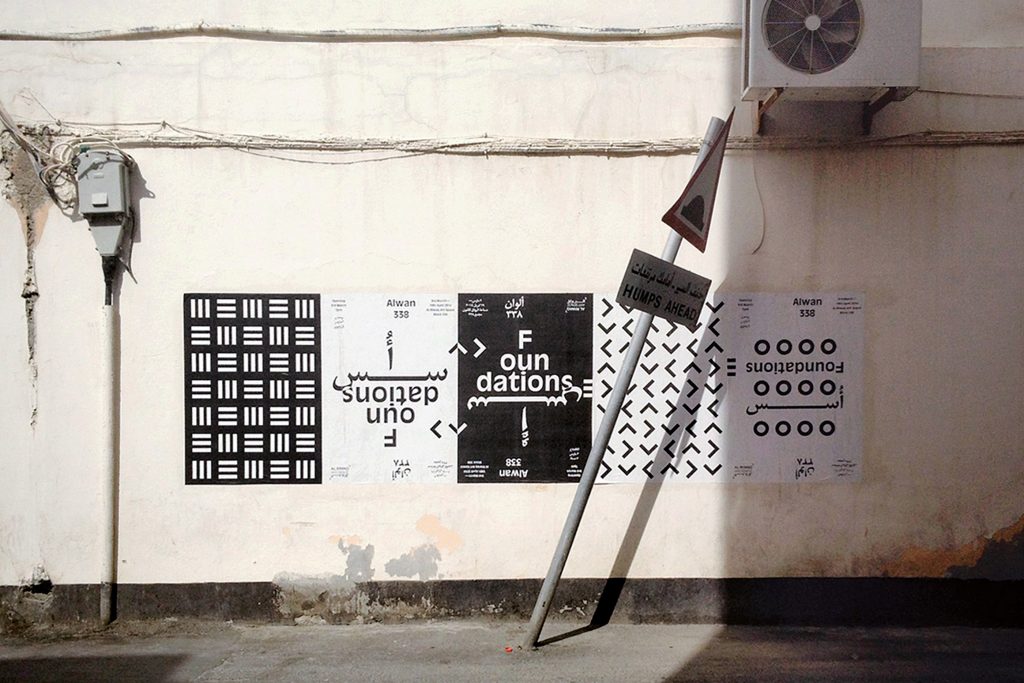
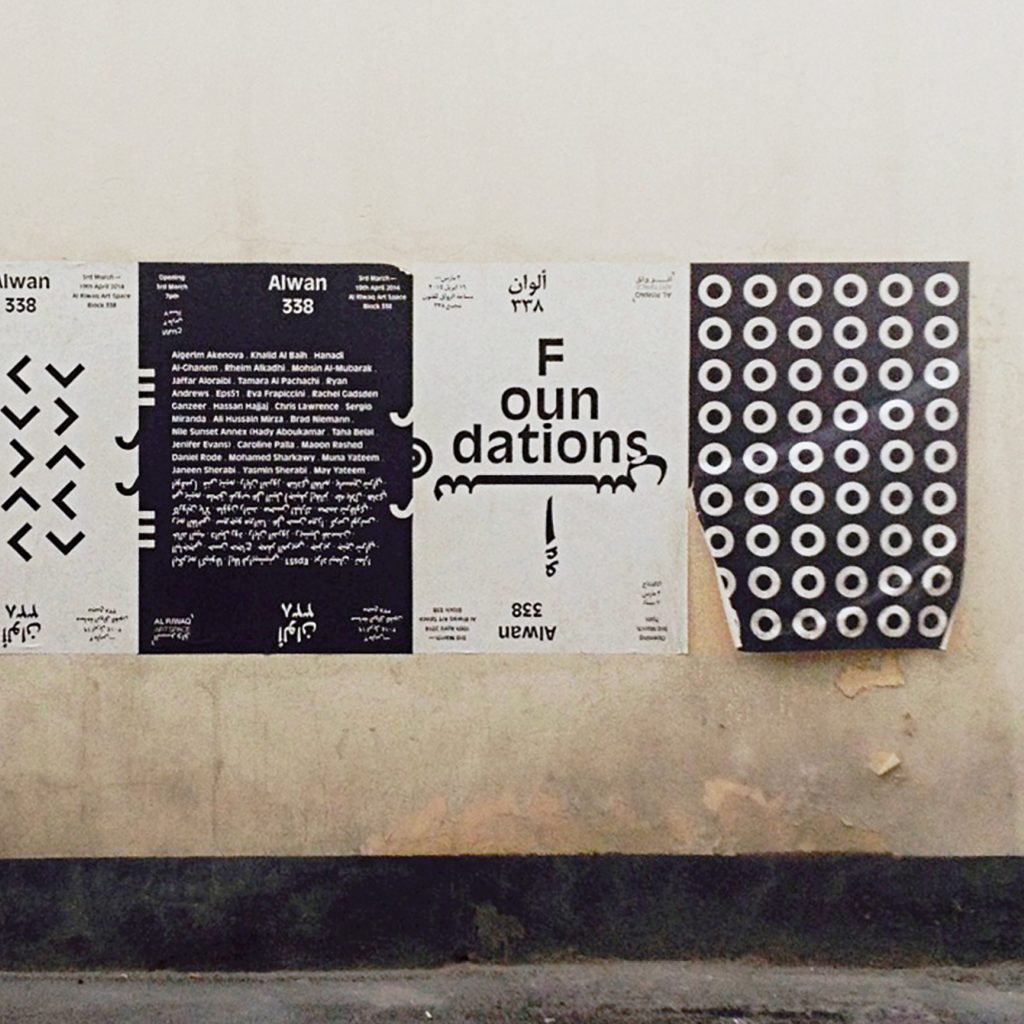
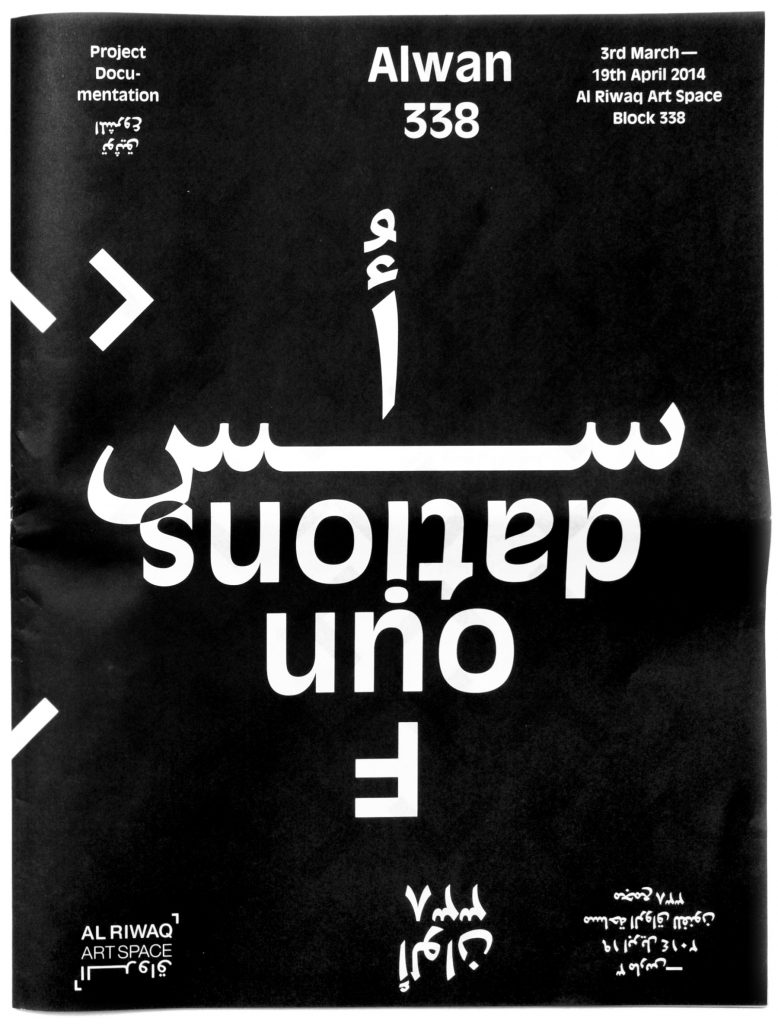

Also the design of the Alwan 338 newspaper is based on a typographic grid that allows us to simply flip the contents of the opposing languages. This way Arabic and English are treated completely equal and readers of both languages browse through the paper the same direction – they just have to turn the publication upside-down.
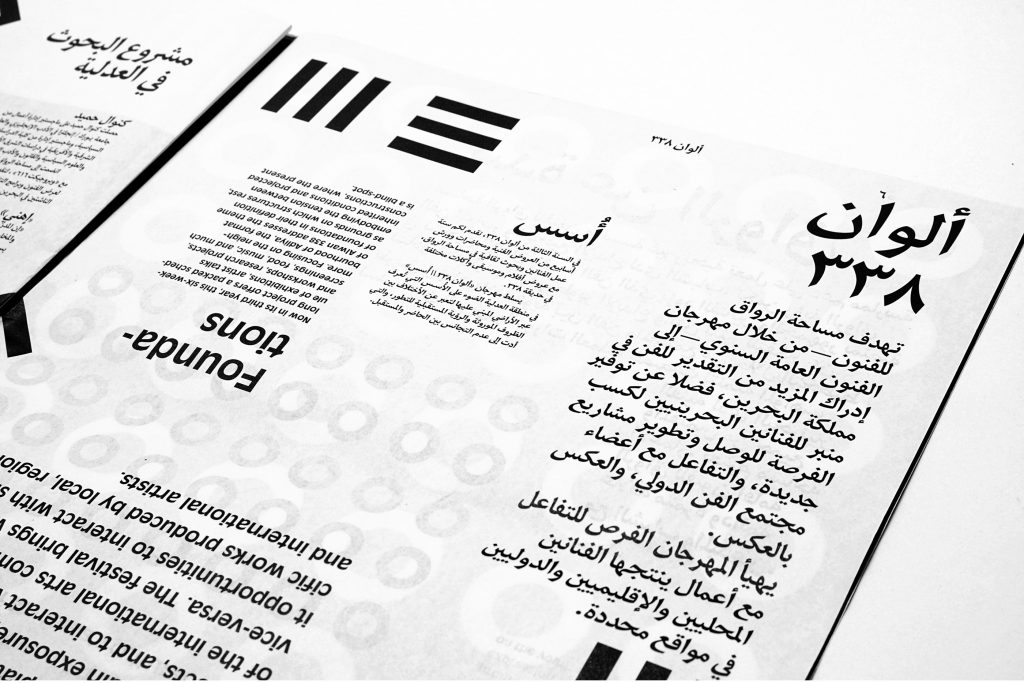
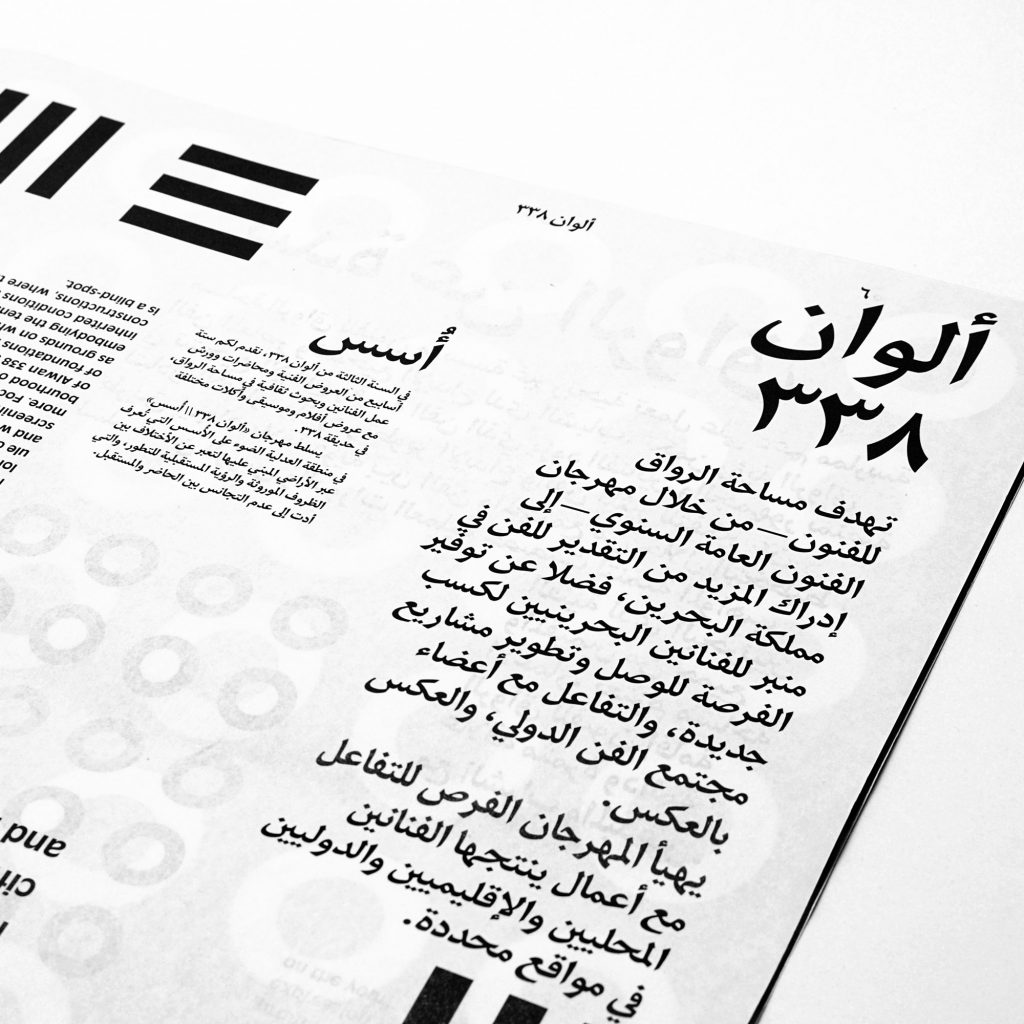
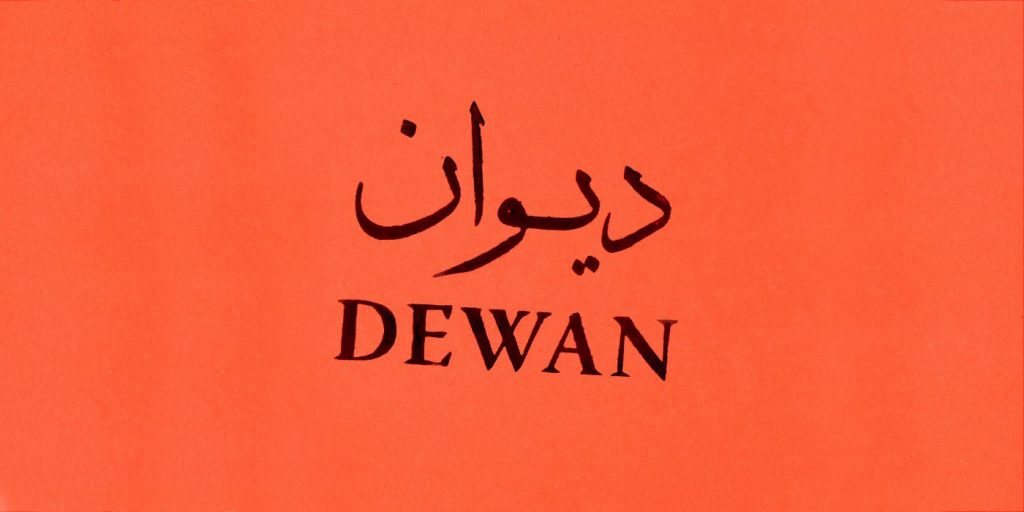
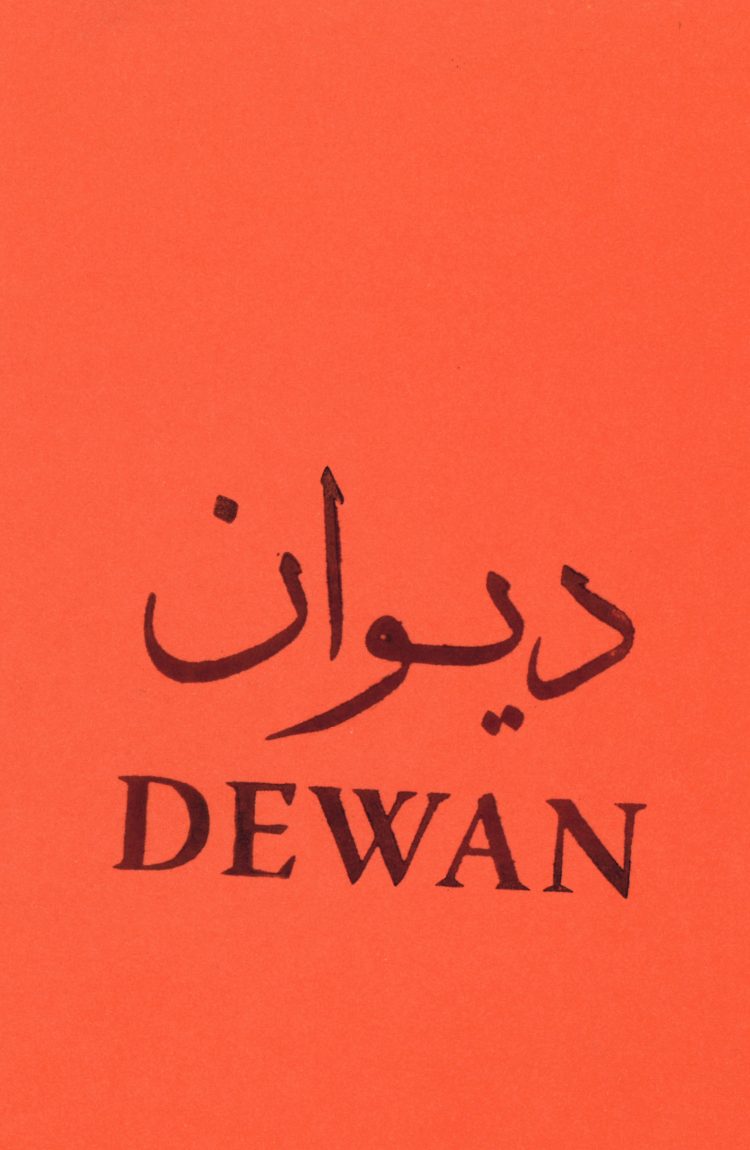
DEWAN Festival
How do we survive as artists in a context that is suffering from economic depravity and scarcity?
Client
DIWAN Symposium
Year
2014
Services
Visual Identity
Publication
Background
The DEWAN Festival is an annual symposium of contemporary dancers and performing artists in Wadi Rum, Jordan reflecting on the question of how to survive as artists in a context that is suffering from polarity between militarized regimes verses the fundamentalist religious movement and a youth bulge stepping forward with very limited opportunities?
We were commissioned to develop their logo and a visual concept for the festival publication.
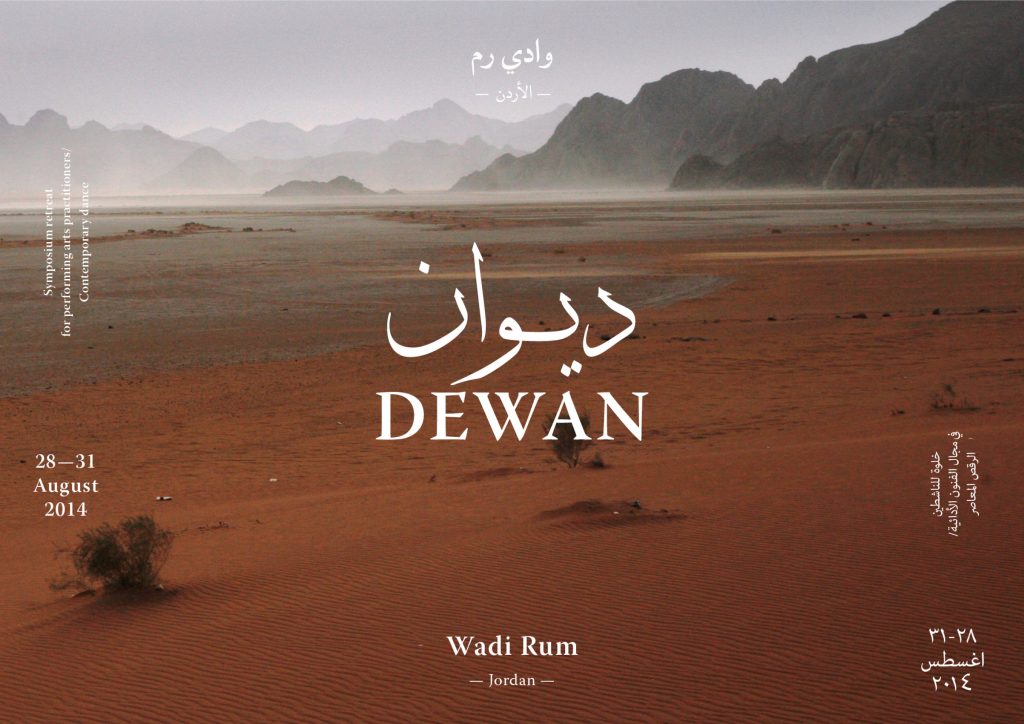
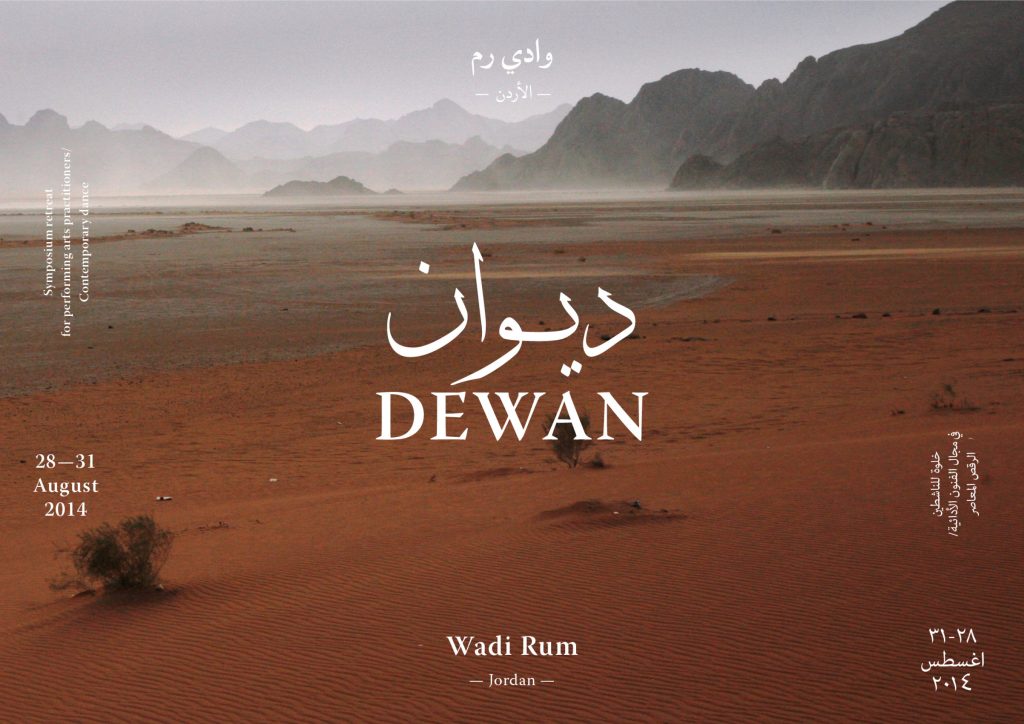
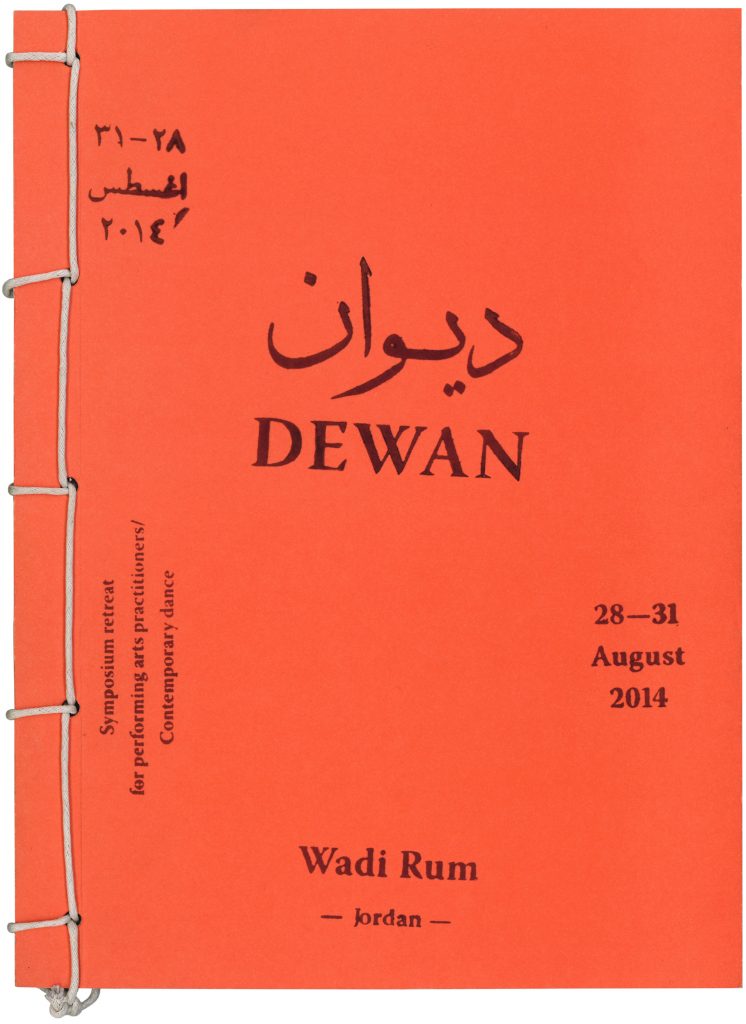

As the meeting is all about creativity we decided to leave the cover blank and had all typographic elements produced as stamps. All participants were able to design their own covers.
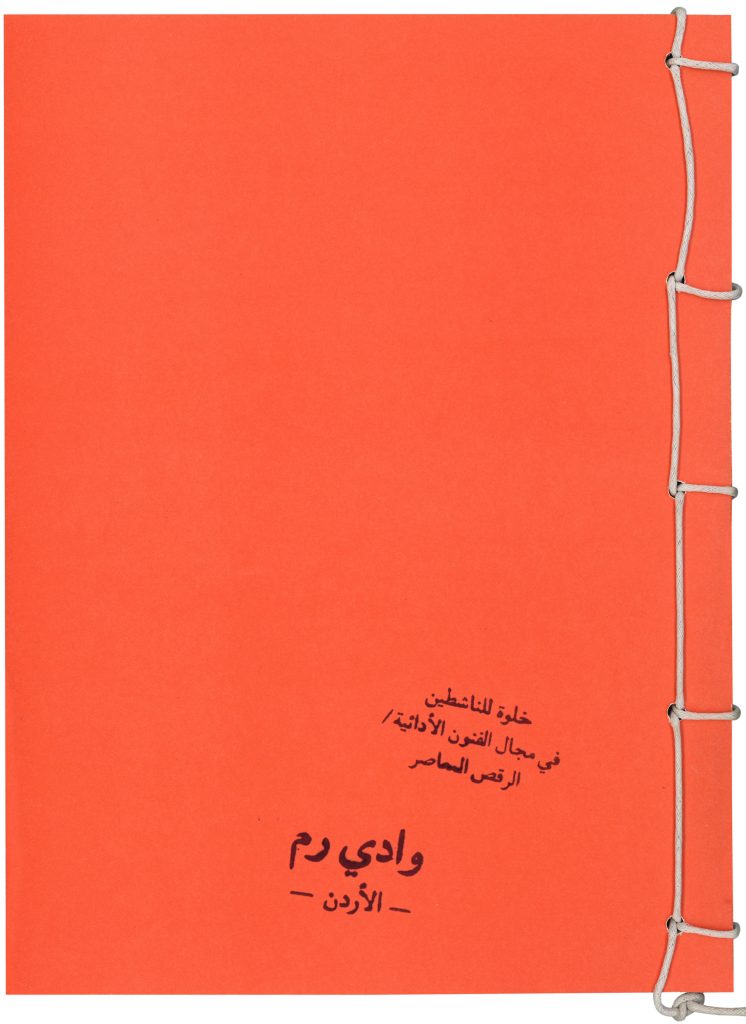

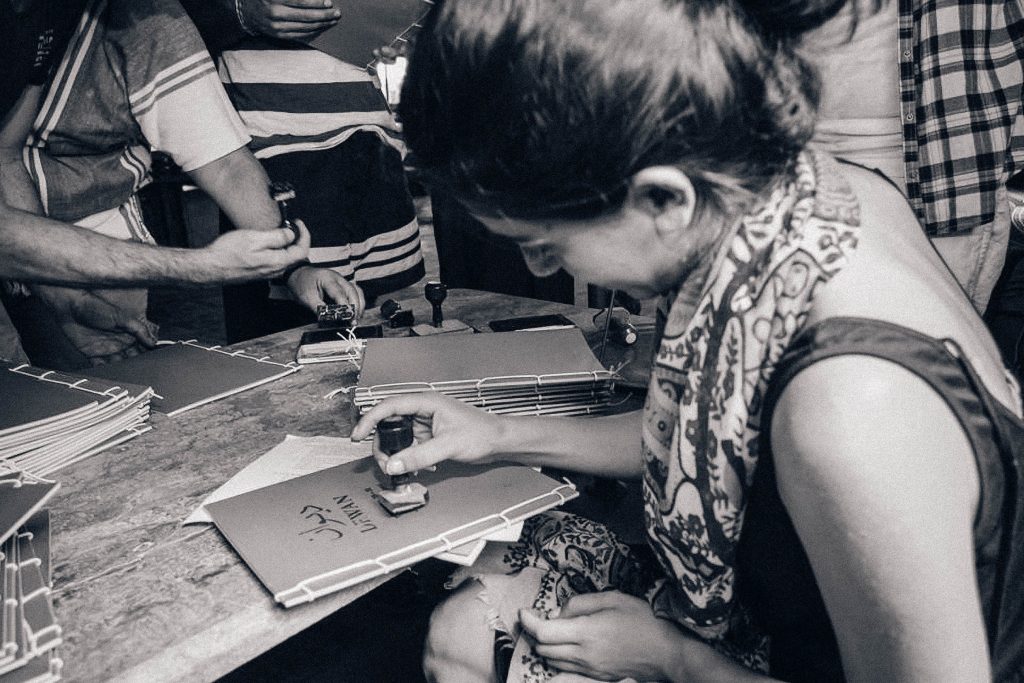

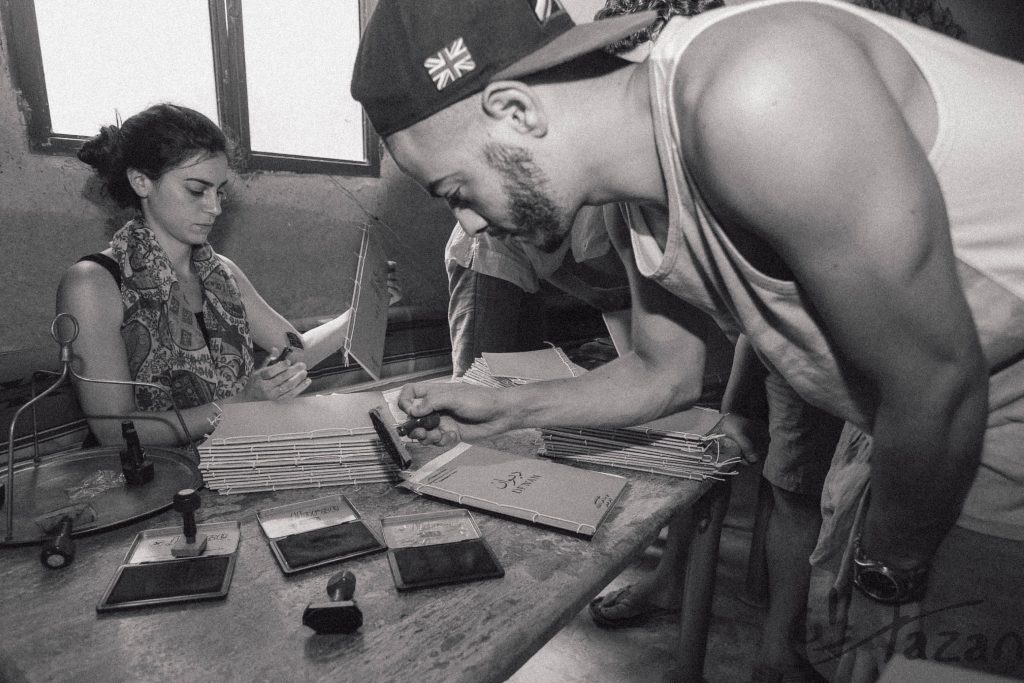

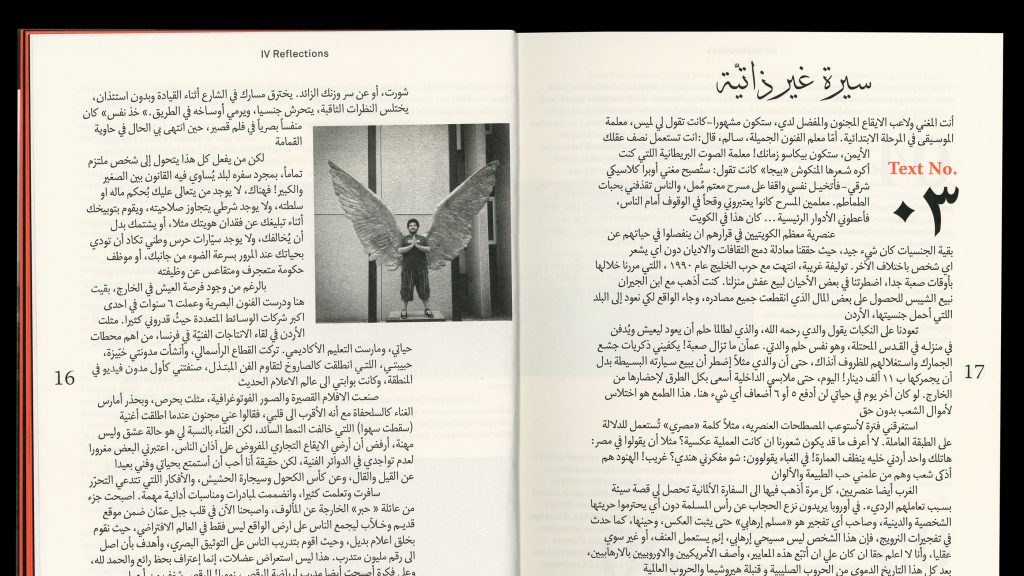
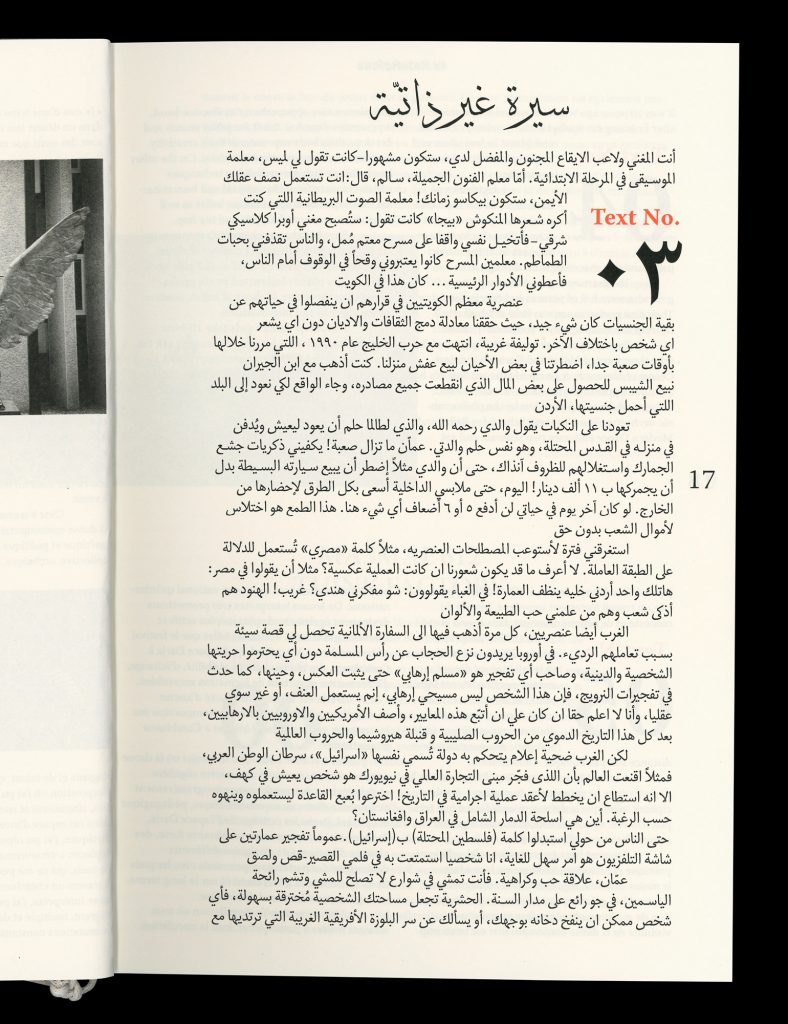


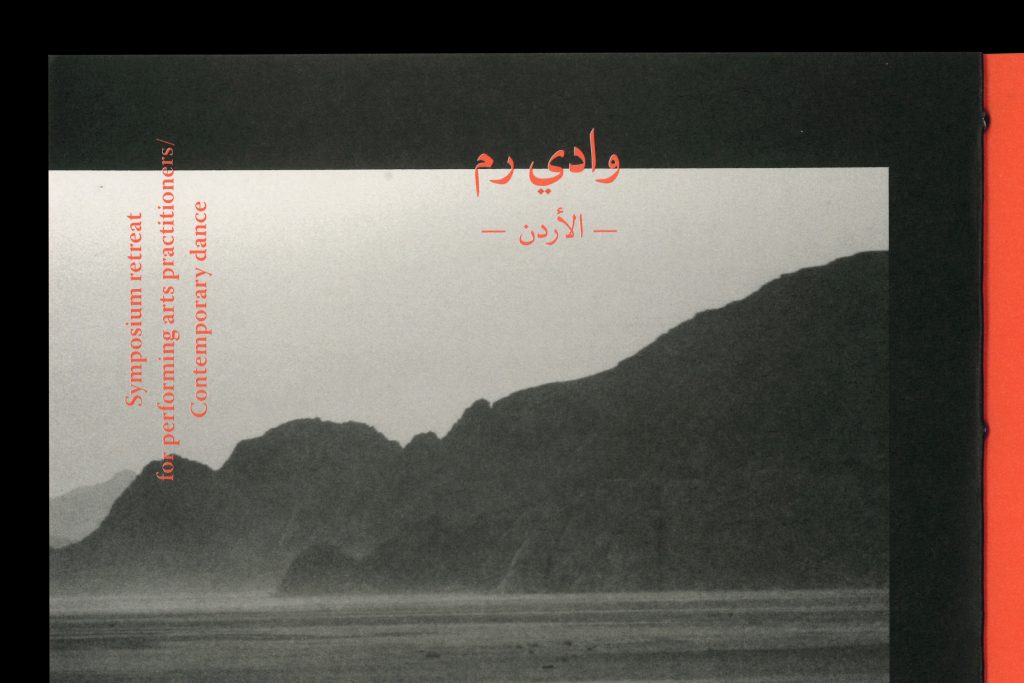
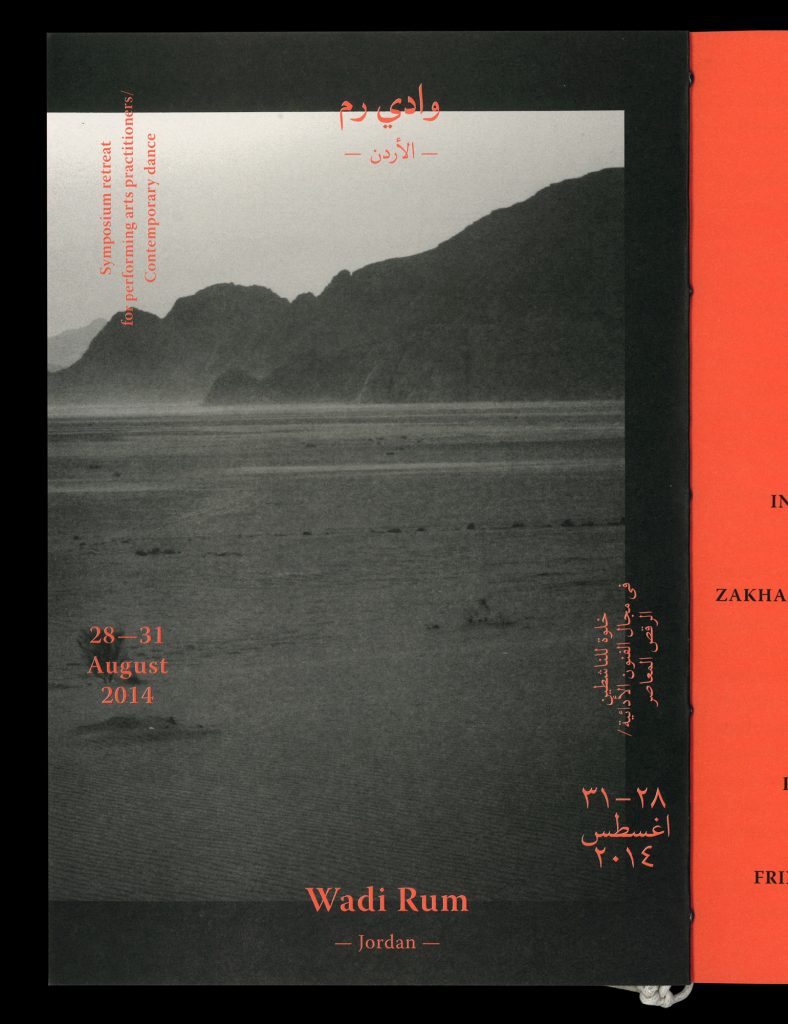
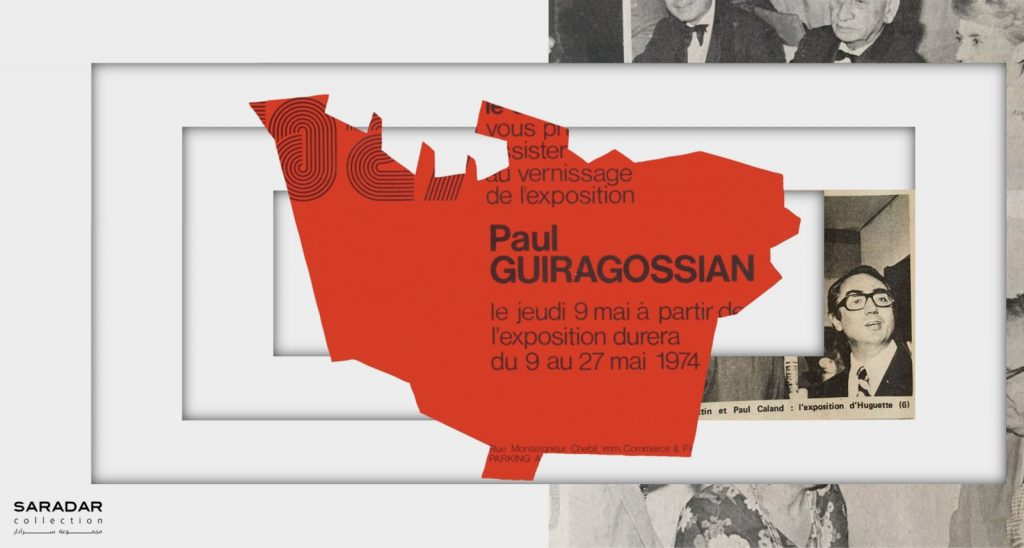
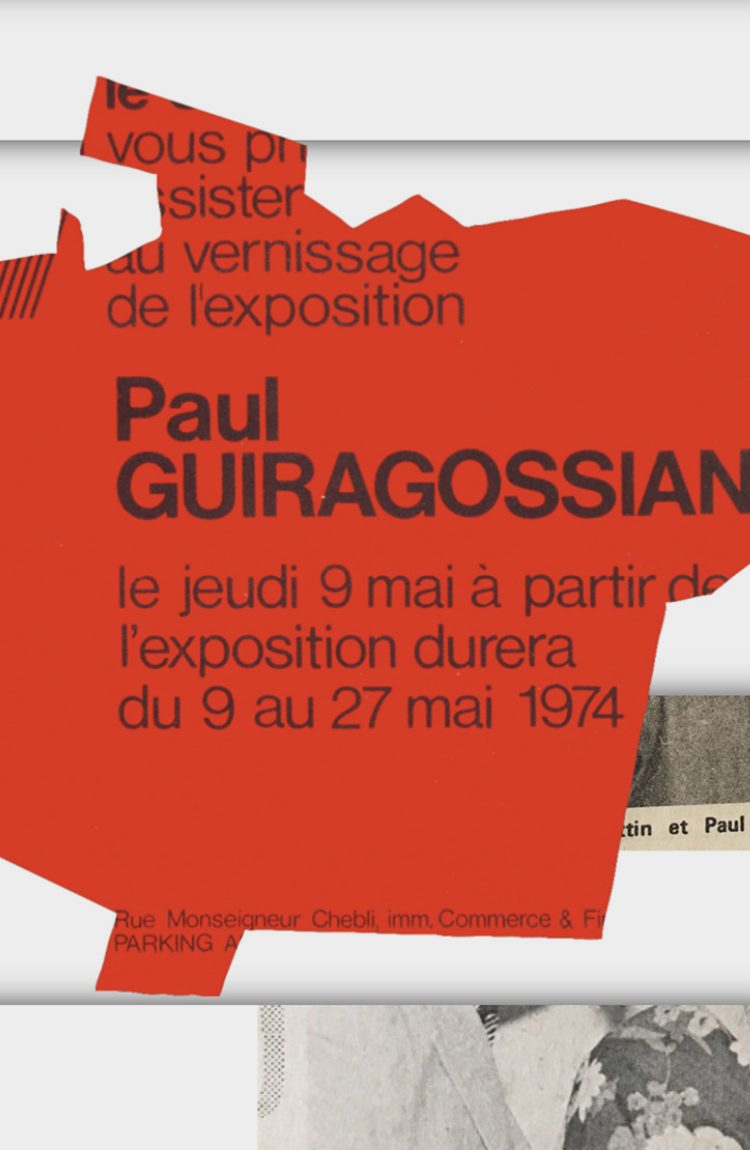
Saradar Collection Perspective #1
The Perspective #1 website features an interactive map of Beirut coupled with a dynamic timeline, charting out Beirut’s art scene from 1955 to 1975.
Client
Saradar Collection
Year
2018
Services
Web Design
Background
Witness to a Golden Age is an online database and mapping project that provides access to more than 1,000 archival documents related to hundreds of art exhibitions at more than 50 art spaces that were operational in Beirut from 1955 to 1975. It features an interactive map of Beirut coupled with a searchable timeline where visitors can examine and download archival materials ranging from exhibition catalogues, posters and invitation cards, to photographs and film footage of openings and art events, along with personal correspondence, artist/gallery contracts, newspaper reviews and articles. It is an ongoing research initiative that will continue to expand in scope and content. Further materials and papers will be made available on the respective website.
Witness to a Golden Age is the inaugural edition of Perspective, the Beirut-based Saradar Collection’s annual research program, where a curator is invited to critically engage with a theme derived from the collection.
Curated by
Sam Bardaouil and Till Fellrath
Website
www.saradarperspective.com
Coding by
Marco Land
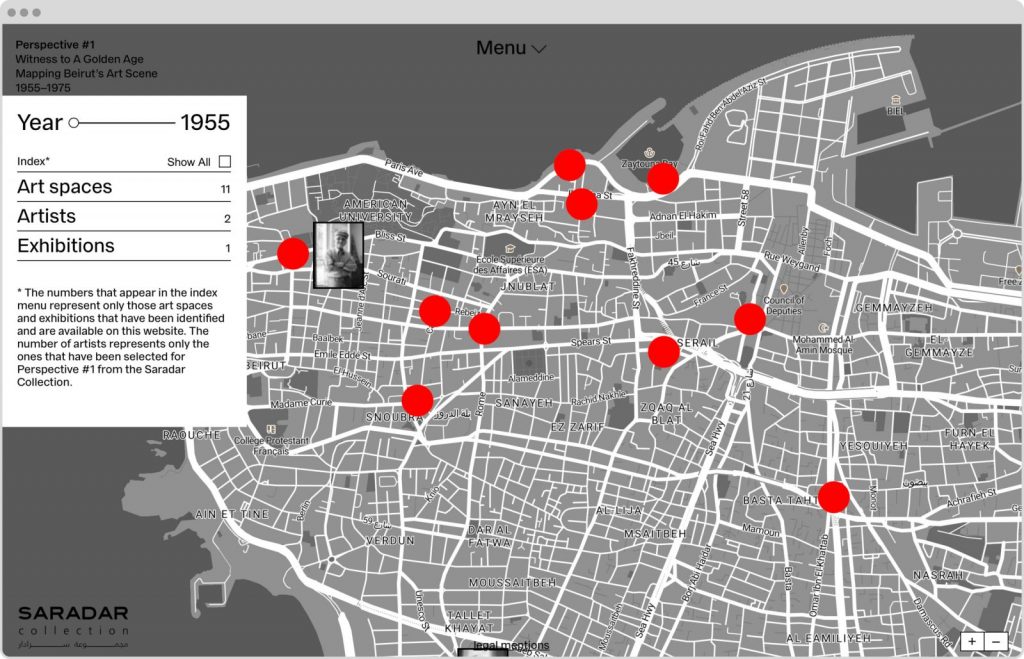

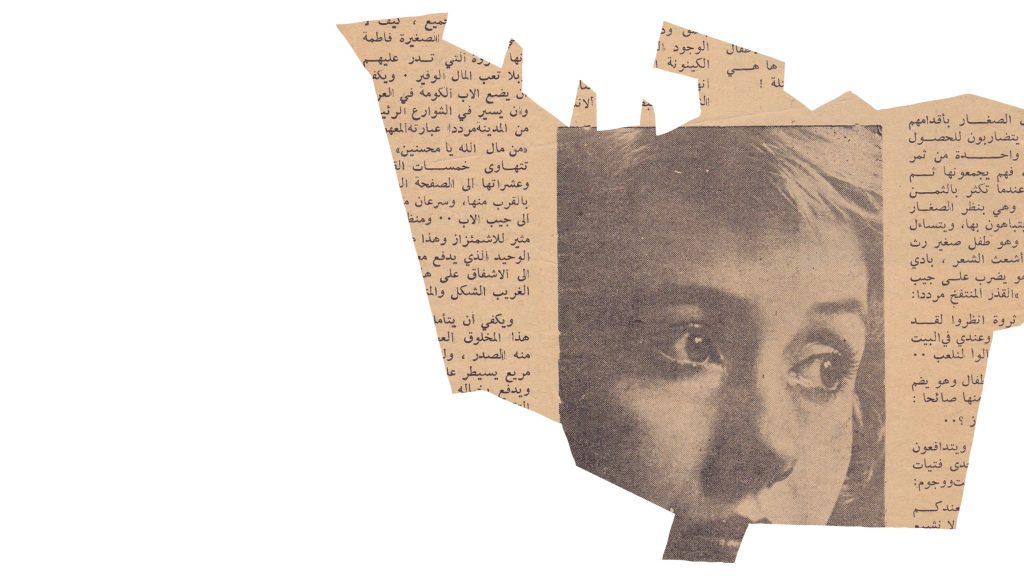



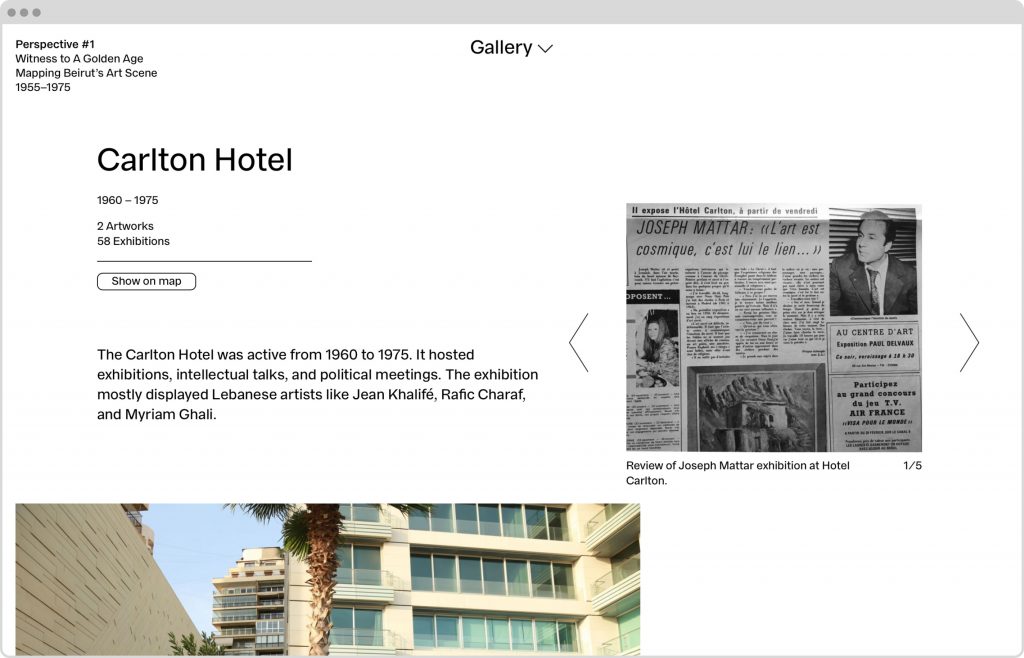

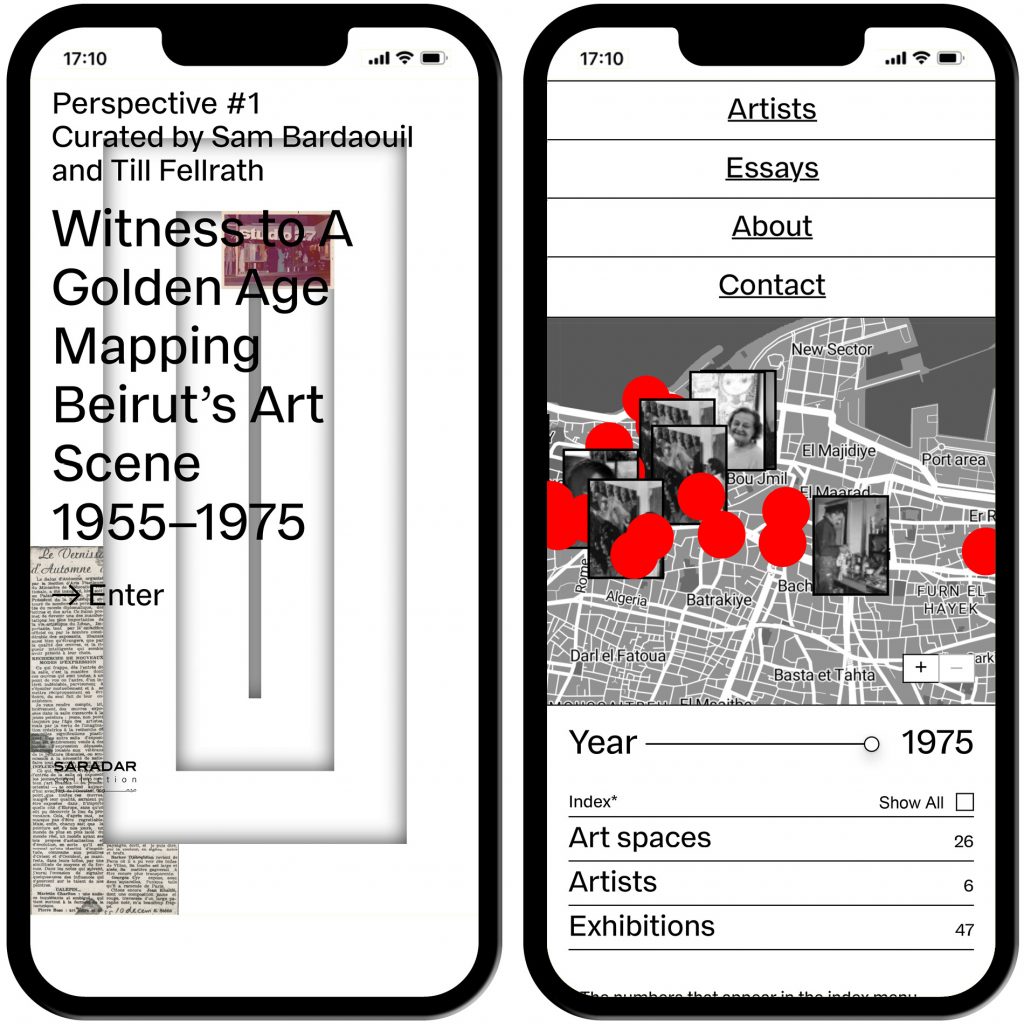

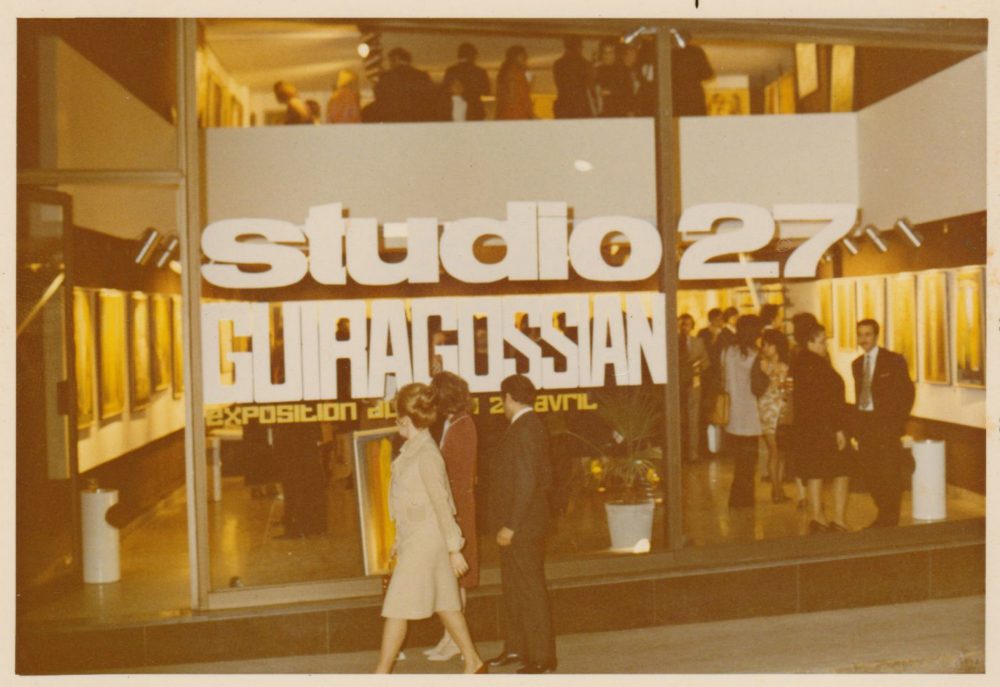

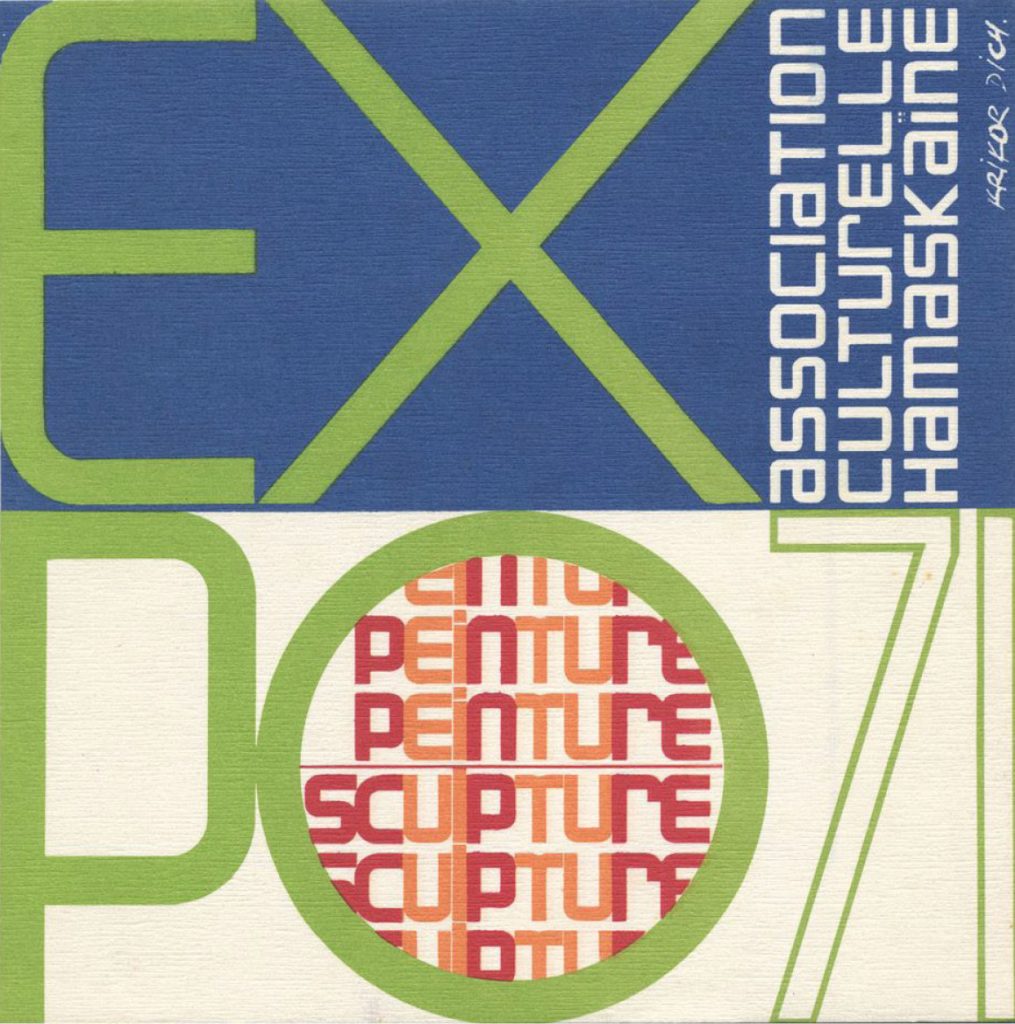

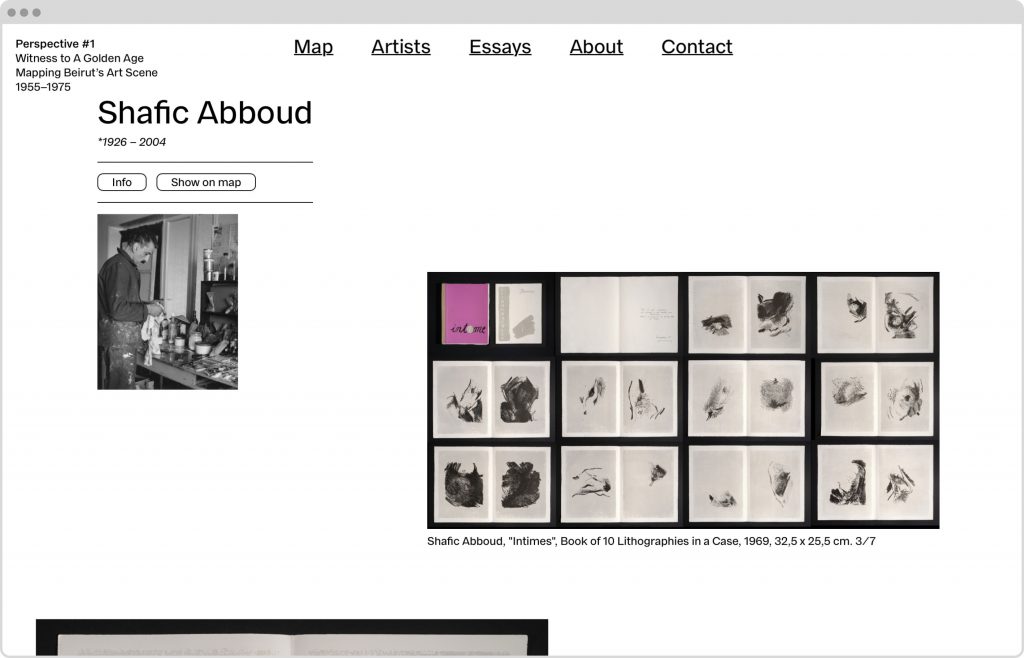

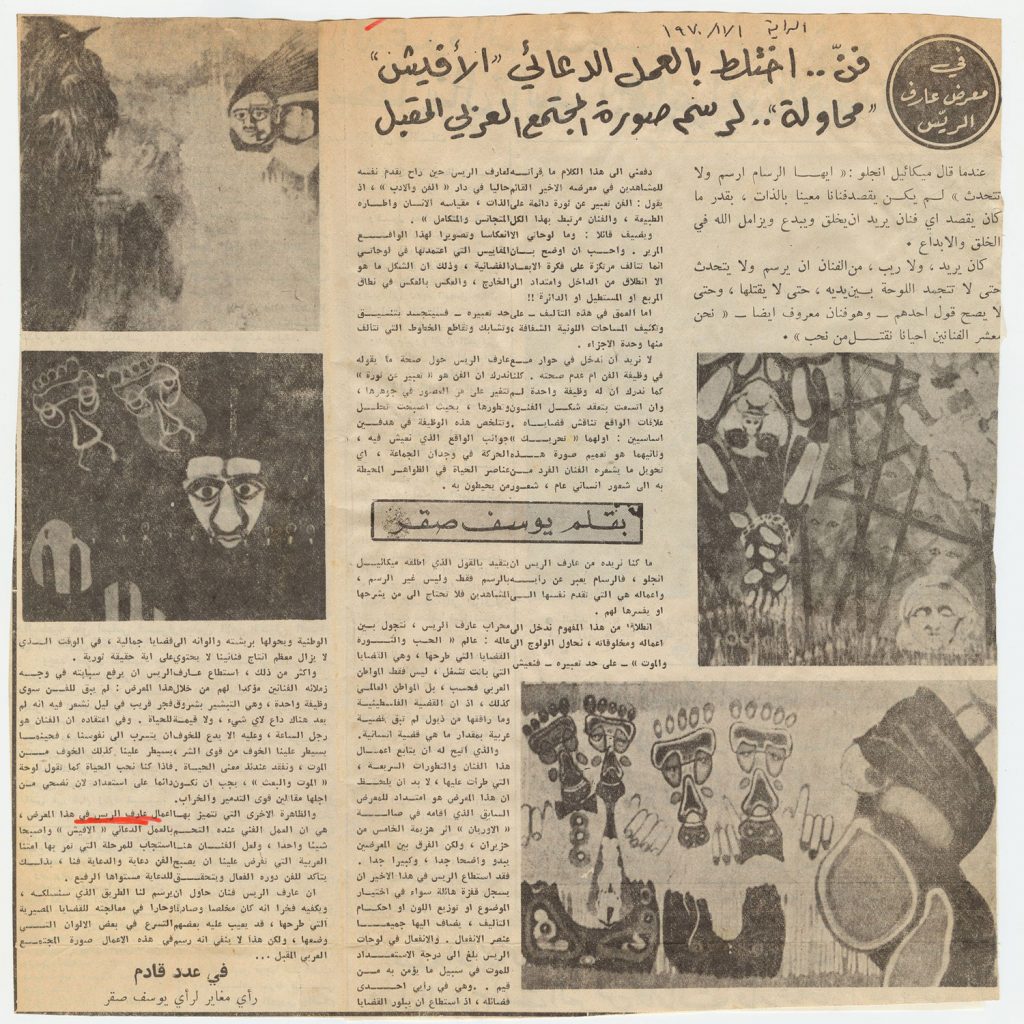

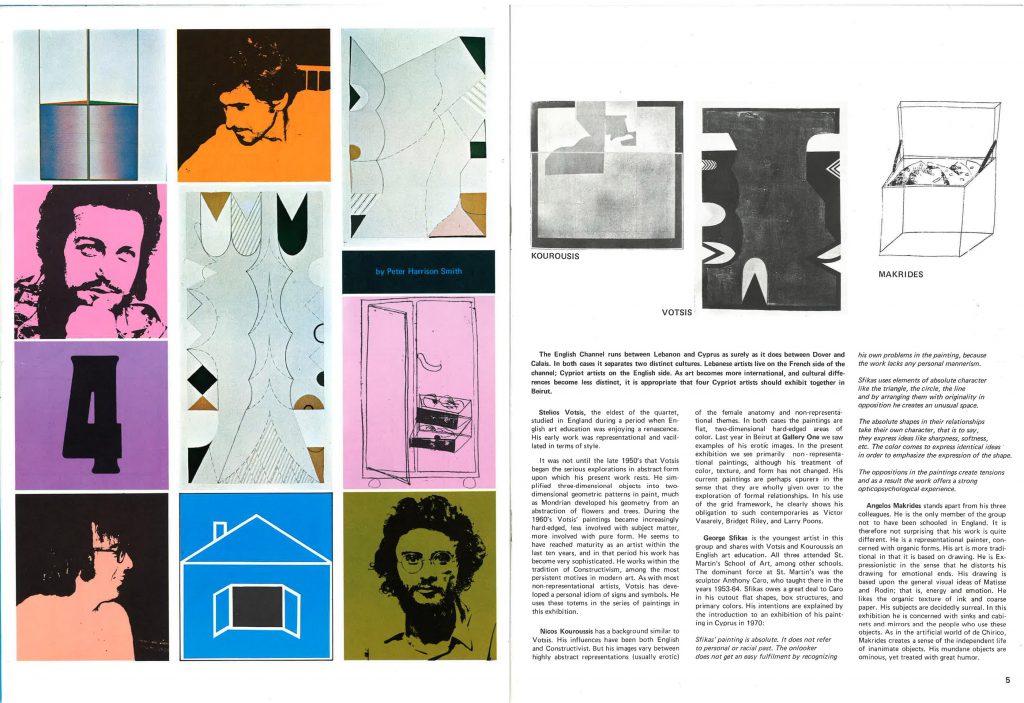

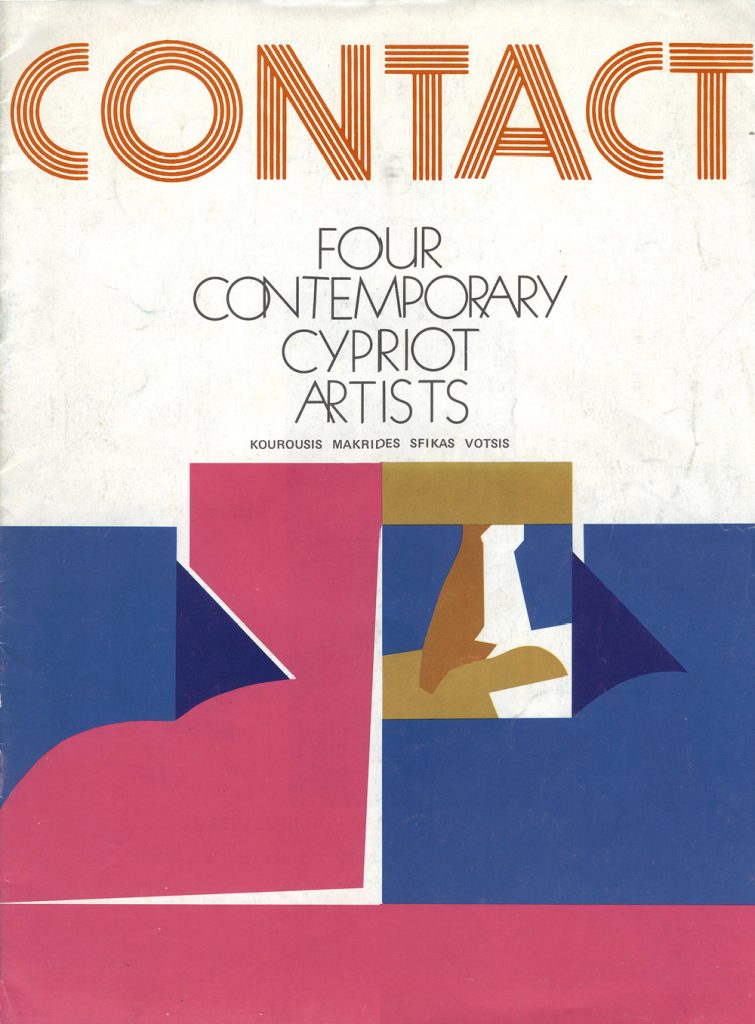

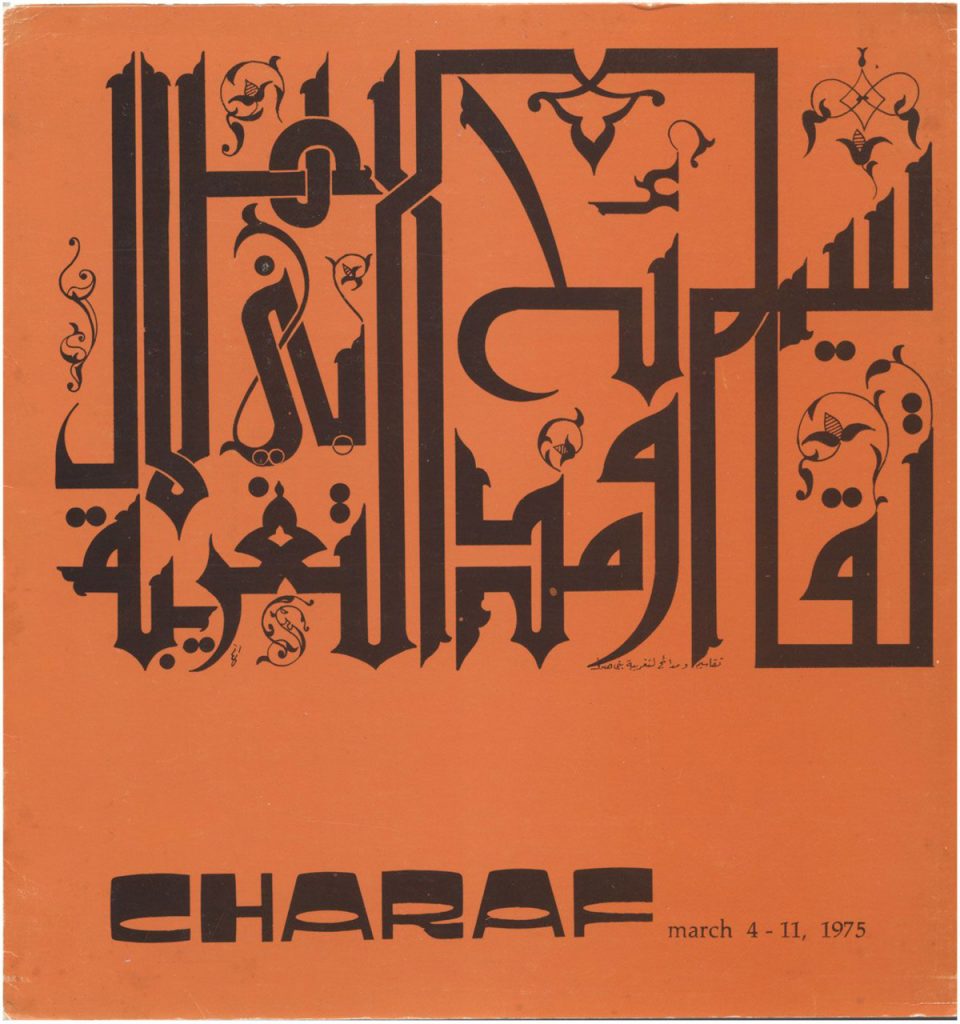

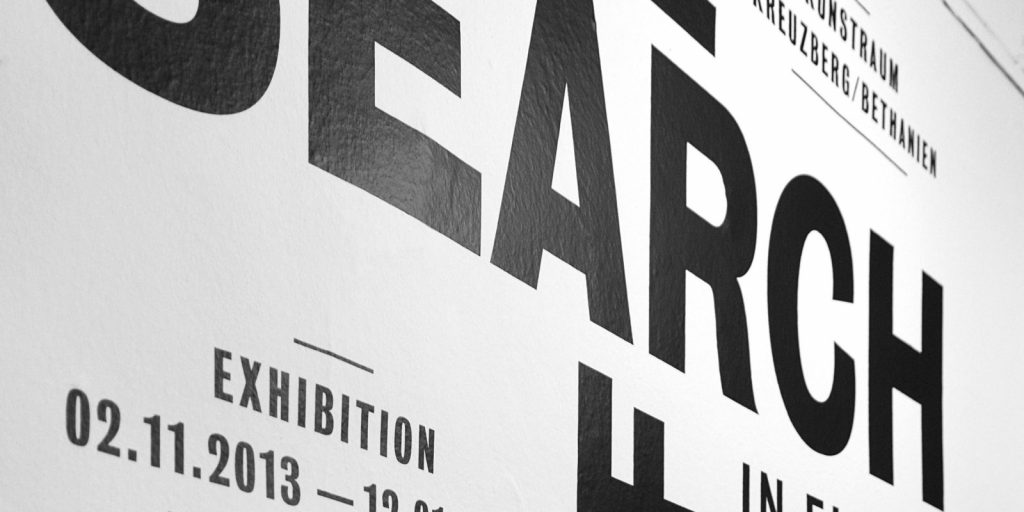
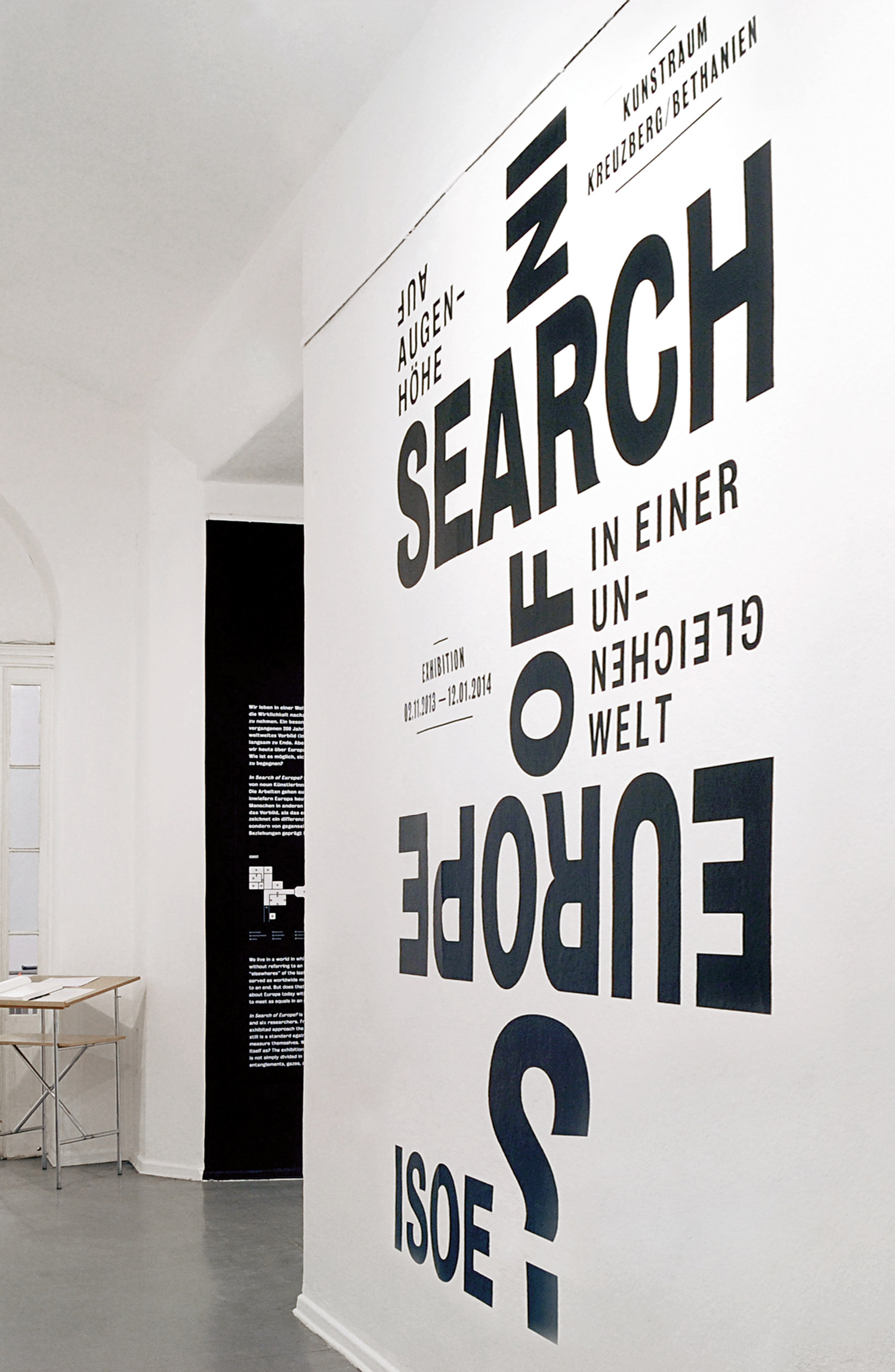
In Search of Europe
To what degree is Europe still a standard for other parts of the world. Was it ever the role model it likes to see itself as?
Client
ZMO Berlin / Daniela Swarowsky
Year
2013
Services
Visual Identity
Book
Exhibition Design
Poster
Web Design
Background
Daniela Swarowsky and Samuli Schielke commissioned us to develop the visual identity, exhibition design, website and publication for the collaboration between six Berlin based researchers and six artists from outside of Europe. To what degree is Europe still a standard for other parts of the world. Was it ever the role model it likes to see itself as?
Curated by
Andrea Heister
Samuli Schielke
Daniela Swarowsky
Published by
Jap Sam Books, 2013
Exhibition Photography by
Mike Terry
Website
www.insearchofeurope.de
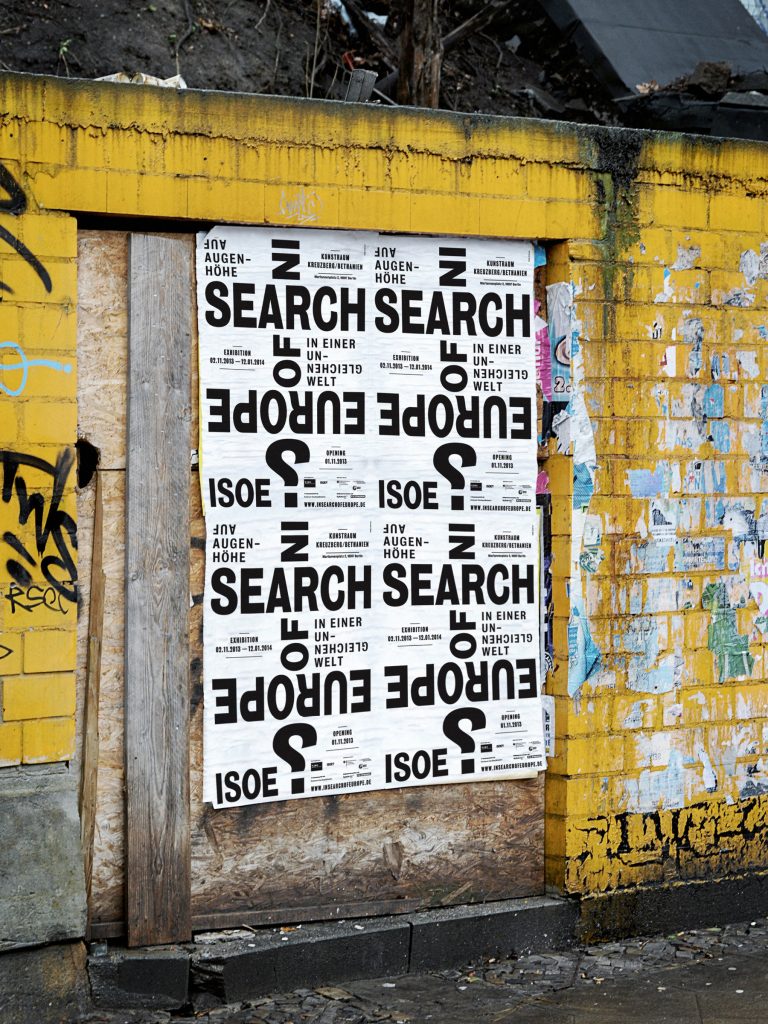

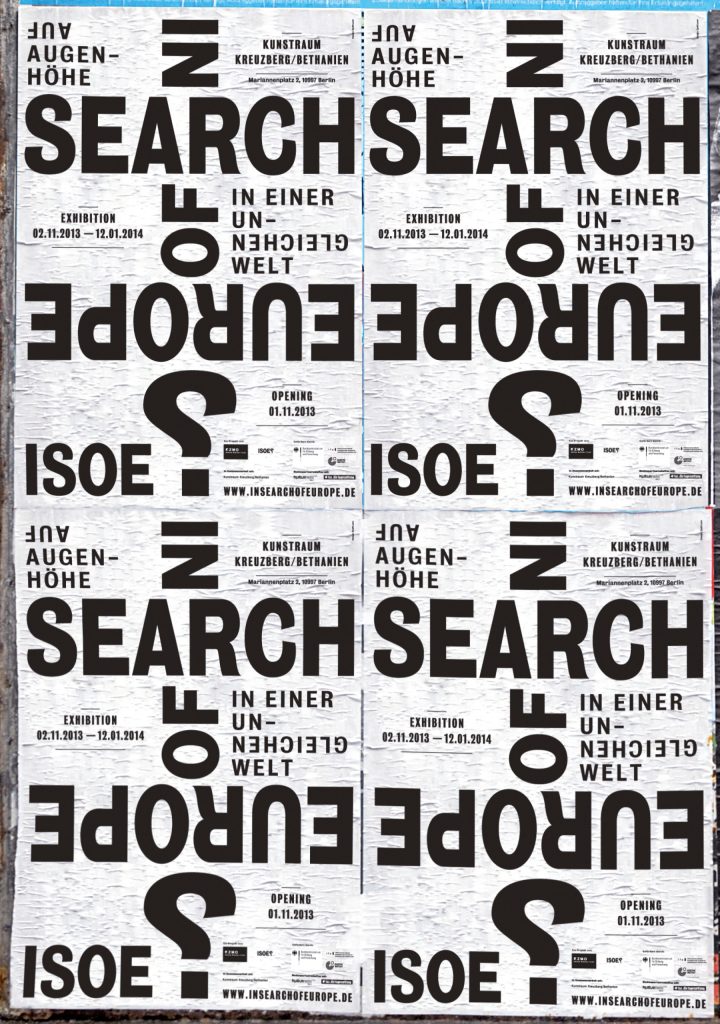

The questioning of Europe is also the focus of our visual identity which we developed a playful, purely typographic language for. Is Europe still the stable and tangible old continent or is it rather bottom up — completely out of shape and focus? From which angle does the world view Europe?
The concept of investigation and viewing from different perspectives was applied to diverse media and also the typographic exhibition design.
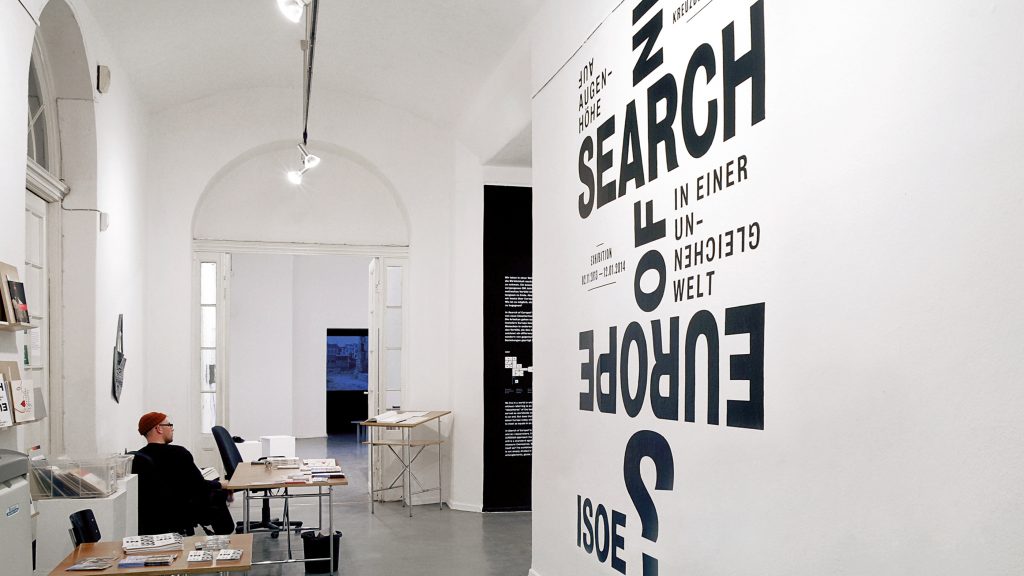

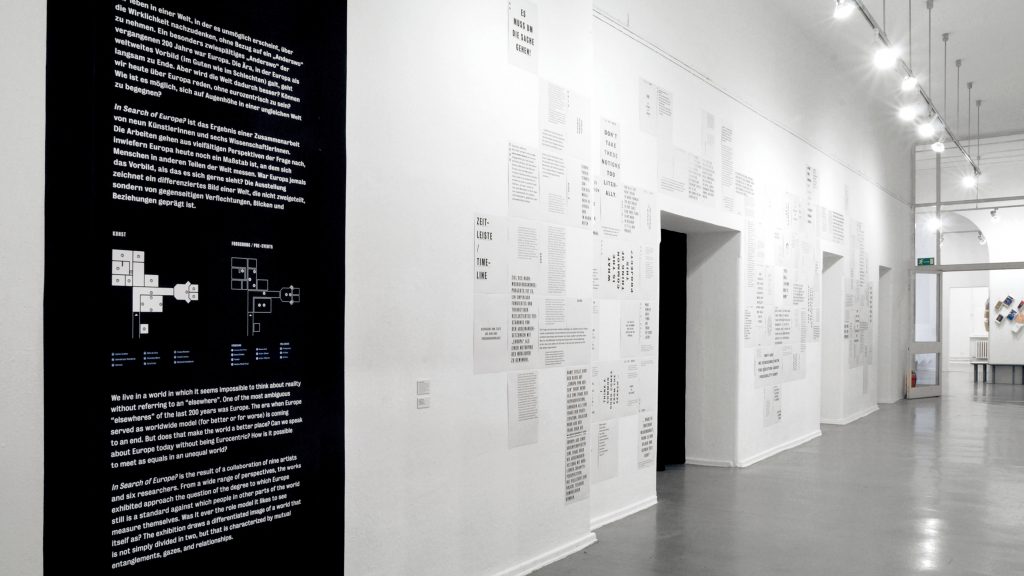

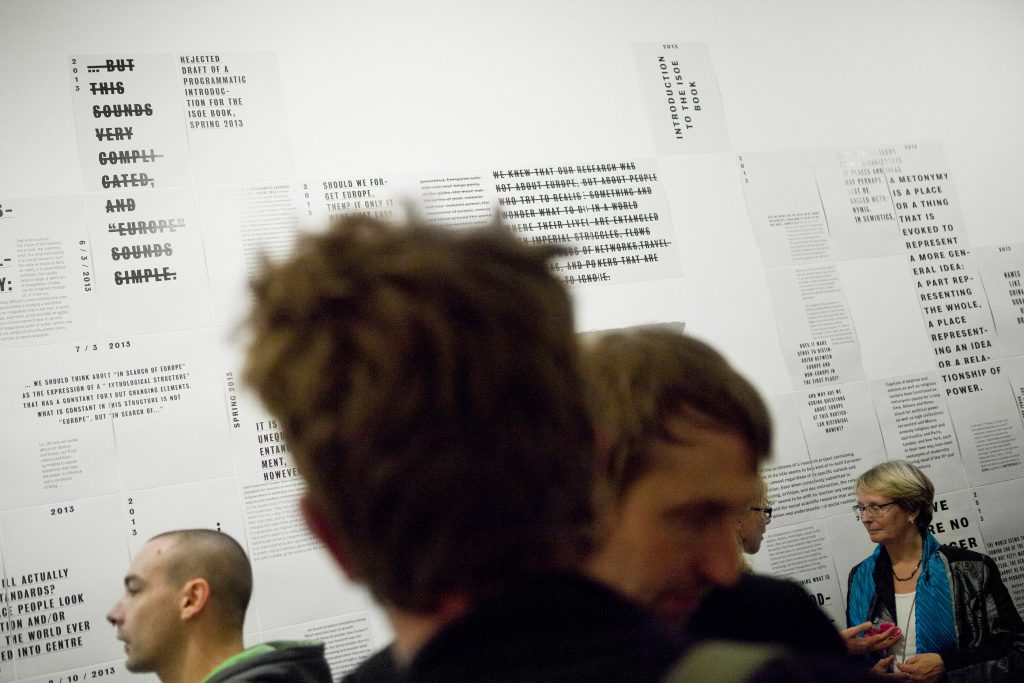

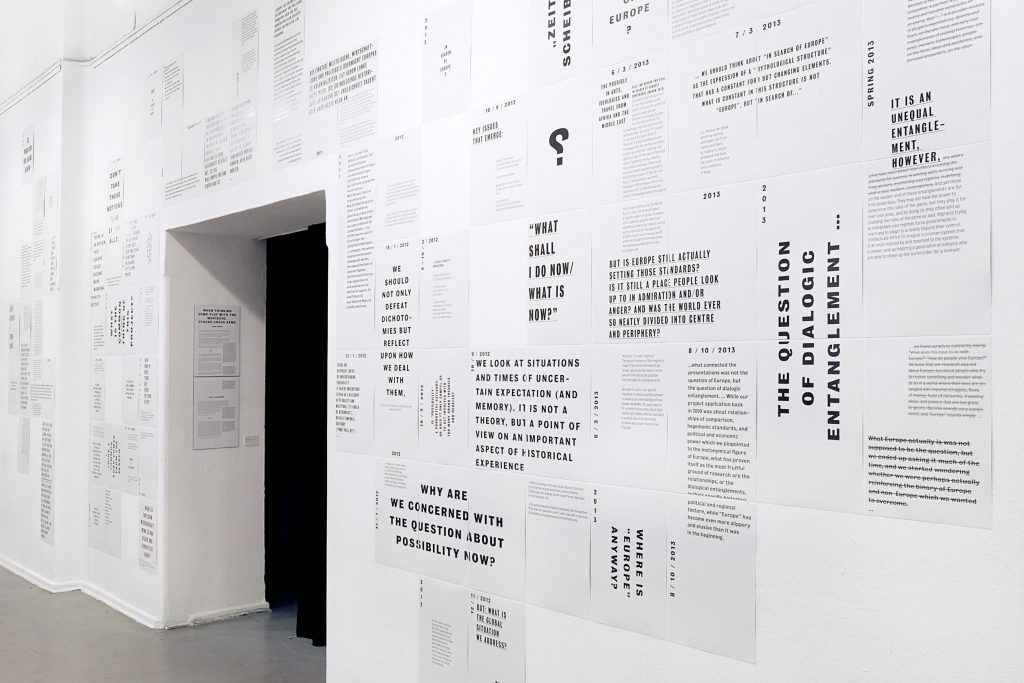

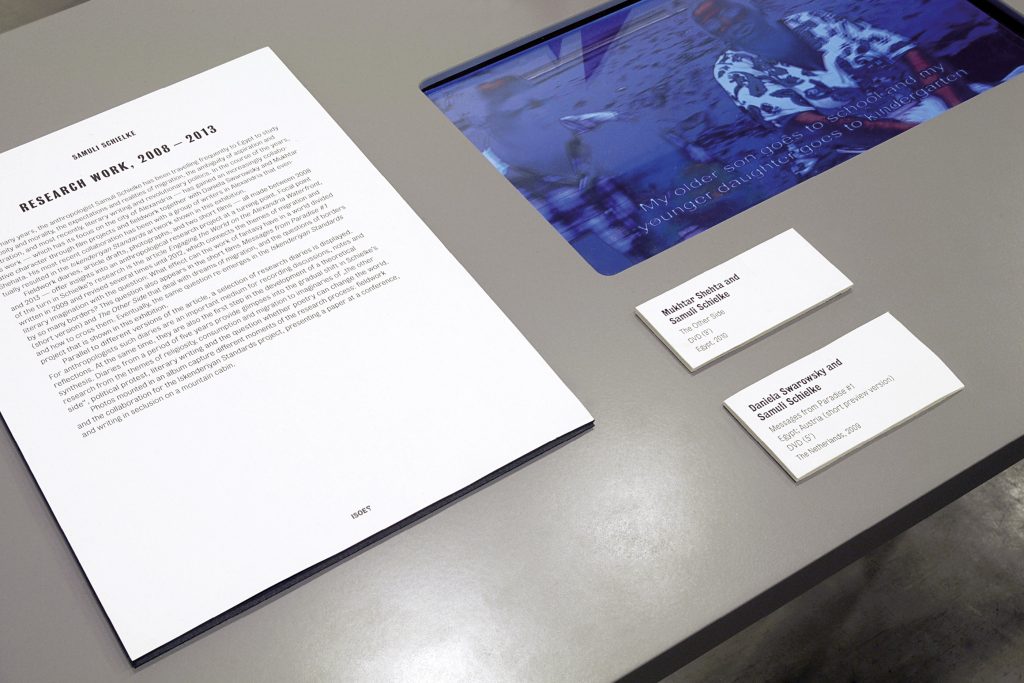

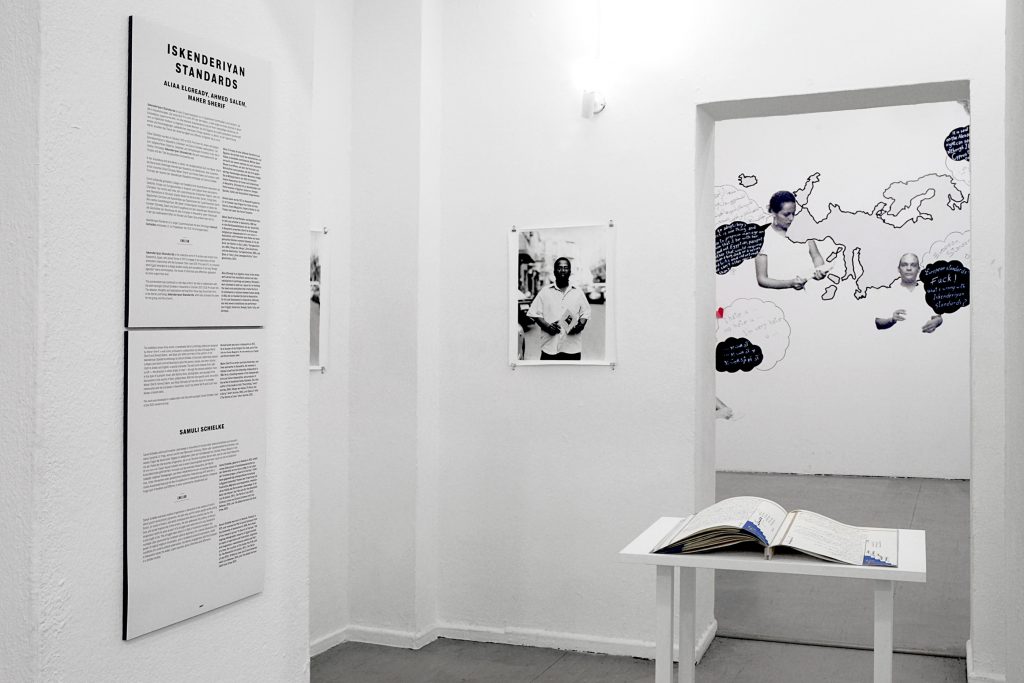

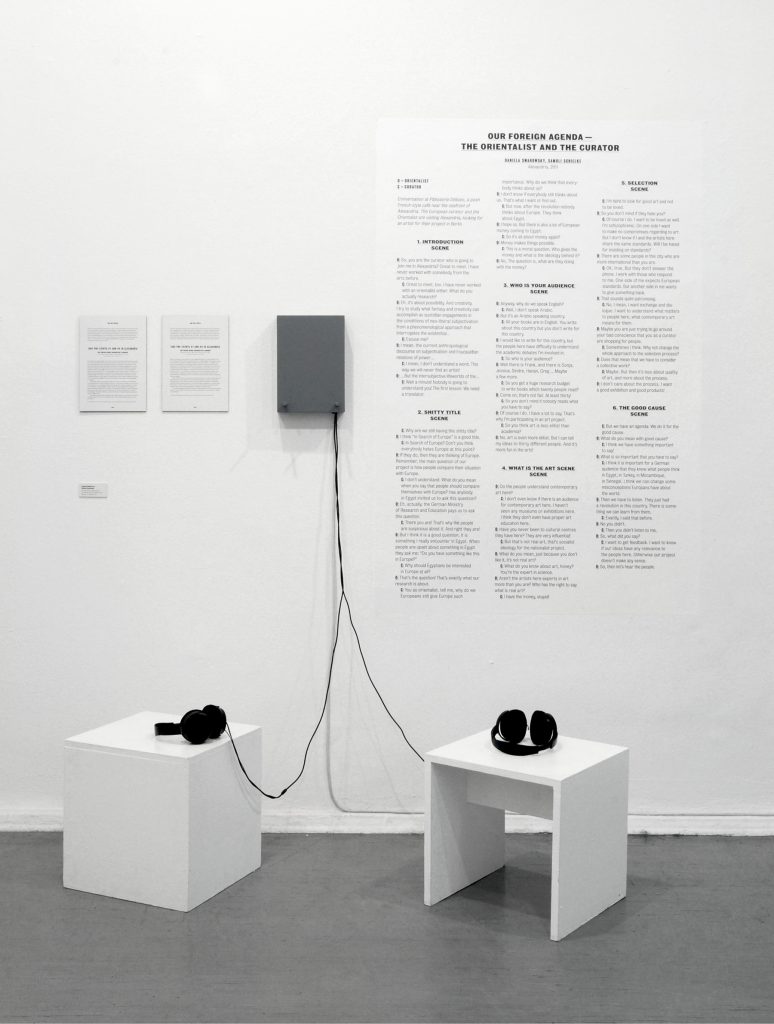

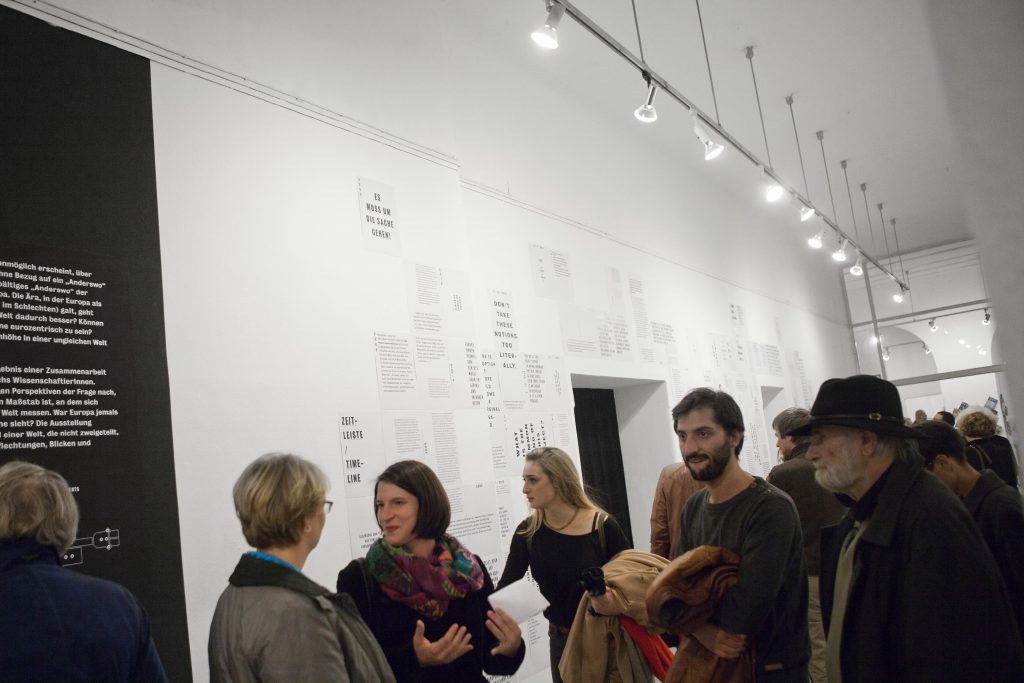

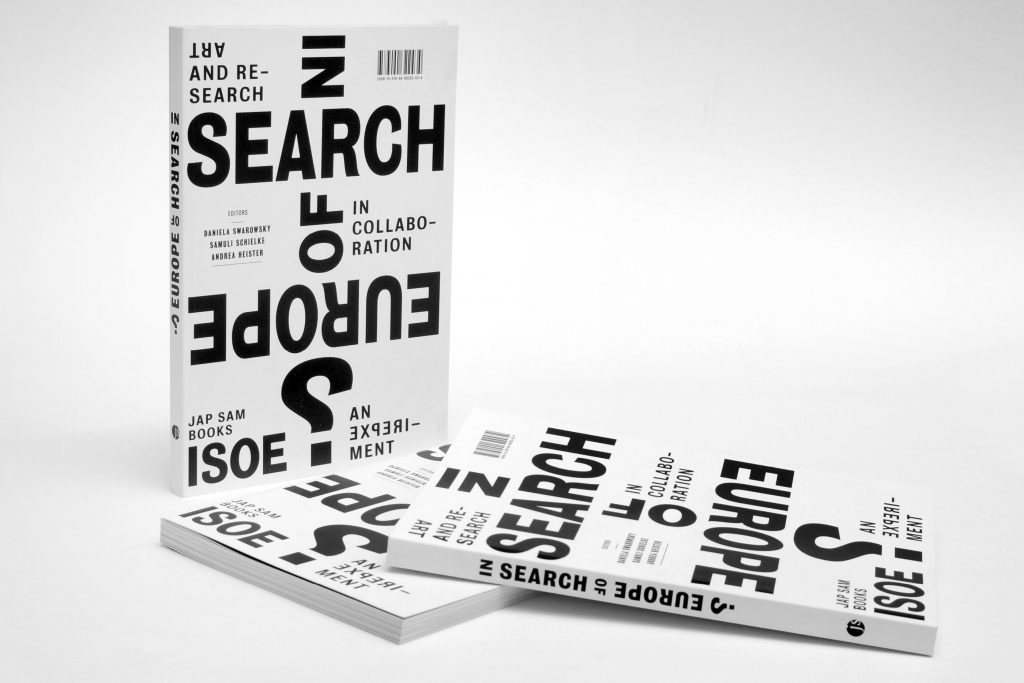

The publication is set-up multi-lingual. Each chapter/article is written in English as well as the author’s mother tongue – all in all 6 languages. Sticking to our typographic concept, we developed different solutions of dealing with the bilingual design for each article.
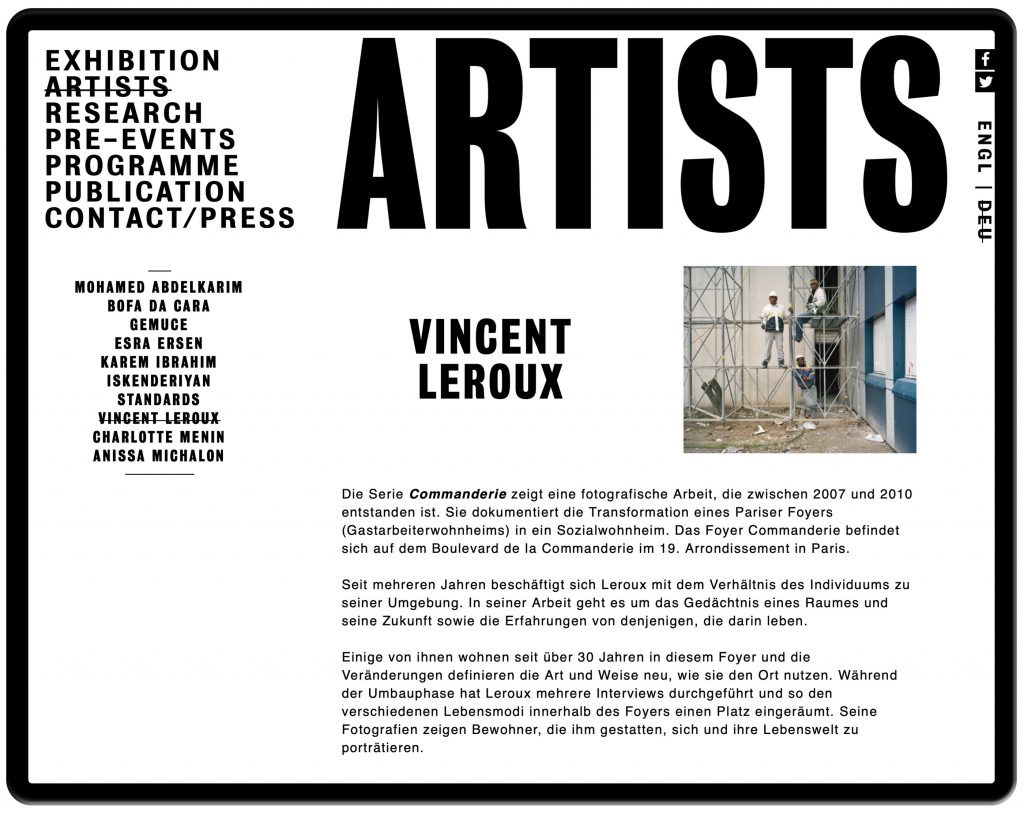



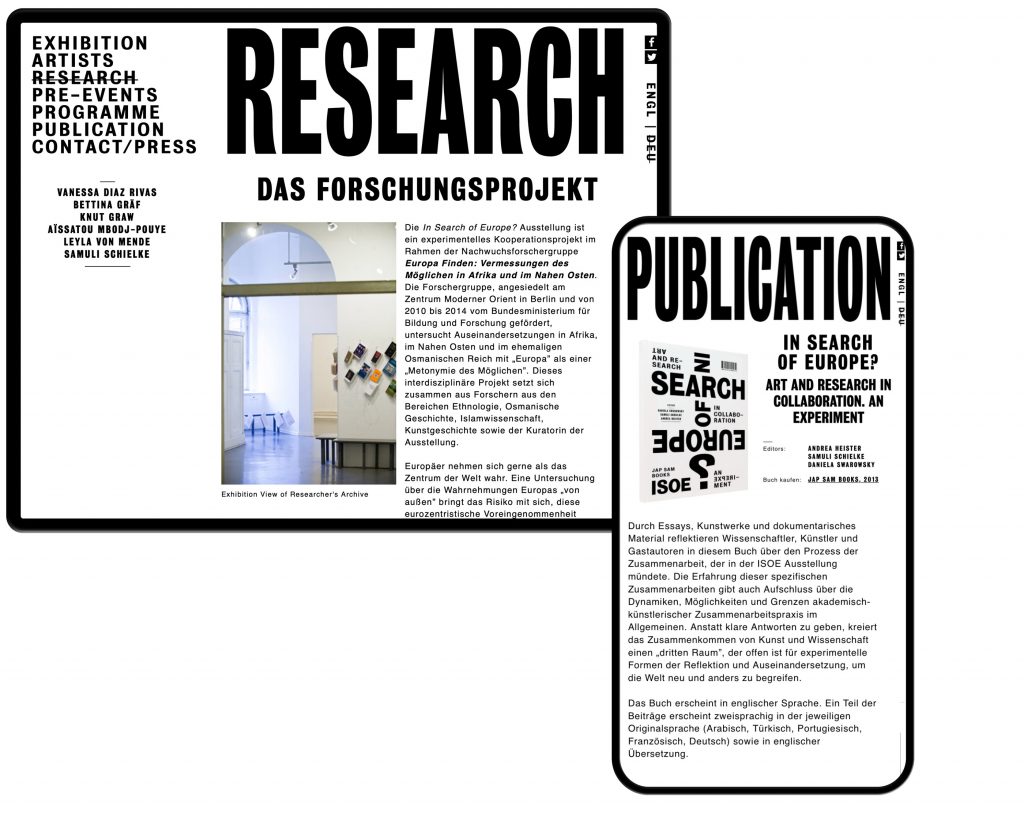

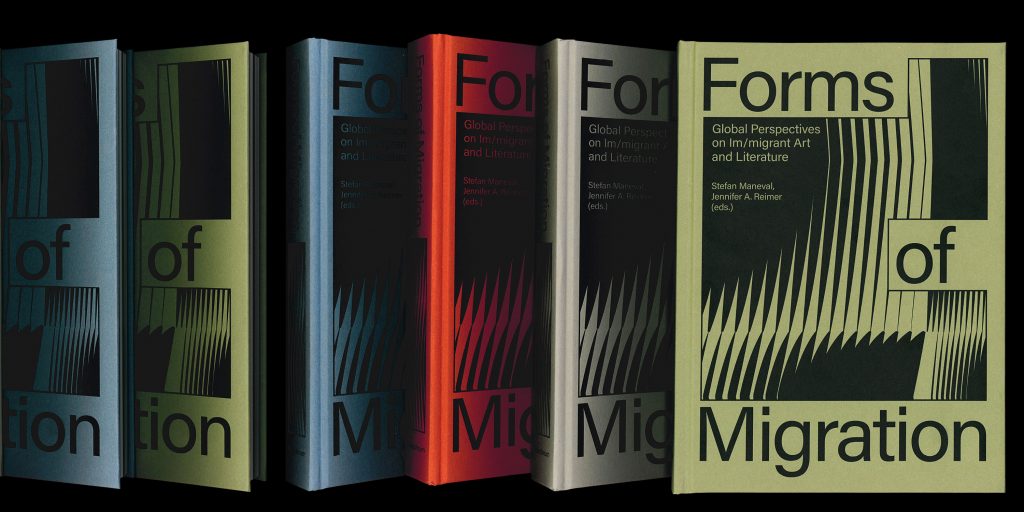
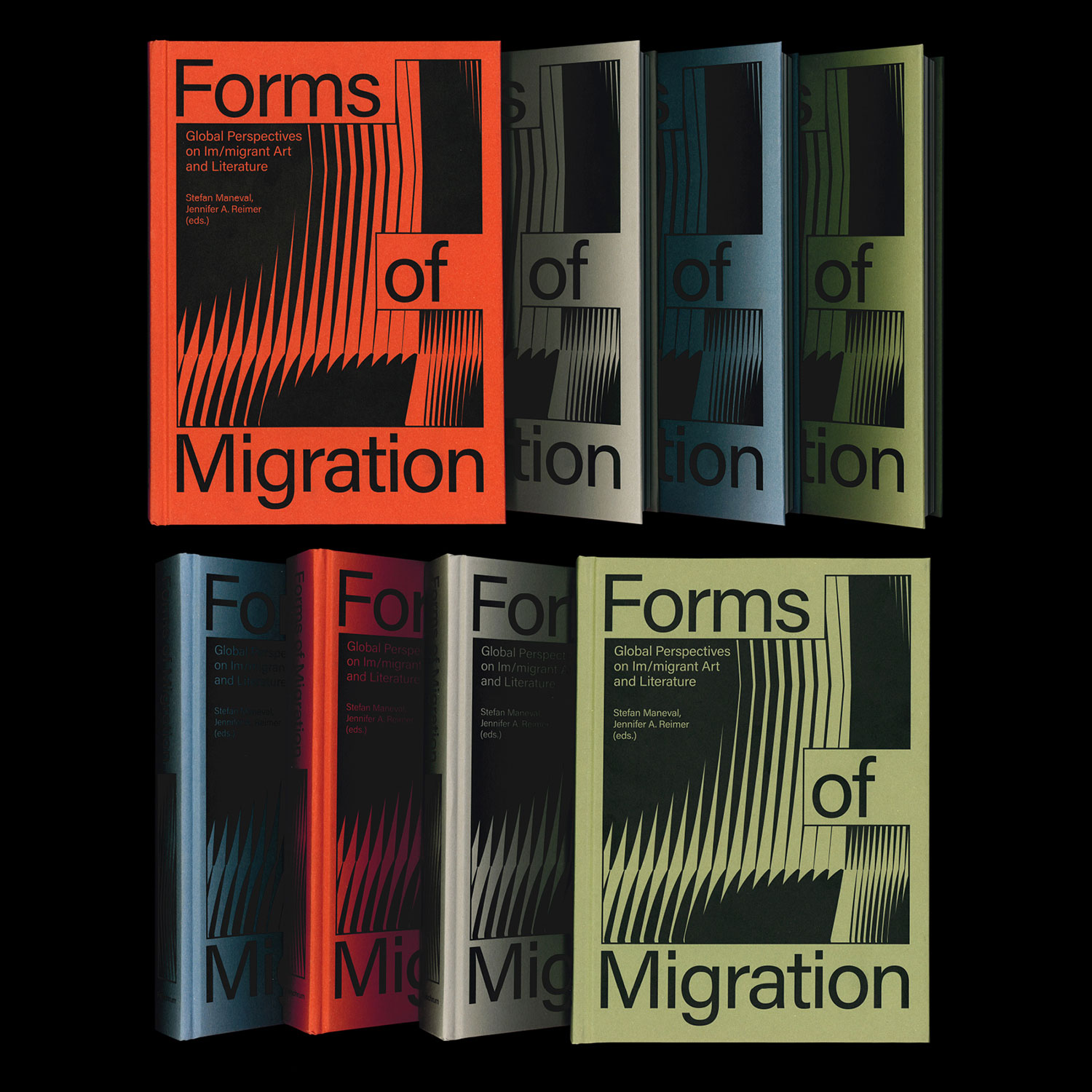
Forms of Migration
Forms of Migration explores the potential of literary and aesthetic forms of expression to shape our understanding of transnational migration processes.
Client
Falschrum Verlag
Year
2022
Services
Book Design
Print Media
Background
Addressing im/migrant forms of expression around the globe, this rich, illustrated collection includes poetry, creative nonfiction, interviews, analyses of diasporic fashion, cinema, and mixed media installations, as well as performances turned into writing, photographic work, collages, and drawings. Forms of Migration shows us how to apprehend migration differently, through innovative storytelling, offering opportunities to confront the complexity of migration processes.
To illustrate the transformation of a migration, our visual concept is based on a variable font that changes shape on each page of the book. The headlines change throughout the book from Light/Condensed to Bold/Extended, the page numbers in the opposite direction. Text passages abruptly change from white to black, thus interrupting the flow of text and the reader’s viewing habits, who constantly have to adapt to the visual environment. The cover illustration visualizes the topic of form, movement, direction and changes in an abstract form.
Edited by
Stefan Maneval and Jennifer A. Reimer
Published by
Falschrum Verlag
Contributors
Ömer Alkin, Salma Ahmad Caller, Reine Chahine, Chaza Charafeddine, Karolina Golimowska, Piotr Gwiazda, Ikram Hili, Ronaldo Lopes de Oliveira, Stefan Maneval, Lisa Marchi, Stephanie Misa, James Nguyen, Enaya Othman, Matthias Pasdzierny, Anne Quéma, Jennifer A. Reimer, Susanne Rieser, Silvia Schultermandl, Wendy M. K. Shaw, Don E. Walicek, Hiba Yassin, Fatmeh Youssef, Ranin Youssef, Karen Tei Yamashita
Dimensions
16×22cm
Print length
275 pages
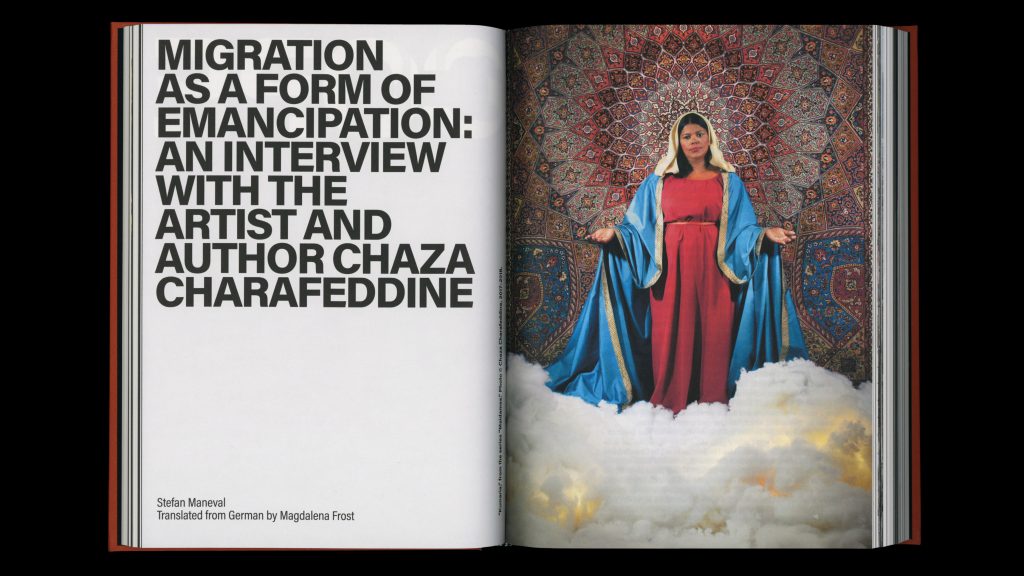

Variable Font: Acumin Pro by Robert Slimbach
Migration often comes with changes of the habits … so does our visual concept for the book
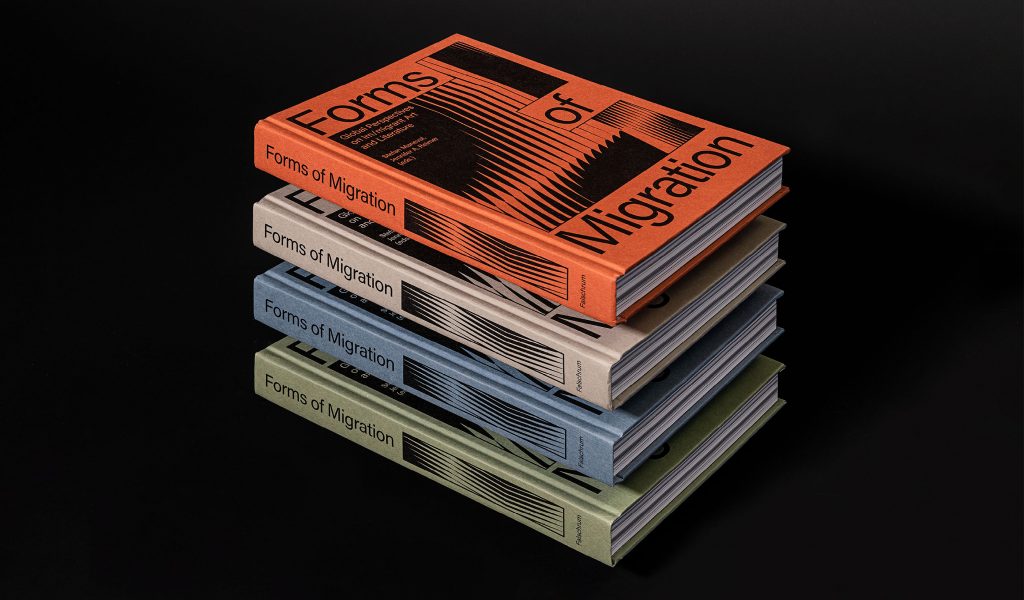

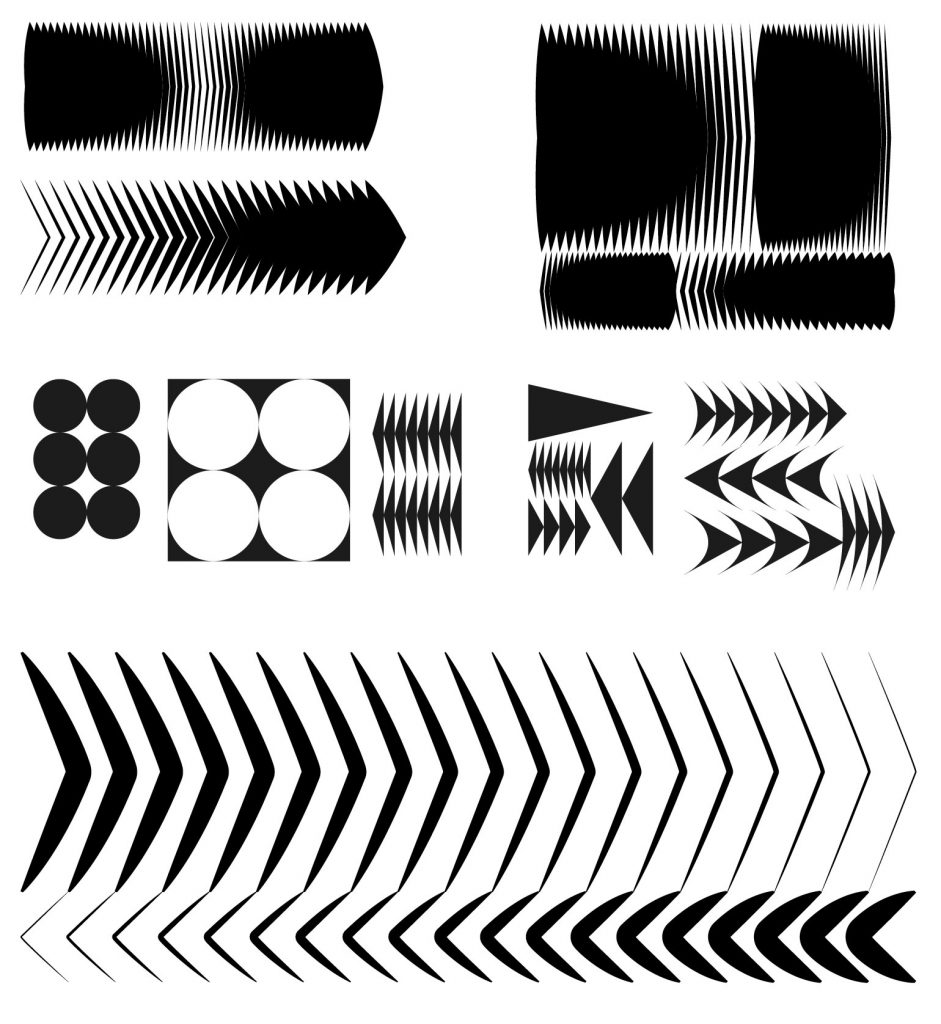

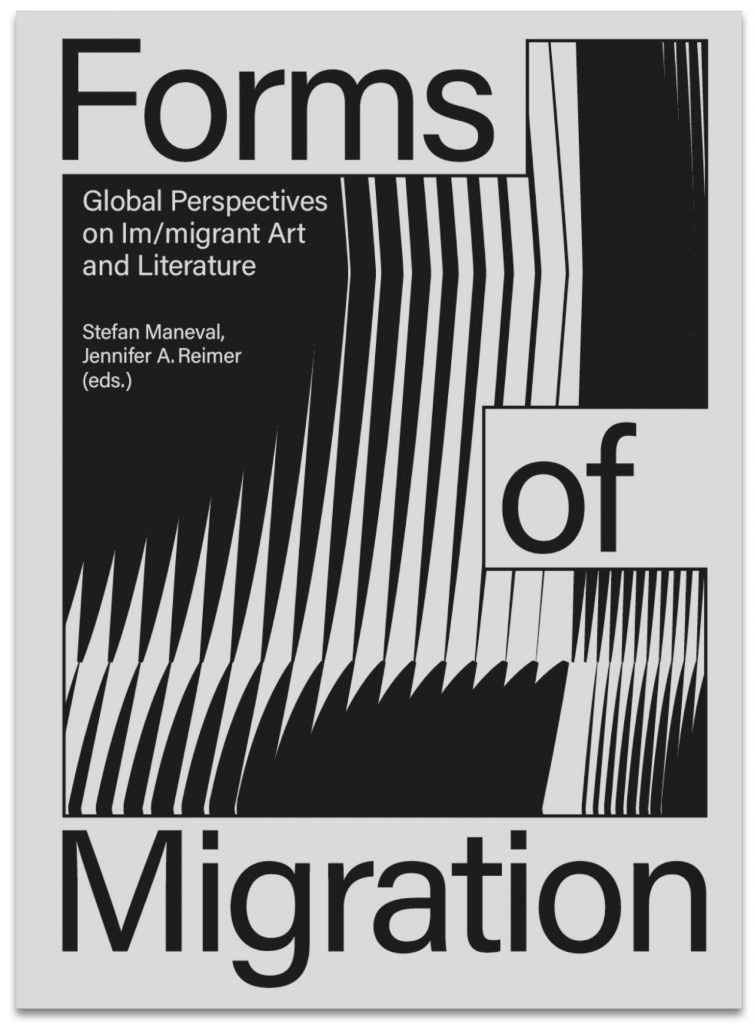

The cover illustration visualizes the topic of form, movement, direction and changes in an abstract way.
The book cover is produced in 4 colors.
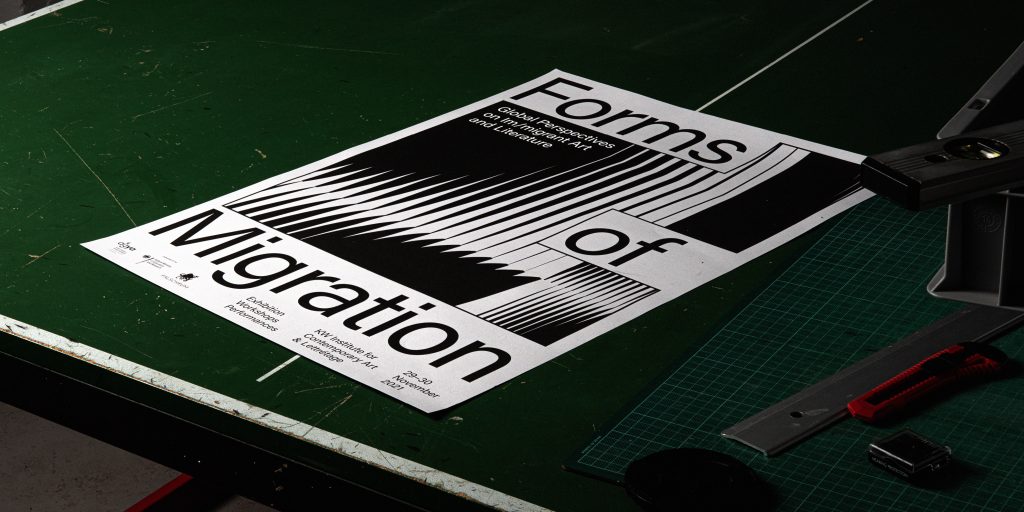

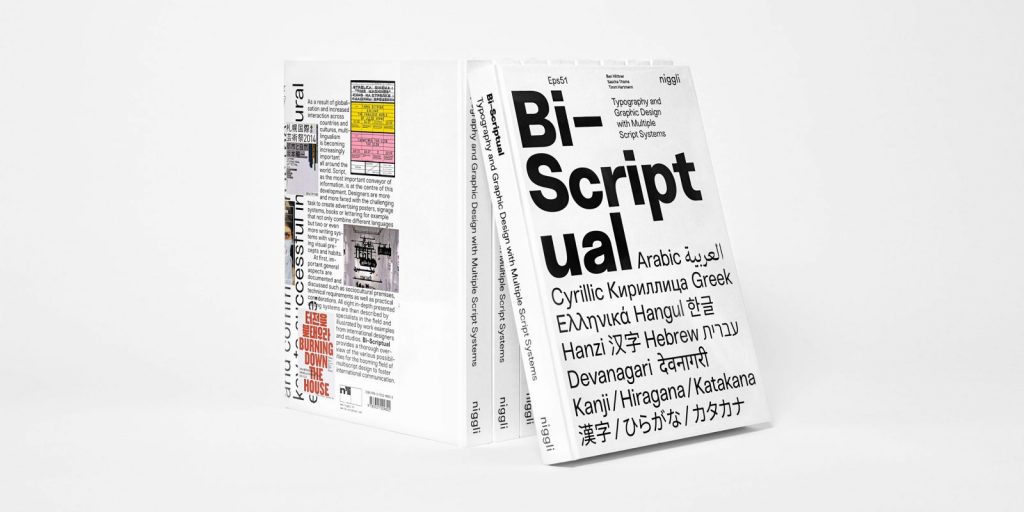
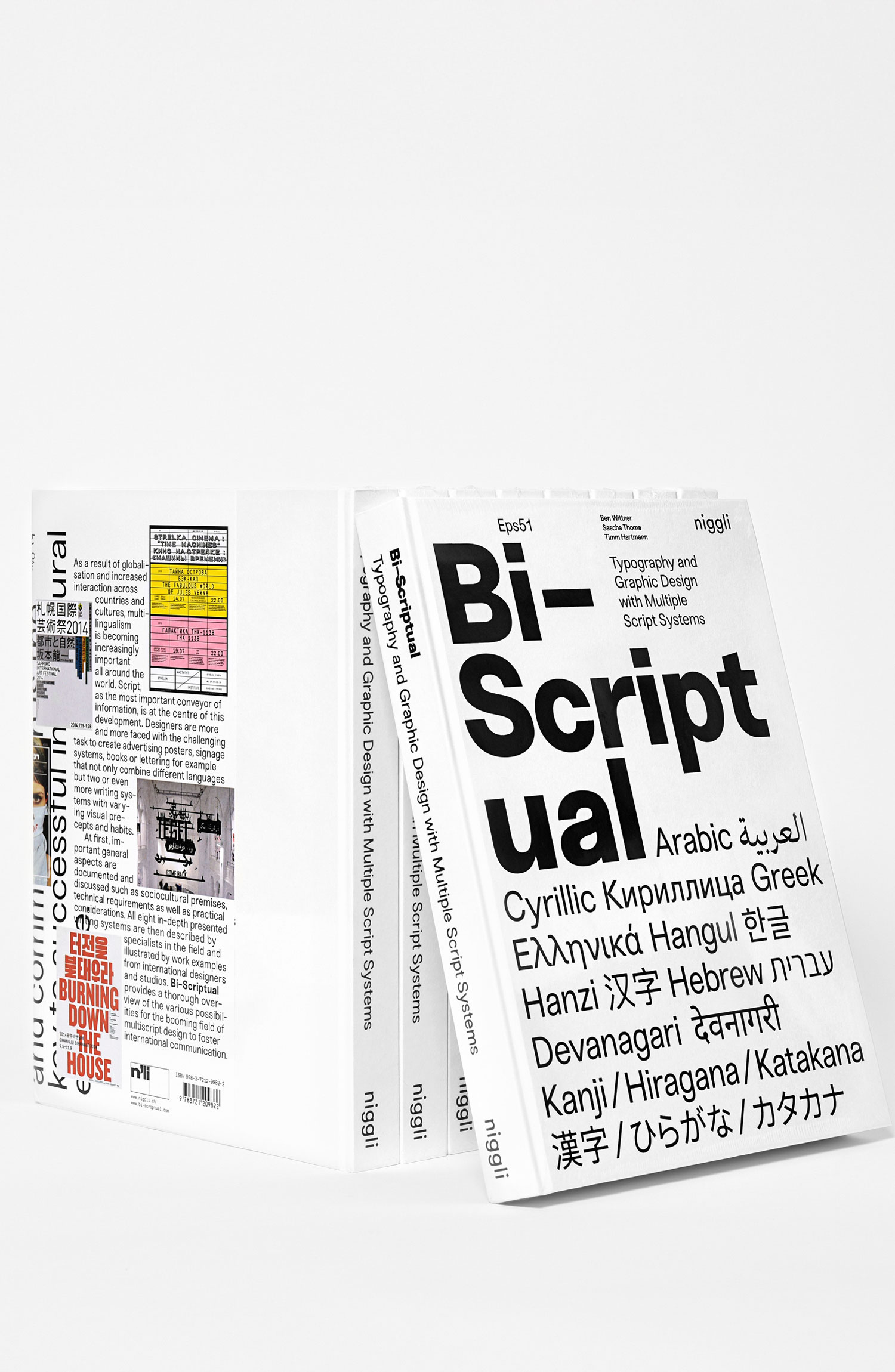
Bi-Scriptual
Script is language. Language is communication, and communication is the key to successful intercultural exchange.
Client
Self initiated
Year
2017
Services
Book
Concept
Redaction
Editing
Organisation
Background
As a result of globalisation and increased interaction across countries and cultures, multilingualism is becoming increasingly important all around the world. Script, as the most important conveyor of information, is at the centre of this development. Designers are more and more faced with the challenging task to create advertising posters, signage systems, books or lettering for example that not only combine different languages but two or even more writing systems with varying visual precepts and habits.
The book Bi-Scriptual documents and discusses sociocultural premises, technical requirements and practical considerations concerning multiscript design and typography. All eight in-depth presented writing systems are then described by specialists in the field and illustrated by work examples from international designers and studios. Bi-Scriptual provides a thorough overview of the various possibilities for the booming field of multiscript design to foster international communication.
Published by
Niggli
Website
www.bi-scriptual.com
Buy here
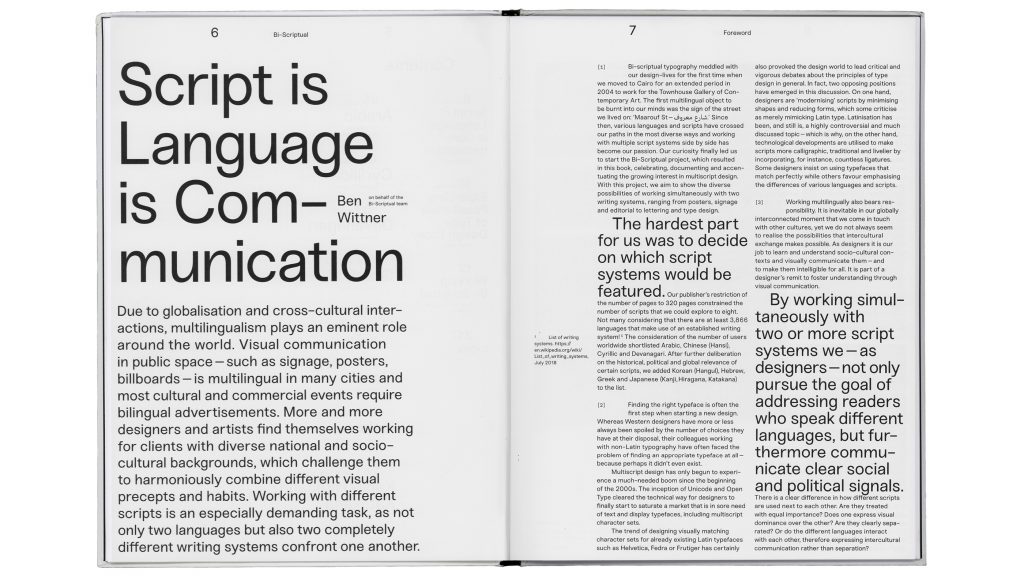

By working simultaneously with two or more script systems designers communicate clear social and political signals.
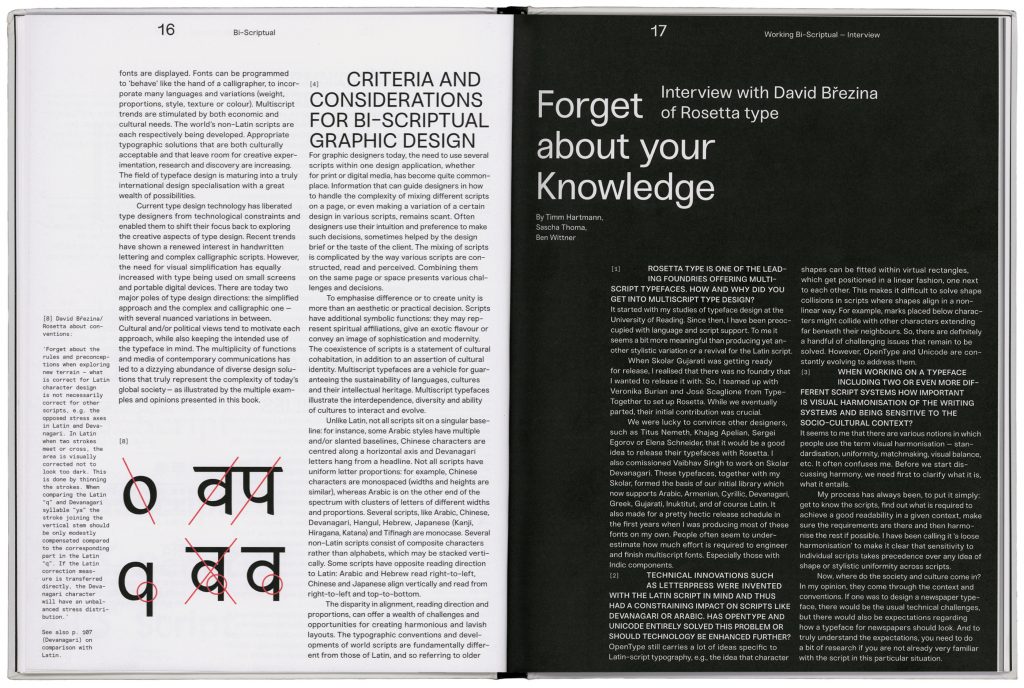

As designers it is our job to learn and understand socio-cultural contexts and visually communicate them – and to make them intelligible for all.
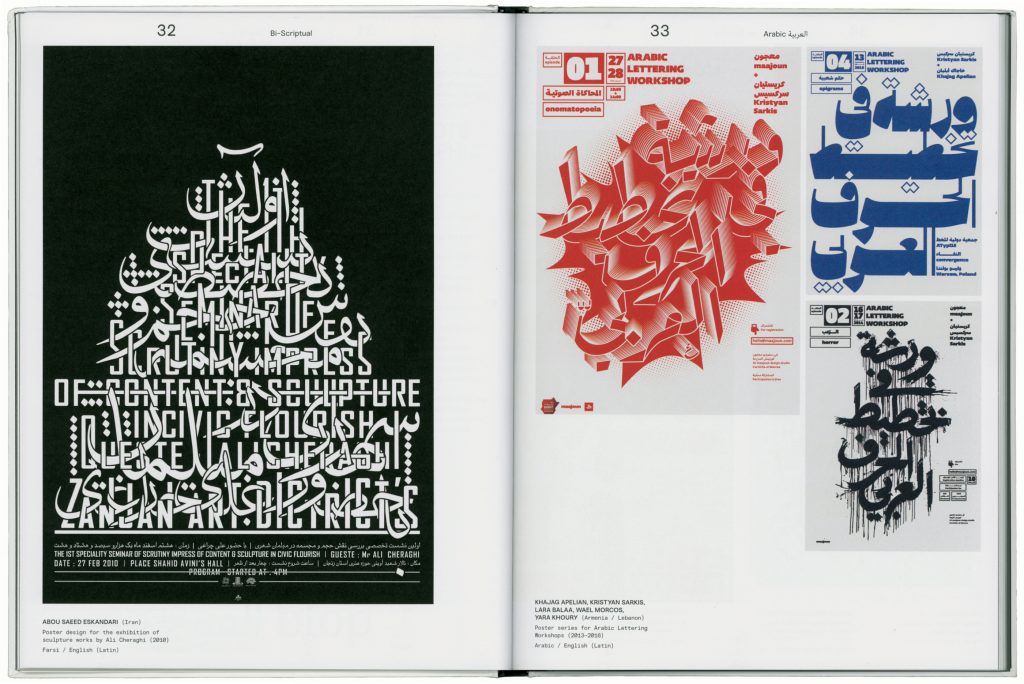

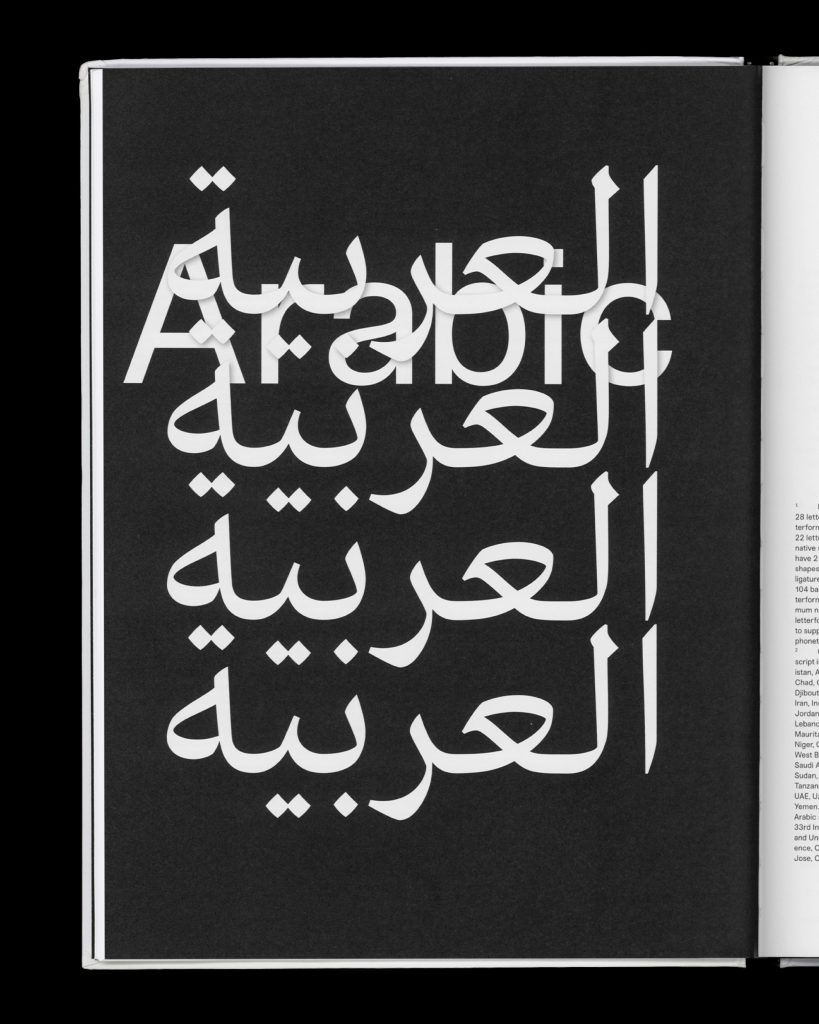

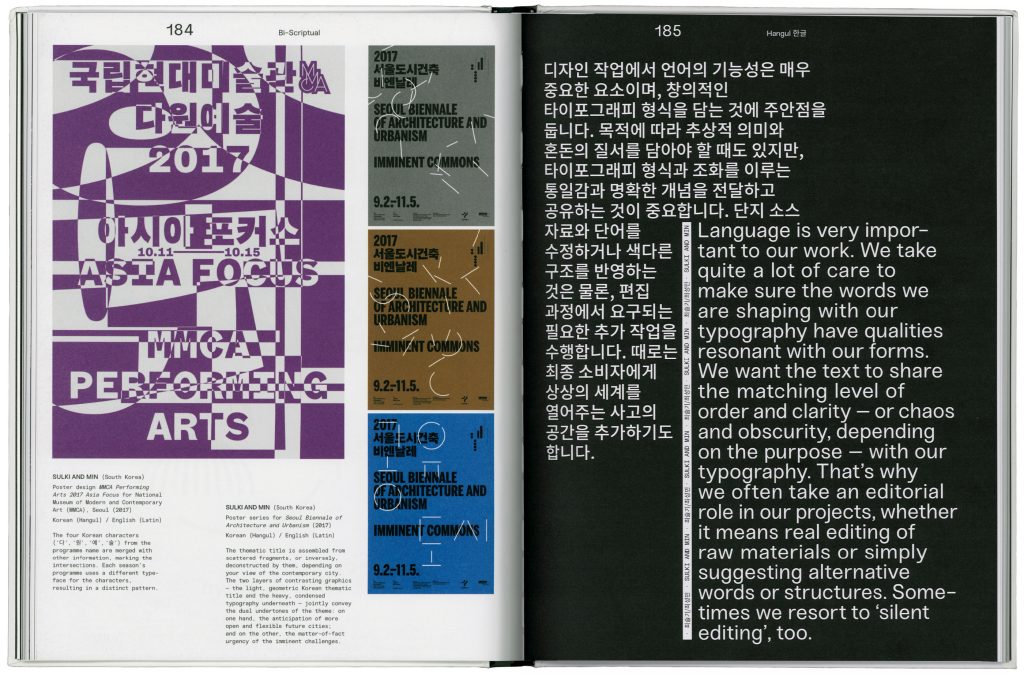

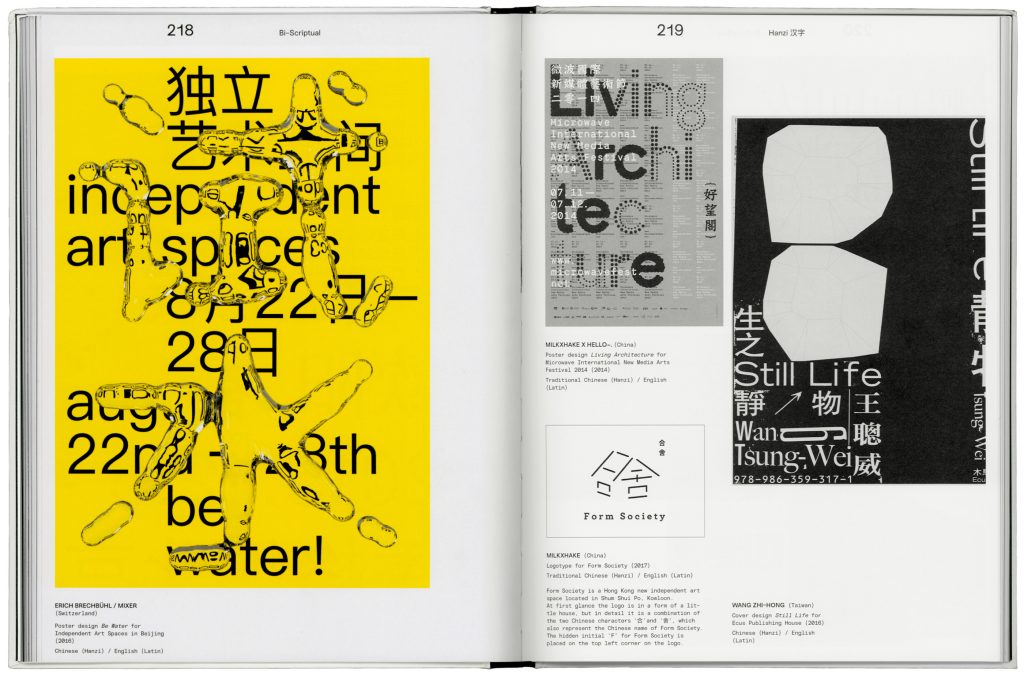

Scripts / Languages:
Arabic, Cyrillic, Greek, Hangul (Korean), Hanzi (Chinese), Hebrew, Devanagari (Hindi), Kanji / Hiragana / Katakana (Japanese)
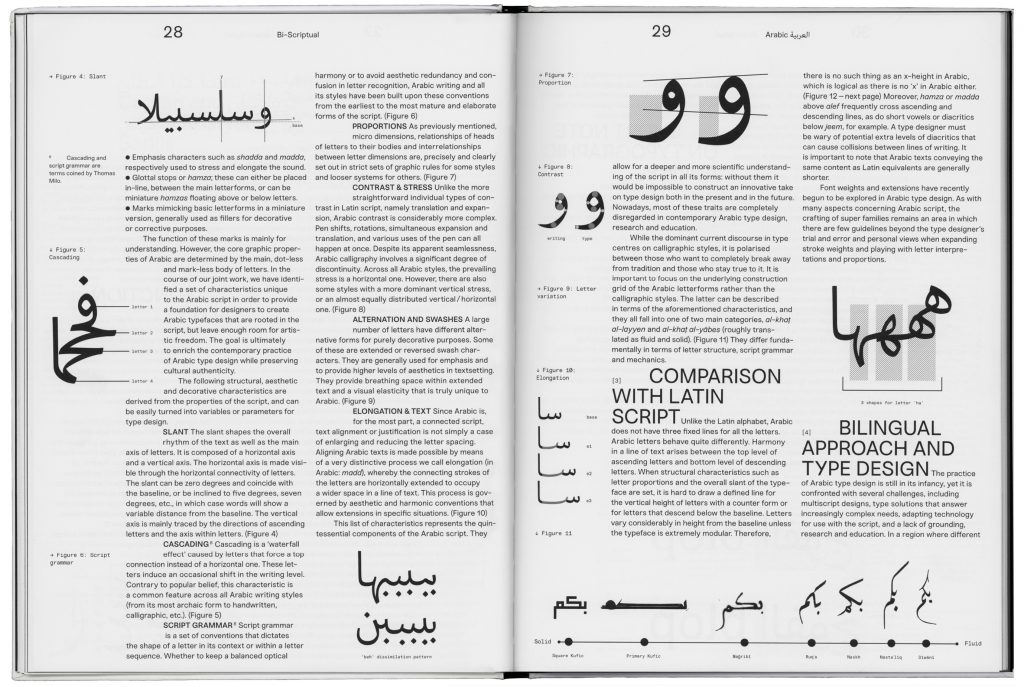

Expert texts by Adi Stern, Eugene Yukechev, Gerry Leonidas, Huda Smitshuijzen AbiFarès, Jeongmin Kwon, Keith Tam, Kristyan Sarkis, Lara Captan, Liron Lavi Turkenich, Mariko Takagi, Peter Biľak, Vaibhav Singh Devanagari
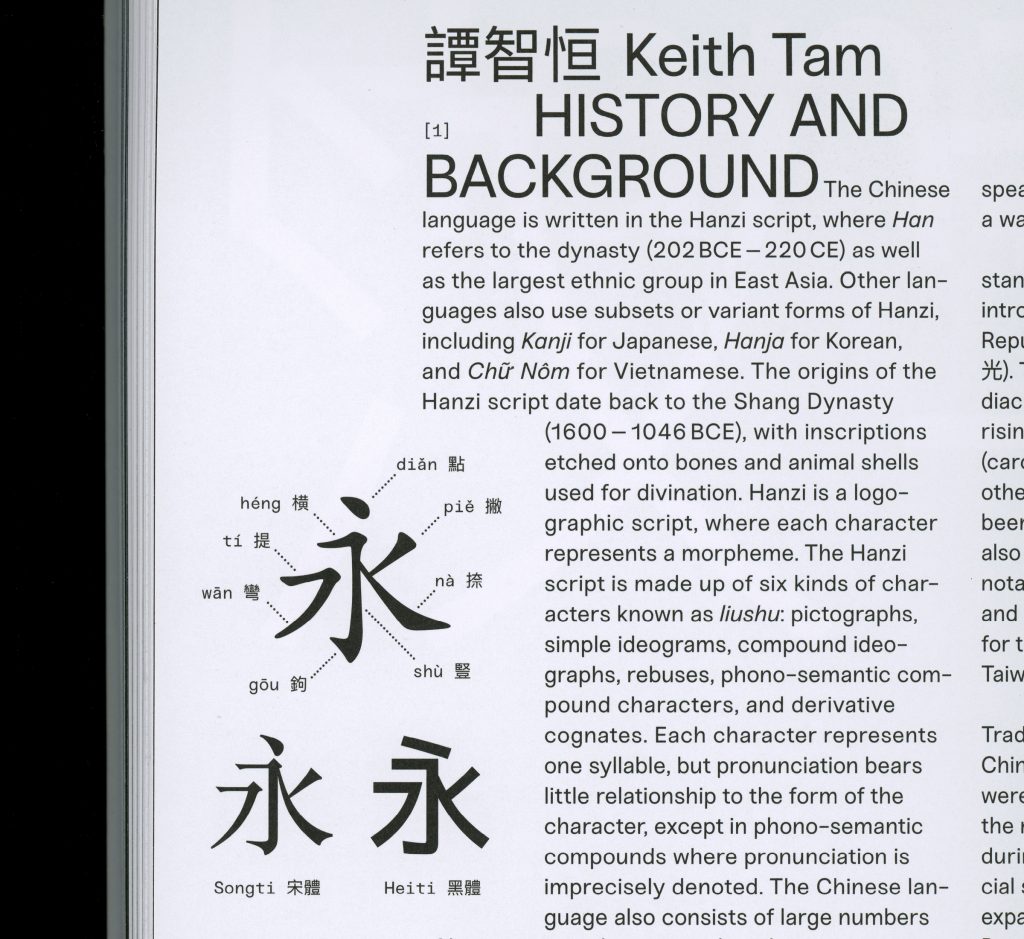

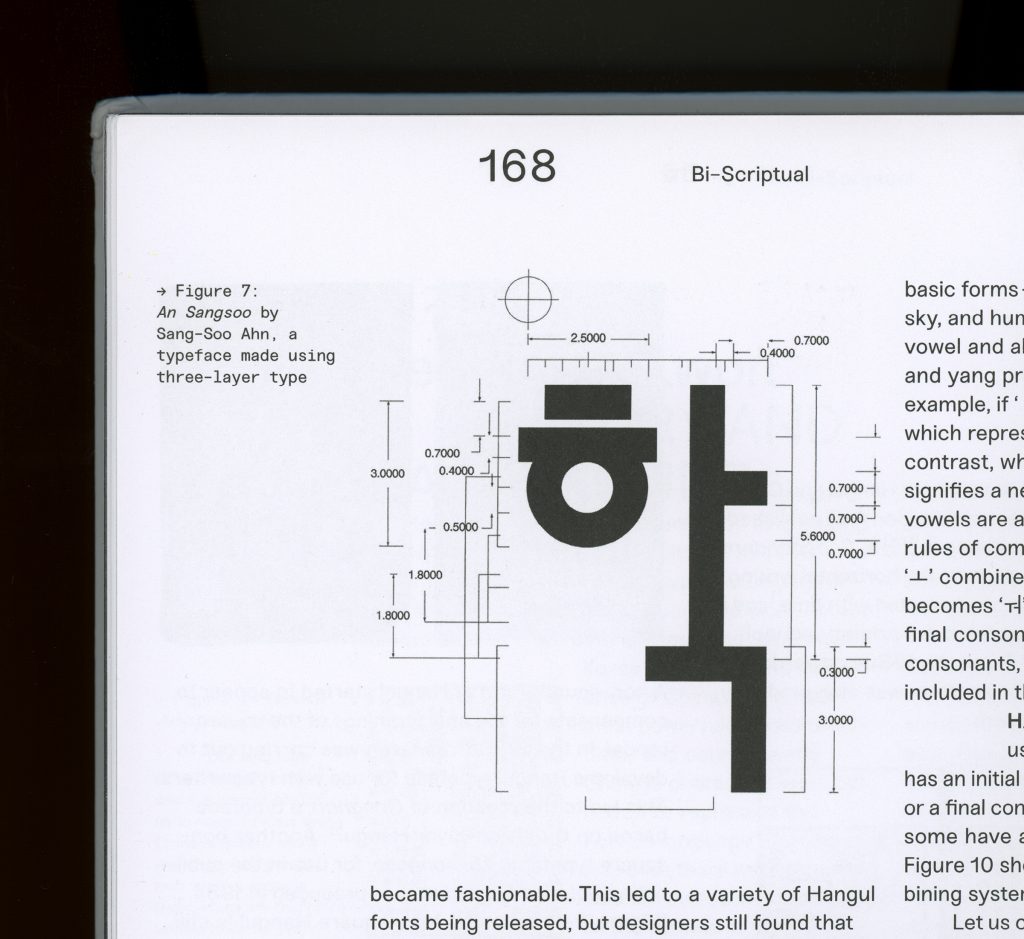

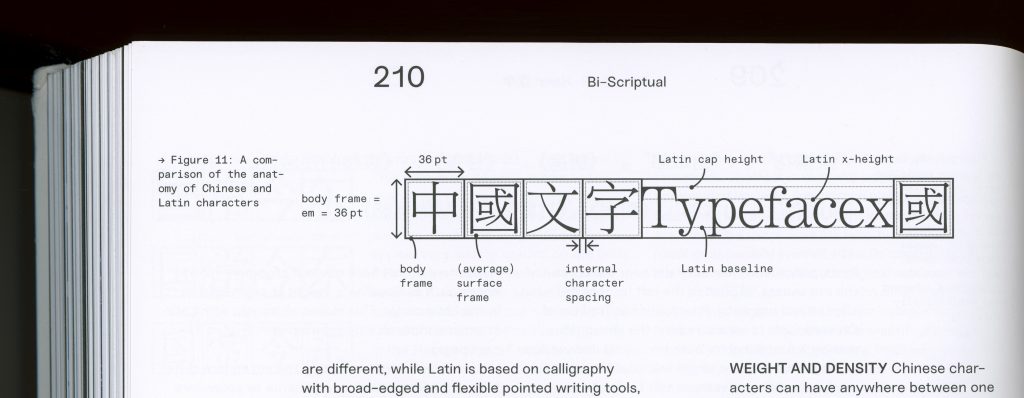

All featured writing systems are described with extensive texts by international experts covering topics from the historical background, functionality and design advice to showing bilingual approaches.
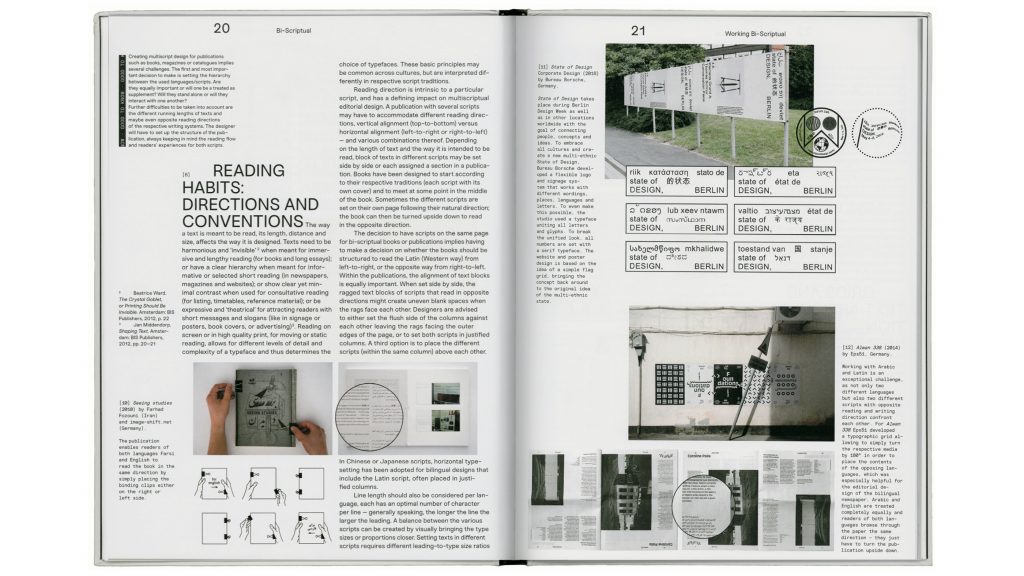

The book includes typographical works from over 120 designers including Guang Yu, Homa Delvaray, Ishan Khosla, Maria Doreuli, Nadine Chahine, Oded Ezer, Peter Bankov, Rikako Nagashima, Sulki And Min, Typical Organization, Wang Zhi-Hong
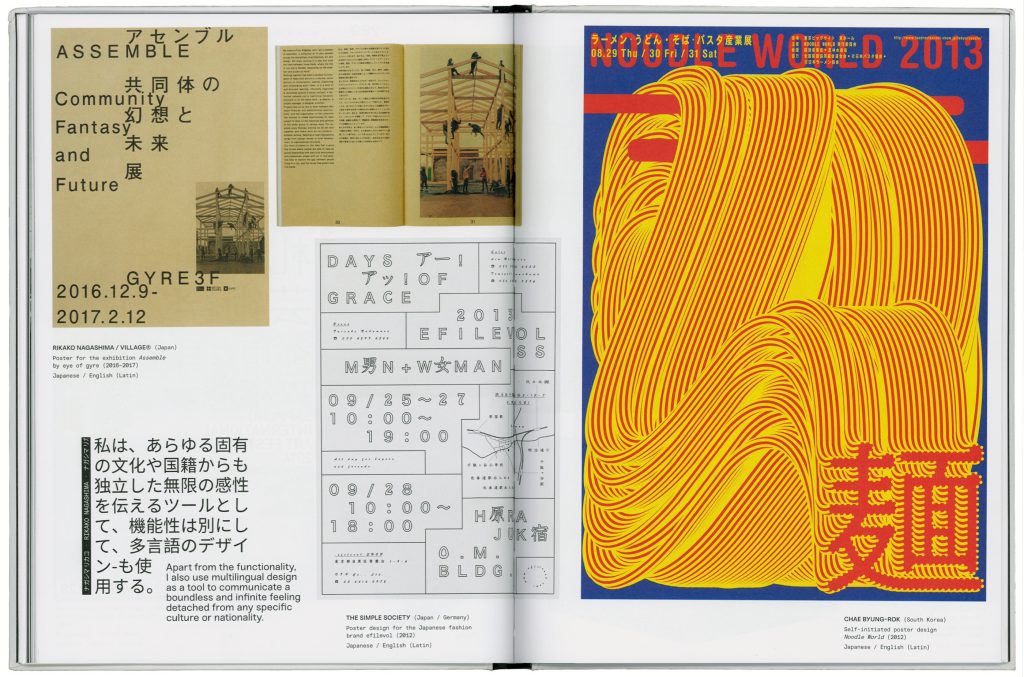

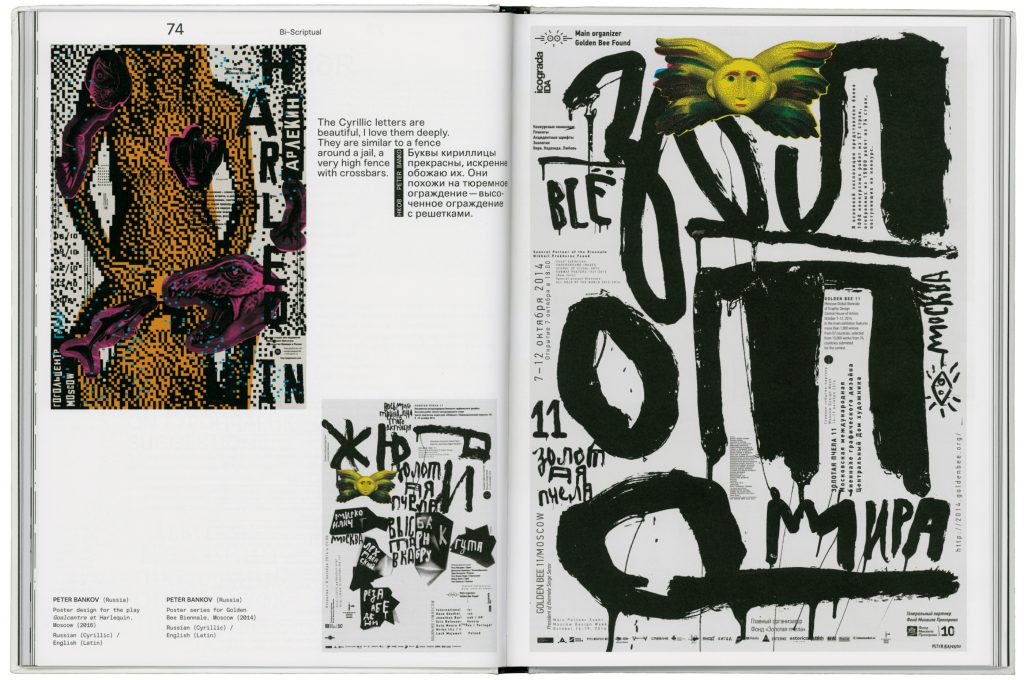

All chapters are extensively illustrated with texts, interviews, artists’ statements and work samples by designers and studios from around the globe.
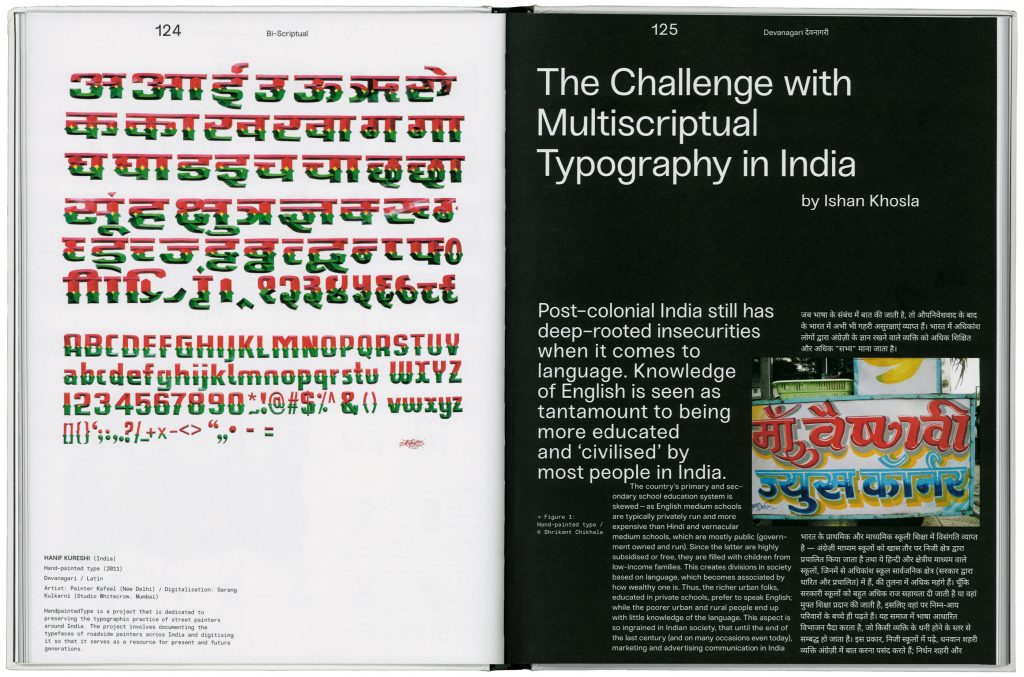

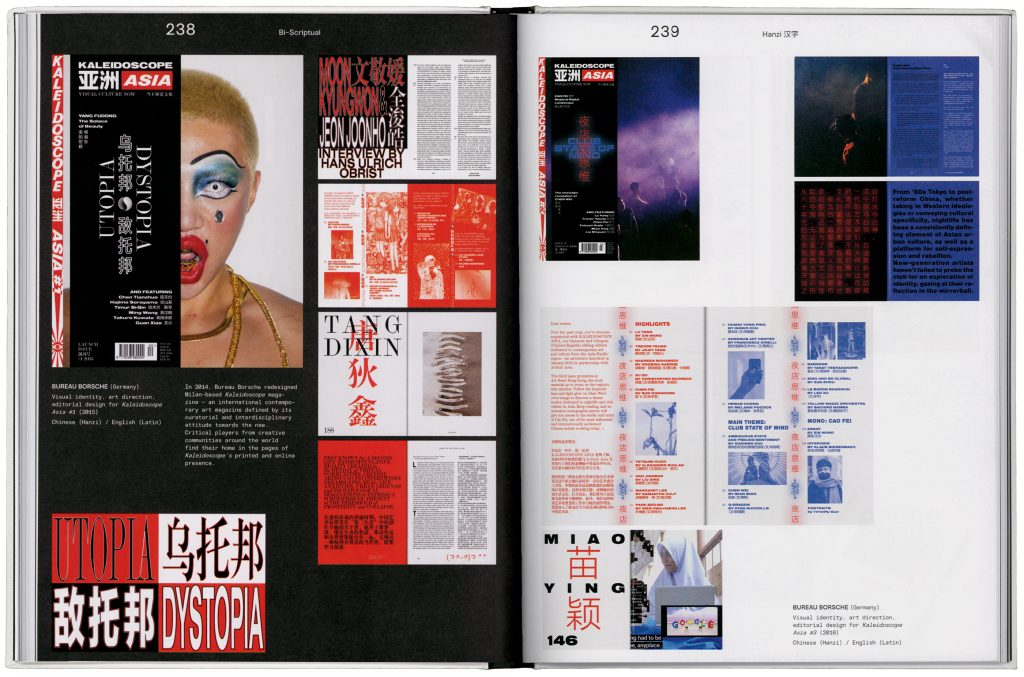

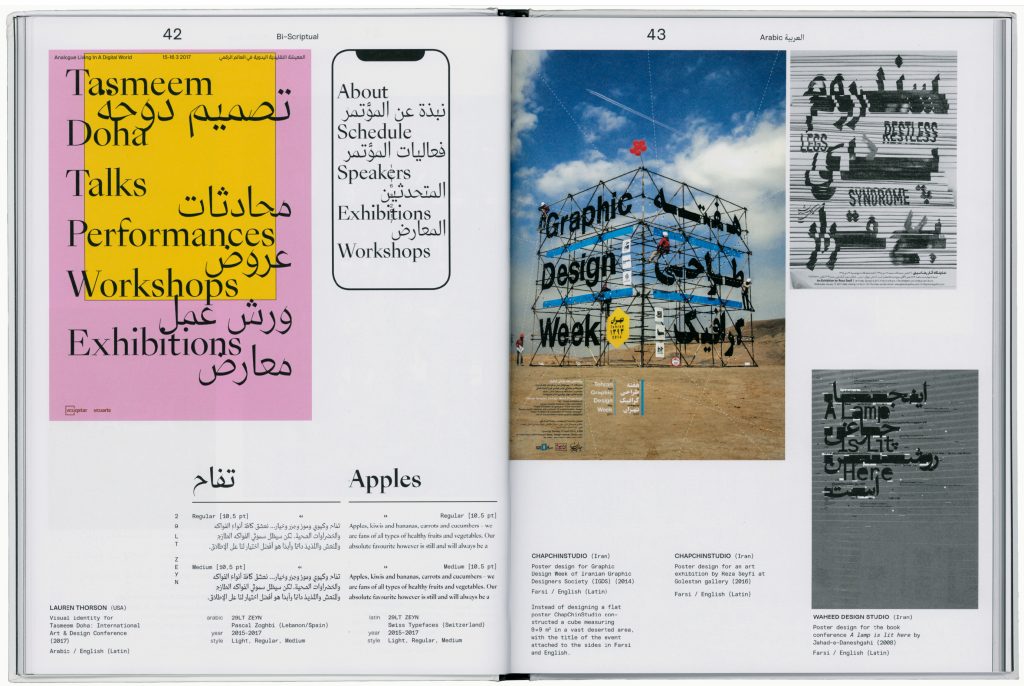

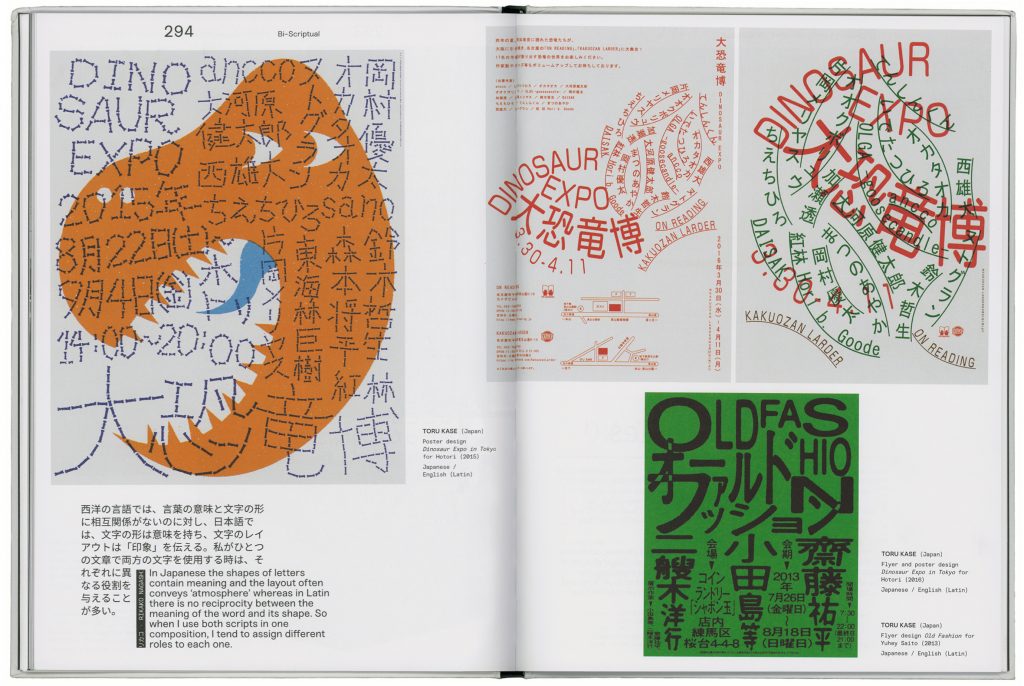

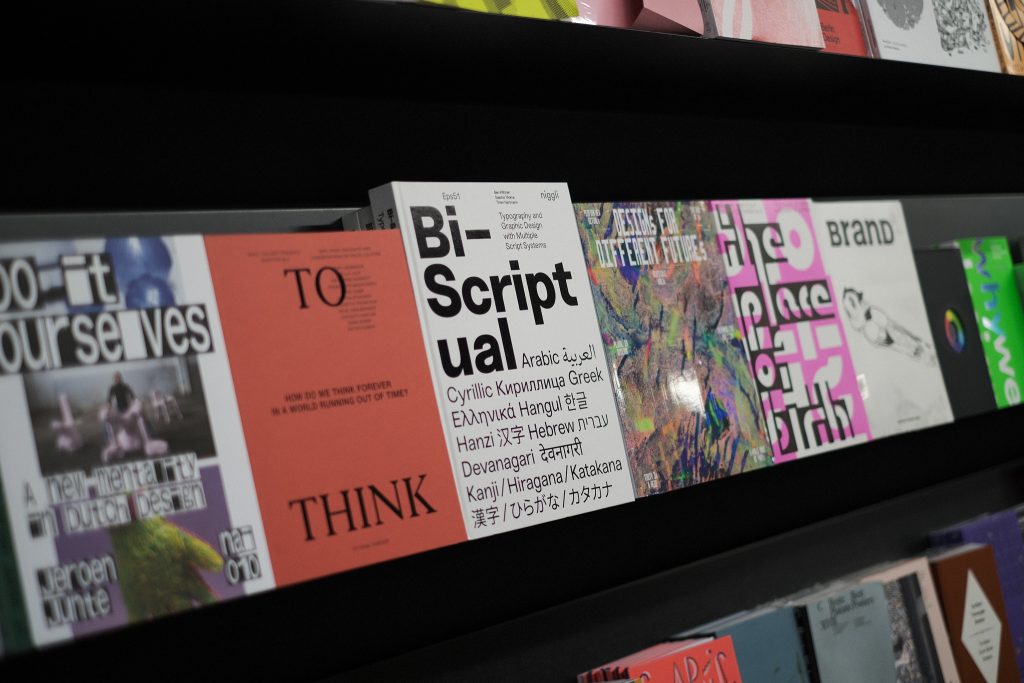

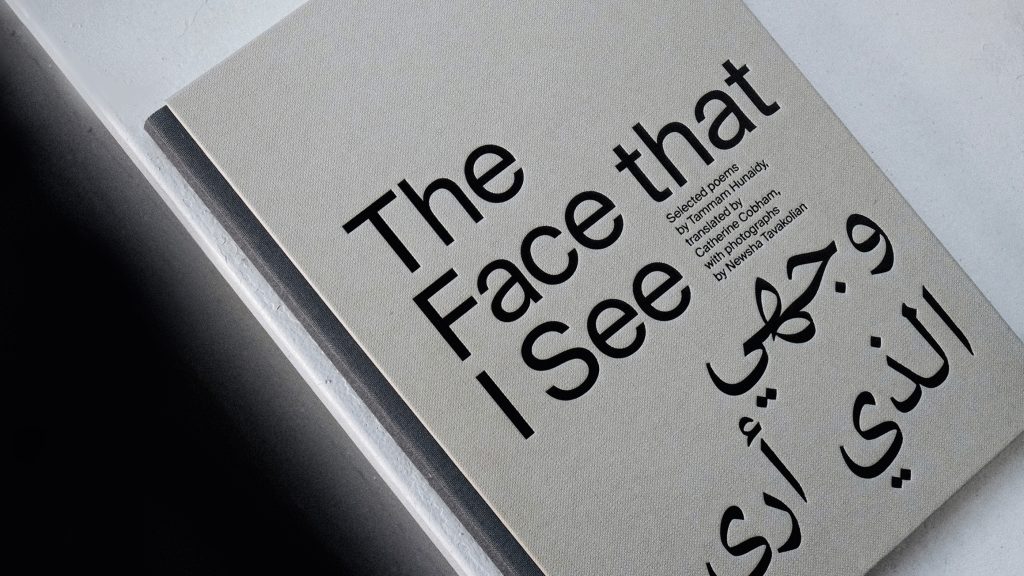
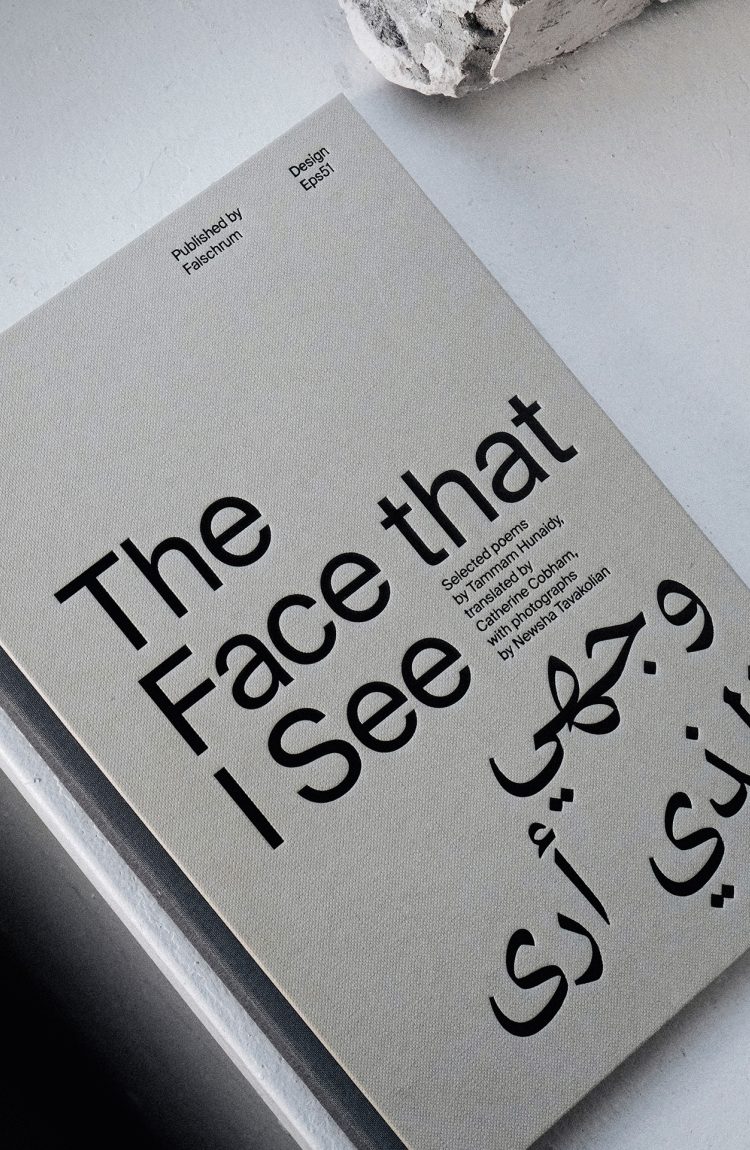
The Face that I See,
The Face that You See
A bilingual publication in which poems are illustrated with photographs taken in various places in Asia, Africa and Europe.
Client
Falschrum Books
Year
2022
Services
Editorial Design
Background
This publication is part of a collaborative series that brings together authors, artists, and designers from the Middle East and Europe. The aim of these co-productions is to foster dialogue and friendship across national and linguistic boundaries, through processes of translation and engagement with another’s creative work.
„The Face that I See, The Face that You See“ is a collaboration between poet Tammam Hunaidy and photographer Newsha Tavakolian. While the immediate connection between Tavakolian’s photos and Hunaidy’s poems may not be evident, both capture the essence of places affected by recent conflicts. The publication features 33 landscape photographs taken across Asia, Africa, and Europe, establishing connections with Hunaidy’s verse.
Published by
Falschrum Books
Editors
Tammam Hunaidy, Catherine Cobham, Stefan Maneval
Pages
82
Dimensions
18,5 × 26 cm
ISBN
978-3-910237-00-1
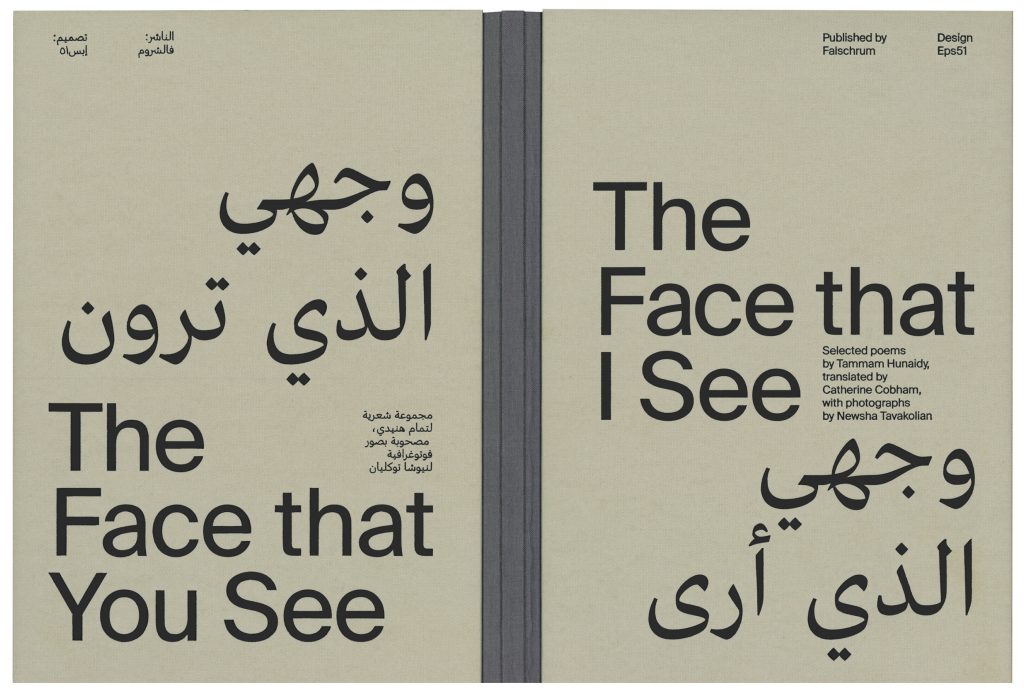

The thread stitching allows the book to be opened in both directions.
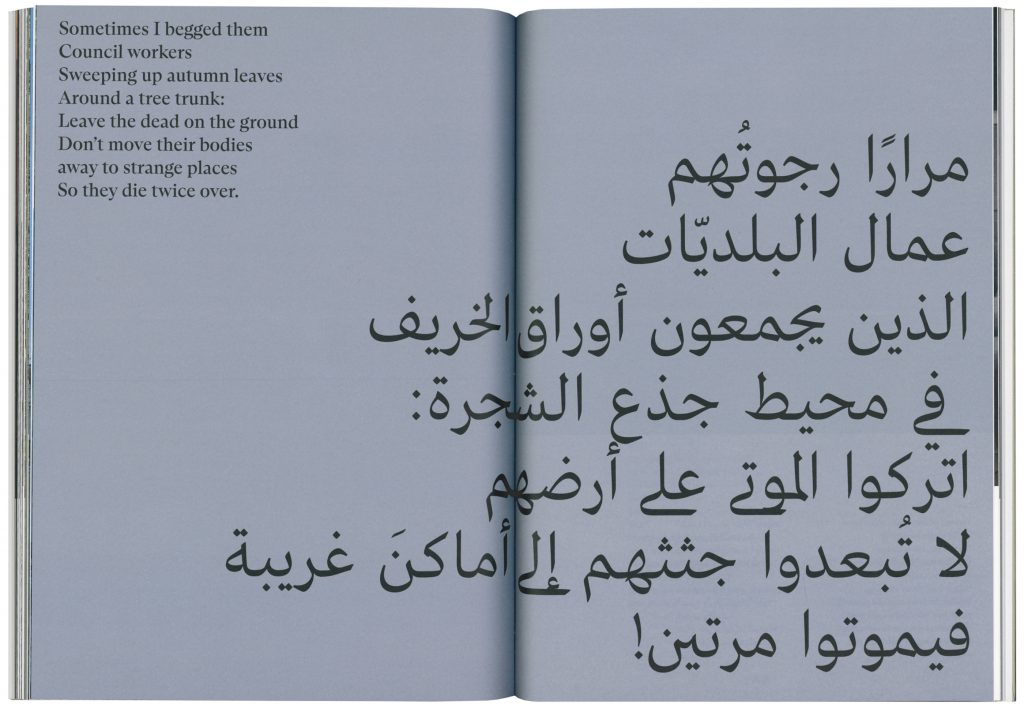

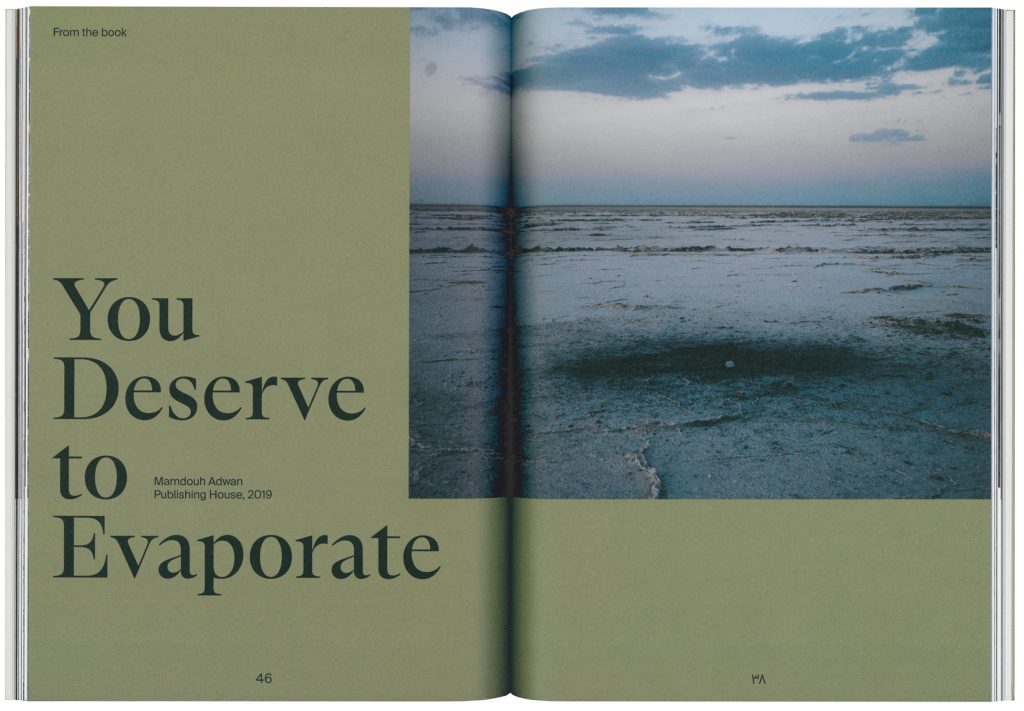

The poems are arranged in a way that ensures Arabic reading from right to left and English reading from left to right.
